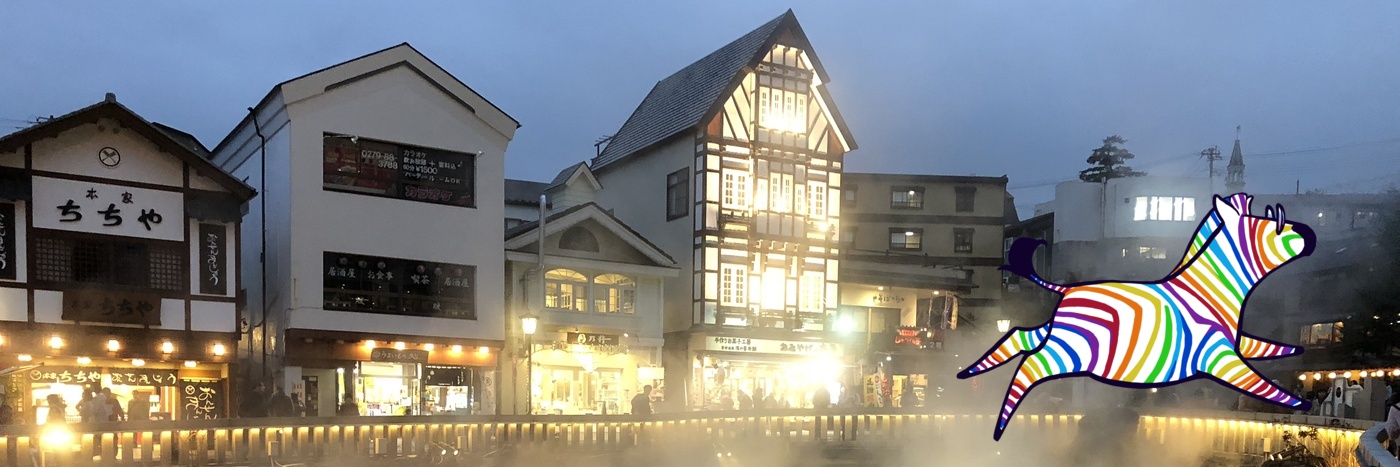
Welcome to A Zebra Abroad! My name is Sarah and I’m a “zebra” — in other words, I’m living with some rare illnesses like POTS and EDS. That doesn’t make travel easy, but the best things in life rarely are. This blog is a celebration of wanderlust, beauty, and a life lived with disabilities.
Latest Entries
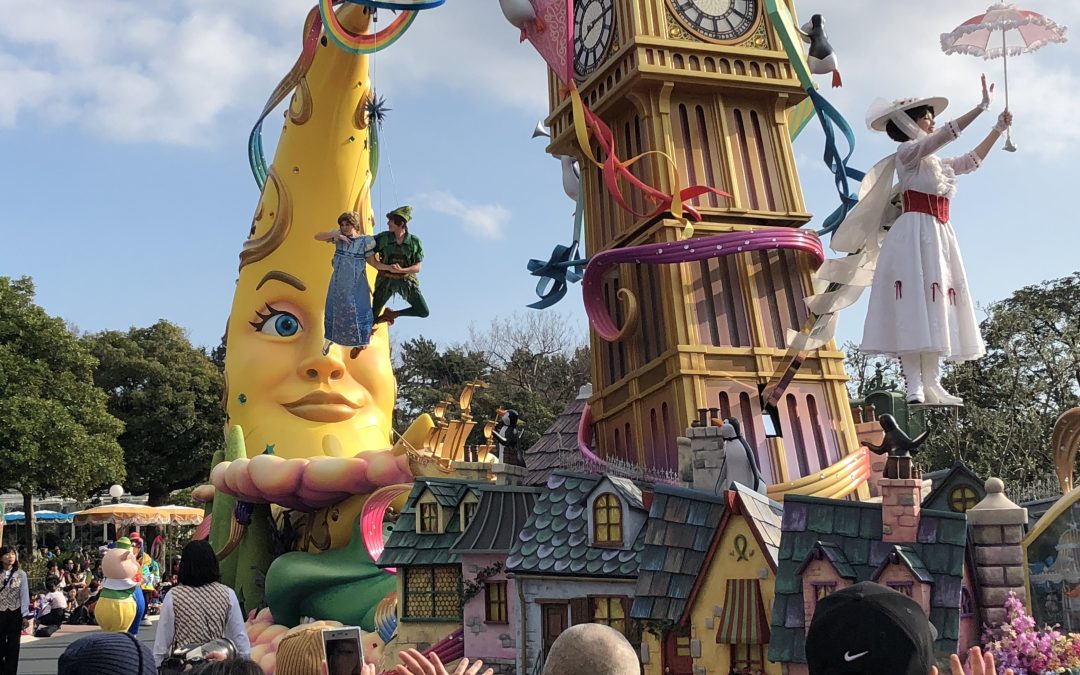
Tokyo Disneyland (part 1)
Before I really get into this post, I have to tell you a few things. First of all, I am a huge Disney fan. I have been to Disney parks all over the world and I really enjoy comparing and contrasting them. (I grew up in central Florida, so I bet you can guess which park I’m most familiar with.) That said, I’ll try to keep things readable for people who are a lot less familiar with the parks, too.
The other thing is that I have had exceptionally bad luck with Tokyo Disneyland. I have been there three times now and each time was an unmitigated disaster. The first time? Typhoon. The second time? Got a phone call that our family dog died right before we went into the parks and there was bad weather. Those trips were both four years ago, while I was studying in Kyoto. I went one more time during this last trip, hoping to break the streak. Beautiful weather, my dogs were safe. But I did get food poisoning, which had me laid up in my hotel room for most of the trip.
Cool cool cool.
So as you might’ve guessed, I don’t exactly have one nice little narrative for a typical Tokyo Disneyland visit. That said, I had enough positive experiences amongst those three visits to cobble together one big blog post. That means that all of the information is from a four-year period, and so are all the photos. (And boy was I into portrait-style photos in 2014…) So please bear with me. This has been a wild ride.
Anyway, let’s start out with the basics. As most of you already know, Disney has several parks throughout the world — California (Disneyland), Florida (Walt Disney World), Paris (Disneyland Paris), Shanghai (Shanghai Disneyland), Hong Kong (Hong Kong Disneyland), and Tokyo (Tokyo Disneyland).
What you may not know is that Disney doesn’t actually own all these parks. WDW, Disneyland, and Disneyland Paris are all 100% Disney (as of 2017, when DLP was bought by Disney). Shanghai DL and Hong Kong DL are almost 50/50, but with a controlling share owned by the Chinese government and the Hong Kong government respectively. And Tokyo Disneyland? Well, that’s 100% independently owned by the Oriental Land Company.
Because Tokyo Disneyland only really licenses Disney properties, it’s pretty distinct from the other Disney parks. It’s split up into two separate parks, Tokyo Disneyland and Tokyo DisneySea. TDL is roughly analogous to California’s Disneyland or Florida’s Magic Kingdom and has a lot of similarities with most worldwide Disney parks. Tokyo DisneySea, though, is where things really go off the rails.
Don’t get me wrong — it’s not that Tokyo DisneySea has nothing to do with Disney. The central conceit is that it’s split up into various bodies of water from around the world, and two of these (Mermaid Lagoon and the Arabian Coast) are fairly focused on Disney properties. You can also find Toy Story characters in American Waterfront’s Toyville Trolley Park. Plus, you know, you’ll still be able to see Disney characters wandering around the park.
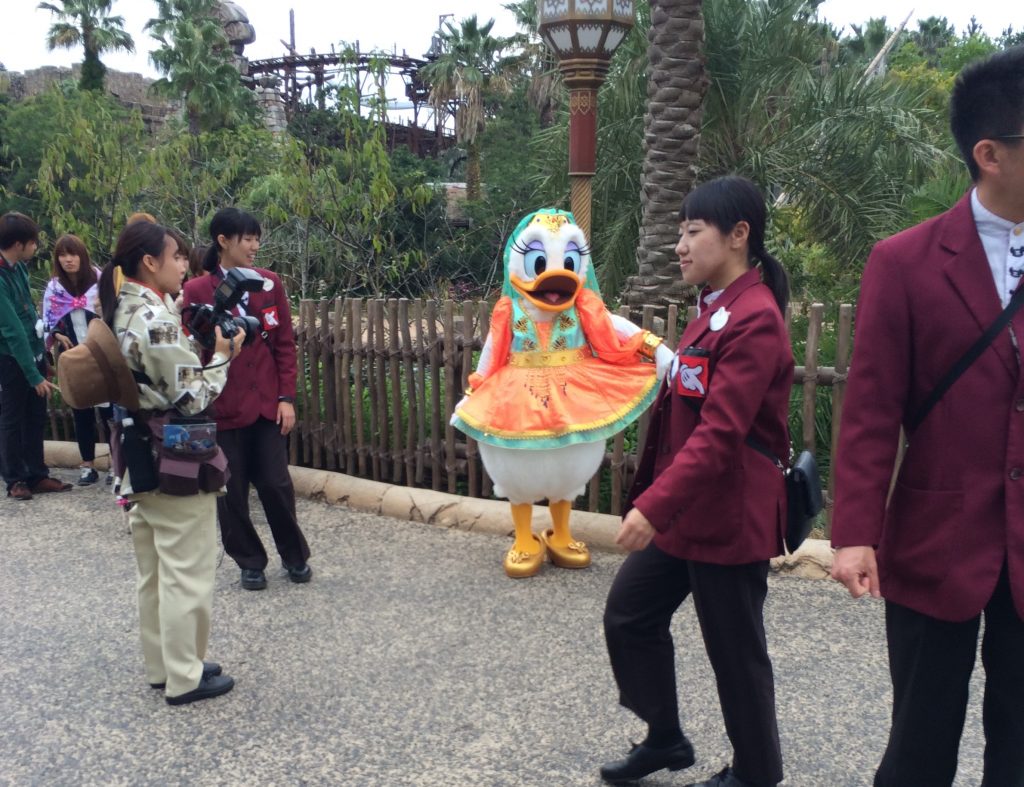
But unlike TDL, the percentage of TDS that is specifically Disney-related is a lot smaller, and non-Disney properties are mixed in there somewhat unexpectedly. It is more focused on interesting international and fantasy lands to explore than it is on traditional Disney characters, and sort of feels like a mixture of WDW’s Epcot and Animal Kingdom in that respect.
If you’ve never been to a Disney park before and you only have one day, I definitely recommend Tokyo Disneyland. It’s the quintessential Disney park and you’ll get to do all the quintessential Disney rides. That’s the park where you’re going to find Dumbo, It’s A Small World, and Cinderella Castle. It’s the easiest place to take a picture with Mickey, eat a waffle with Mickey’s face on it, and buy those very necessary Mickey Mouse ears. In other words, all those unmissable things you need to do during your first trip.
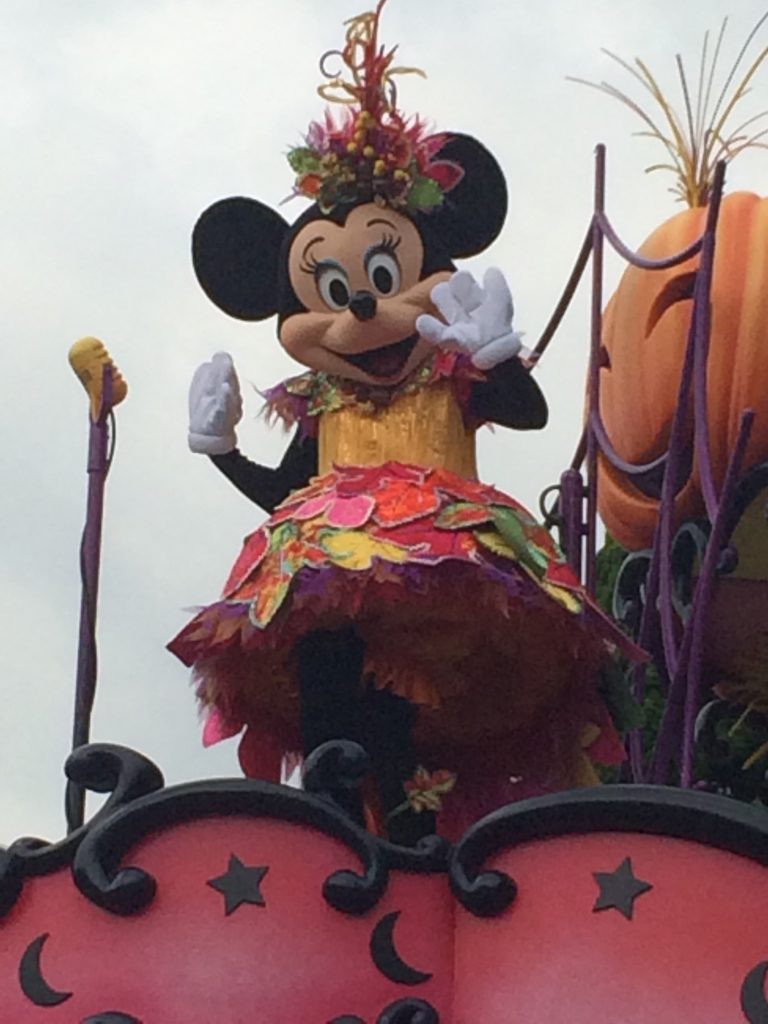
If you’re a seasoned Disney fan, though, you’ve gotta see Tokyo DisneySea. You’ll have a couple familiar rides, like Toy Story Mania and the Magic Carpets, but that’ll be shuffled up with Sindbad’s Storybook Voyage, Journey to the Center of the Earth, and Aquatopia. Even the usual Disney mainstays, like Tower of Terror, exist in totally new incarnations that have very little in common with their American namesakes. It’s refreshing in its uniqueness — plus it’s just a truly beautiful park.
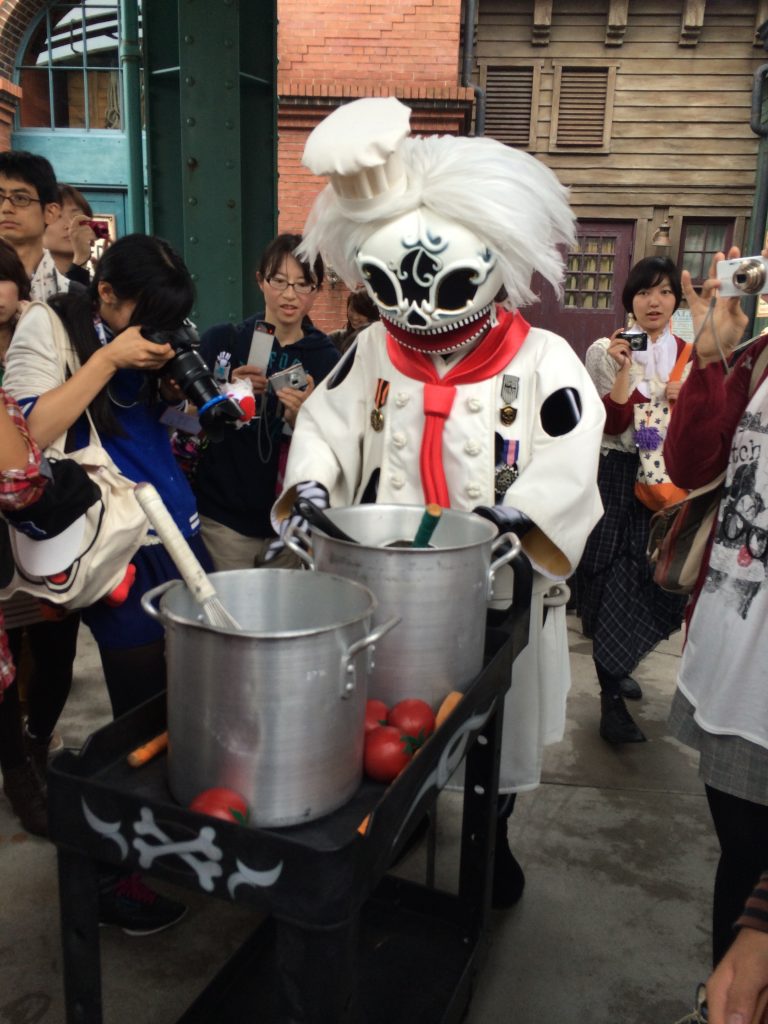
There’s so much to say about each park that I’ve decided to split this topic into three different parks. This one for the basic info, the next for Tokyo Disneyland, and the last for Tokyo DisneySea. It’s just too much to comfortably read otherwise. This post will mostly just be an introduction along with some tips for avoiding problems at the parks, and then the actual trip reports will be up later this week.
With that said, I suppose the best place to start is at the beginning. Despite the name, Tokyo Disneyland is not actually in Tokyo, but in the nearby seaside town of Maihama. 99% of the people who go, though, will be going by way of Tokyo. The two most common ways to get to the parks are either taking the Maihama train from Tokyo Station or taking the Disneyland bus from Shinjuku Station. Having done both, I think I prefer taking the train in the morning (as it’s faster) and taking the bus back at night. You might need to leave a little early as the bus has a much more limited schedule, but there’s something comforting about just collapsing into a comfortable seat and not having to think about anything until you get back to the city.
If you take the train, please be warned that it can be a bit of an ordeal. The trains, especially in the morning, tend to be packed full of people and there’s a strong likelihood that you won’t be getting a seat for what’s a comparatively long train ride. The train itself isn’t easy to get to, either. Tokyo Station is a maze, enormous and twisty, and I’d leave at least twenty minutes to get from the entrance to the platform, if not longer. It’s exceptionally easy to get lost, especially if you are disabled (like me) or have quite a bit of luggage, both of which make it difficult to do stairs. There are elevators that will take you all the way to the platform, but they can be really confusing to track down. Definitely don’t be shy about asking for help — even someone who knows where they’re going will have at least a 10-15 minute journey through the station. You start to wonder if you’re going to poke your head out the door and find Osaka after you’ve wandered those tunnels long enough.
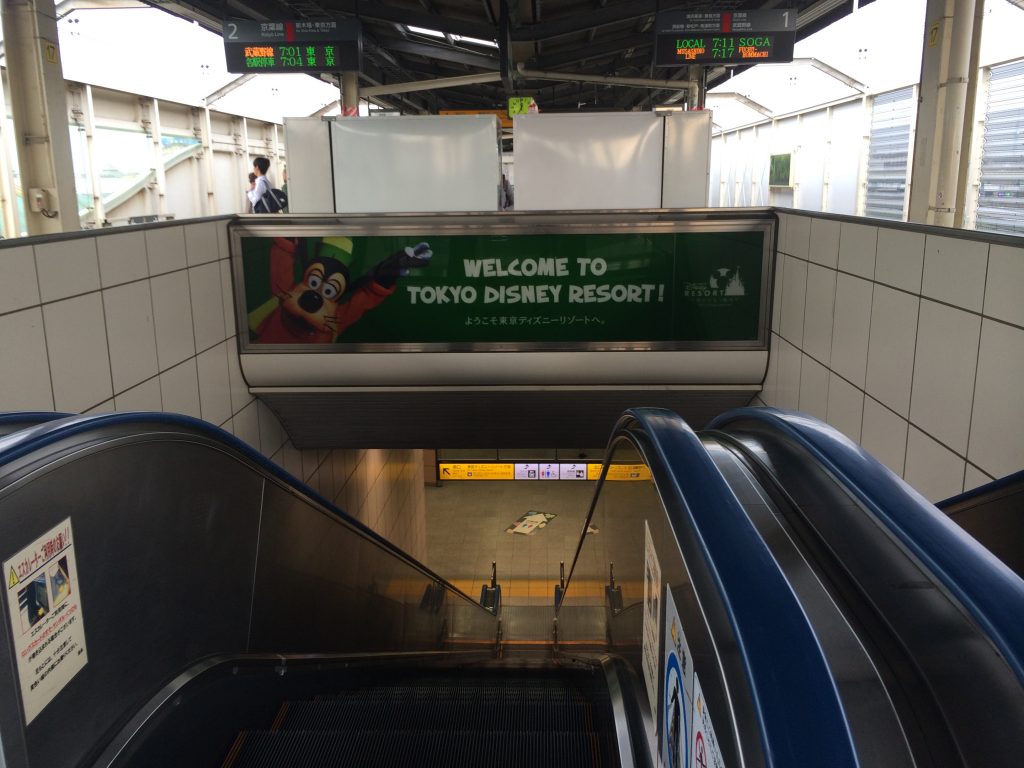
Once you finally get to the parks, though, you still won’t be in the parks. There is a front area you’ll need to pass through before you get to the parks proper. There is a large Disney store, a non-Disney shopping area called Ikspiari, the Disney Ambassador Hotel, and a second train station. The train station is where you really need to head. It works just like a normal Japanese train, not a typical Disney monorail, and you will need tickets to ride it. You can use Pasmo/Suica, or you can buy cute Disney train tickets at the train station. (These Disney train tickets are included with your stay if you stay at the Tokyo Disneyland Hotel or Hotel Miracosta.)
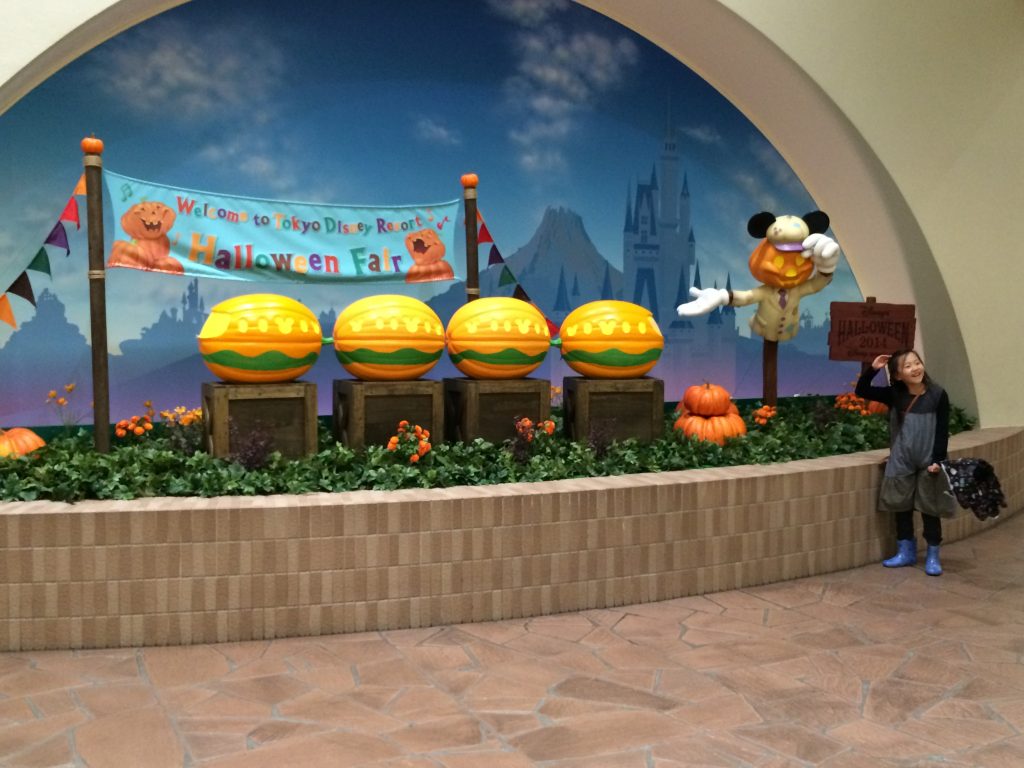
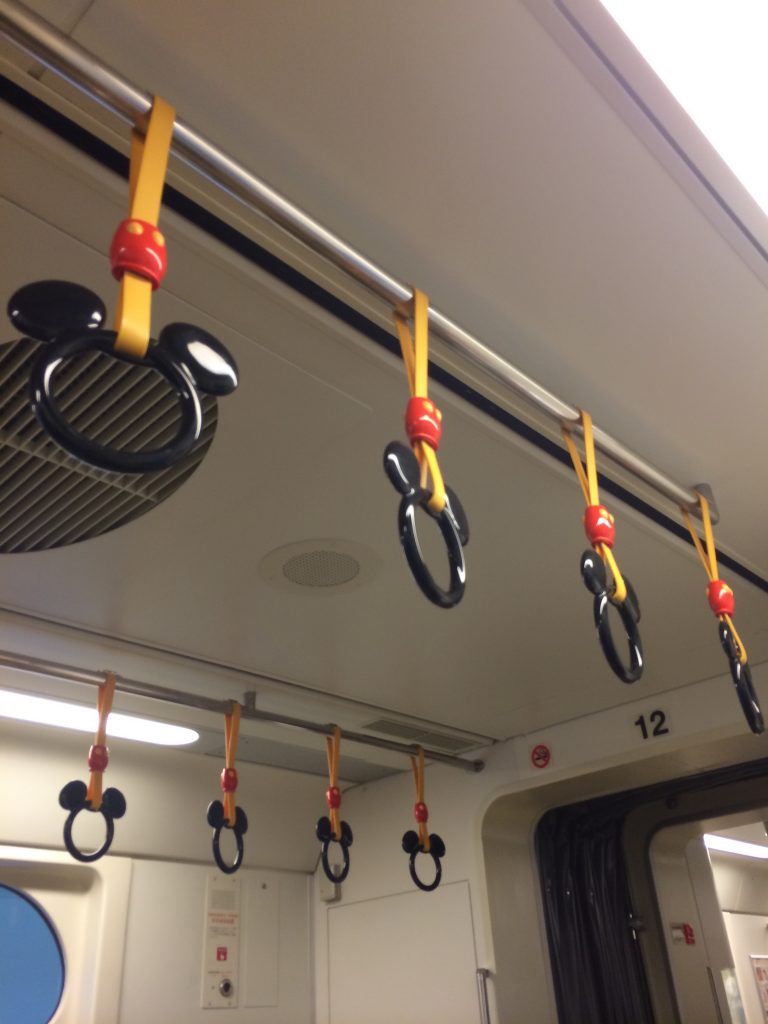
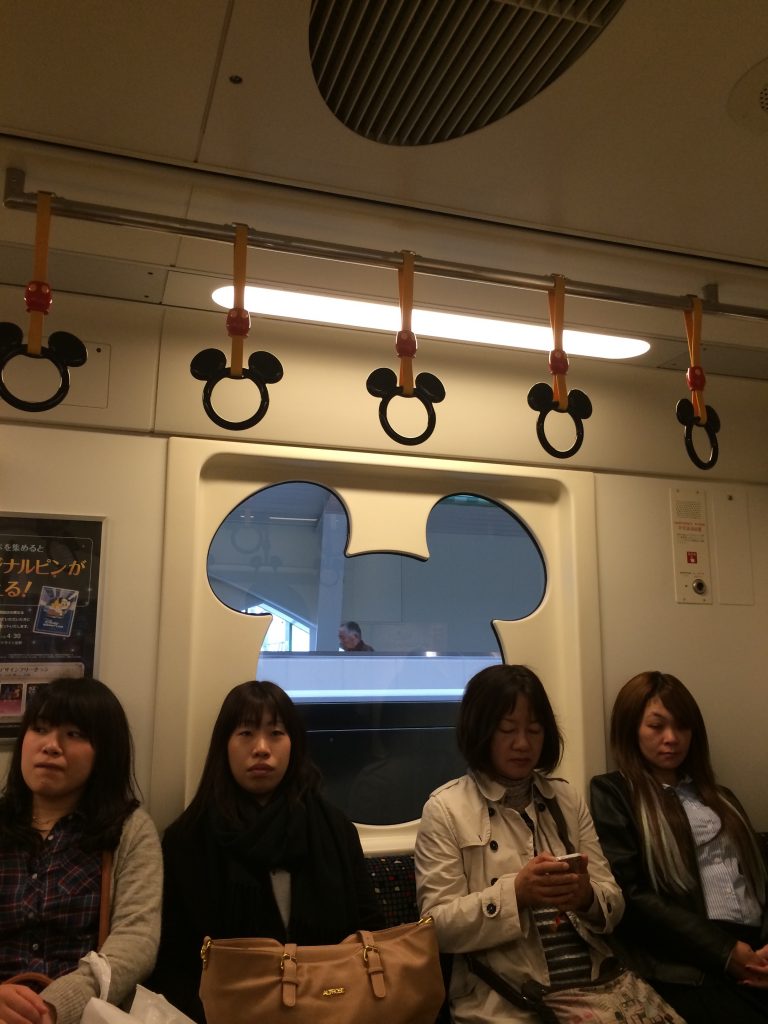
This train will take you to Tokyo Disneyland, the Tokyo Disneyland Hotel, Tokyo DisneySea, Hotel Miracosta, and the non-Disney partner hotels’ shuttle station. (The new Tokyo Disney Celebration Hotel uses a bus service.) Tokyo Disneyland and the TDL Hotel are both on the same stop as they’re right next to each other, and Tokyo DisneySea and Hotel Miracosta are also the same stop — that hotel is literally inside the park.

If you plan on going to the parks for more than one day, I recommend staying at one of the Disney hotels. The non-Disney partner hotels are a bit cheaper, but they’re not nearly as easy to get to, which I learned the hard way. There’s a new economy hotel, the Celebration Hotel, (that, admittedly, I’ve not yet tried) that might also be a good compromise. It’s still a 20-minute bus ride, but it’s closer than the partner hotels and includes the same early access benefits as the other Disney hotels.
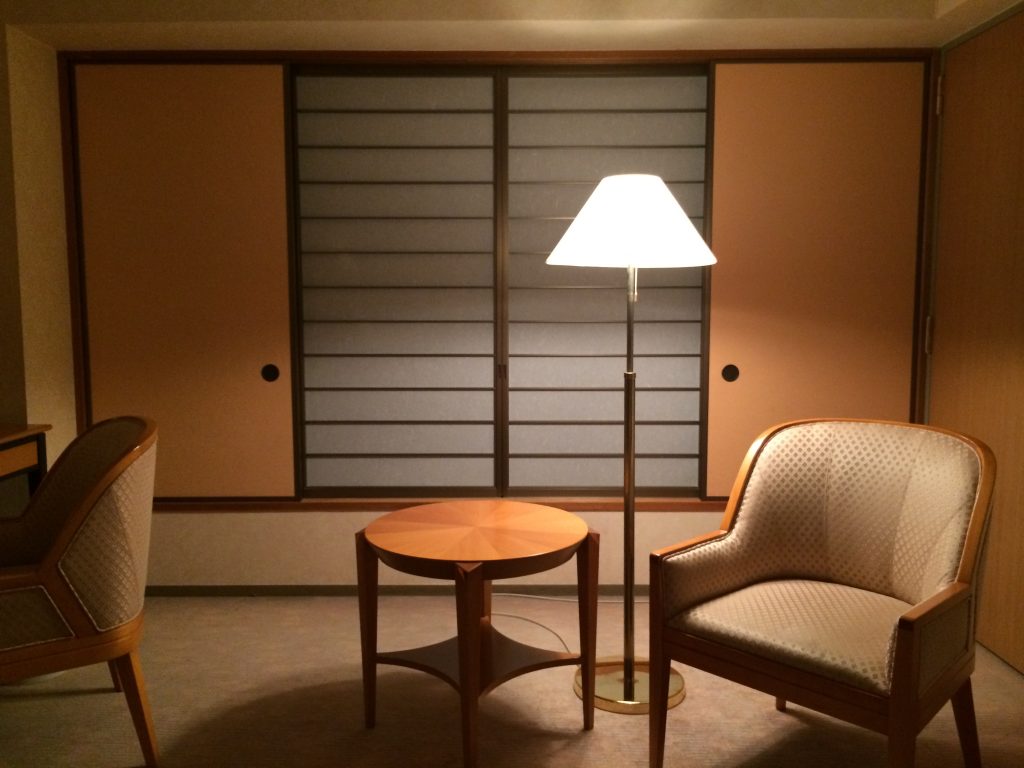
The only option I actively do not recommend is going back and forth between Maihama and Tokyo every day. It’s a surprisingly long and frustrating trip. Plus you’ll have to leave obscenely early because you really, really want to get to Tokyo Disneyland when it opens. It’s fine to make that trip on your first day, but it gets very exhausting very fast when you’re doing it repeatedly.
As I mentioned before, if you stay at the Disney hotels, you’ll get passes that will let you into the park early — fifteen minutes early, in fact. That won’t sound like a lot of time to American Disney-goers who are used to extra magic hours, but believe me when I say you’ll want that head start.
Tokyo Disneyland is unlike most other Disney parks I’ve attended in that lines are just absurdly long. Sometimes you’ll find yourself wandering through part of the park that feels absolutely empty just because everyone is currently in line for a ride or character meet & greet. It is really not out of the ordinary to see 3+ hour lines for the most popular rides. That’s why that fifteen minutes, or the mad dash, is so dang important. It gives you a little head start so you can grab a fastpass and then get in line for another ride before the gates are opened to everyone else.

At Disney parks, fastpasses are passes you can get with your park ticket that are essentially reservations for rides. You might get a fastpass for Peter Pan, for example, that’ll tell you to come back between 5 and 6 pm to get on the ride. You can only get fastpasses one at a time and they run out early in the day for some rides, so they’re at a real premium. Though American parks have moved to electronic fastpasses you can reserve with your phone or Magic Band, as of the publishing of this post, Japan still uses the old paper passes. Fastpass booths are typically next to the ride in question.
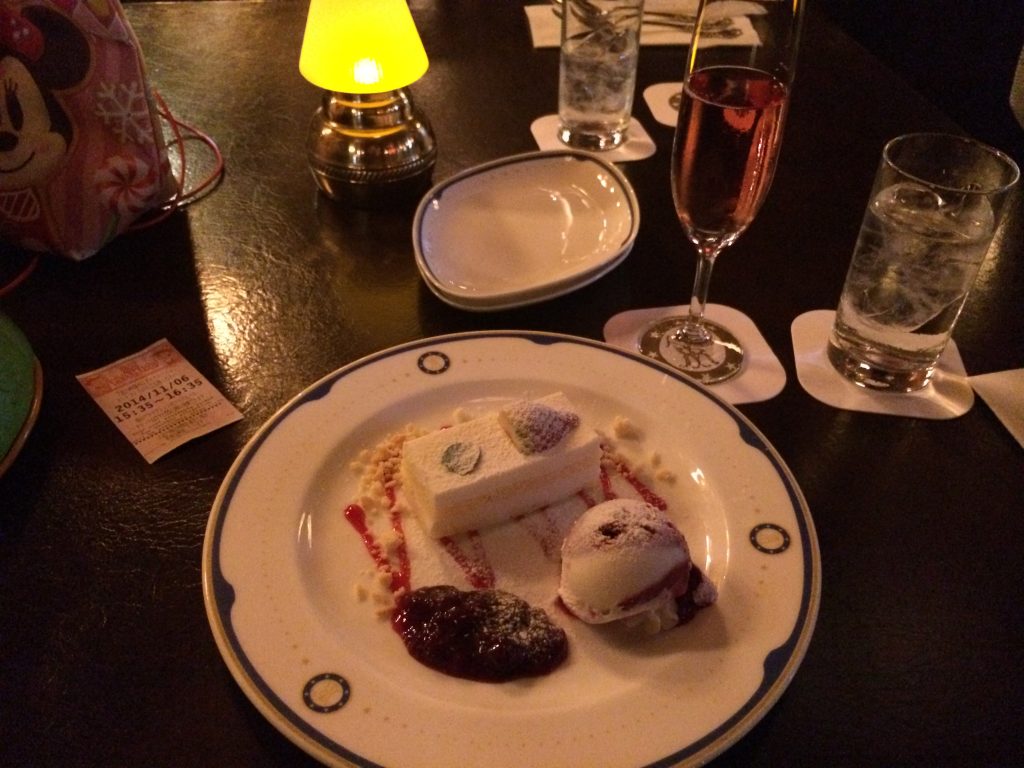
If you can’t manage to get to the parks early, I recommend aiming for the most popular rides (like Winnie the Pooh) during unpopular times, like during a parade or fireworks show. Otherwise you might spend your whole day waiting in a line, and that’s no fun.
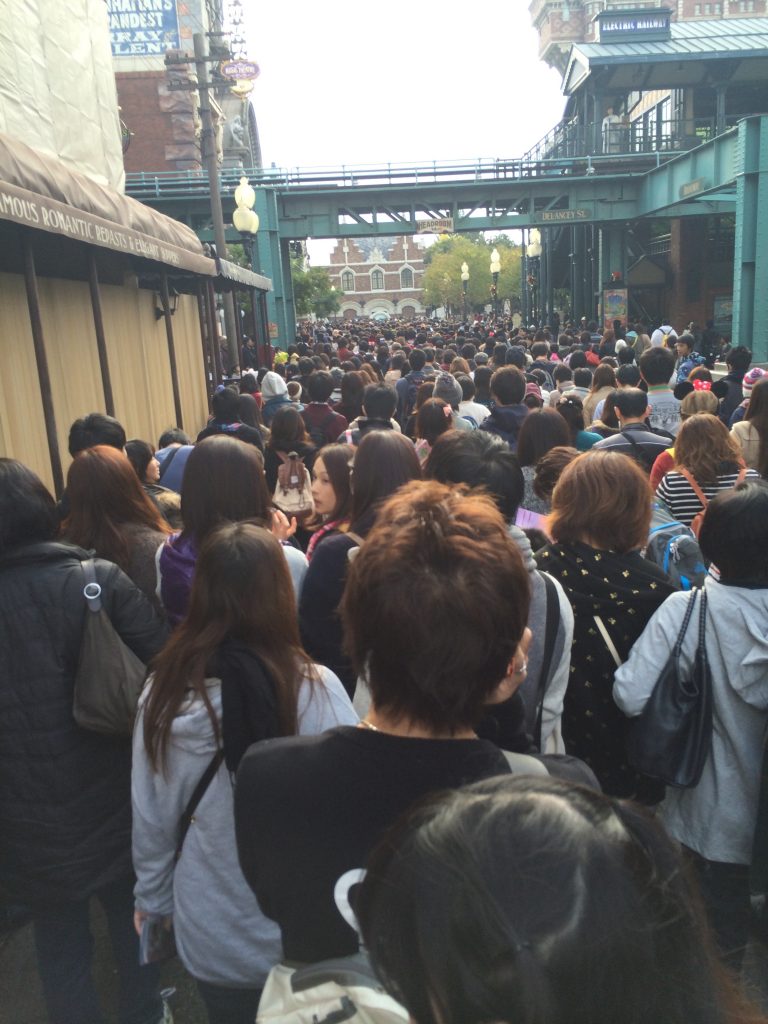
Note: If you are disabled, I recommend going on Tokyo Disneyland’s website and looking at their “barrier free” policies. I have a mobility disability, so I rent an electric wheelchair at Disney parks. You can do this at Tokyo Disneyland, but they are bizarre about rain and will not rent you an ECV if it even looks like rain. They also have manual wheelchair rentals and operate under the Guest Assistance Card model, where you are given a small booklet by a cast member and instead of having you go through the line, the cast member over by the entrance of the ride will write down what time you came, add the estimated length of the line to that time, and give you a time when you should come back. In other words, you wait for the same amount of time you would in line, but you can go sit down somewhere during that period. It’s a lifesaver if you can’t stand up for extended periods.
Another thing that might be confusing if you’re used to other Disney parks is that Tokyo Disneyland does not accept reservations for its restaurants, per se. They have something called “Priority Seating” at some restaurants, though. That will involve, yes, yet another line. It’s sort of like a fastpass for restaurants; you get a Priority Seating pass and you’re given a time to come in. You’ll still need to wait in line, but not nearly as long. That said, Priority Seating can only be reserved online if you speak Japanese. If you ask your hotel or a cast member at a restaurant for help, however, they should be able to make a Priority Seating reservation for you.
If you can’t get a Priority Seating reservation or you just want a little more freedom in your plans, you can just wait in line. These lines go pretty quickly, but if you don’t want to wait to sit at one of their fancy sit-down restaurants, TDL/TDS both have really good quick service. I’ll go into more detail on their dining system in the other posts.
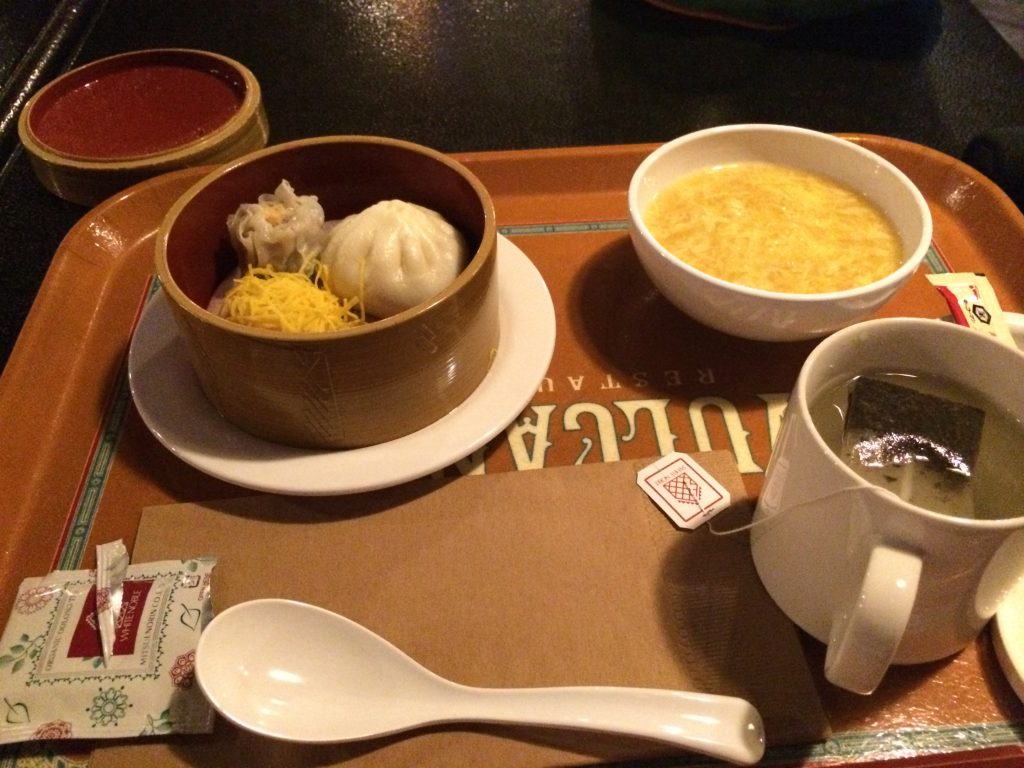
There are a few more things to watch out for if you’re used to other Disney parks. The one that surprised me the most was that you are often expected to sit down during shows and parades at the parks. Many families bring their own blankets or mats to sit on for this very reason. (There is a special section for wheelchair users.) Also, there are some shows at TDL/TDS that are lottery only. In other words, you need to go to a building, put your park ticket in a machine, and roll the dice. Did you win a seat at Big Band Beat? If not, you’re probably out of luck. The first show of the day is first-come, first-serve, but all the other shows are lottery only.
Finally — and this is the thing that might bring you the most trouble — if you’re used to American parks, you may expect to find cast members who know just about every language under the sun. But it’s a lot harder to find a cast member fluent in English at Tokyo Disneyland than it is to find a cast member fluent in Japanese at Walt Disney World. Between my visits, more maps and signs became available in more than one language (especially English and Chinese), but the language barrier with employees and other guests is still very, very real. My intermediate Japanese was enough to get around, but even then it can be confusing.
(There is also the regular Japanese issue of American debit cards and some credit cards being difficult to use. As of 2014, there were no American card-friendly ATMs in the park, so make sure you get backup cash in Tokyo at a 7-11 or post office just in case.)
All that said, to me the best part of going to a foreign (to me) Disney park is seeing how cultural differences influence the Disney experience. It’s fun to get Japanese curry with the Country Bears and try out Tokyo Disneyland’s many, many varieties of popcorn. It’s neat to hear the characters’ Japanese voices and to see which characters Japan loves best. (You may be surprised by that one.) And where else can you walk into a Disney building and find, to your deep confusion, an entire restaurant dedicated to Teddy Roosevelt?
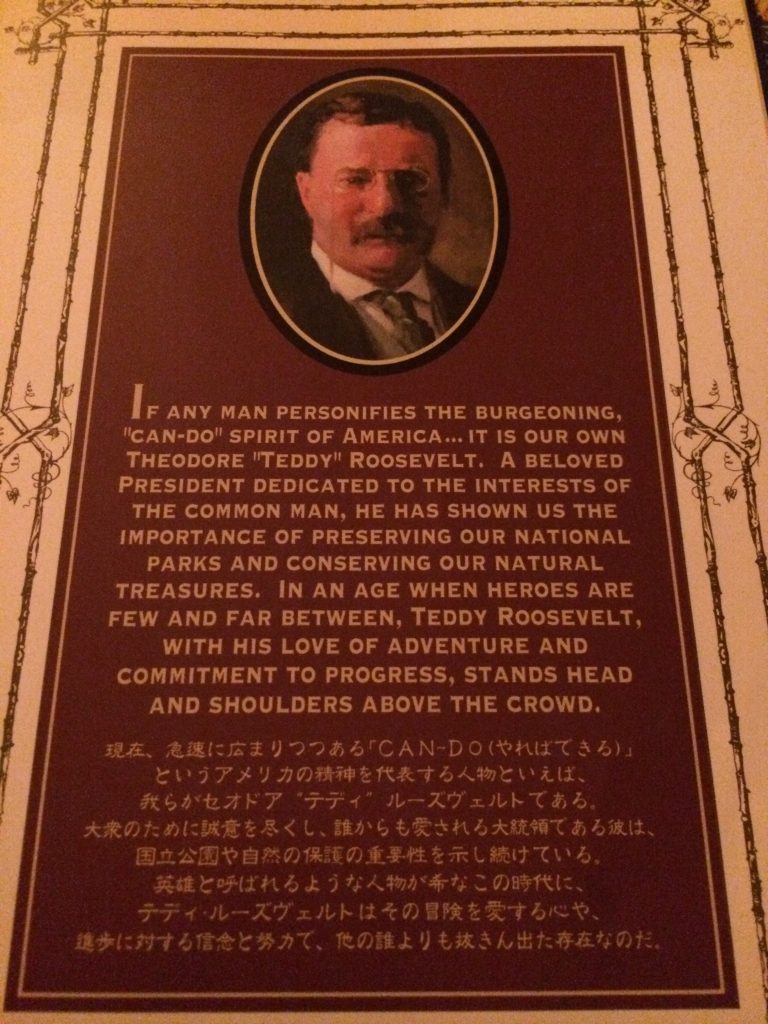
Seriously, instead of getting frustrated at the changes, I recommend just rolling with them. Some things that are different are really fun. And Tokyo Disneyland and Tokyo DisneySea are just really, really fun. The experiences may be different there, but they’re just as magical.
This post may have made all this seem confusing, but it’s really just me trying to head off any issues you might have so you can spend all your time at the parks having as much fun as I did. There are so many things that are great about Tokyo Disneyland that, like I said, I can’t even fit them all in one post. So just think of this post as the safety instructions you have to sit through before you get to go on the ride.
Next time: Mice, bears, pirates, princesses, toons, soy sauce popcorn… Disneyland Tokyo has all that and more, not to mention incredible meals, rides, parades, and character experiences.
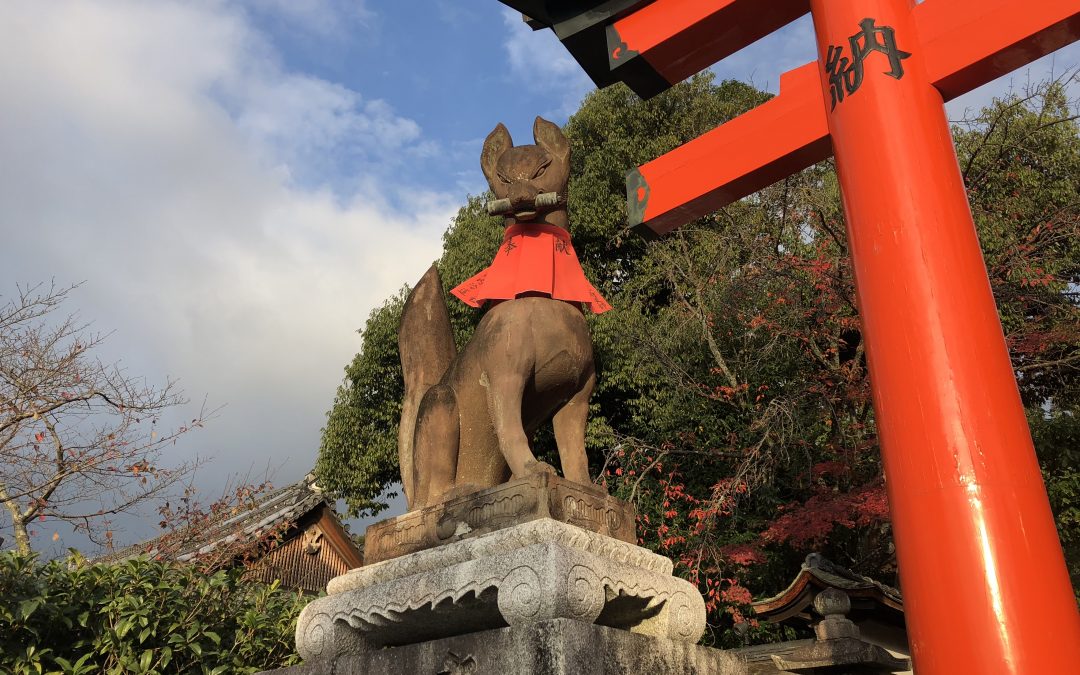
Fushimi Inari Taisha
There are an awful lot of iconic shrines and temples in Japan, and one of the most visited, photographed, and talked about is Kyoto’s Fushimi Inari Taisha. You might have seen pictures before. Imagine a long, winding tunnel of bright red torii gates dotted with fox statues large and small.
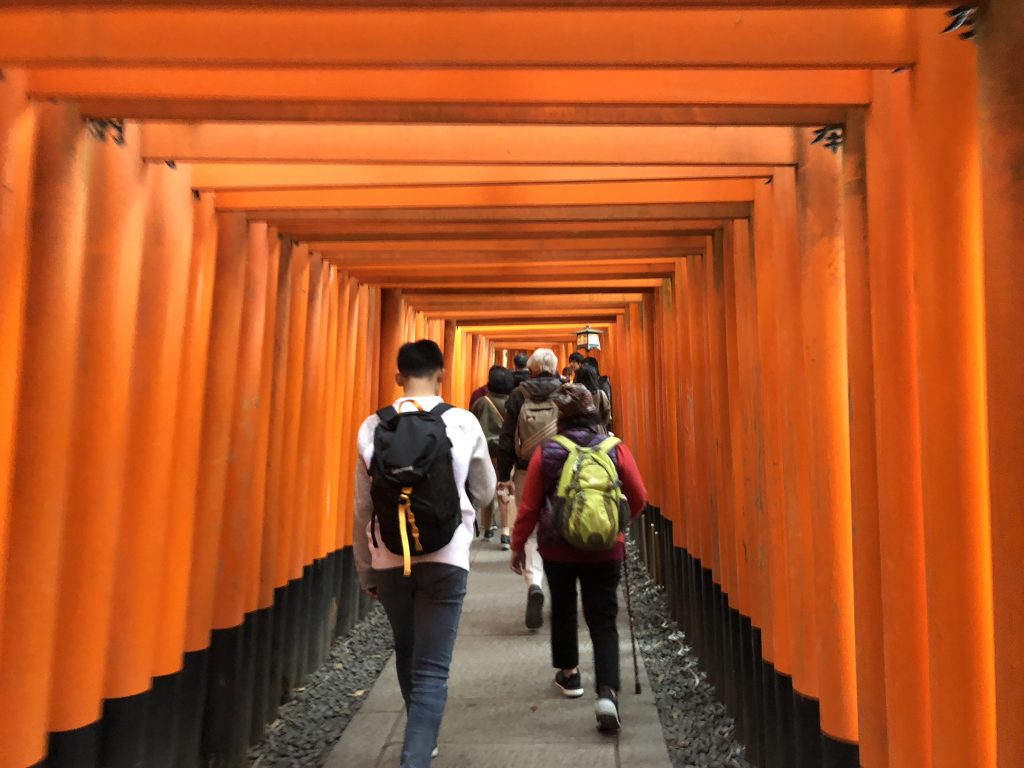
Fushimi Inari Taisha, more than being one of the most picturesque Japanese shrines, is also an incredibly important one. It’s the headquarters for one of Japan’s most popular and celebrated deities, Inari. Inari is imagined in a lot of different ways in Japanese religion and has a gender that’s… well, complicated. (Let’s just go with “they”.) Inari is associated with rice in Japan, which is tied almost inextricably to business and prosperity — which makes them a very popular deity. Inari is generally considered to have a human form, but is represented most often in the form of magical white foxes (kitsune) that serve as their messengers.
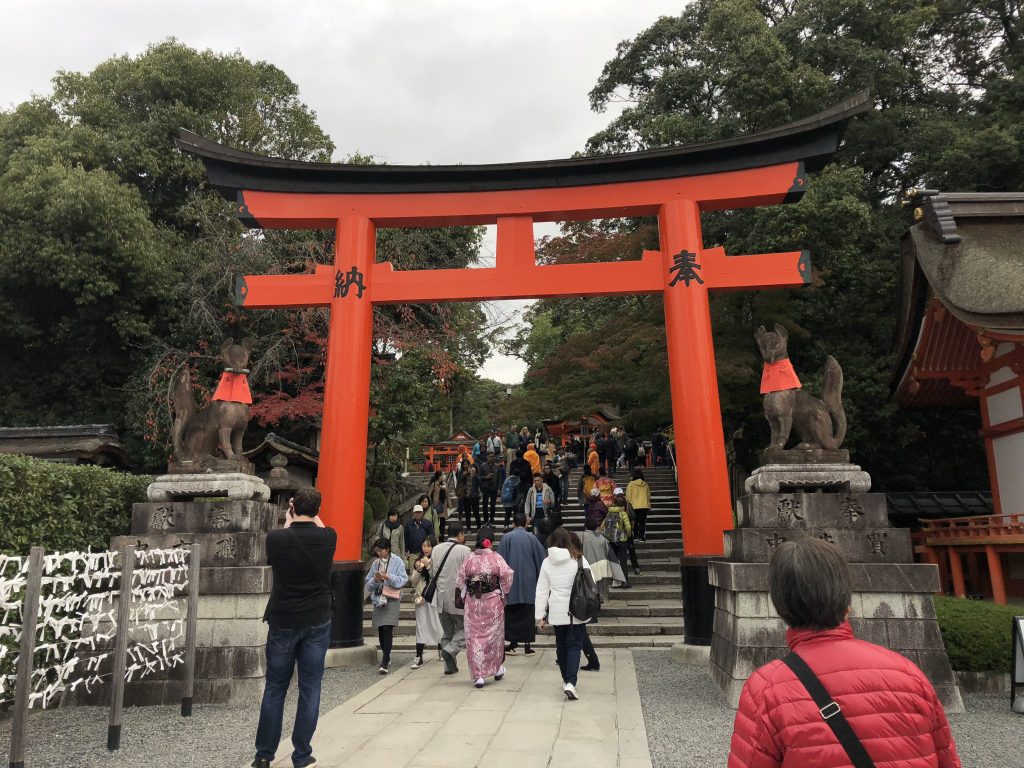
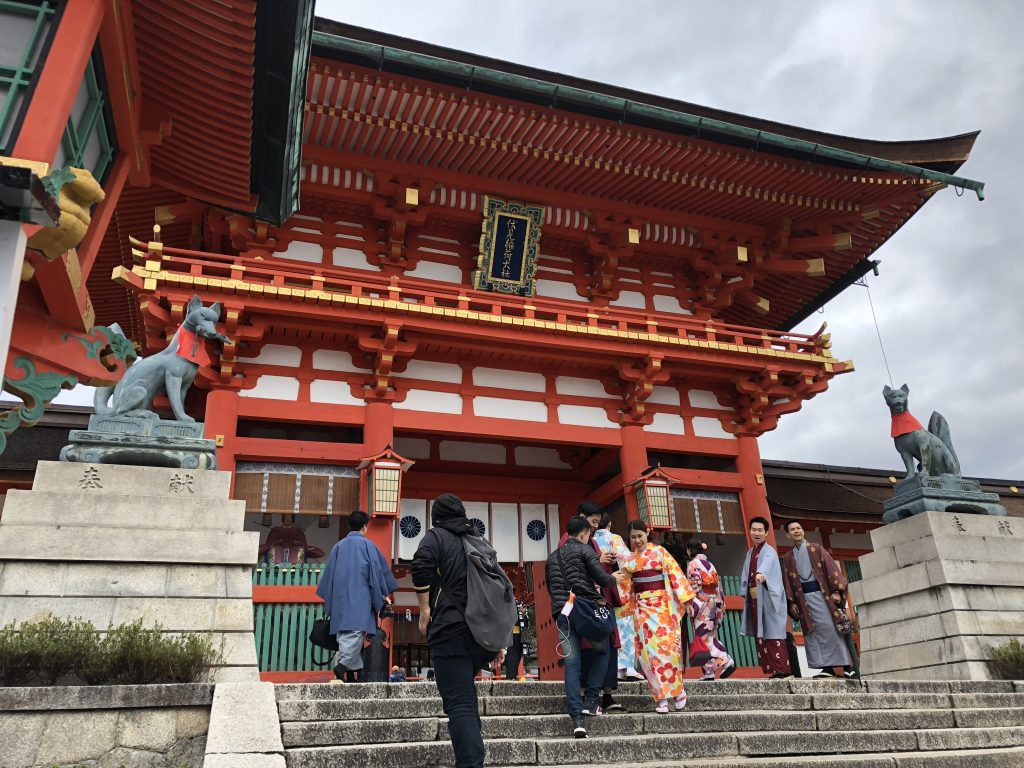
These foxes dominate the landscape in Fushimi Inari Taisha. You’ll see forbidding stone fox statues throughout the shrine complex, often carrying rice or keys (to the granary), but you’ll also see lots of tiny porcelain statues as well, especially on altars. Even the ema at this shrine are fox-shaped.
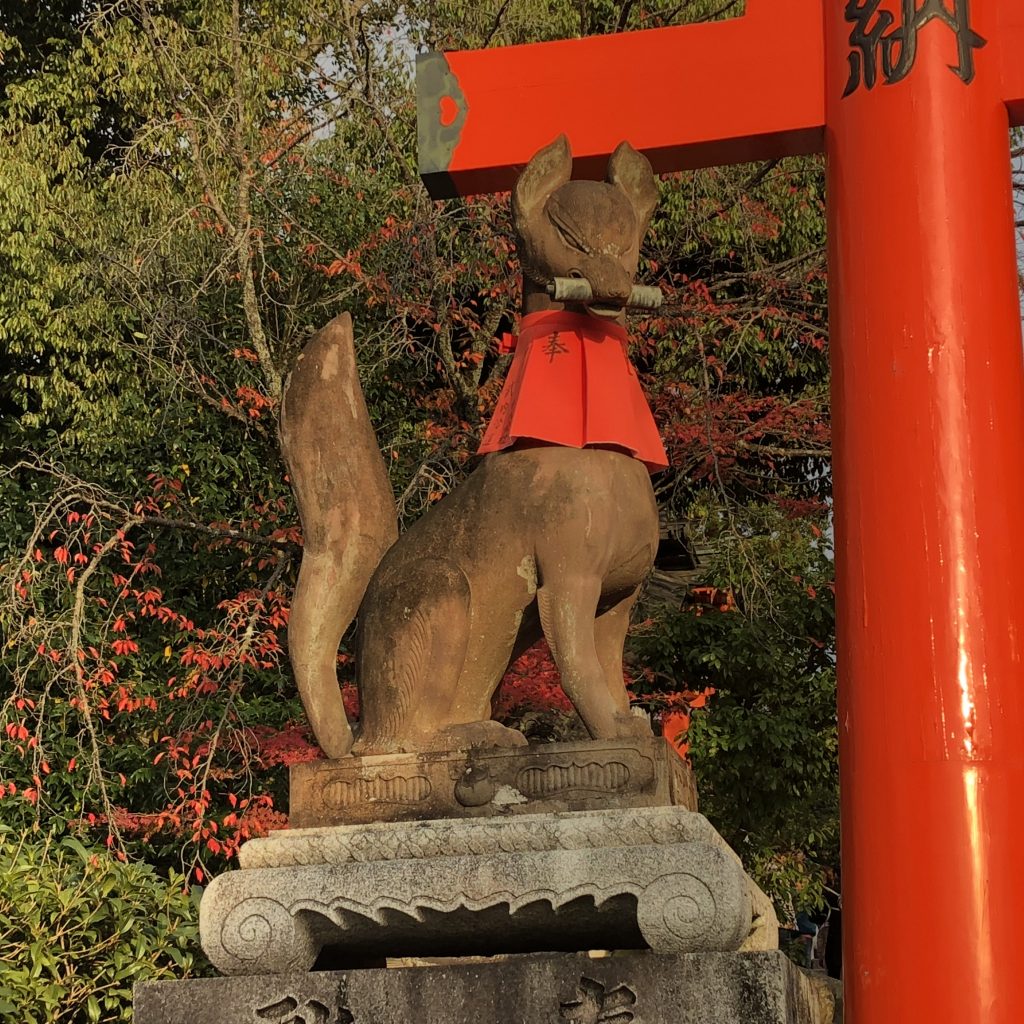
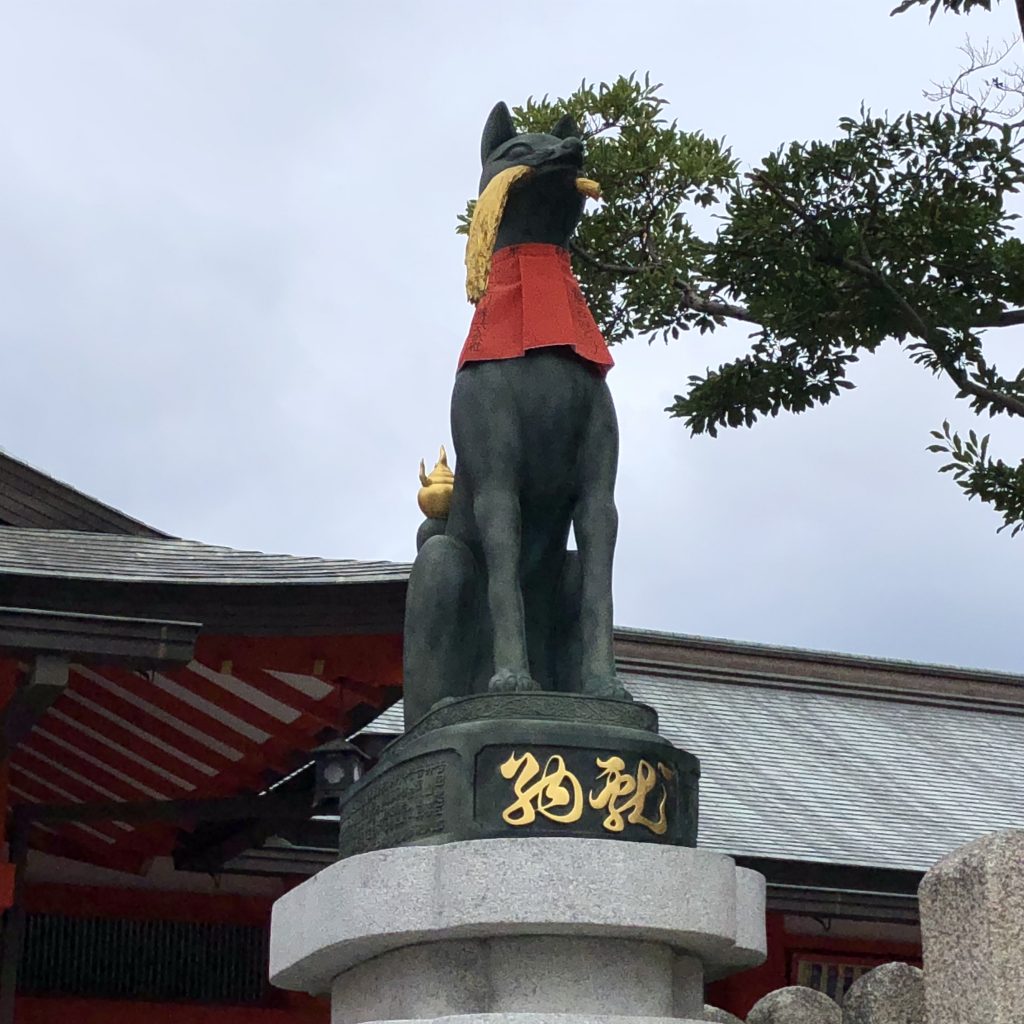
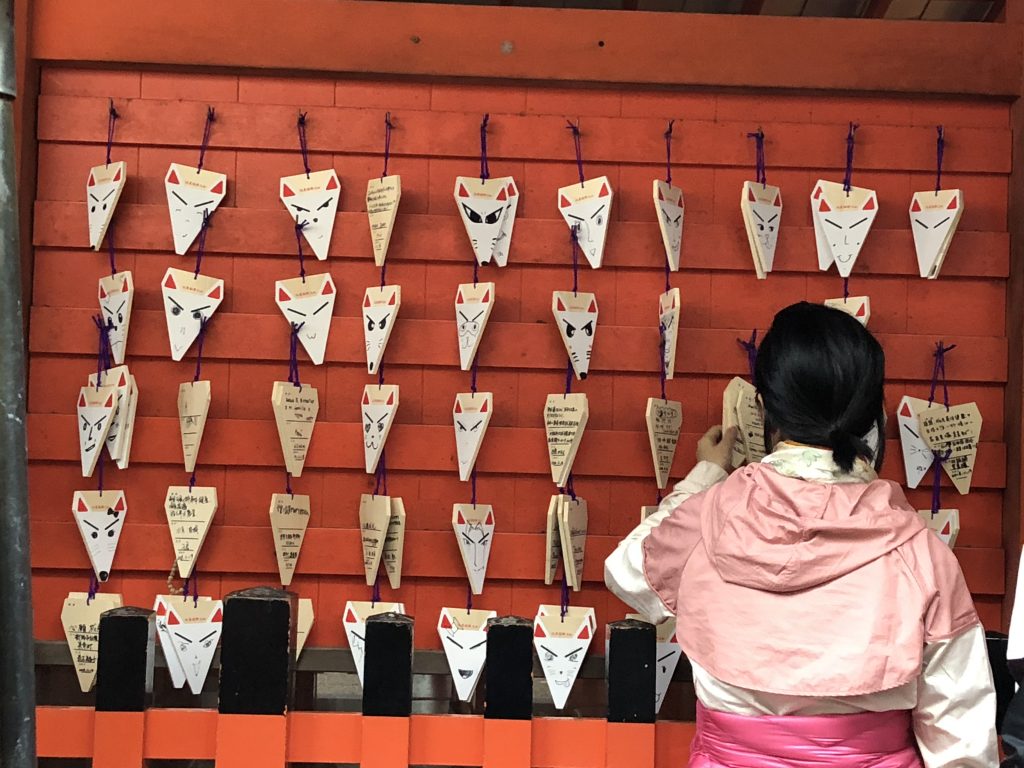
The shrine buildings themselves are very beautiful, but it’s not the temple itself that’s famous — it’s its gates. Almost all Shinto shrines will have large red torii gates, though you’ll sometimes see ones made of stone or unpainted wood. These gates serve as a visible boundary between the world of deities/spirits (or kami) and that of humans. Some people still keep to traditional rules about these gates, especially bowing before entry and keeping to the sides when passing through them. (The center is reserved for the kami.)
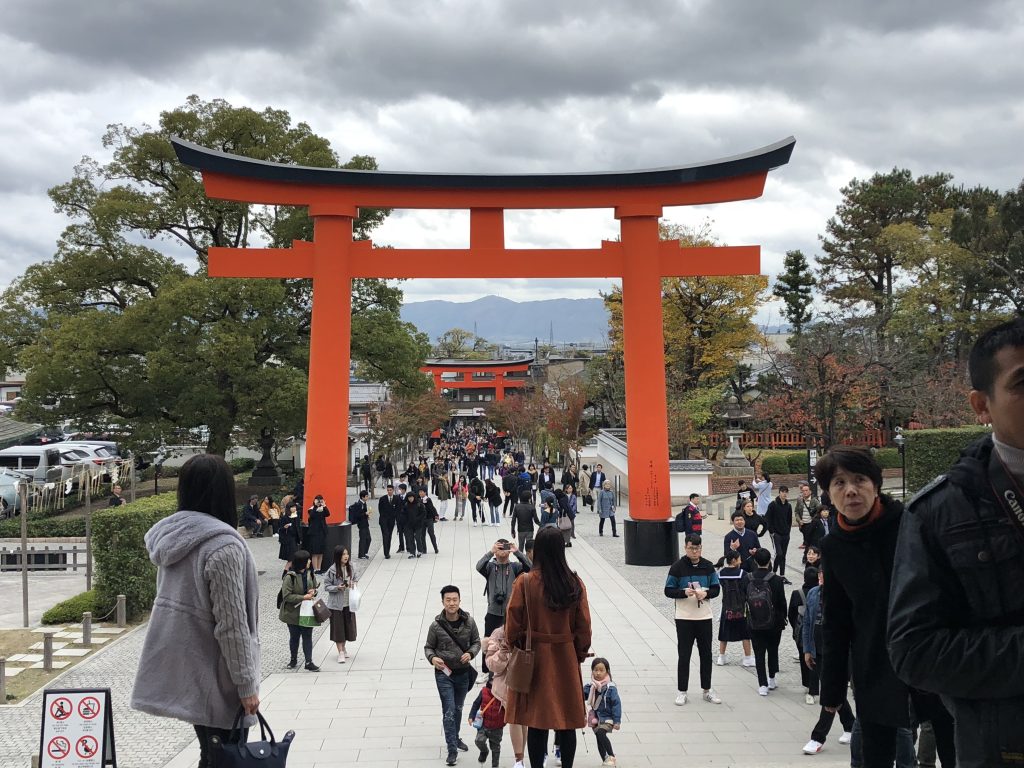
Most shrines only have torii around entrances; like I said, these gates denote a sort of liminal space between worlds, so it makes sense that they would act as doors. There might be a large torii at the main entrance(s) of the shrine complex, then smaller torii throughout when it comes to smaller altars and sub-shrines. There’s a theme, though, and that’s usually “transition”.
Fushimi Inari Taisha is different. It has its typical torii at its entrances, but it also has something called the senbon torii, or the thousand torii. Once you’ve passed through the main shrine areas, you’ll find a path that winds its way up Inari’s mountain (also named Inari), and that path is lined with hundreds and hundreds of torii.
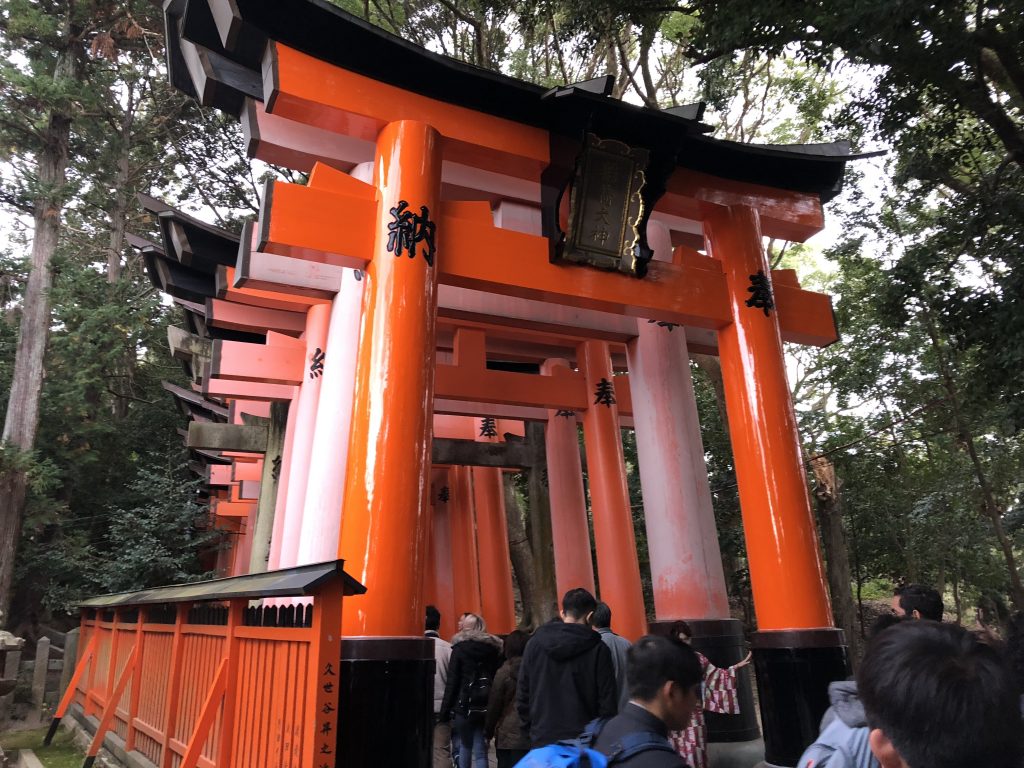
The effect of this is really pretty incredible, especially when the light is slanting through the trees and torii to fall just so on the path in front of you. It’s no wonder that you’ll be spending most of your hike dodging selfies.
While the effect itself feels pretty magical, the torii themselves are less so. Many tourists wonder at the writing on the back of the torii gates. Are they dedications? Incantations? No, my friend, those are advertisements. Each torii in the senbon torii has been donated by a local business. It’s one part request to Inari for prosperity and one part billboard, frankly speaking, and while it feels a little cynical once you realize what they are, it’s also a donation befitting a deity that watches over business dealings.
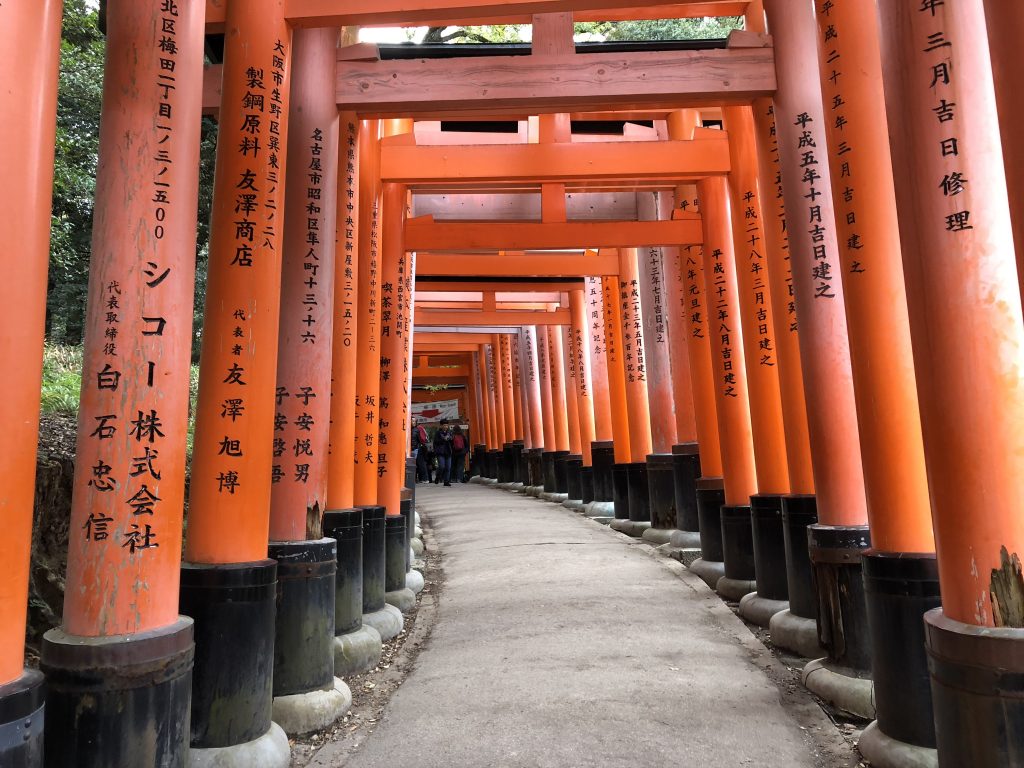
The climb itself has different levels of difficulty. Most people will be able to handle at least some of it. It starts out relatively level (for a shrine complex, anyway) until you get to a small shrine part of the way up what has been (up until this point) basically a hill. After this little way station, though, the climb becomes much steeper and eventually starts to include stairs and becomes more of an actual hike. Many visitors turn back at this point, so while the walk gets more difficult after this area, it also empties out quite a bit. If you want to get a good picture of the torii sans tourists, that’s probably your best bet. Most of the remainder of tourists turn back at an intersection about halfway up the mountain (as this is where the torii start to peter out), but you’re welcome to go all the way up if you choose.
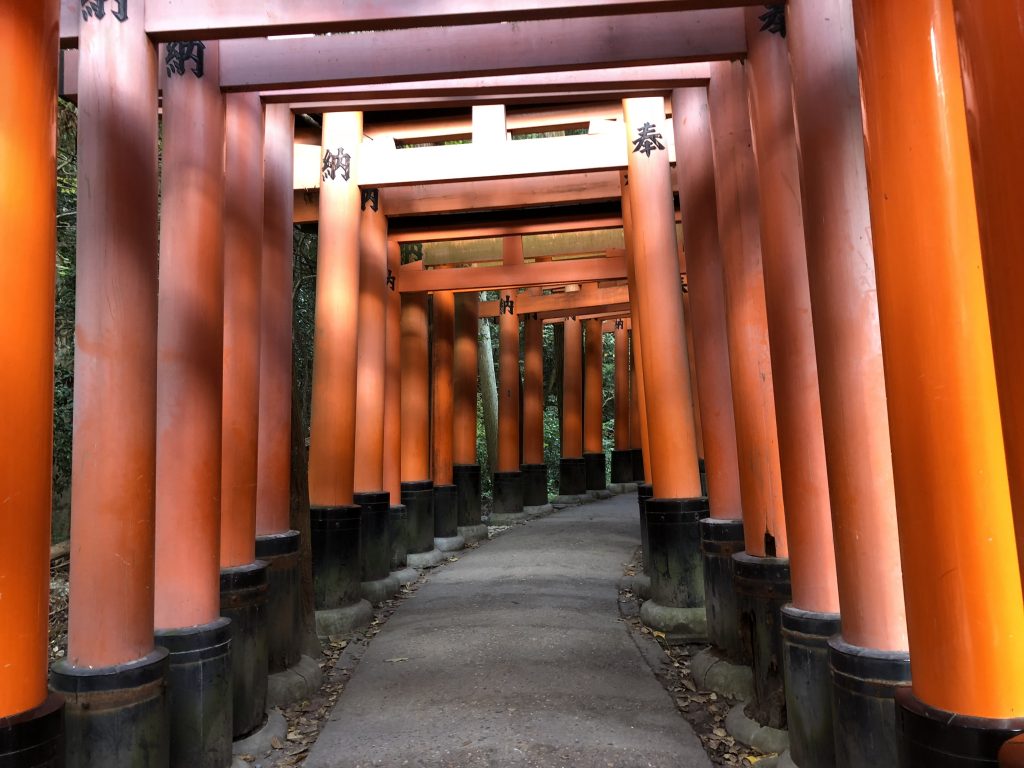
There are small shrines sprinkled around the mountain paths, culminating in a shrine to Inari up near the peak. No matter how far you go, the walk is enjoyable. (Even if you might have to deal with some pedestrian traffic.) The area becomes more and more heavily wooded, and the quiet walk is soothing. Add to that all the little shrines and altars and you’ve got yourself a beautiful walk.
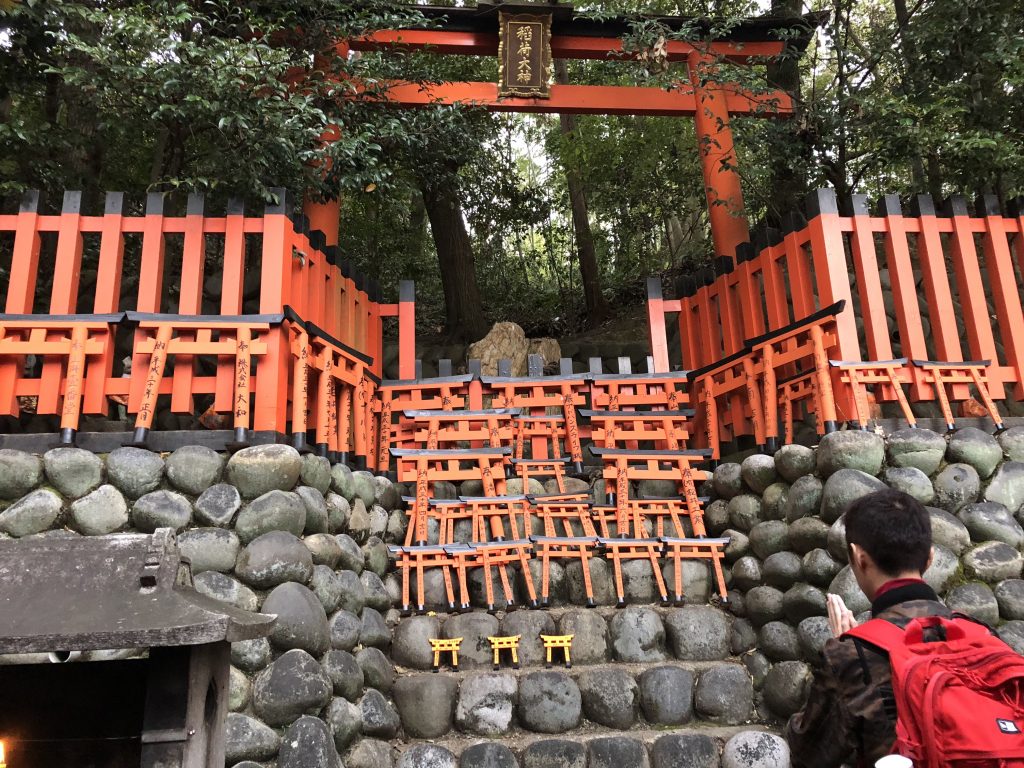
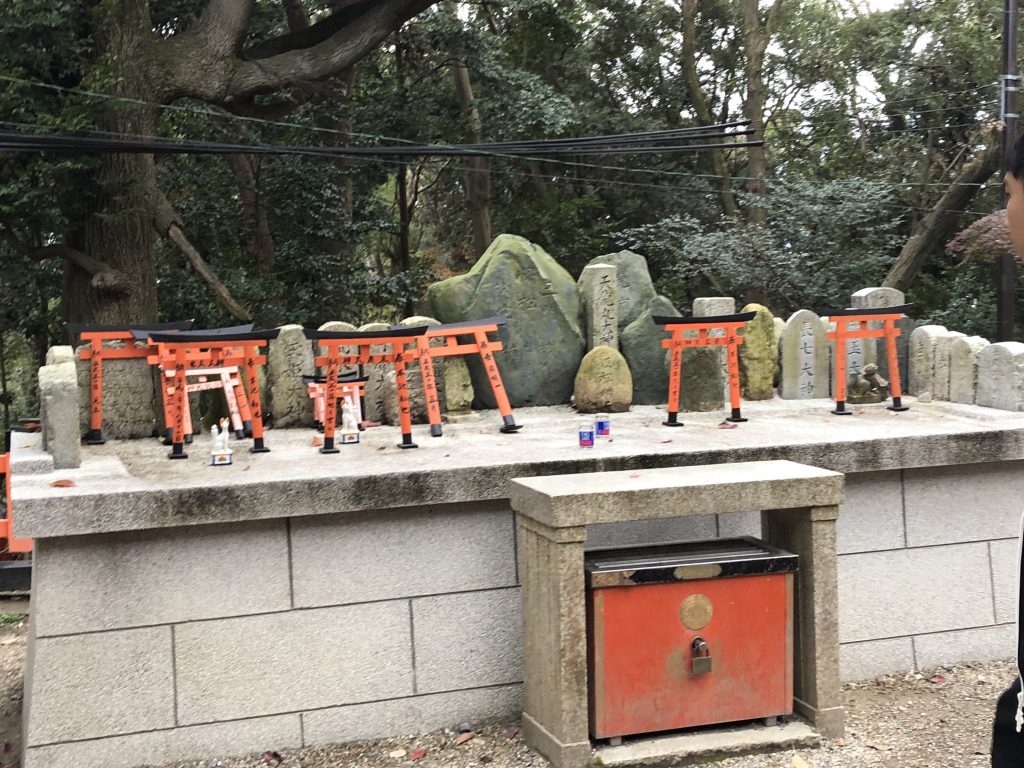
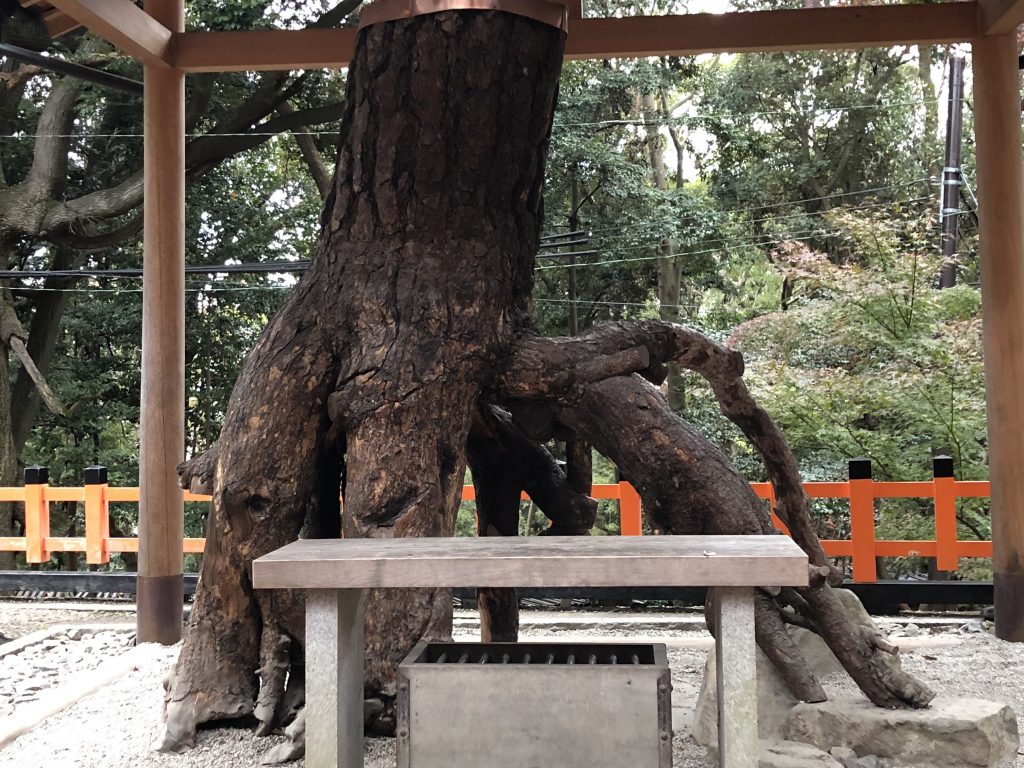
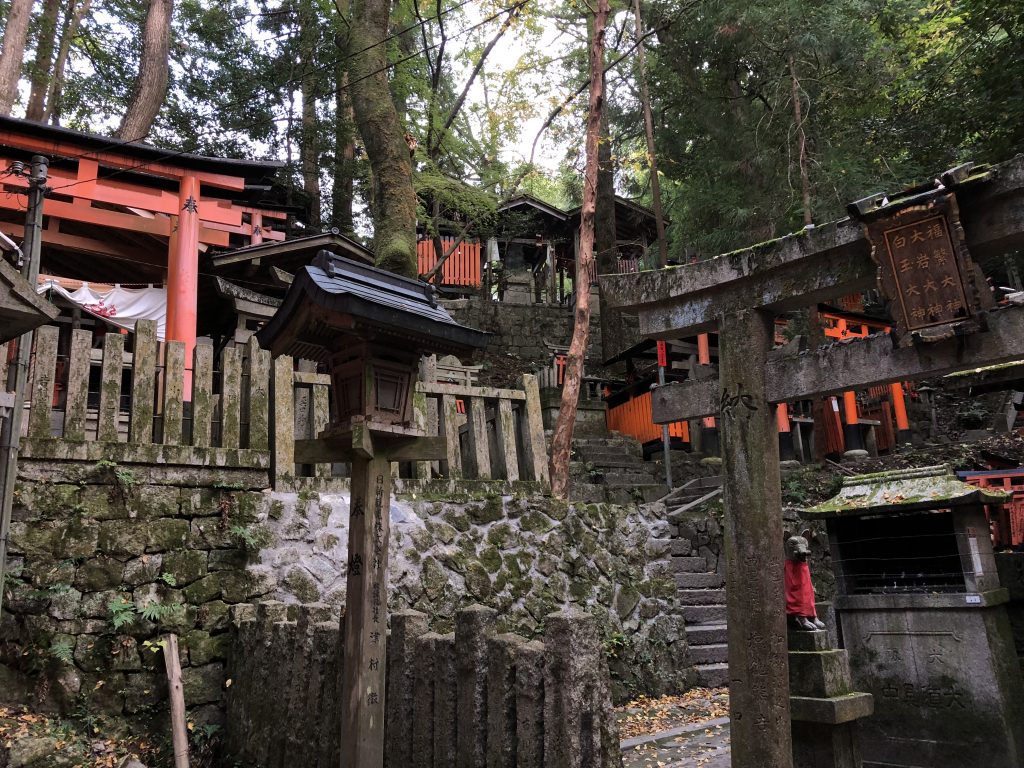
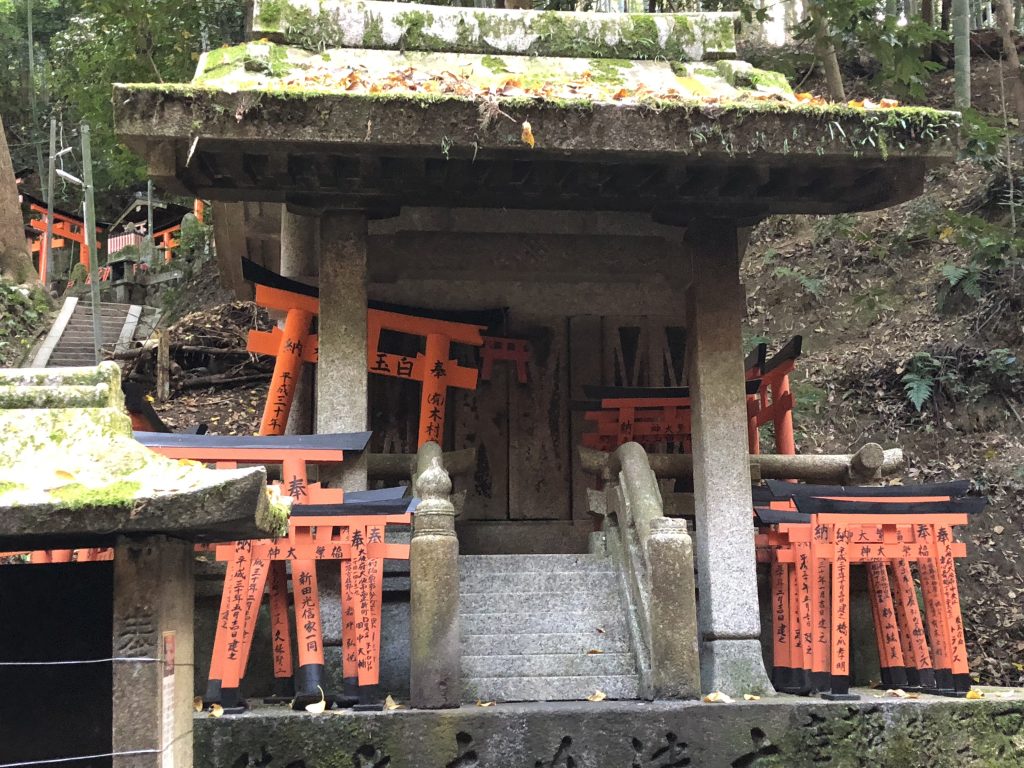
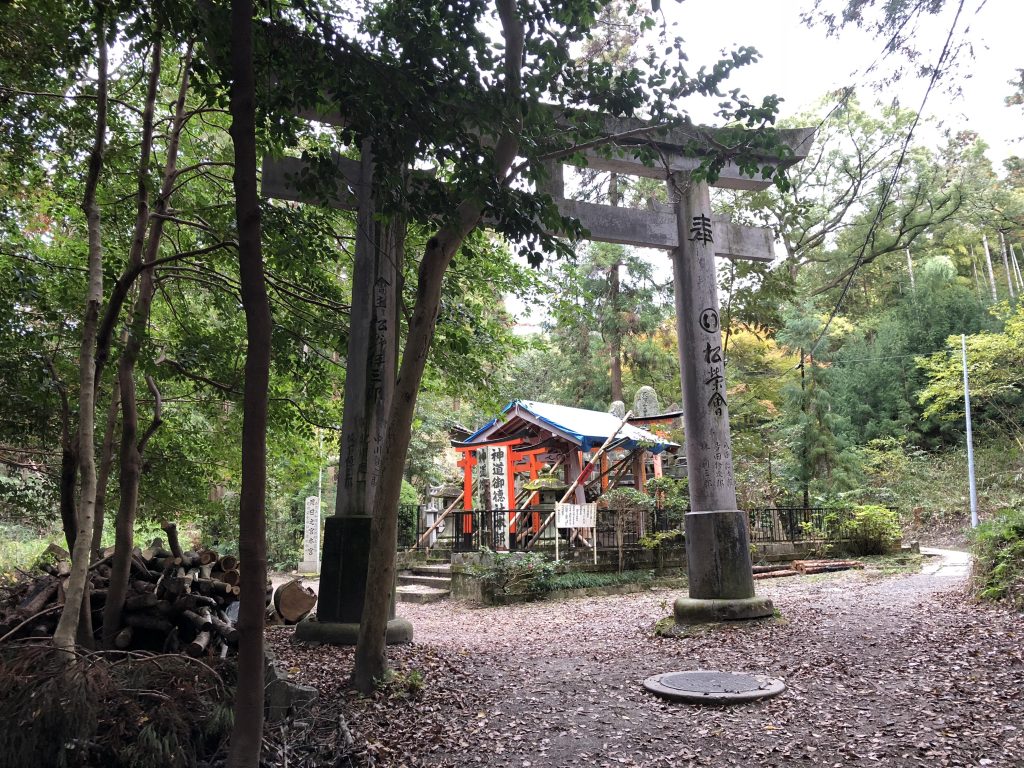
Outside of the torii, there is still quite a bit to enjoy around the shrine grounds. There are a number of very beautiful buildings near the front of the shrine and a little cafe that provides a lovely view of the scenery. If you’re into something a little more casual, there are dozens of stalls selling souvenirs and snacks on the street leading up to the shrine itself. In this area, you’ll find all sorts of different kinds of snacks and meals, but maybe you should try a treat associated with Inari, like inarizushi (rice wrapped in sweet fried tofu pockets) or kitsune udon (udon soup with savory fried tofu soaking up the broth).
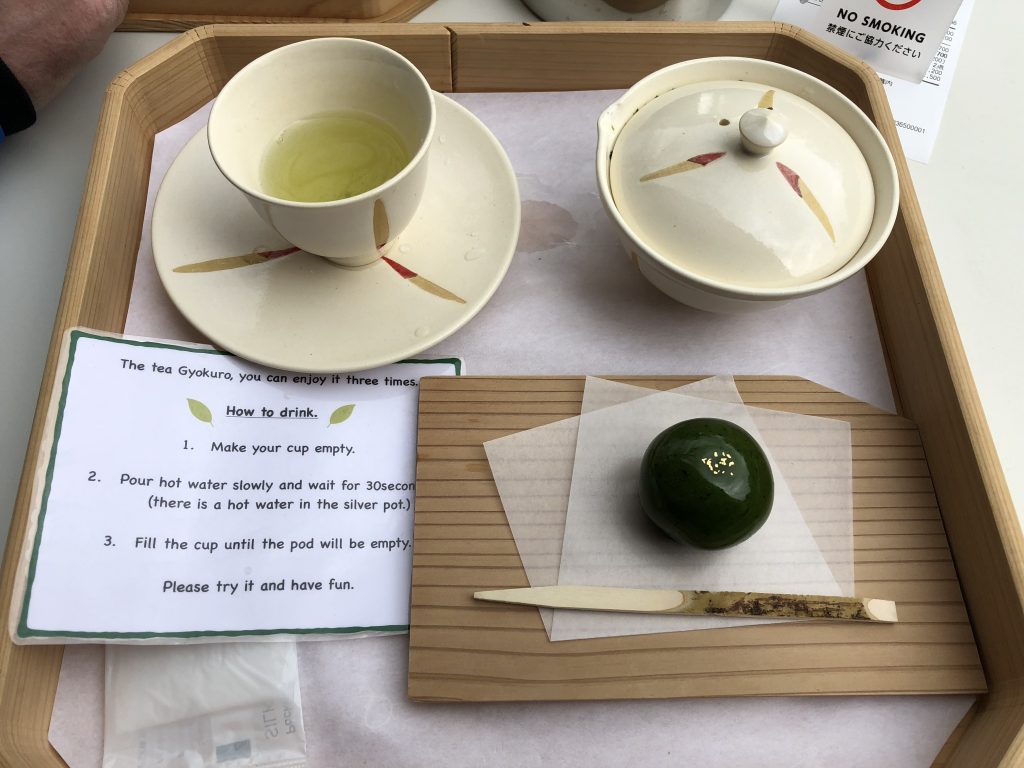
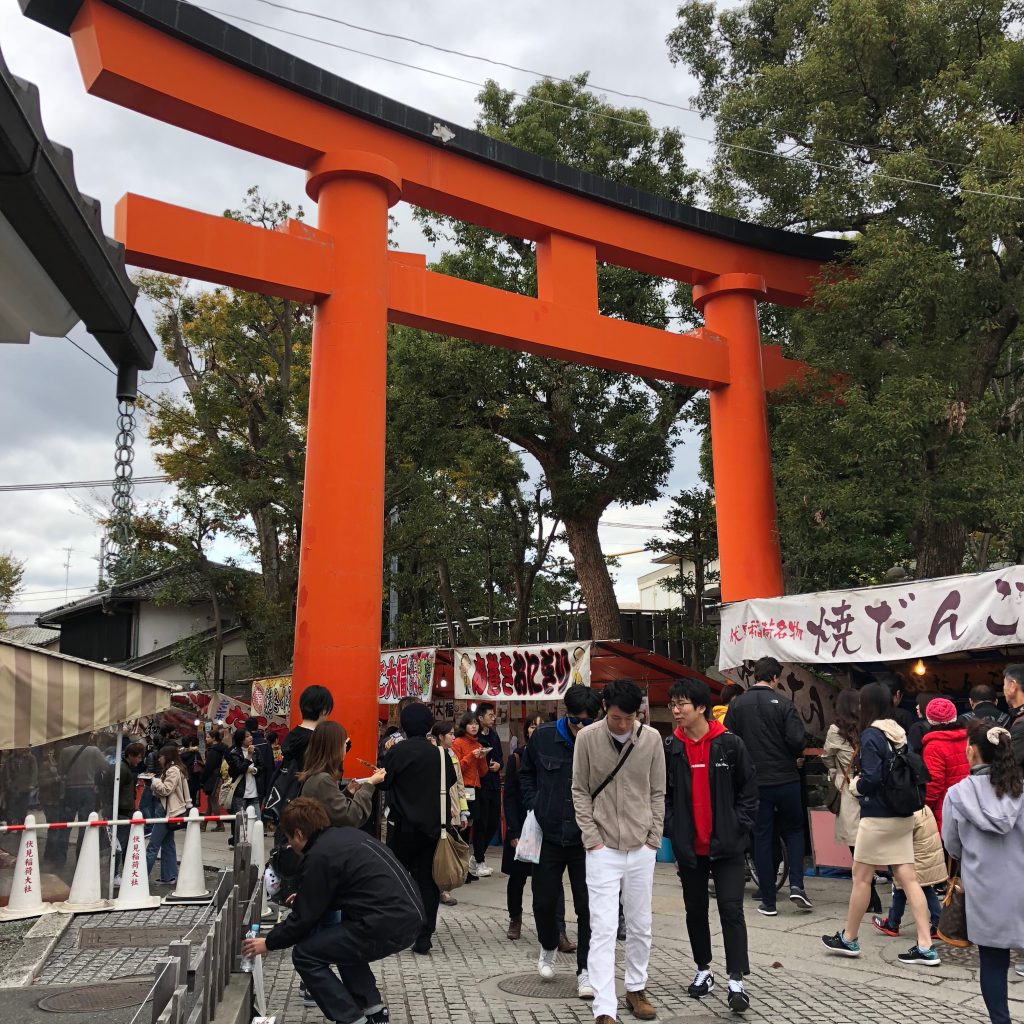
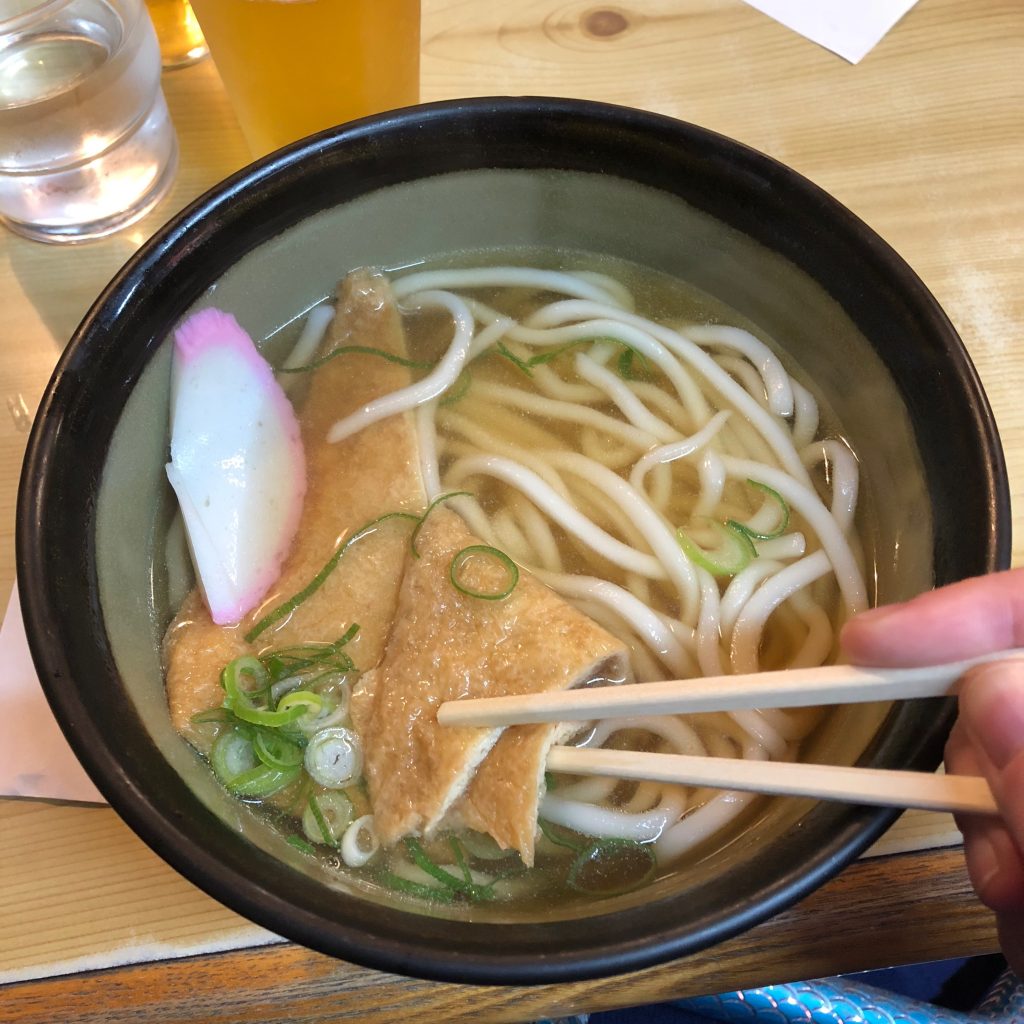
Despite the very touristy feel of the area, it’s important to keep in mind that it’s still one of the most important shrines in Japan on a religious, cultural, historical, and political level. It has been historically included in Japan’s top rank of shrines and the shrine itself is almost 1300 years old. (Many of its buildings date to the fifteenth century, though.) It’s not shocking that along with the shops selling fox coin purses and sweet dango, you’ll also find shops selling religious objects for home use. You should keep a certain amount of respect as you climb Inari’s mountain paths, even if you spend half your time dodging selfie sticks.
In my personal opinion, Fushimi Inari Taisha is one of the most rewarding shrine visits you can make in Kyoto, particularly if you hike up a little further than the tour groups. It’s very popular, but it’s pretty easy to see why. You quickly feel like you’re in an entirely different world, ringed as you are with red, and you really half-expect to see foxes darting around in the forest out of the corner of your eye. The walk itself is beautiful, especially when you encounter some of the smaller shrines along the path, and there’s a real sense of nature that’s lost in some of the main shrines in larger cities. That said, it’s not nearly as difficult a climb as some sacred mountains in Japan and it’s very approachable to cultural laypeople and inexperienced hikers. Fully, fully recommended.
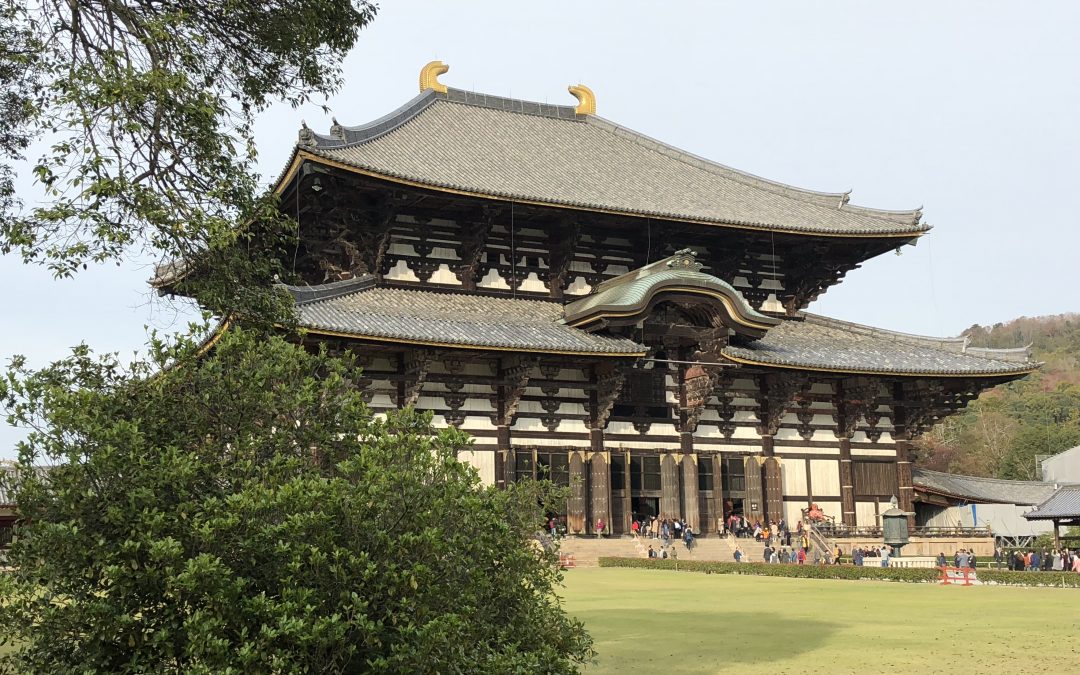
Nara
When my family decided to start planning this trip to Japan, one of the places I absolutely knew we needed to go was Nara. I went to Nara while I was going to school in Kyoto and it’s one of those day trips that’s just wholly Japanese and wholly unmissable. Nara’s very easy to access from just about anywhere in the Kansai region (Kyoto, Osaka, Kobe, etc.) by train and it’s so freaking neat.
Nara was the capital of Japan during the Nara era (710-794 CE) and as a result, it has some truly incredible treasures there. There’s Tōdaiji, the largest wooden building in Japan, that was literally built around the enormous Buddha statue inside. There’s Kōfukuji, with its pagoda. There’s Kasuga Shrine with its thousand stone lanterns. And if you’re there during the fall, the imperial treasure house will be open for your perusal.
But if you’ve heard about Nara, it probably hasn’t been for any Buddhist monuments or imperial treasures. You’re here about the deer.
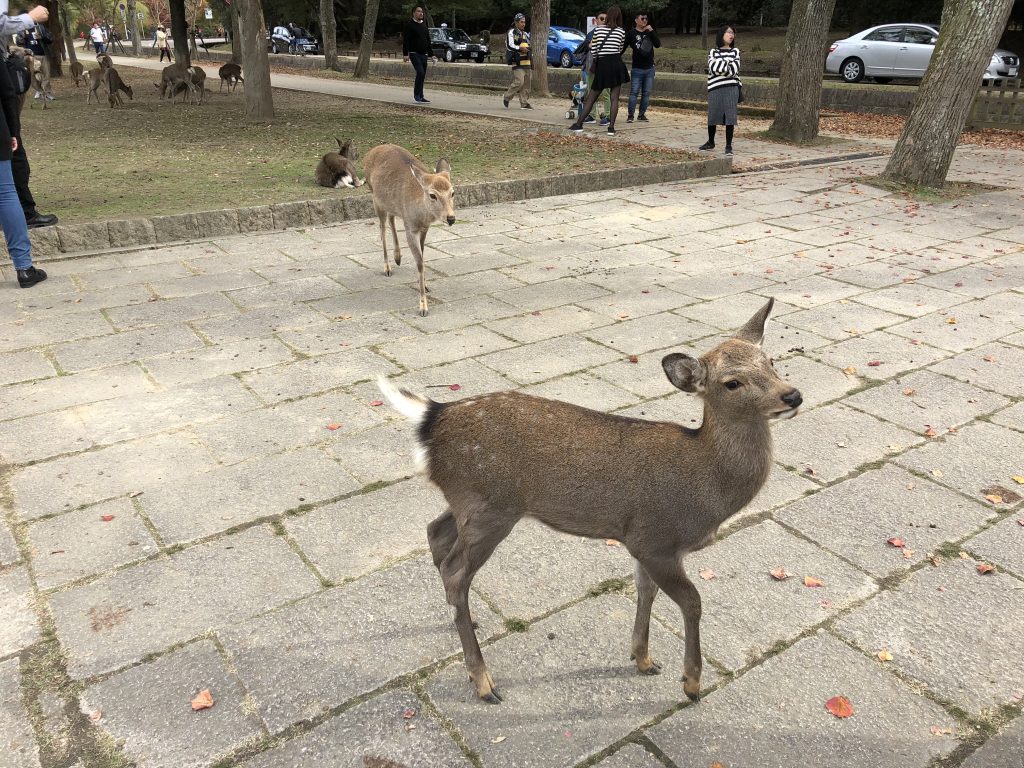
The thing Nara is far and away the most famous for is its population of roaming shika deer that can be found all over the city. The deer are small enough to feed treats to and to pet, but a warning: they’re also spoiled rotten. After decades of tourists feeding them deer crackers and acorns on demand, these little monsters are willing to do just about anything to get the crackers that are their due, including ass-biting, head-butting, and straight-up picking your pockets. You will quickly become used to the sounds of tourists screaming as tiny deer chase them all over the park. And you know what? I love those little miscreants. I love them so much.
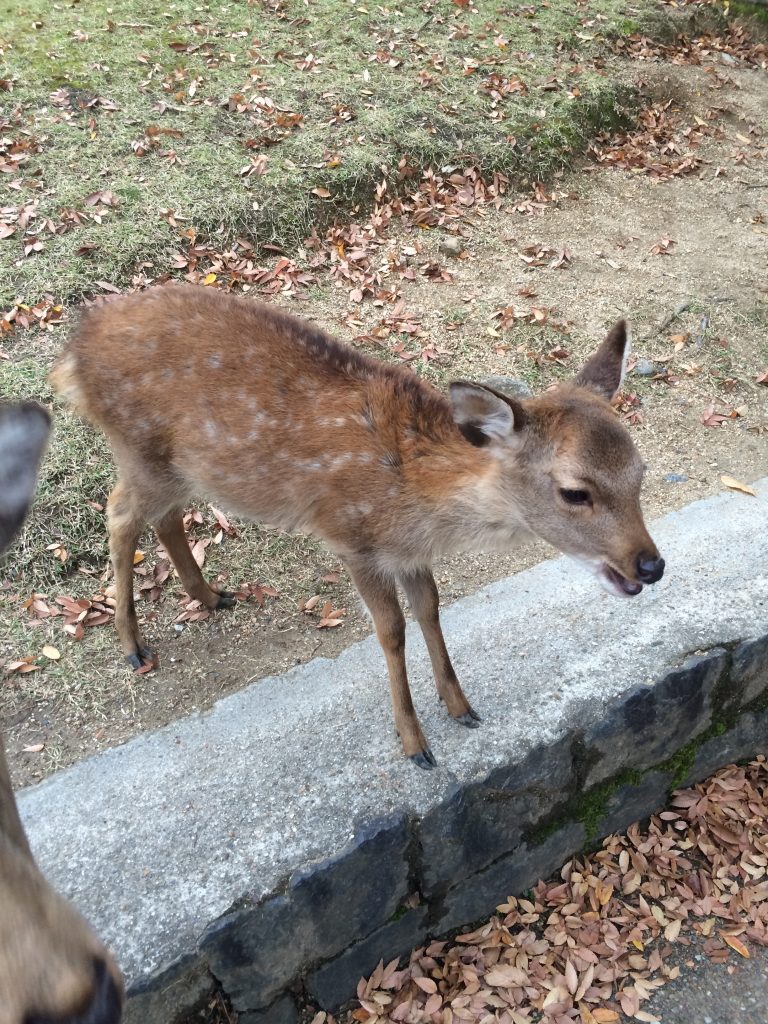
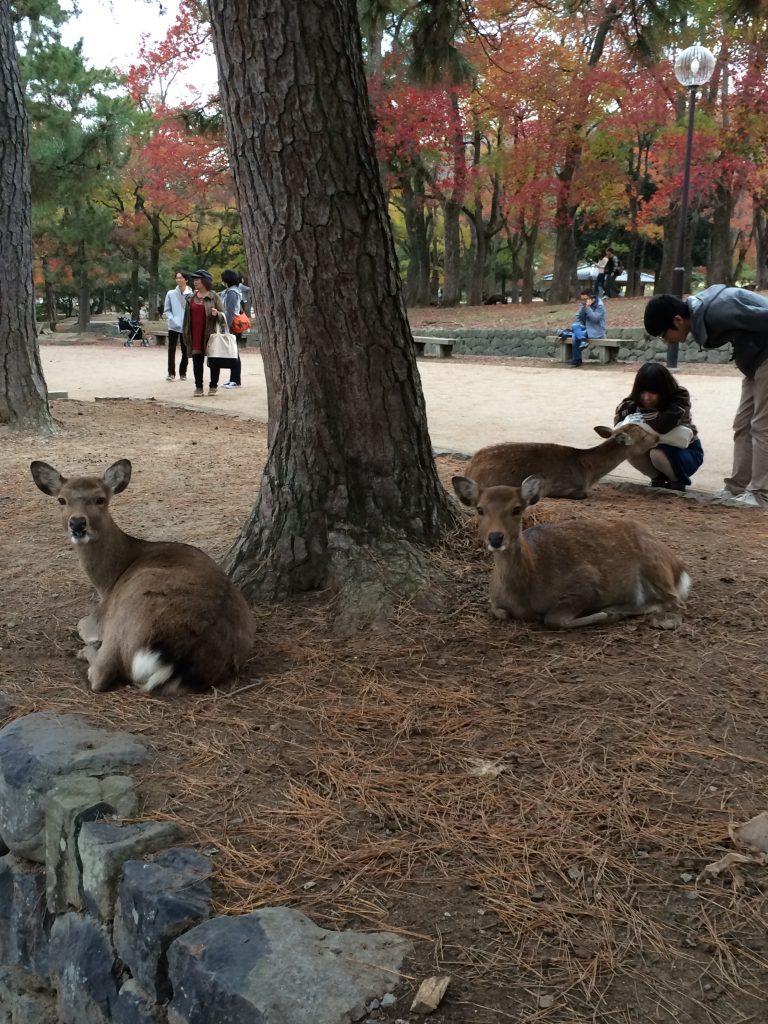
Now, deer in and of themselves, especially shika deer, are traditionally considered sacred in Shinto, and so you’ll see statues of deer every so often in Shinto shrines.
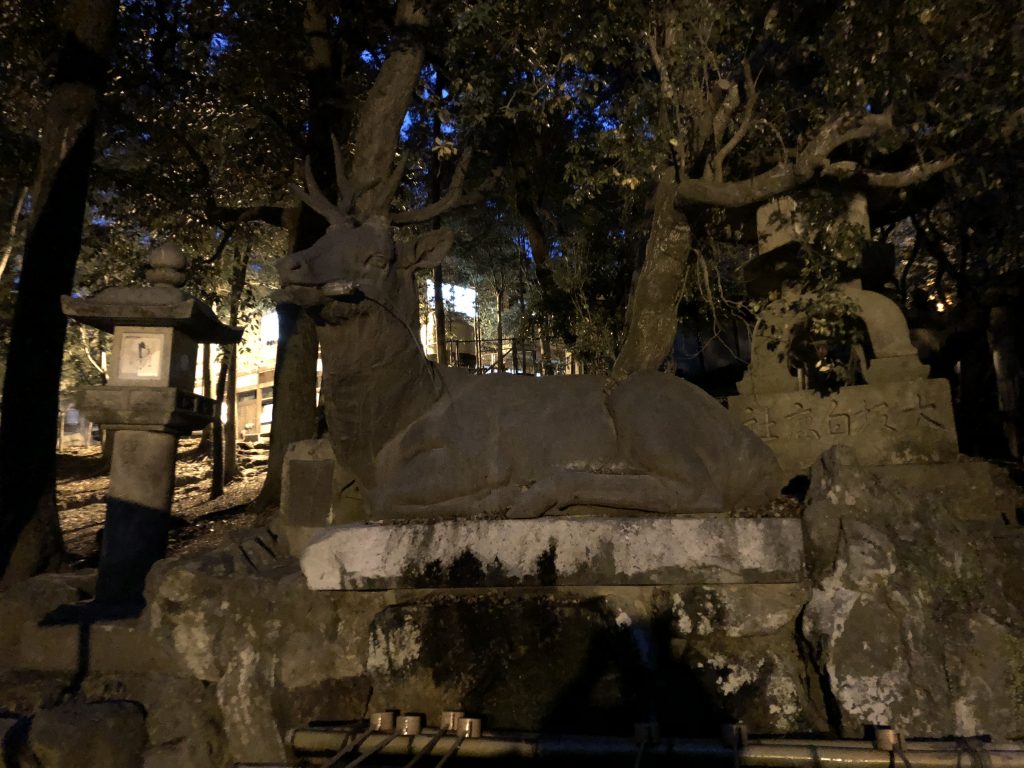
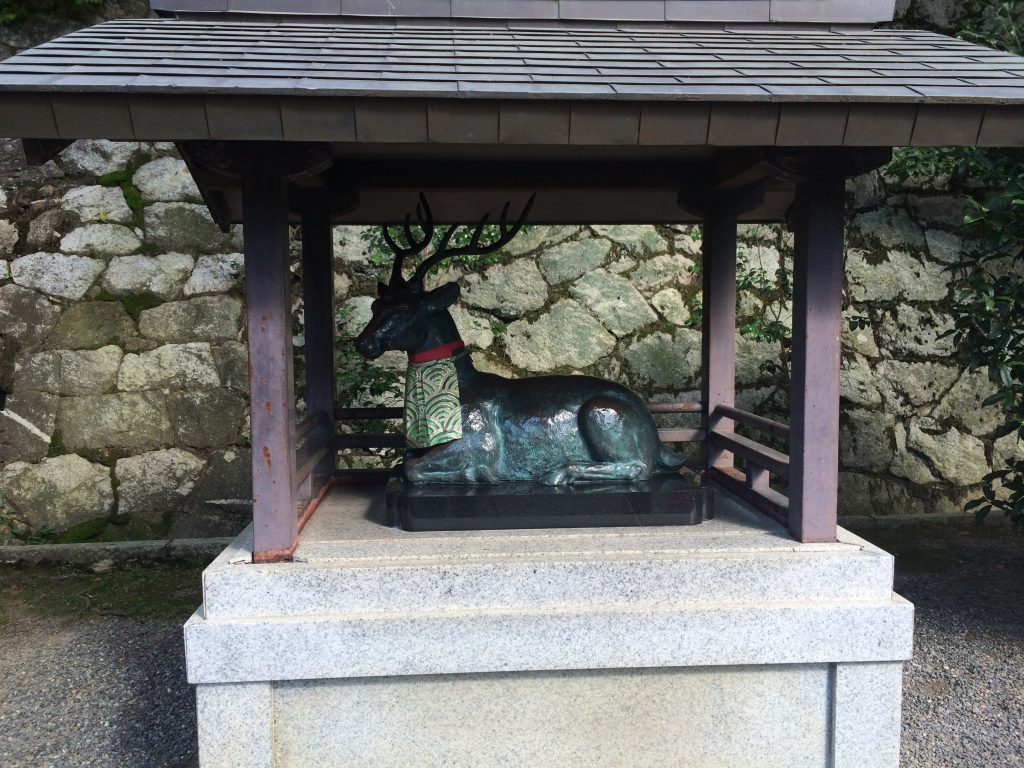
That said, Nara takes all that a lot further. The story goes that Takemikazuchi-no-mikoto, one of the deities enshrined at Kasuga Shrine, came to protect the region while riding a white deer, and after this, deer were considered particularly sacred to this area. After Shinto was removed as state religion post-WWII/Pacific War, the deer were declared a (cultural) national treasure rather than a religious one so they would retain their protected status. That said, you can still see traces of the deer’s religious heritage in shrines around Nara Park, especially Kasuga.
There’s really so much to do in Nara that it would take weeks to do it all, but I’ve personally done Tōdaiji, Kasuga Shrine, Tōdaiji’s annual treasure exhibition, and, of course, Nara Park. All that is clustered in a relatively small section of Nara, so you could probably do it all in one day if you had a head start and a lot of energy.
Just across from Nara Park, you’ll find the treasure hall. This hall, also known as Shōsōin, is associated with Tōdaiji and contains its treasures that aren’t always on display. This isn’t unusual for temples in Japan; major temples often open up their treasure houses for public perusal during the autumn months and the brief opportunity to see what they typically keep locked away should not be missed.
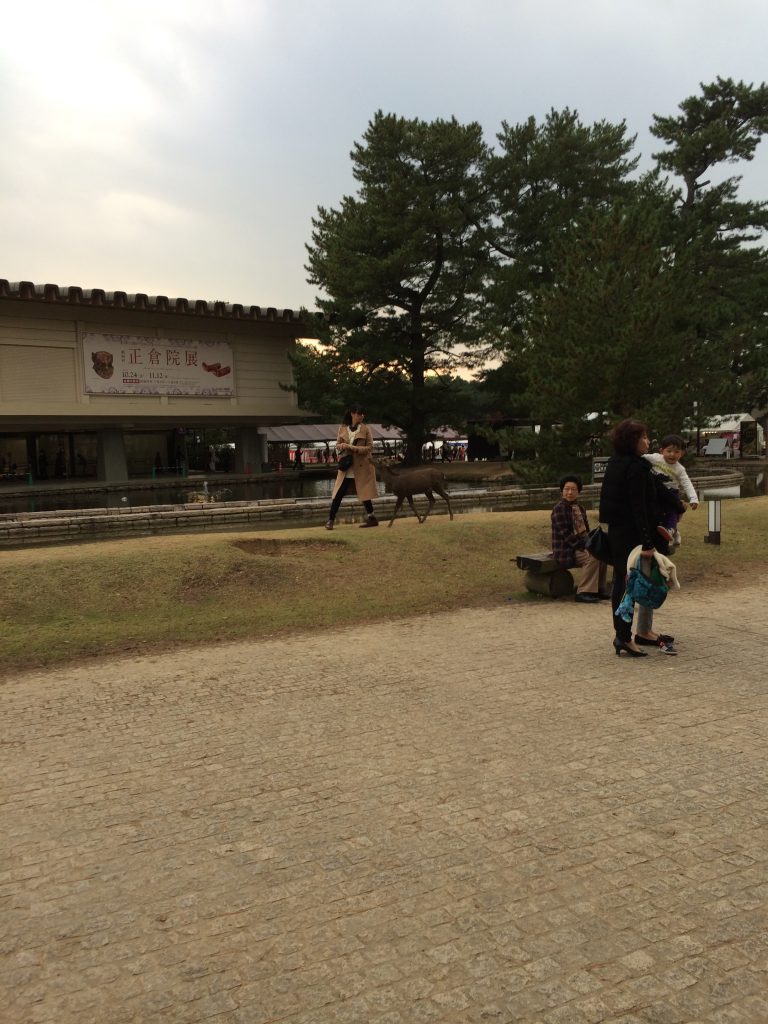
The Shōsōin has literally thousands of historical artifacts, and a selection of those objects is shown once a year for a few weeks. Once upon a time, you had to be literal royalty to see these objects. These days you mostly just have to dodge deer, wait in line, and pay 1100 yen. I went in 2014 and I have to say, it’s really worth the visit. Some of the treasures they have in there are absolutely incredible.
After you’ve spent a couple hours looking over the historical treasures that have been donated to Tōdaiji, you can make your way to the temple itself. The temple complex is relatively easy to find; just walk through the deer park until you get to the enormous wooden gate.
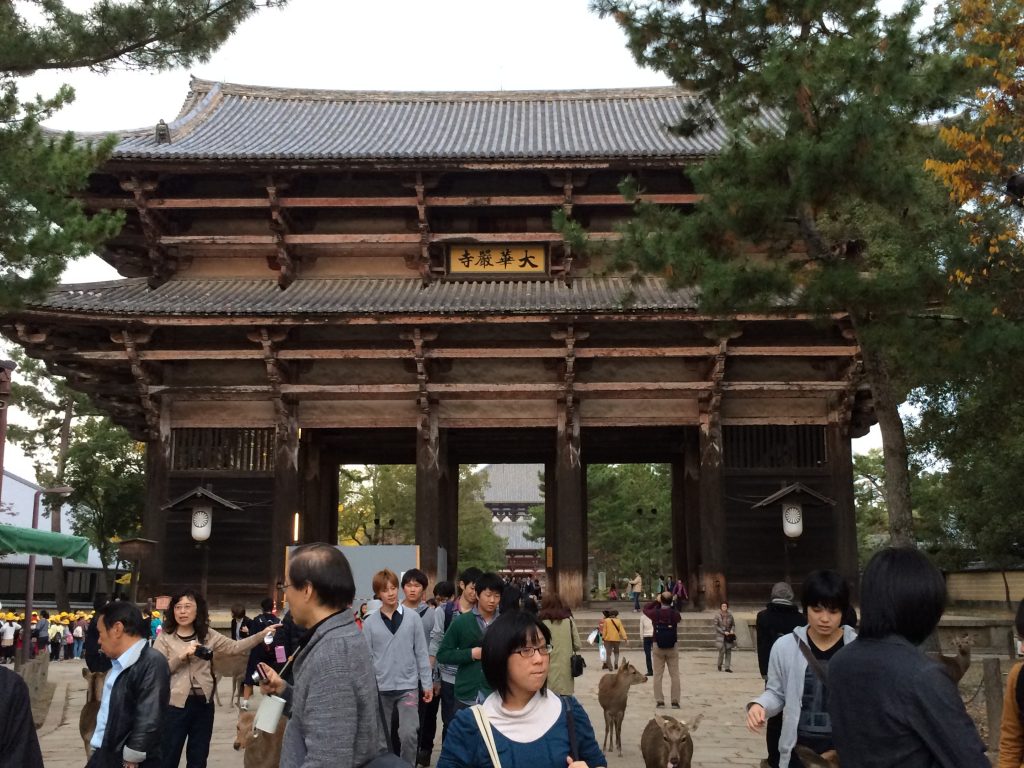
A few more words about these deer: though they can be found all over Nara, they’re clustered most densely in Nara Park. It’s a large green space that has been entirely taken over by deer. This is both a blessing and a curse. If you don’t have any food on your person, the deer will allow you to pass mostly unmolested. That said, if you spend a couple hundred yen and buy a stack of deer crackers? I will pray for you, friend, because The Deer Are Coming.
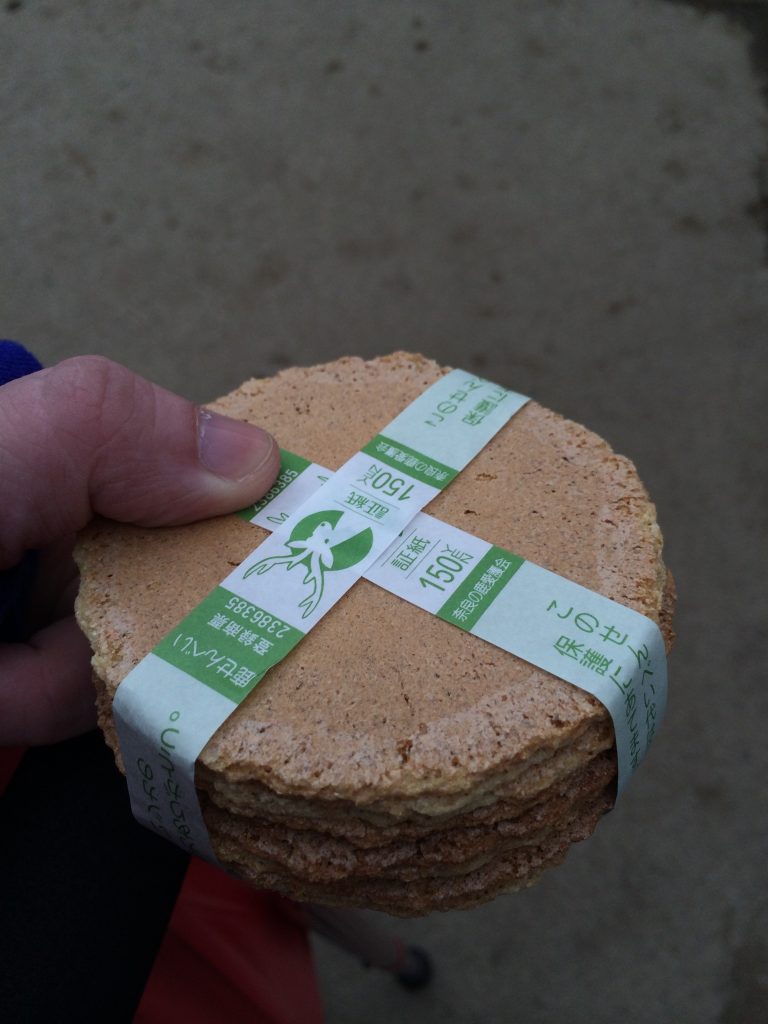
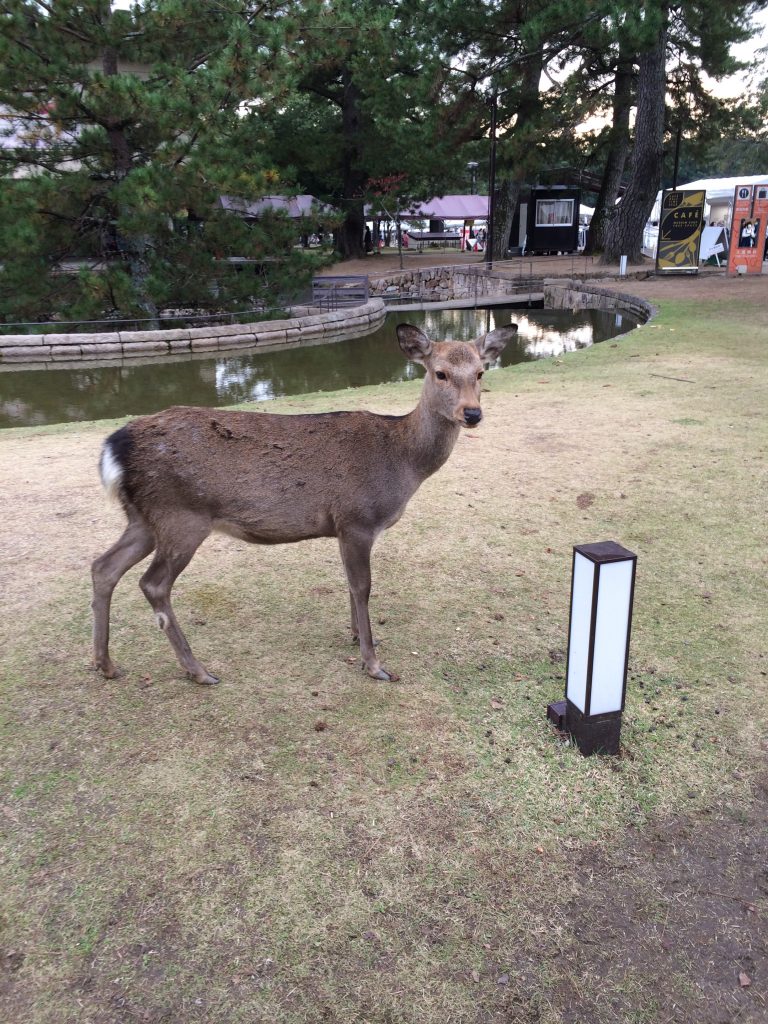
My parents didn’t exactly believe me when I told them the deer are demons. Adorable demons who have learned to bow on command, but demons nevertheless. This lasted about five minutes into our trip, when about twenty tiny deer gathered around my mother and started biting her butt. Yeah. They do that. They stole my father’s guide map and tore it to pieces. They stole deer crackers from my mother’s purse. I won’t lie to you all, I laughed a lot, even as the deer came for me.
(Note: do not eat the crackers. They are meant for deer and are probably made with bugs and grass and stuff. There are signs everywhere telling you not to eat the crackers, but I always see at least one teenage boy eat one on a dare and then start wailing. So heads up, I guess.)
There are honestly thousands of deer in Nara, and you will pass hundreds of them even if you just stick to the main path to Tōdaiji. There’s a reason everyone loves these tiny demons, though. They’re just so darn cute and at times really affectionate. They are just very, very spoiled.
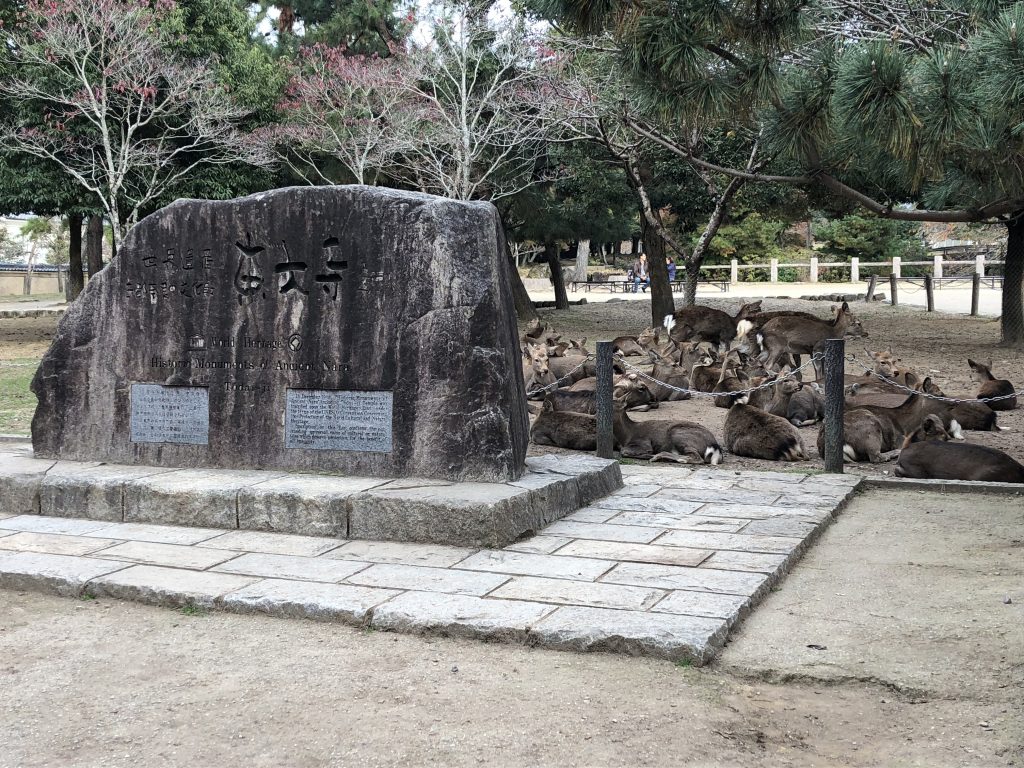
Because we are now approaching the gate of Tōdaiji (aka, the boundary between temple and deer extravaganza) I’ll tell you another little fun fact about Nara. It has two competing mascots. Many cities, organizations, companies, etc. in Japan have adorable mascots that are there to advertise, sell merch, and inform the public about important topics. Tōdaiji has two, the terrifying Sento-kun and the adorable Shikamaro-kun.
(Look, I never claimed to be free of bias.)
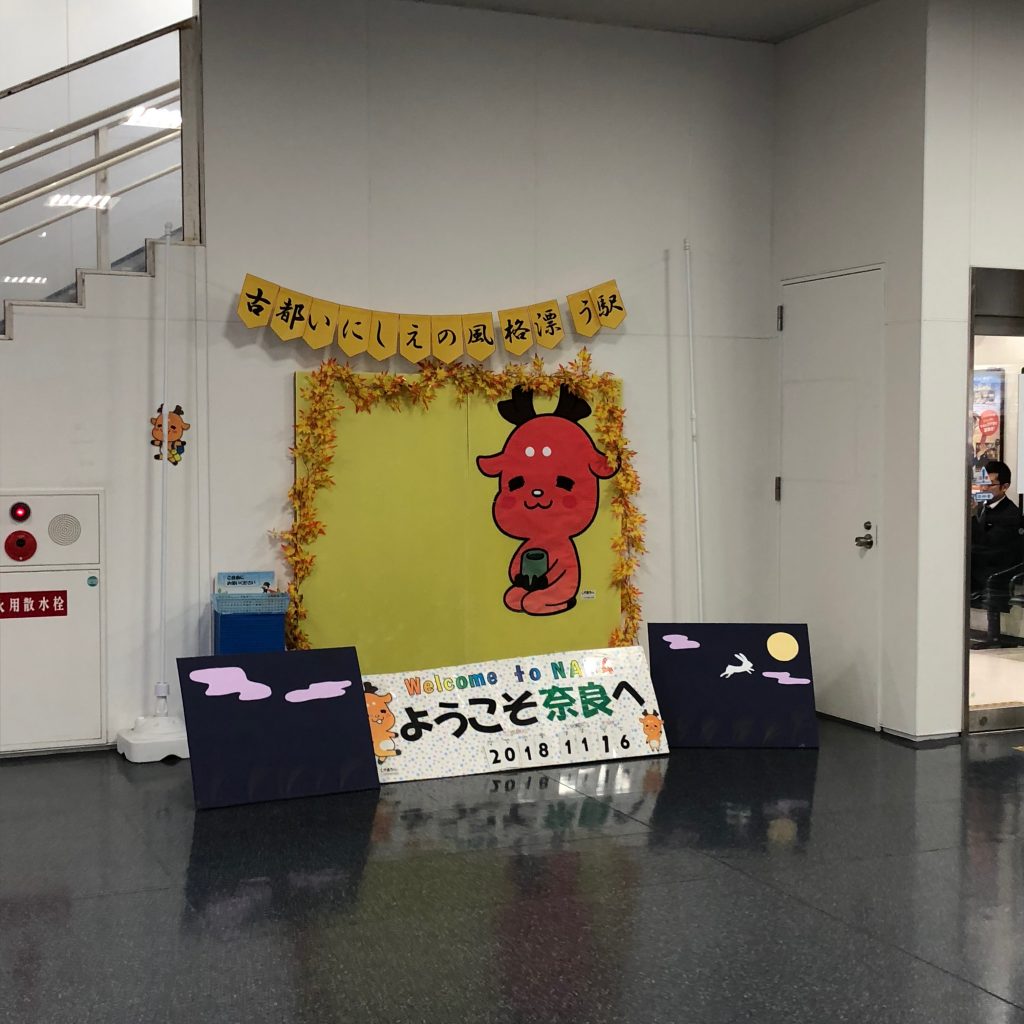
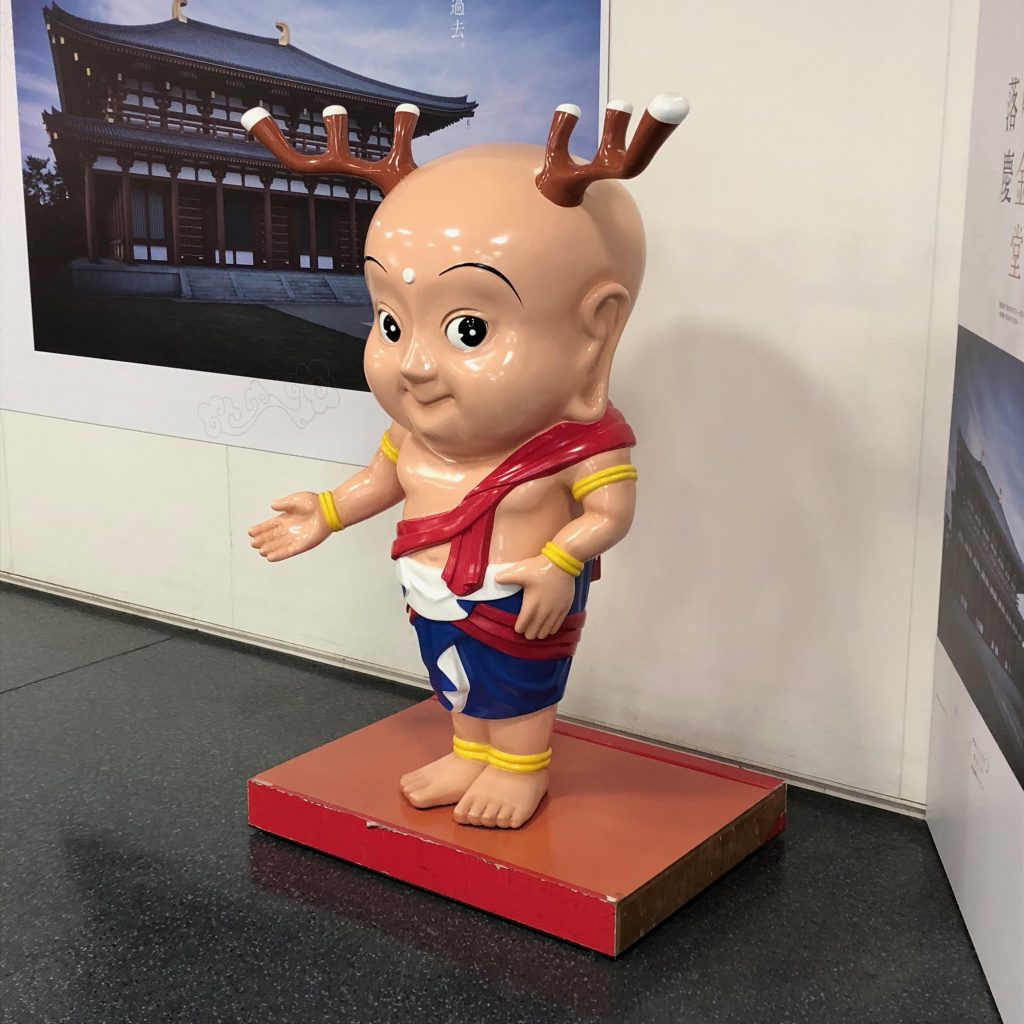
Sento-kun is a bit of a controversial mascot. Some people, like me, find his creepy Buddha baby face to be… disquieting. Others (particular older Japanese folks) go further and find him to be fully sacrilegious. He was created as a nod to the incredibly famous daibutsu (great Buddha statue) at Tōdaiji, but a lot of people think that the historical Buddha just shouldn’t be used to sell t-shirts.
Shikamaro-kun is a rival mascot that’s been really gaining traction in recent years. Between my two visits in 2014 and 2018, signs, merch, sightings, etc. just exploded. And I don’t mind! Because Shikamaro-kun is adorable and not creepy at all!
Anyway, Tōdaiji. Tōdaiji, like most Japanese temples, has been destroyed and rebuilt a few times. The current building dates back to 1709, but you can see models of the previous incarnations of the temple inside the main hall. The initial building was created around 750 CE, and the daibutsu was completed in 751. So though the outer building is only a few hundred years old, the statues on the grounds and inside of it are positively ancient.
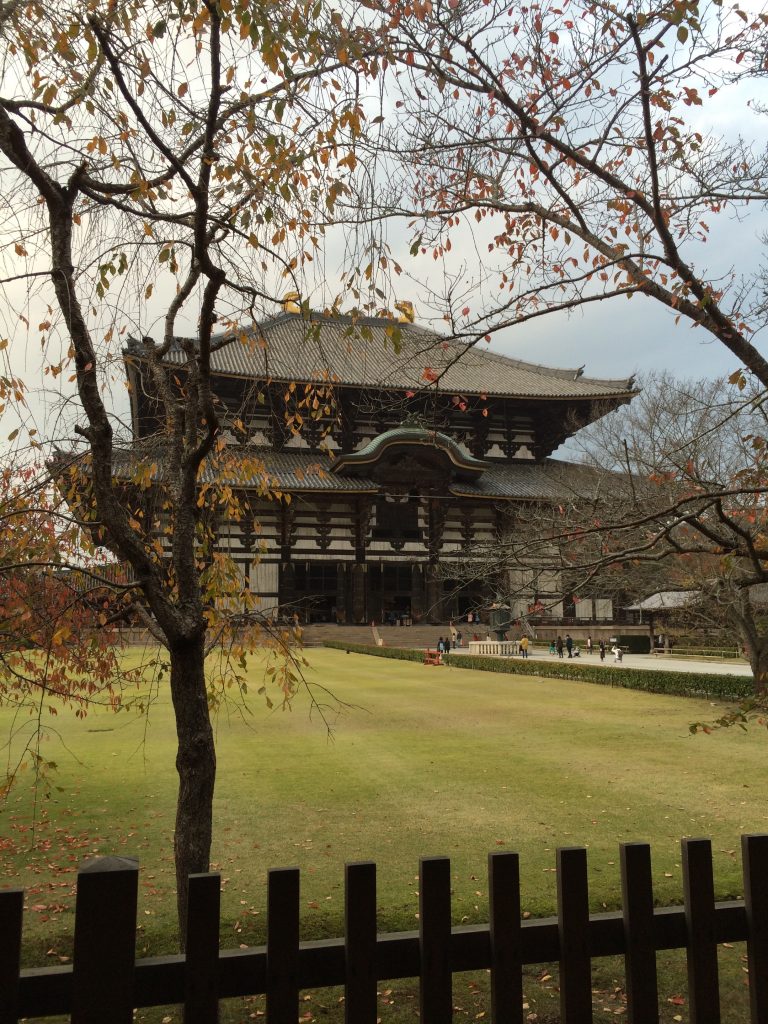
Most people just come for the daibutsu, but I’m here to tell you that the rest of the grounds are pretty magnificent as well. The main hall is enormous, easily the largest wooden building I’ve ever seen. The ancient gates are also huge, with great a and un statues to guard the entrance. There are seriously multiple National Treasures in this temple complex, so it’s worth putting aside a good amount of time to look around. Plus, y’know, everything there is huge. It does take a while to get around.
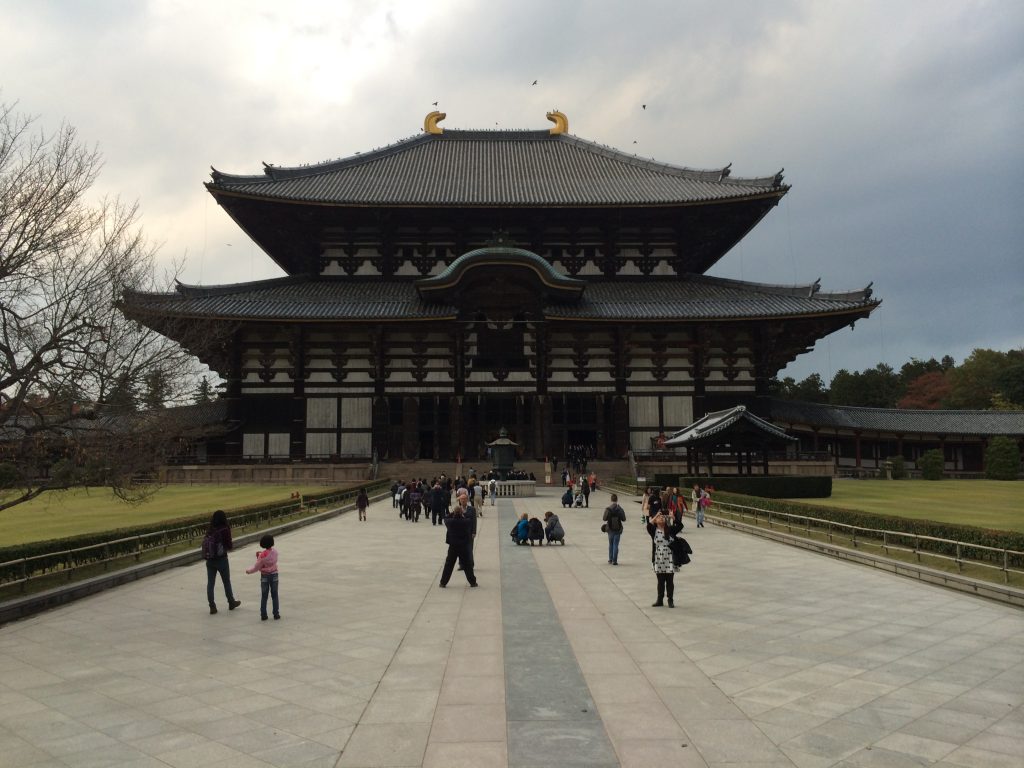
The daibutsu, though. The daibutsu. I can’t quite explain the reaction I had the first time I walked in and saw that statue. I’d heard that there was a big Buddha statue in there, of course. But there’s hearing big and there’s seeing big, and it is big. It’s one of the only times in my life that I’ve just stopped in my tracks and stared. Each one of the Buddha’s huge fingers is the size of an actual human being, and I’m here to tell you right now that there is no photo in existence that fully captures the size and grandeur of the Buddha statue found at Tōdaiji. You truly have to see it to believe it.
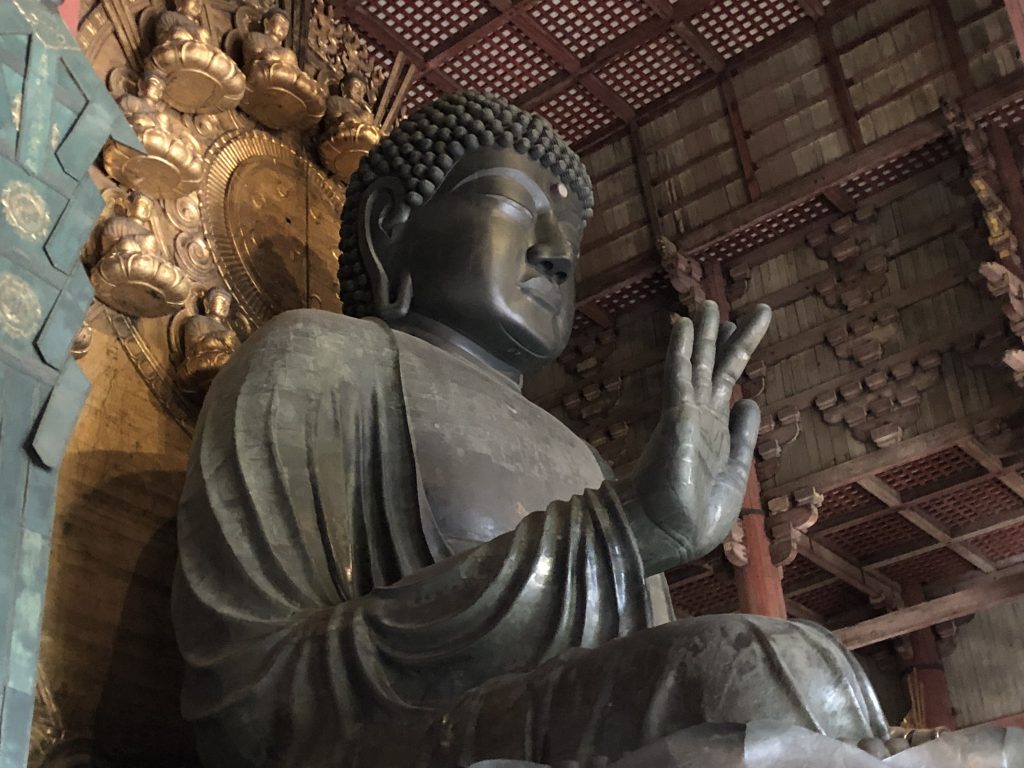
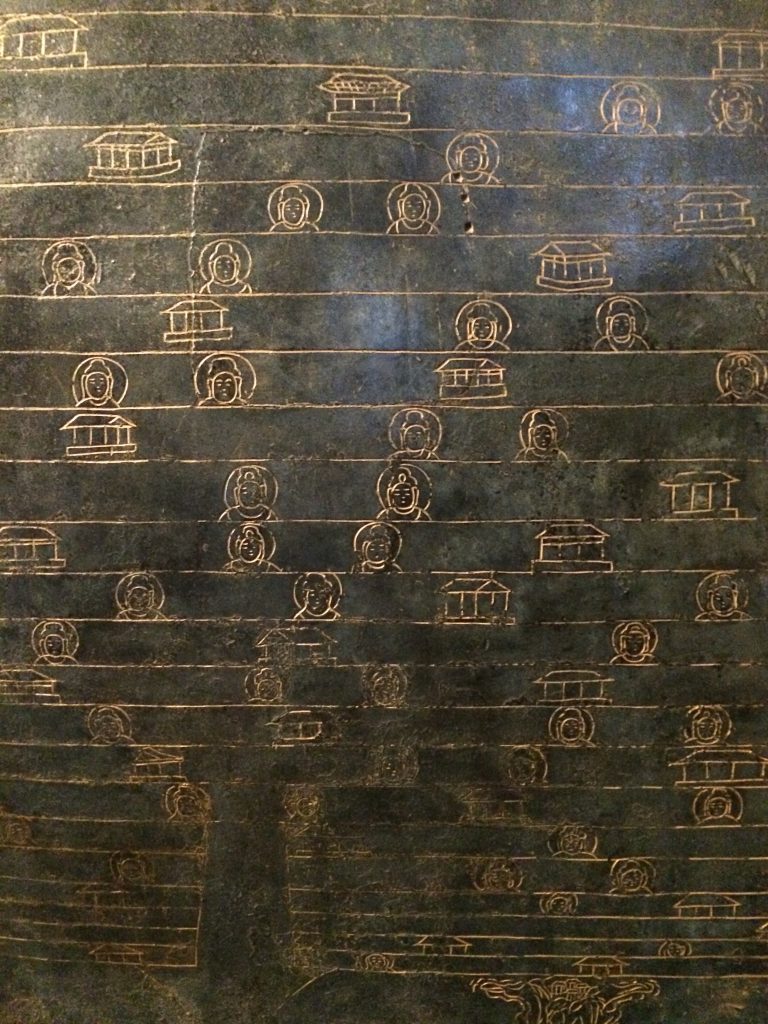
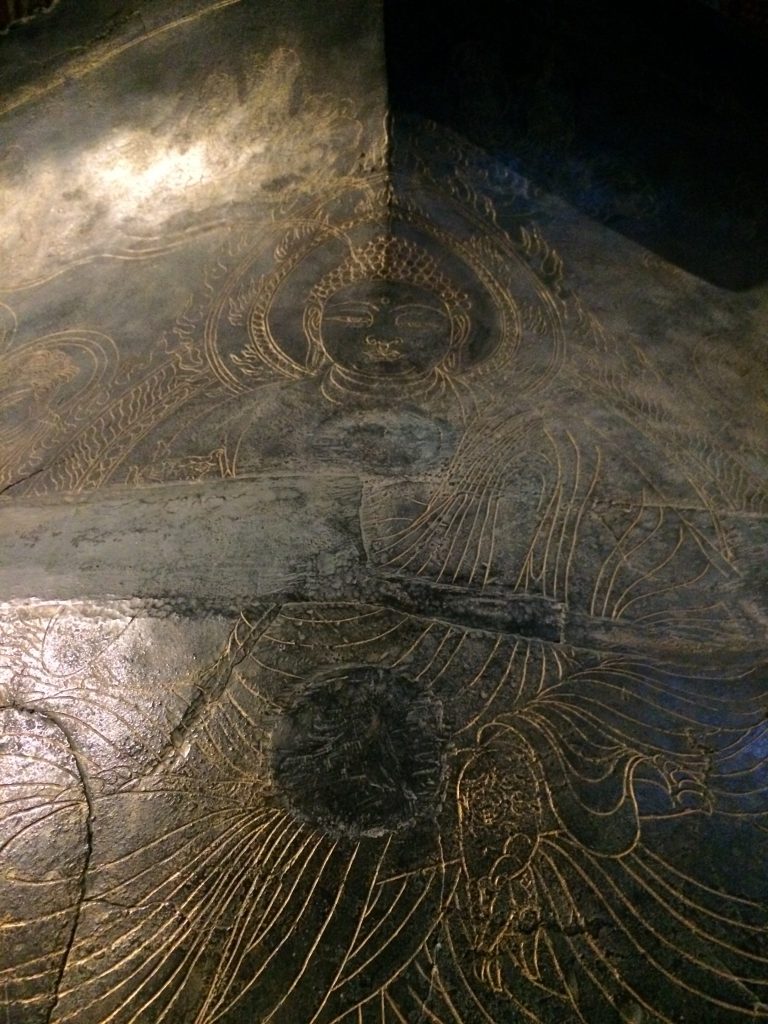
There are other statues in there, too. In any other temple, I’d call each one of them huge and spectacular. But after the daibutsu, well. Who can follow that act?
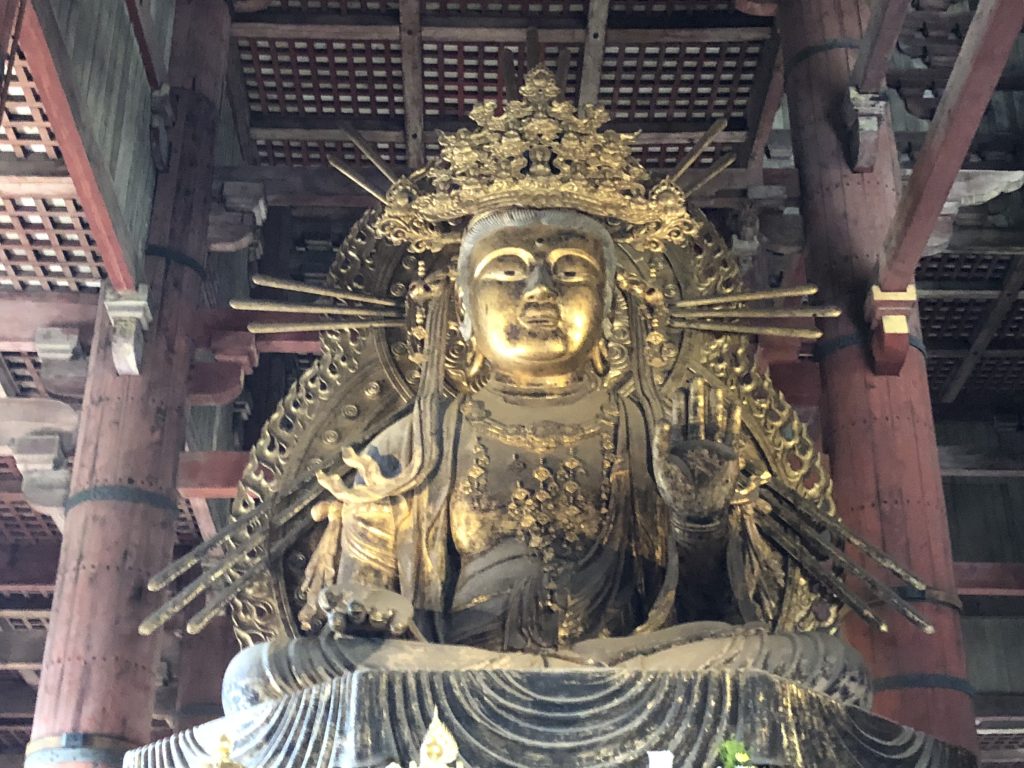
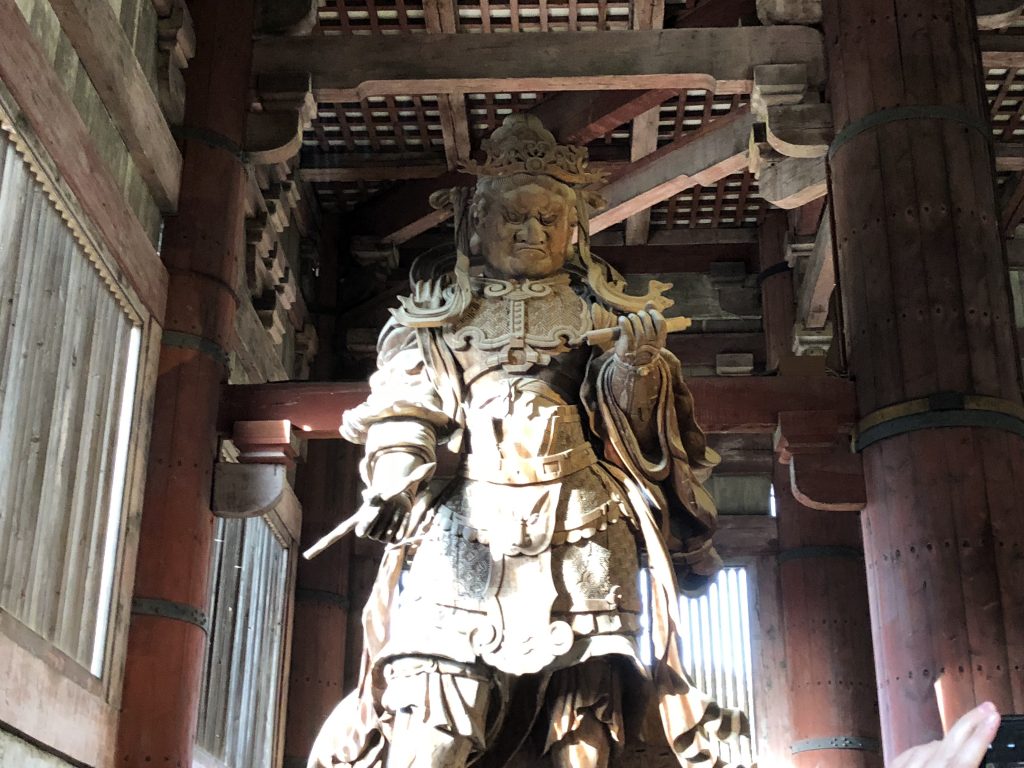
After you get over the splendor of the daibutsu and you’ve seen the other statues, after you’ve inspected the little architectural models and gotten your goshuinchō stamped, you’ll see a huge pillar inside the main hall that has a big ol’ hole in it. Well, “big”. It’s said that you’ll have good luck if you can crawl through this hole, and you always see people trying. That said, unless you’re very tiny (like, I’m talking possibly a child), it’s going to be a very tight fit. I remember looking at that pillar for the first time when I was 24 years old and thinking “god, I’m way too old to try and fit through that thing”. So I didn’t. Bad luck for me, I suppose.
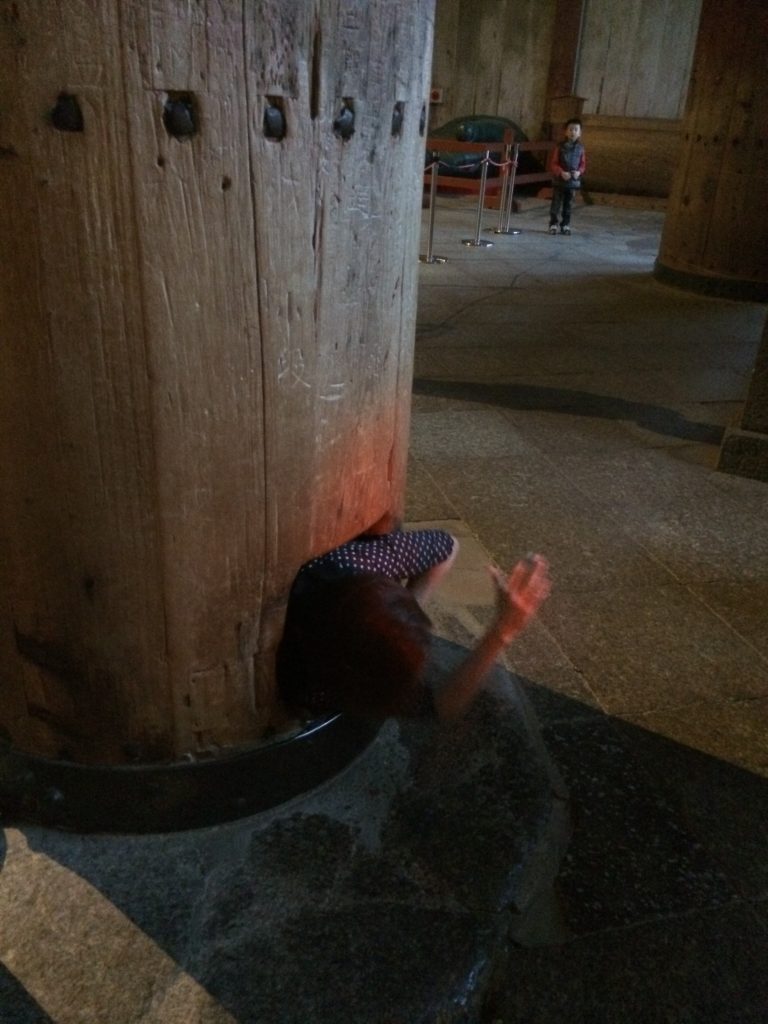
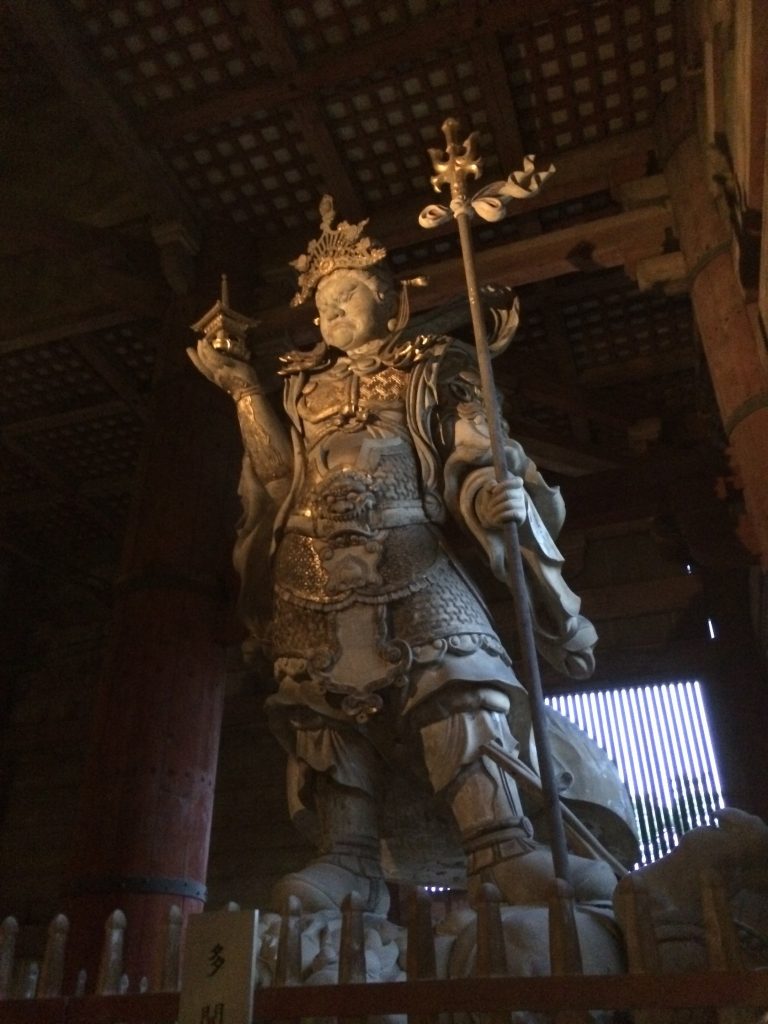
One last note about Tōdaiji because my father specifically asked me about it — there’s a statue just outside the entrance/exit of the main building that looks… well, frankly, I think his exact words were:
“WHAT IS THAT TERRIFYING RED STATUE OUTSIDE?”
It’s a statue of Bodhidharma/Daruma! He’s regarded as the man who brought Zen Buddhism to China, and thus facilitated its popularity in Japan. There’s this truly horrifying story that he used to meditate by wall-gazing. And he just didn’t move or blink or anything, which caused his arms and legs to wither away. There’s another story that once he accidentally fell asleep, so he then cut off his own eyelids so it’d never happen again. IN RELATED NEWS, have you ever seen a daruma in Japan? Yeah, that’s a monk whose arms, legs, and eyelids are gone.
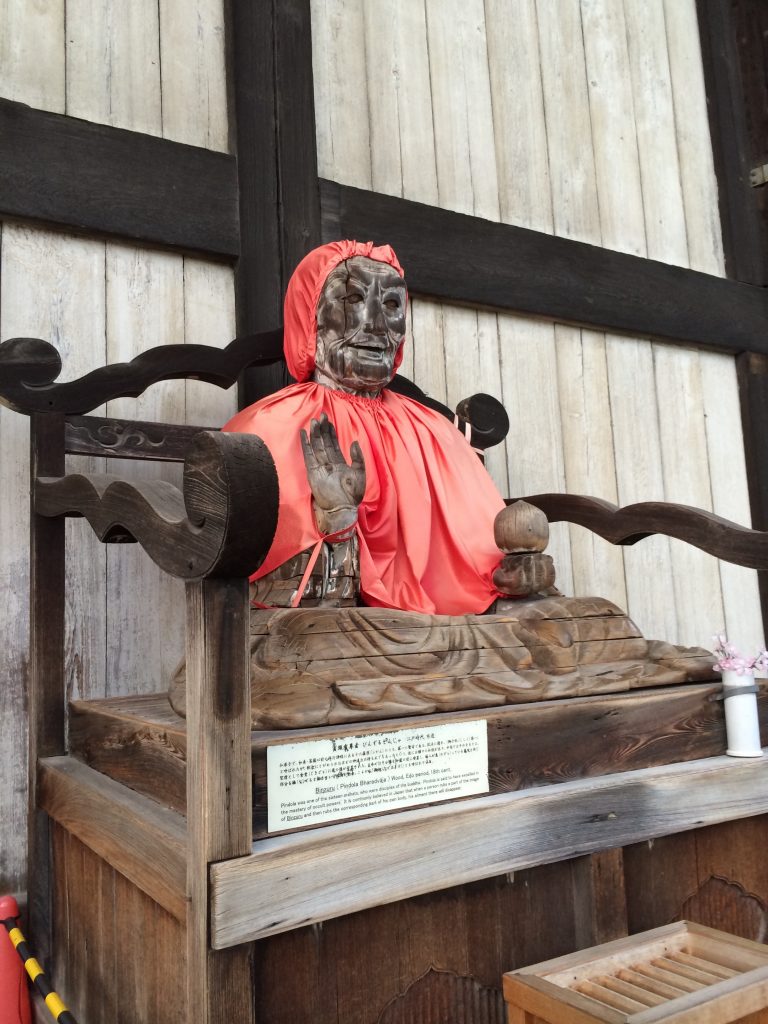
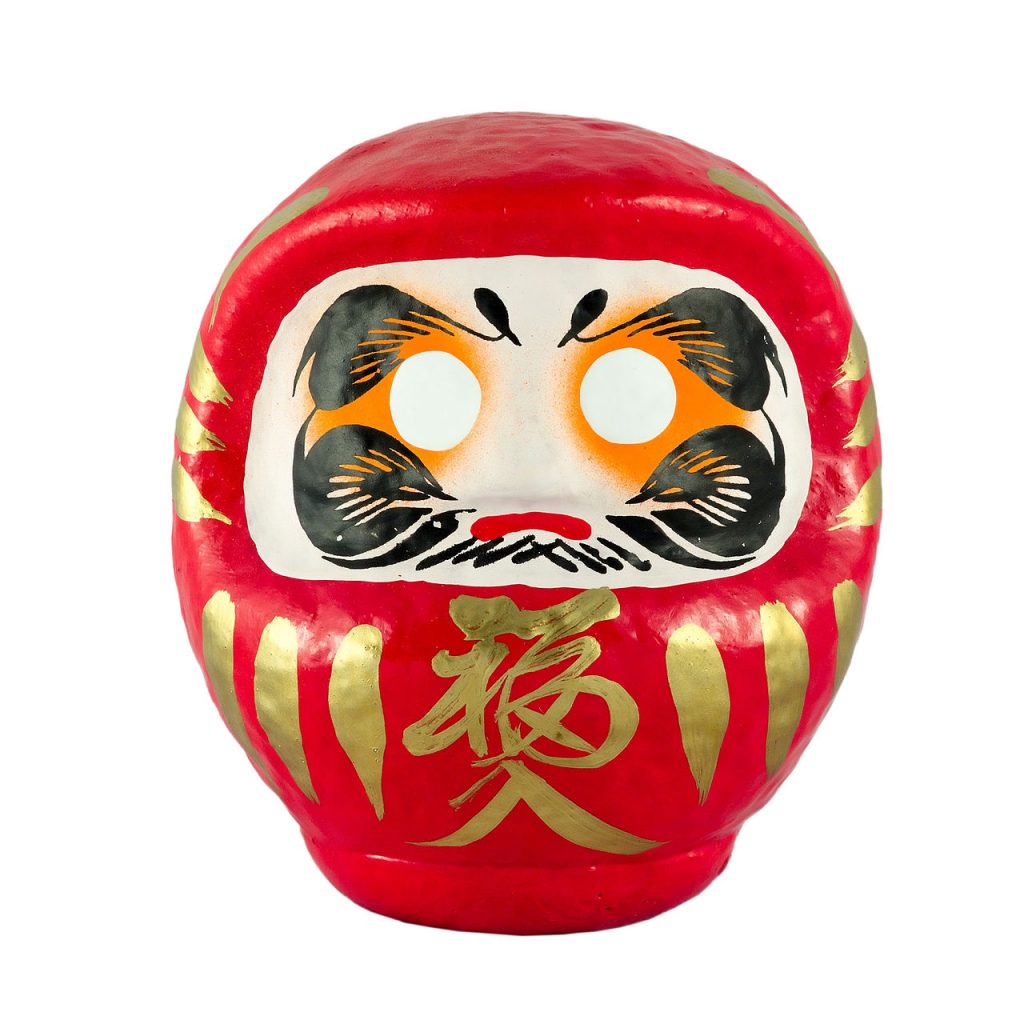
A daruma doll. You fill in one eye when you make a wish, then the other once it comes true.
(Stock photo.)
In this case, though, it’s a pretty simple case of sympathetic magic. (In layman’s terms, when you do some kind of ritual on one thing in order to affect another thing.) With this statue, you’ll see people (especially elderly people) rubbing the statue on the part of the body that’s been hurting them. It’s said to work as a prayer to Daruma that will help ease your pain. His knees are rubbed practically smooth, possibly because you have to climb so many steps to reach him. We all have sore knees here.
After we left Tōdaiji, dad and I decided to walk to Kasuga Shrine. Now… it’s a long walk. Probably a longer walk than either of us realized just looking at the map. So there’s that. But it’s also a nice walk, for all that it’s mostly uphill. You’ll pass some smaller shrines and temple complexes, as well as a famous Kofun-era key-shaped burial mound. And even as you get further and further from the crowds of Nara, you’ll still see deer. They’re less mean up here, probably because they’re less accustomed to tourist handouts. Many of the deer sleep at Kasuga Shrine, so some of them were probably getting ready to turn in for the night.
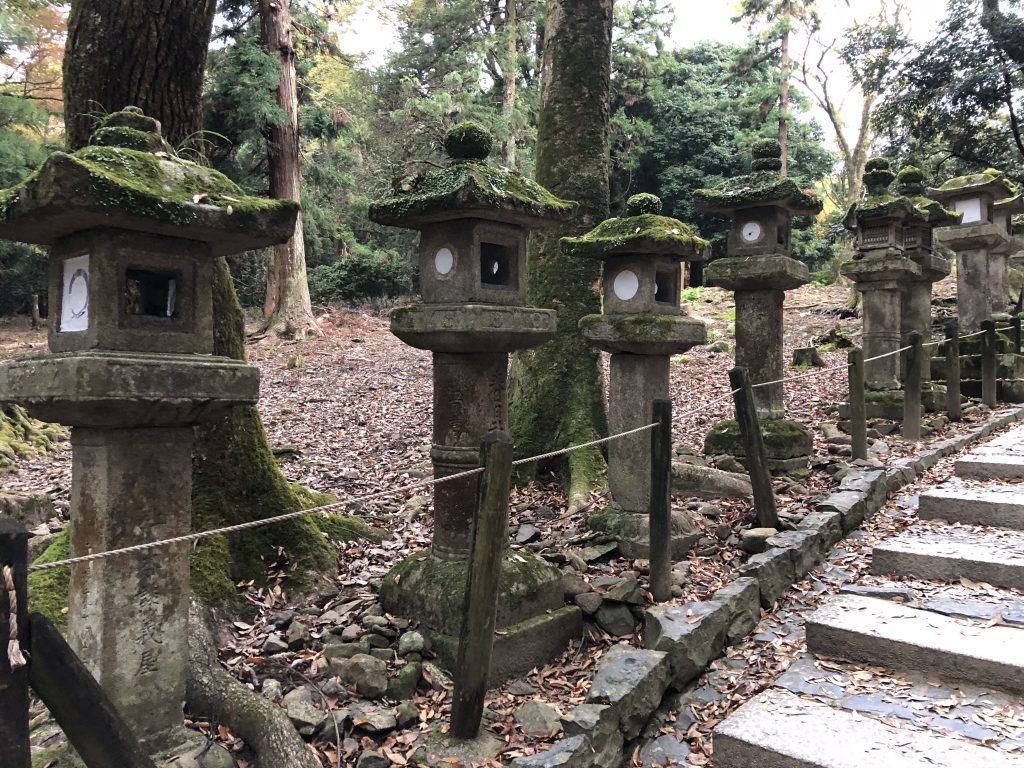
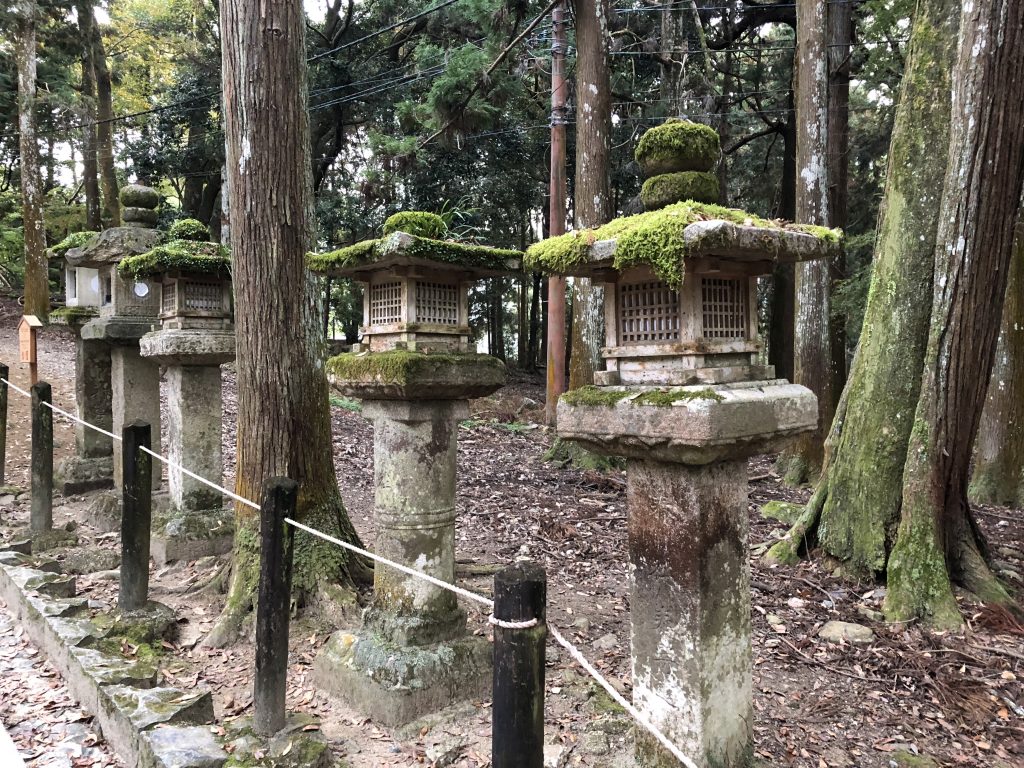
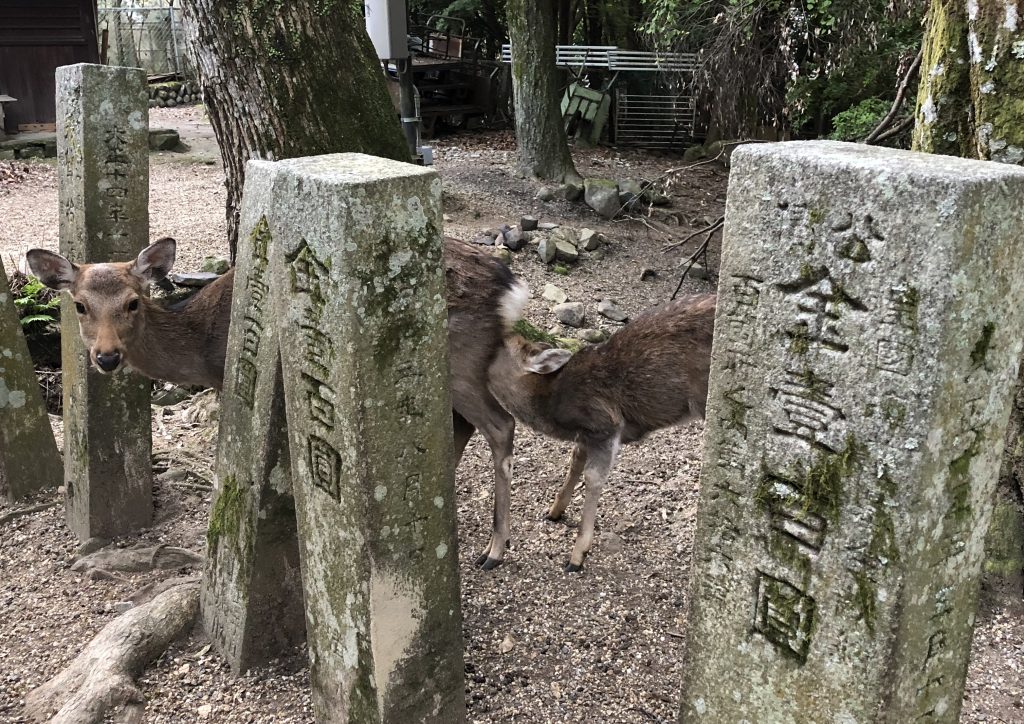
We eventually got to Kasuga not long before closing, and a word of warning: because we took so long walking there, we did miss the last bus back, which leaves like the minute the shrine closes. So either leave extra time or be prepared to walk back along the main road.
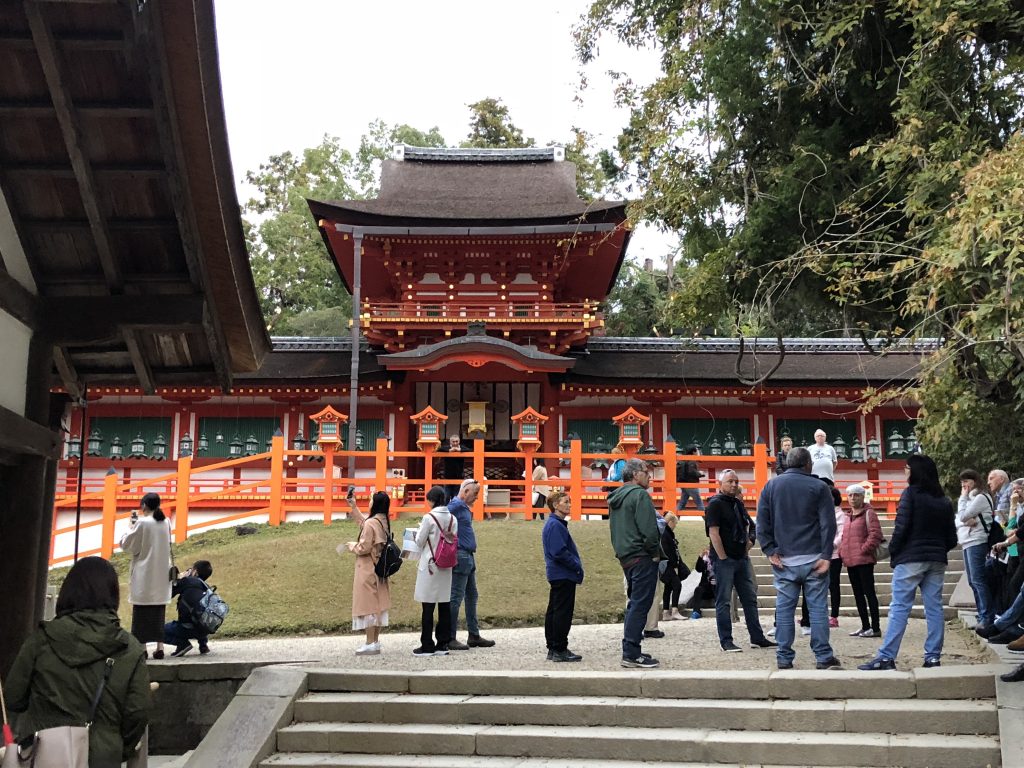
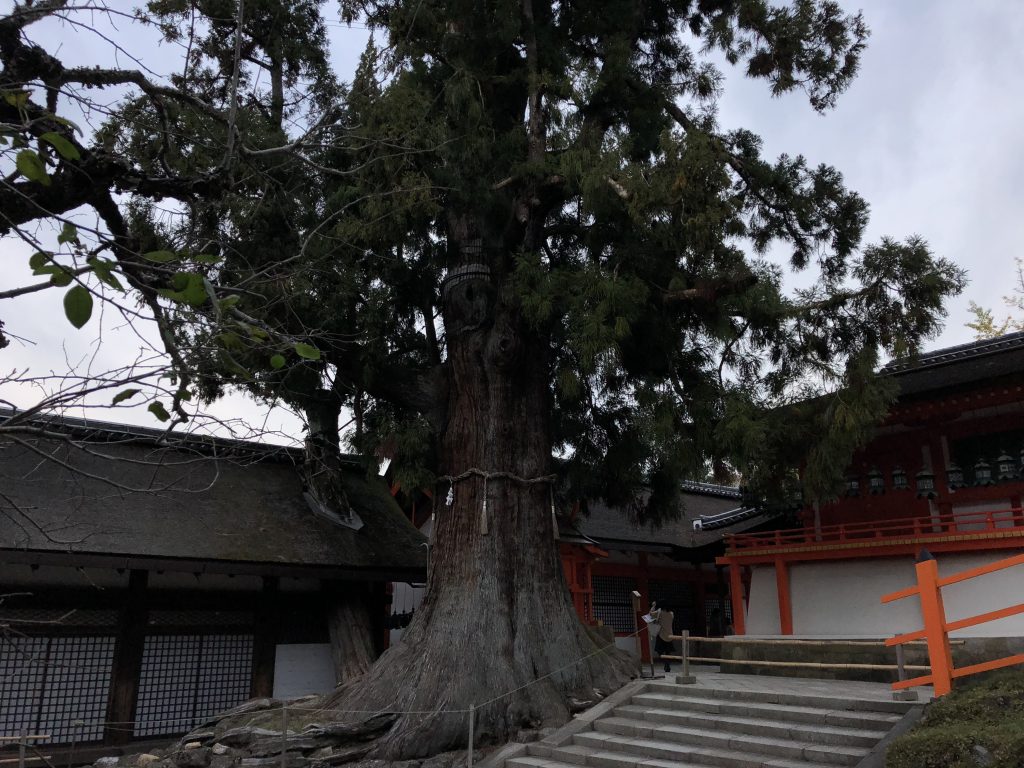
That said, it’s definitely worth the hike. Along with the whole deer thing, Kasuga is very famous for its lanterns. They only light them once a year during a special festival, but they can still be seen unlit through the shrine grounds and they’re still incredibly beautiful. There are literally hundreds of lanterns of all shapes, sizes, and materials; the old stone ones were my favorite.
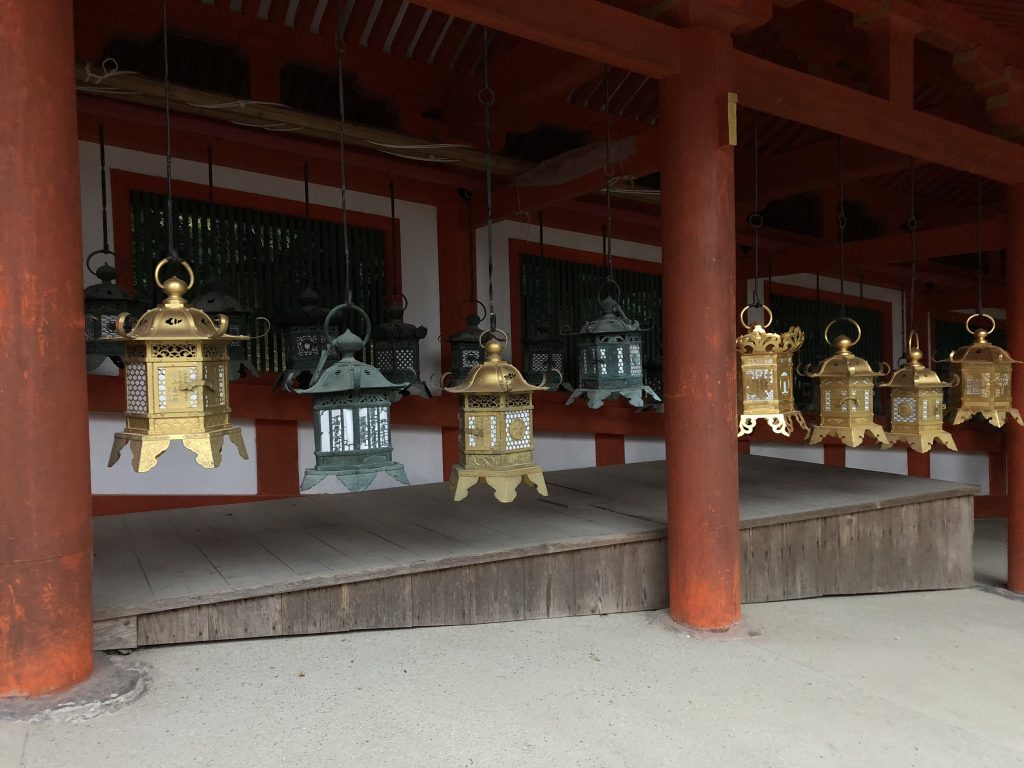
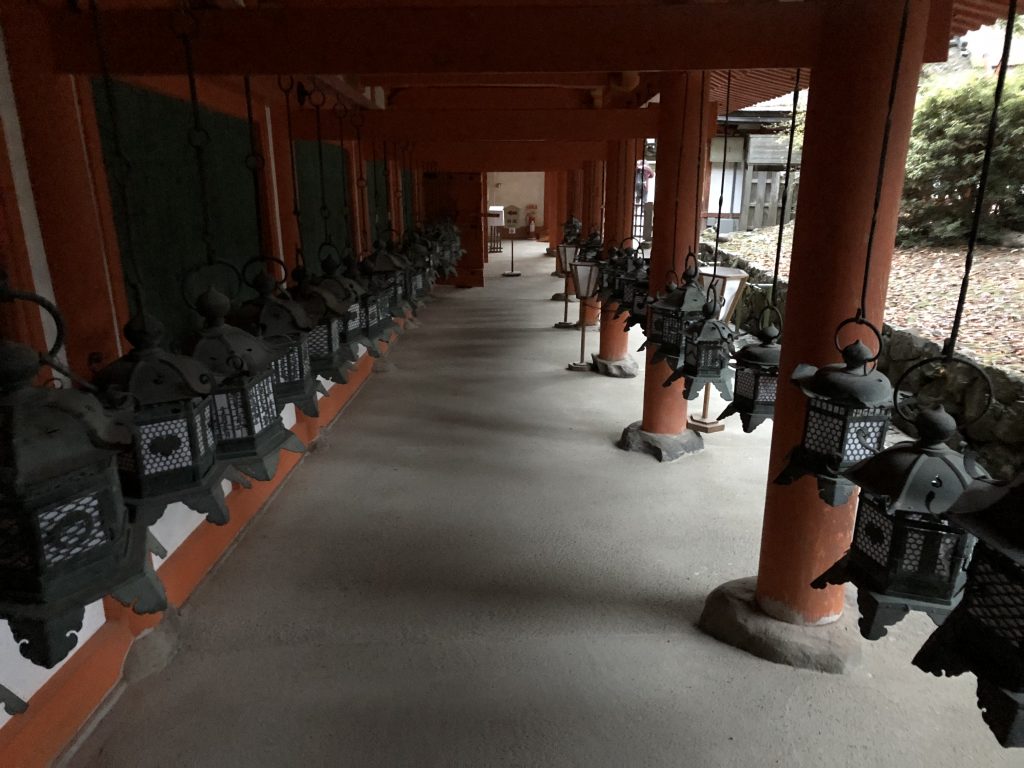
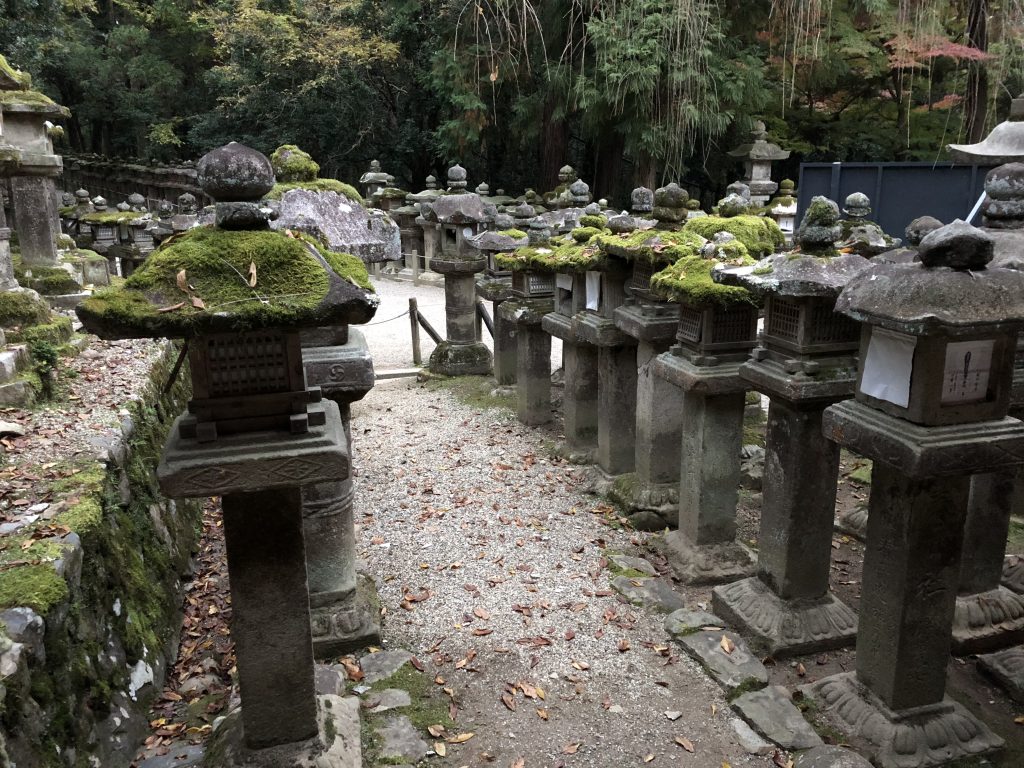
There’s a small room that’s pretty unobtrusive in the back of the shrine, but I’d try to look for it! It’s a recreation of what the shrine looks like when all its hanging lanterns are lit up. It’s very hard to take good photos because it’s all mirrors in there, but it’s also very beautiful in there.
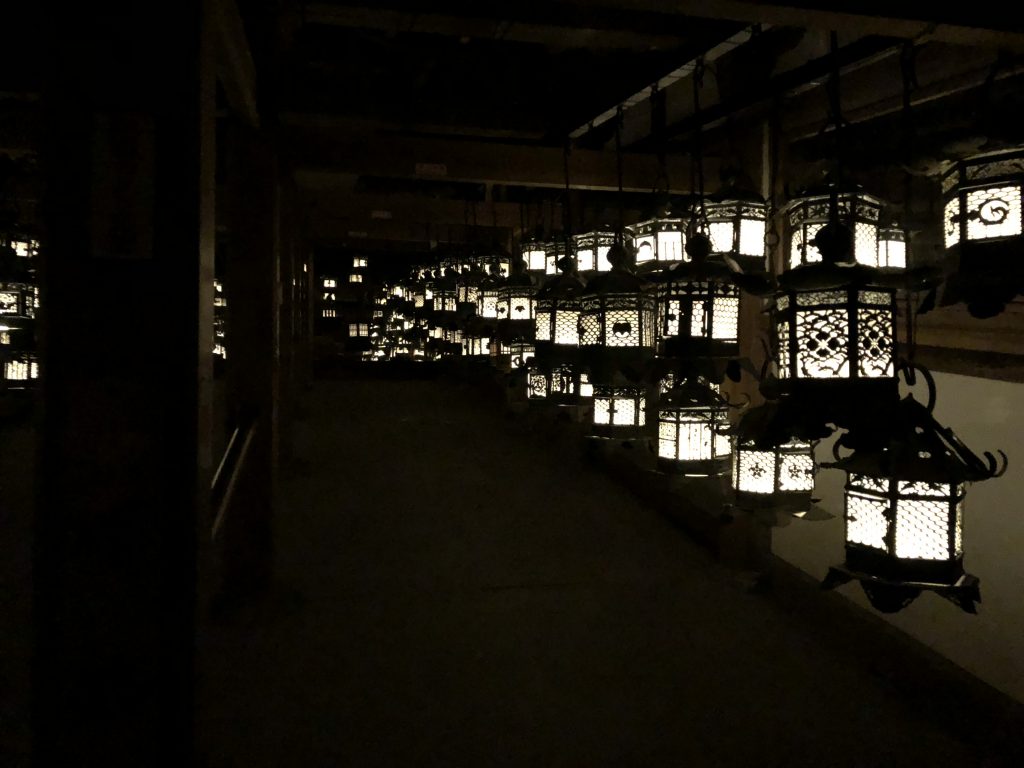
Possibly because we were there so late in the day, it was very quiet at Kasuga Shrine, and it was nice just walking through the rows and rows of lanterns. The grounds themselves are very pretty with quite a few baby deer running around, so it was just a really nice ending to our day.
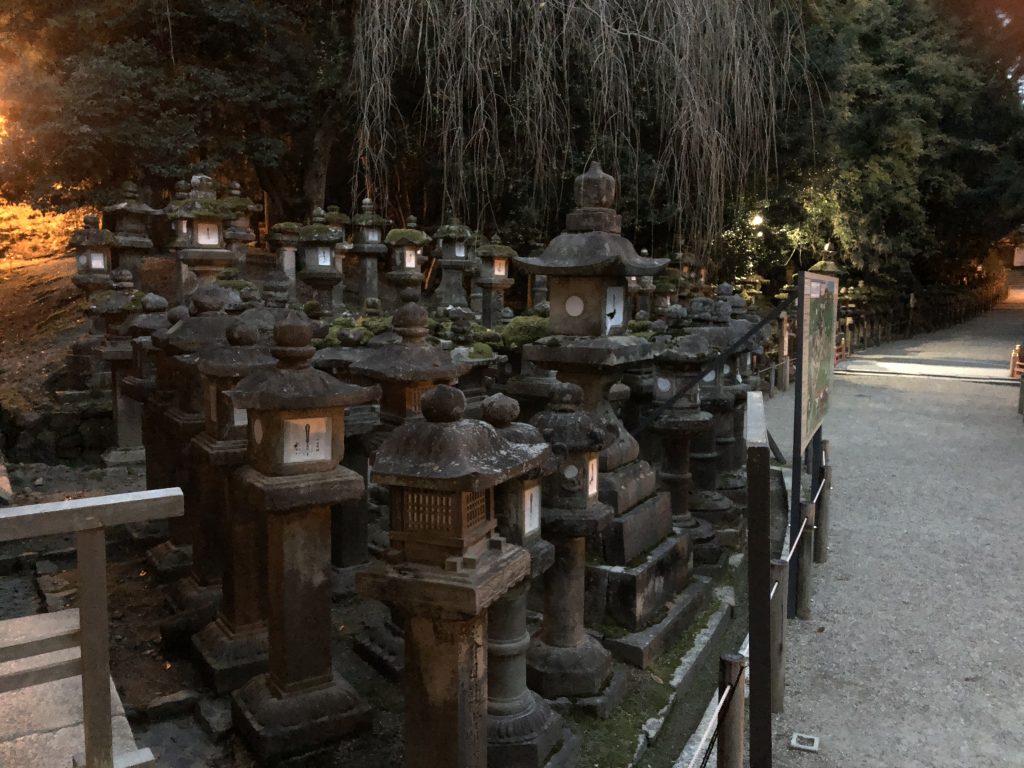
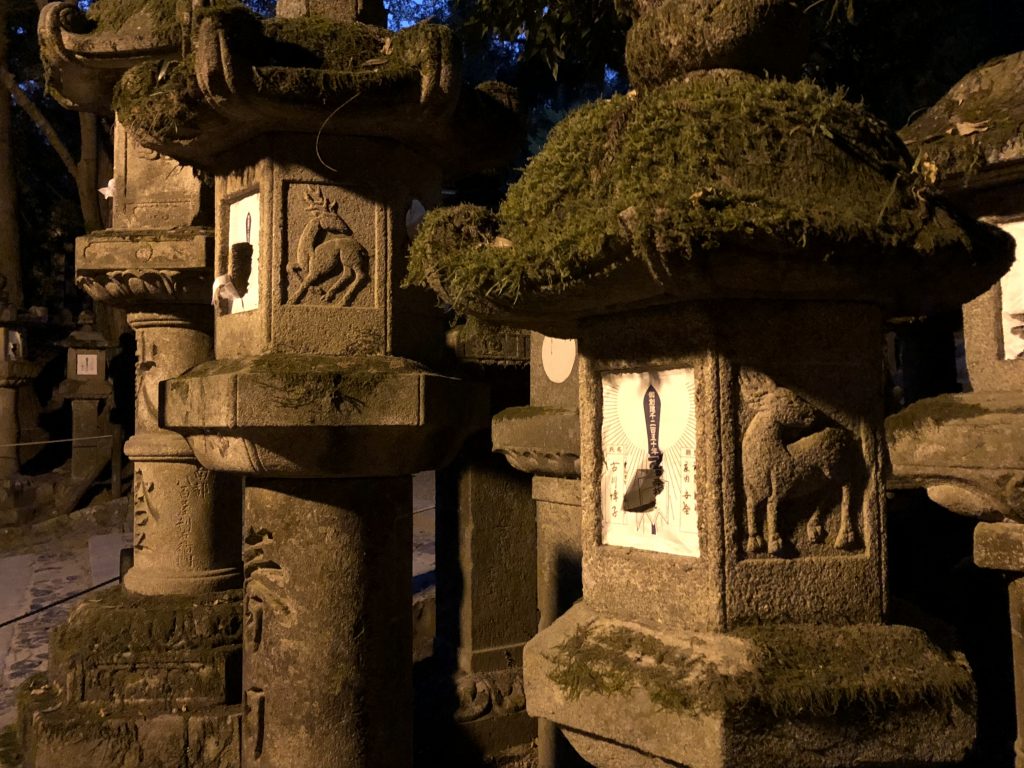
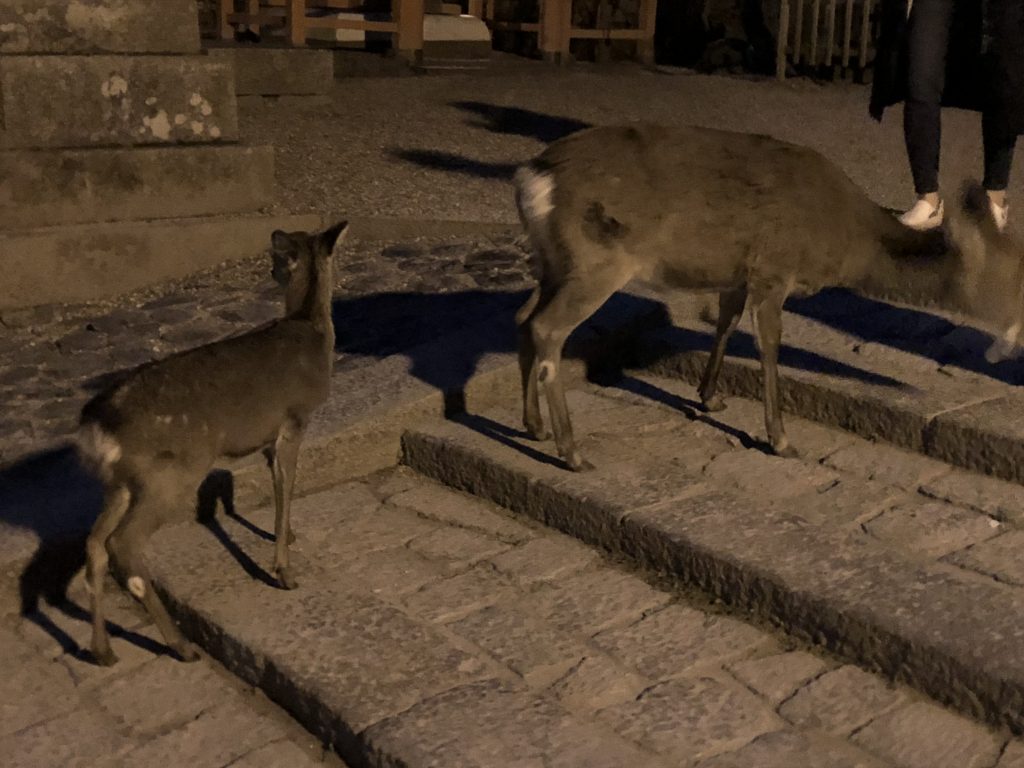
Though Nara’s known as mostly a really, really nice day trip, you could easily spend several days exploring the parks, temples, shrines, museums, palaces, and tombs found throughout the old city. Petting the deer might involve taking your life into your hands, but like. Let’s all be real with each other here. How often do you get the chance to pet and feed wild deer? It’s just a really neat experience all around.
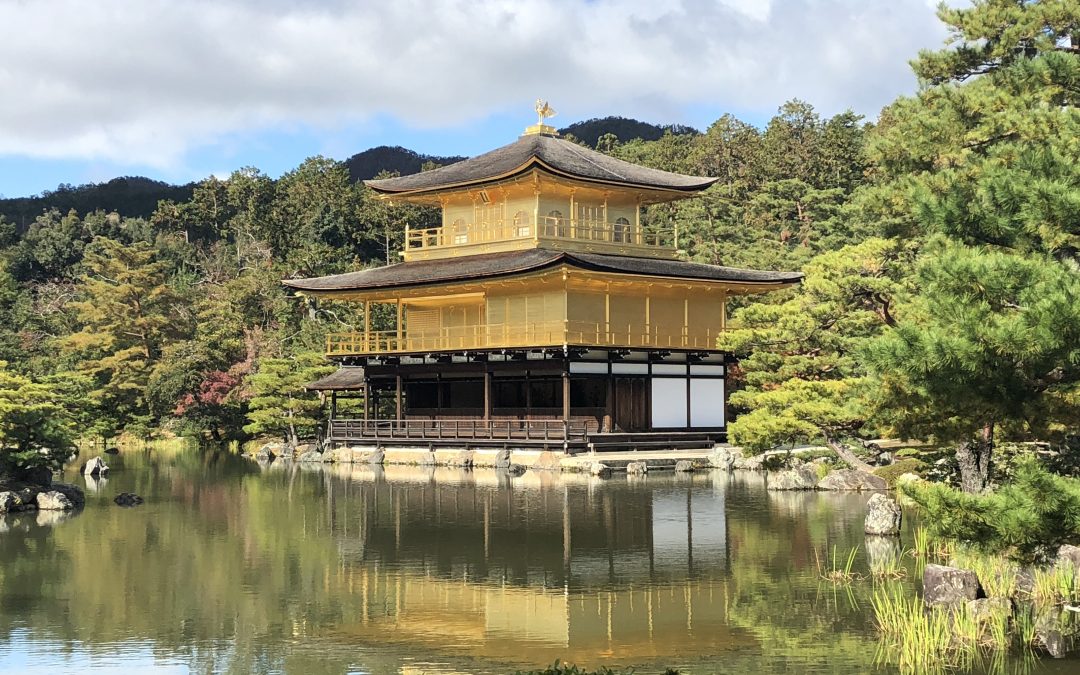
Kinkakuji and Ryōanji
A little east of Kyoto’s Arashiyama area, you’ll find two very famous temples that are within walking distance of one another, Kinkakuji and Ryōanji. Truthfully speaking, the two temples couldn’t be more different from each other; the only thing they seem to have in common is the crowds. Kinkakuji, or the Golden Pavilion, is one of Kyoto’s flashiest temples, an absolute must on a sunny day, and Ryōanji is a much more sedate temple whose fame is based on a sparse landscape and its use in meditation.
We hit up these two temples back to back due to their proximity to one another, but it was also pretty fun to see two such different religious sites one after the other. We started out with Kinkakuji, then took the bus to Ryōanji. (It’s only like two stops; it’s extremely walkable if that’s your preference.)
Now, Kinkakuji didn’t start out its life as a temple, and that really, really shows. Kinkakuji (not to be confused with Higashiyama’s Ginkakuji) was once the villa of a Muromachi-era shogun, Ashikaga Yoshimitsu, and the wealth and power of its original owner show in its design. The pavilion itself is almost entirely coated in gold, which makes it a really magnificent sight on a sunny day, and the grounds are lovely. After Yoshimitsu’s death, the villa was dedicated as a Zen Buddhist temple, as he’d directed.
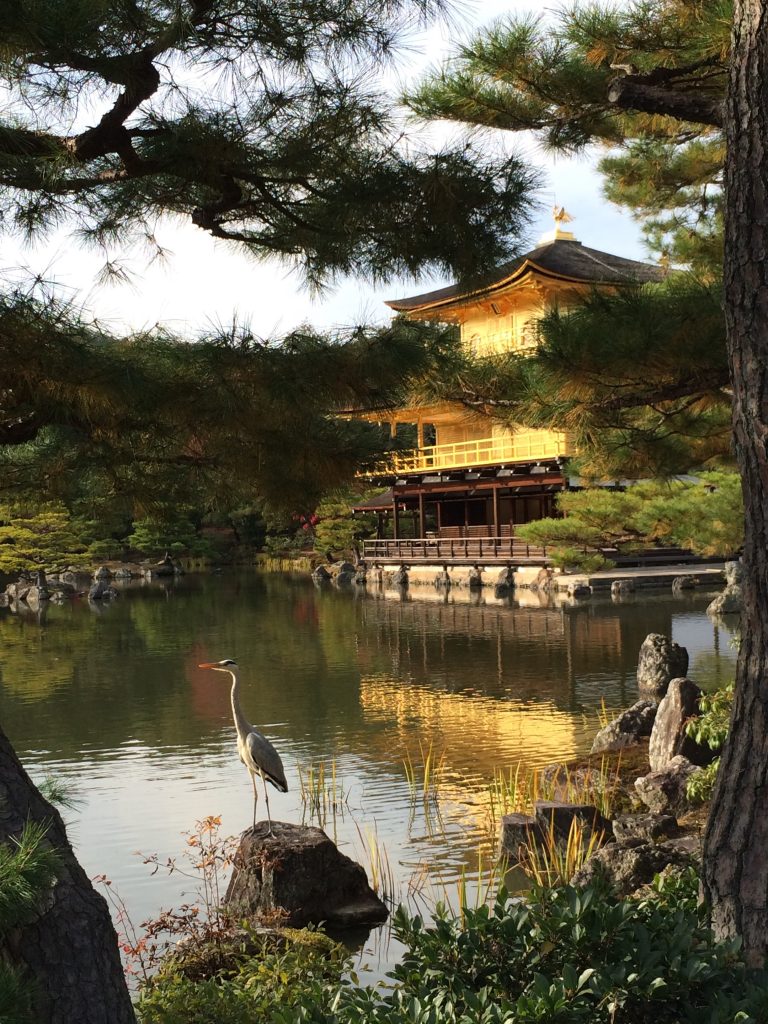
Kinkakuji, like most famous temples in Kyoto, was burned down a few times. The pavilion itself survived the Ōnin War, miraculously enough, only to be burned down by a monk struggling with mental illness in the 1950s. The reconstructed pavilion is incredibly beautiful, as are the grounds.
Kinkakuji has a certain allure in all seasons, but my favorite time of year to see it is autumn. The gleam of the golden pavilion against fiery red leaves is absolutely breathtaking. You’ll have to fight the crowds for that perfect photo, but it’s worth the effort.
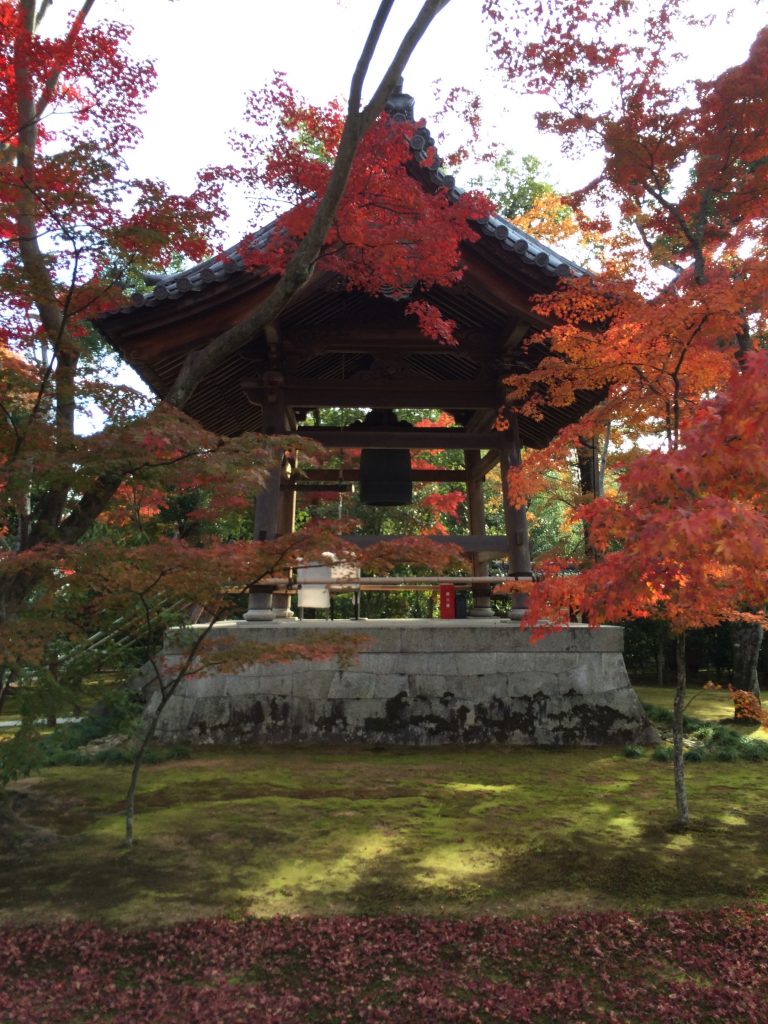
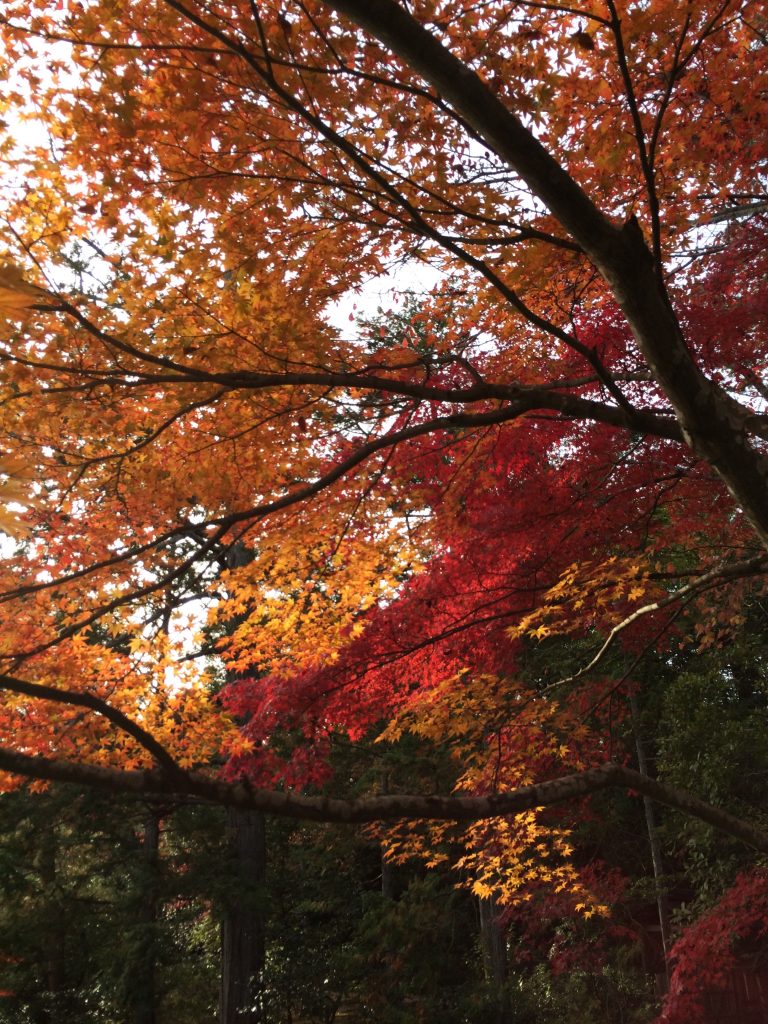
Once you’ve seen that first spectacular view of the temple reflected against the water, you can meander your way around the lake (be on the lookout for koi!) and look at the other buildings in the complex. The path is one-way to help accommodate the crowds, so be careful to take all the photos you want on your first pass. You won’t be allowed to go backward.
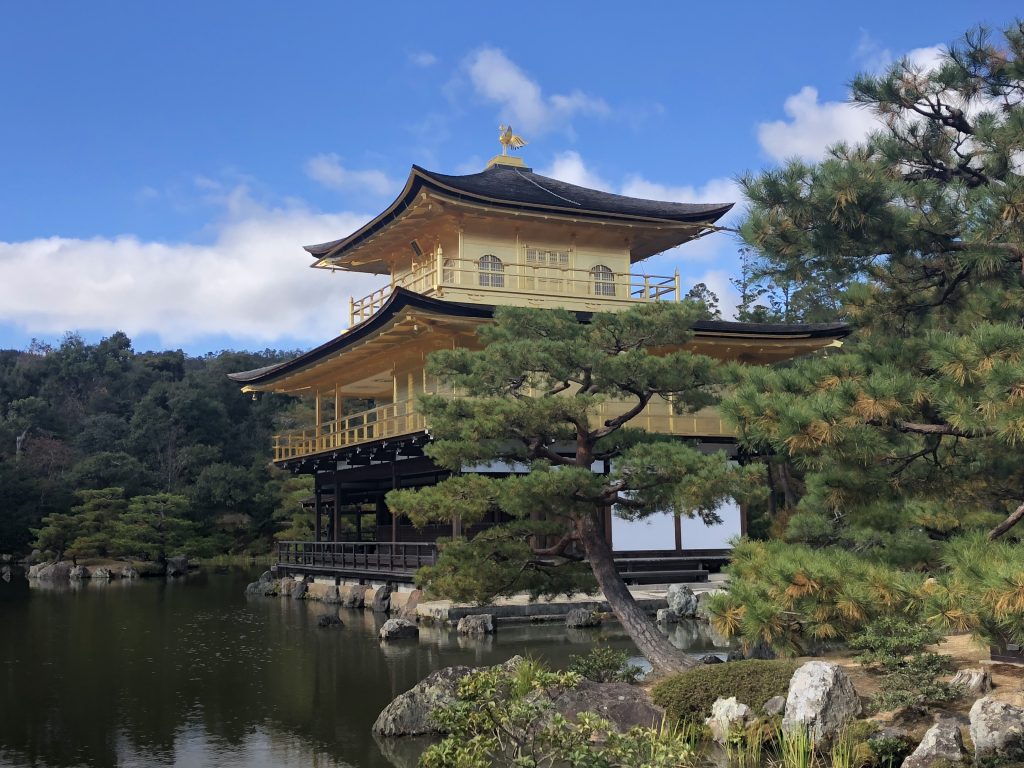
Once the pavilion itself is out of sight, you’ll still be able to see Kinkakuji’s lovely gardens. It’s a little bit of a hike up some very old steps, but it’s a really nice view. As you round out your little tour, you’ll get a chance to get your book stamped, get omamori, and maybe even get a snack or a souvenir.
The whole situation is drenched in wealth and materialism, I won’t lie to you. In some ways, that feels sort of antithetical to the tenets of Zen Buddhism, but Buddhism’s a complicated subject in Japan and is often expressed in a lot of different ways.
To have an experience that’s more “traditional”, if still deeply touristy at this point, you can walk on over to Ryōanji. Ryōanji is a much quieter temple (unless you’re unlucky enough to run into a school or tour group) and the emphasis is on Zen meditation.
Ryōanji has one of the most famous Zen rock gardens (aka karesansui, or dry landscape gardens) in the world, and it is raked every morning by the monks that work there. It is both the garden’s layout and the actual act of raking that are supposed to lead to enlightenment. The repetitive nature of raking is intended to free the mind and disperse conscious thought, and while tourists aren’t going to experience that at Ryōanji, you’re still allowed to engage in the other kind of meditation: mindful sitting.
Ryōanji is most well known for its small rock garden that contains fifteen large rocks resting in a sea of tiny pebbles. It’s said that you can never see all of the large rocks at once from any angle on the viewing platform, and their placement is often likened to a mother tiger and her cubs crossing a river.
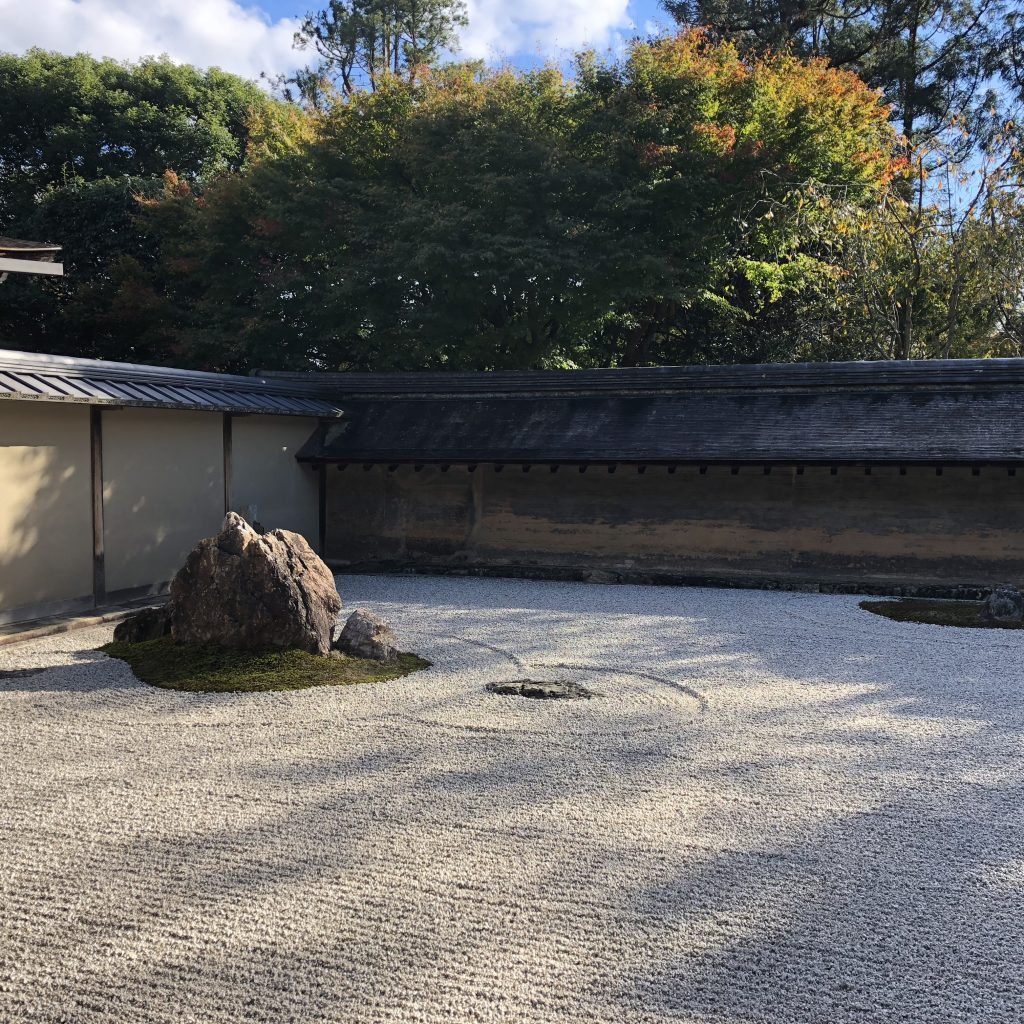
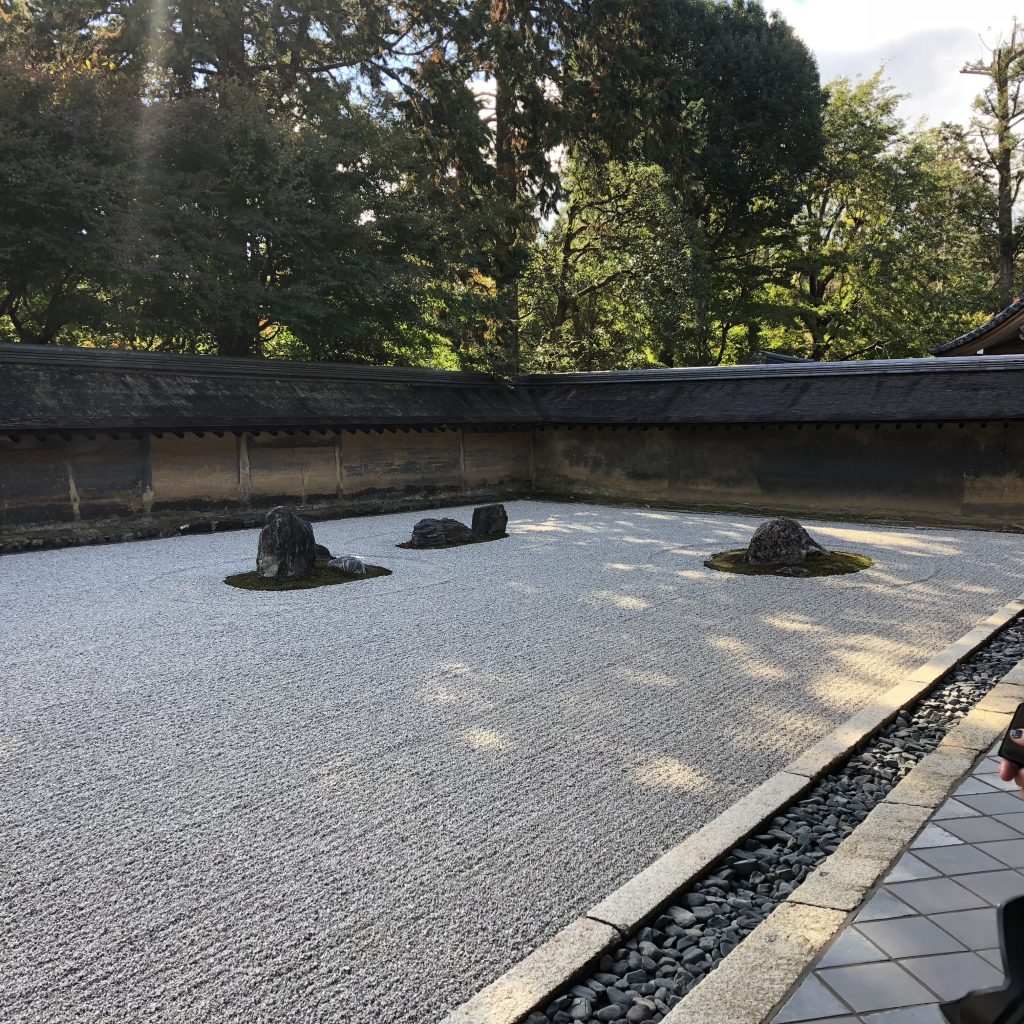
It is admittedly soothing to sit and consider the rocks, as long as the tourists around you are well behaved. I was surprised that even my father, who tends to be kind of hyperactive, seemed to enjoy just sitting there silently contemplating the garden. You’ll need to remove your shoes to gain access to the garden, so if you ever go, make sure you wear nice socks.
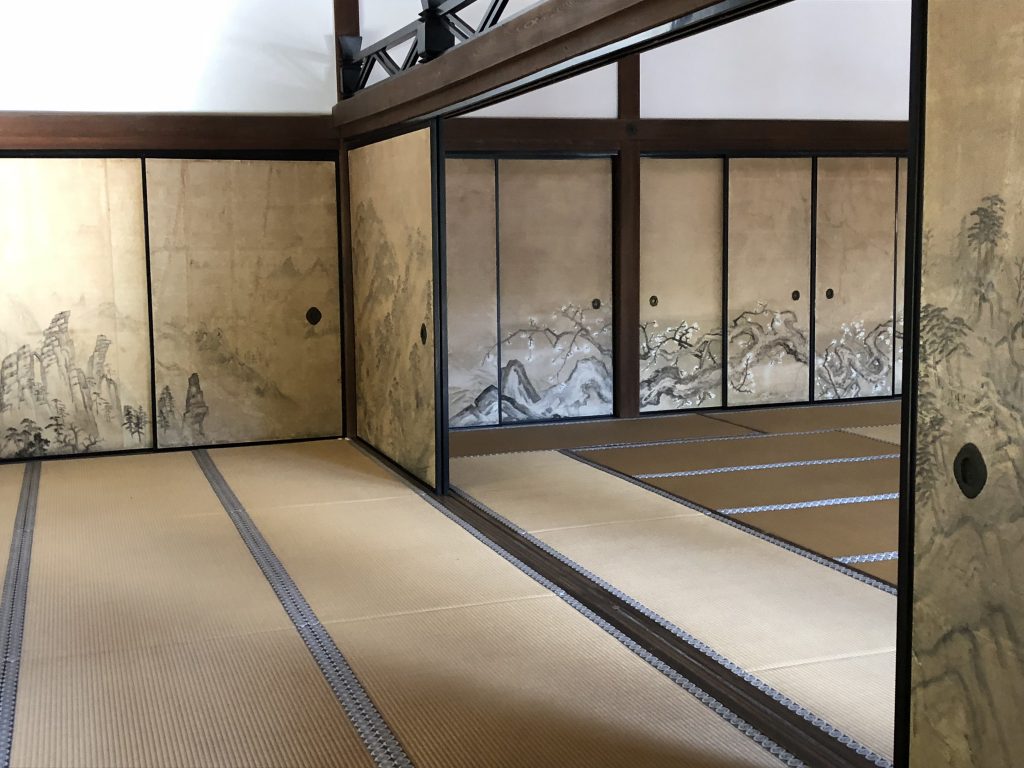
The creator of Ryōanji’s famed rock garden is actually unknown. The official party line is that Sōami, a famous artisan of the time, designed it, but modern scholars doubt that claim. After all, a lot of things were retroactively credited to Sōami. It doesn’t help that the temple has gone through multiple fires and refurbishments, and the records aren’t always very thorough. There are a lot of theories about the true creator, each more interesting that the last, so if that’s something that interests you, I really recommend doing some digging of your own.
If that’s not a thing you’re concerned with, though, taking an hour to sit down on Ryōanji’s wooden porch and let your mind wander can be a relaxing pastime, especially if you go during an off period when you won’t have to deal with lines for a seat or loud tourists.
After you’ve taken your turn contemplating existence, you can walk around Ryōanji’s grounds. A lot of tourists just take their shoes off, look at the rocks, then head back out. But the grounds that the rock garden is a part of are beautiful in their own right, and I really recommend going for a walk and taking in the sights.
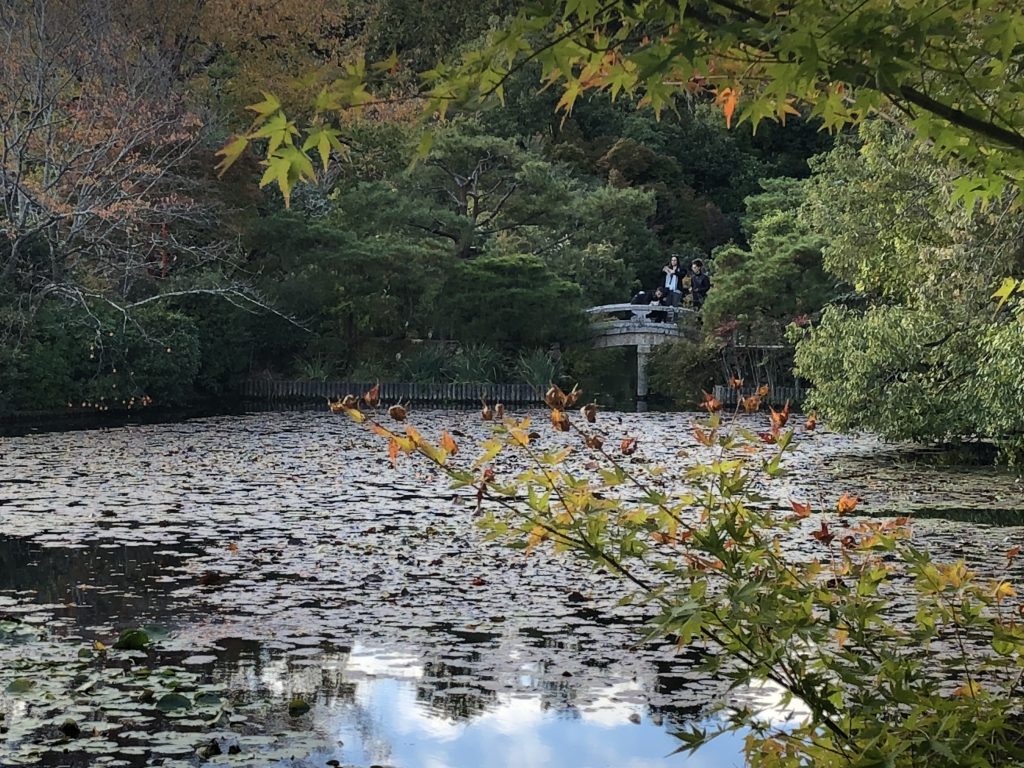
Despite its fame, Ryōanji is not actually my favorite dry landscape garden in Japan (I’m not sure it’s even in my top three), but it’s a site of serious cultural significance. I wouldn’t set aside a whole day to walk around the temple complex, but it’s definitely worth a stop if you’re in that part of Kyoto.
Both Kinkakuji and Ryōanji are considered must-sees in Kyoto. I agree with that assessment — Kinkakuji is visually spectacular, and from a cultural and historical standpoint, Ryōanji is extremely important — but it’s with the caveat that, well, both of them are must-sees. Everyone else will be seeing them as well. So I recommend going to see both of these unusual temples, but perhaps picking an off time, such as early morning or evening on a weekday or during the winter. It’ll be a much more enjoyable experience for you if you’re not packed in like a sardine. Save those for dinner.
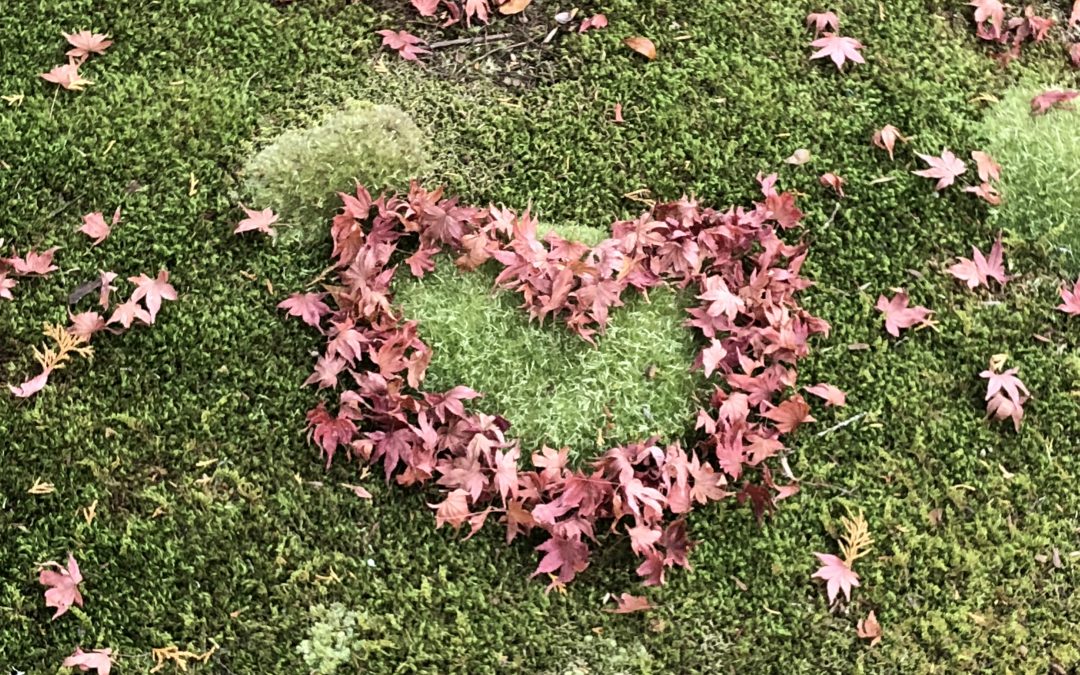
Kokedera & Suzumushidera
So Saihoji, also known as Kokedera (Moss Temple), is a very famous temple in Kyoto. It started life as one of Kyoto’s first dry landscape gardens (i.e. rock gardens), and, like many dry gardens, moss was employed as an accent. However, the moss overtook the entire garden, and these days, there are hundreds of varieties of moss on display on the temple grounds.
Because this moss is very delicate (and in the case of some species, endangered) Kokedera severely limits the number of people who can visit. Not only do you need a reservation to visit (which can only be procured by mail), but you will be required to undergo a sutra-copying session before you are allowed to enter the gardens. Add to all that an expensive entrance fee (for a temple, anyway) and it definitely weeds out the casual visitor.
As it turns out, though, I’m not exactly a casual visitor. I studied in Kyoto in college with a focus on Japanese religions, and I’ve always wanted to visit Kokedera. Sutra copying? No big deal, it wouldn’t be my first time. Archaic reservation system? I’d figure it out! This would be fine!
(Uhhhh thank you to a friend of mine living in Japan for mailing the darn thing for me once I finally realized it was not
In the end, after convincing my father that it’d be worth it and figuring out the reservations, I got us a time in the afternoon in mid-November. We ended up arriving far too early for our appointment, so we decided to walk around the surrounding area.
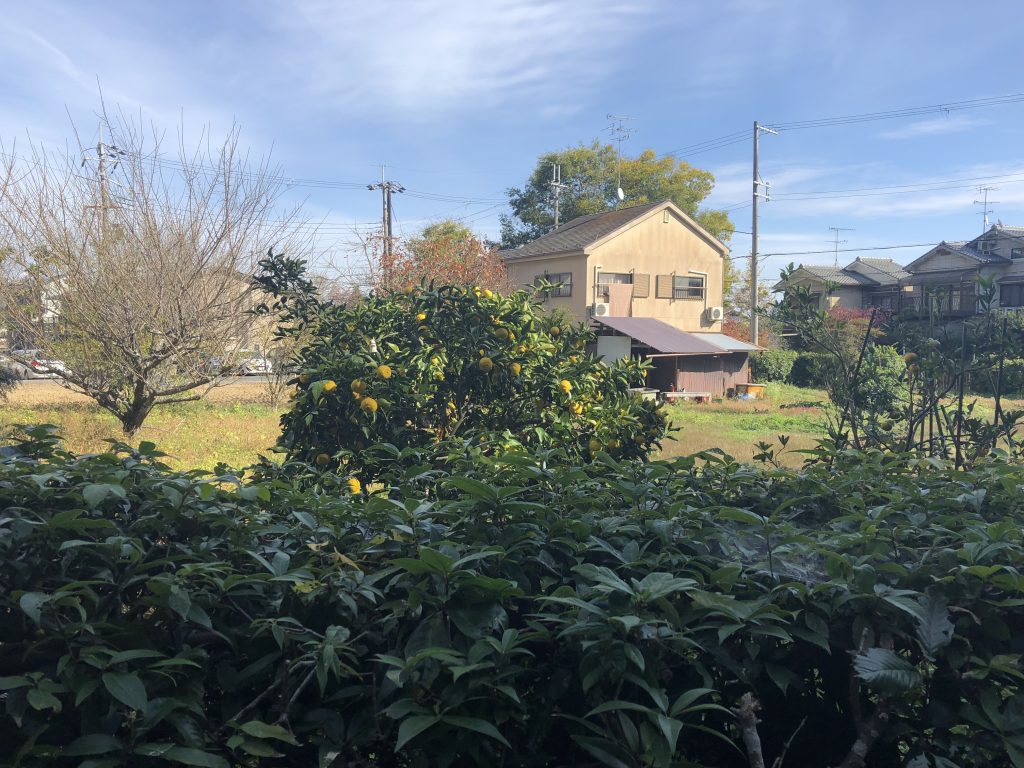
Kokedera is situated just south of the insanely crowded Arashiyama area, but was surprisingly quiet and mostly residential. There weren’t many buses that went out there. That’s why we were surprised to see a small temple not far from Kokedera with a line going out to the street.
So, being us, we promptly got in line. I did some asking around (and then some googling) and found out that we were at Suzumushidera, yet another nicknamed temple. Its real name is Kegonji, but even the stone sign out front just said Suzumushidera — which instantly drew me in. I know the kanji for “insect” when I see it.
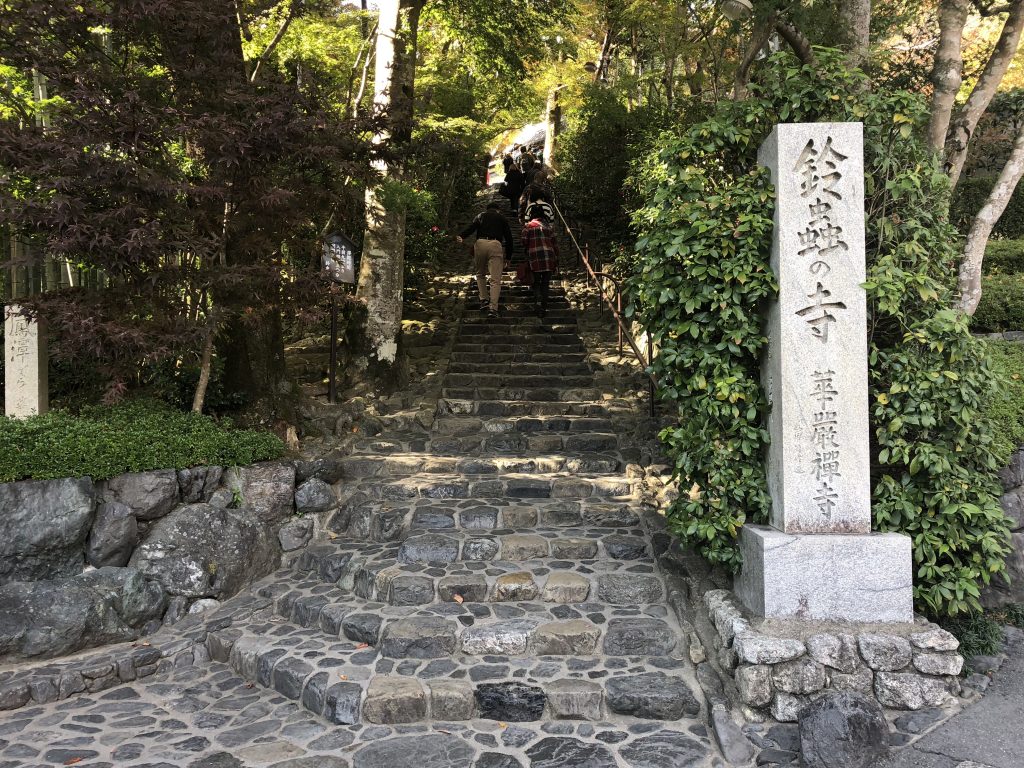
Suzumushidera is known as the Cricket Temple. Like Kokedera, it’s a lot more involved than just wandering in, looking around, and maybe buying a charm or two. The line started moving all at once, and we realized that we were in line for an event, not just entry to the grounds. When we got to the top of the stairs, a nervous attendant told us that it was time for the temple’s daily service, and while we were more than welcome to attend, it was entirely in Japanese.
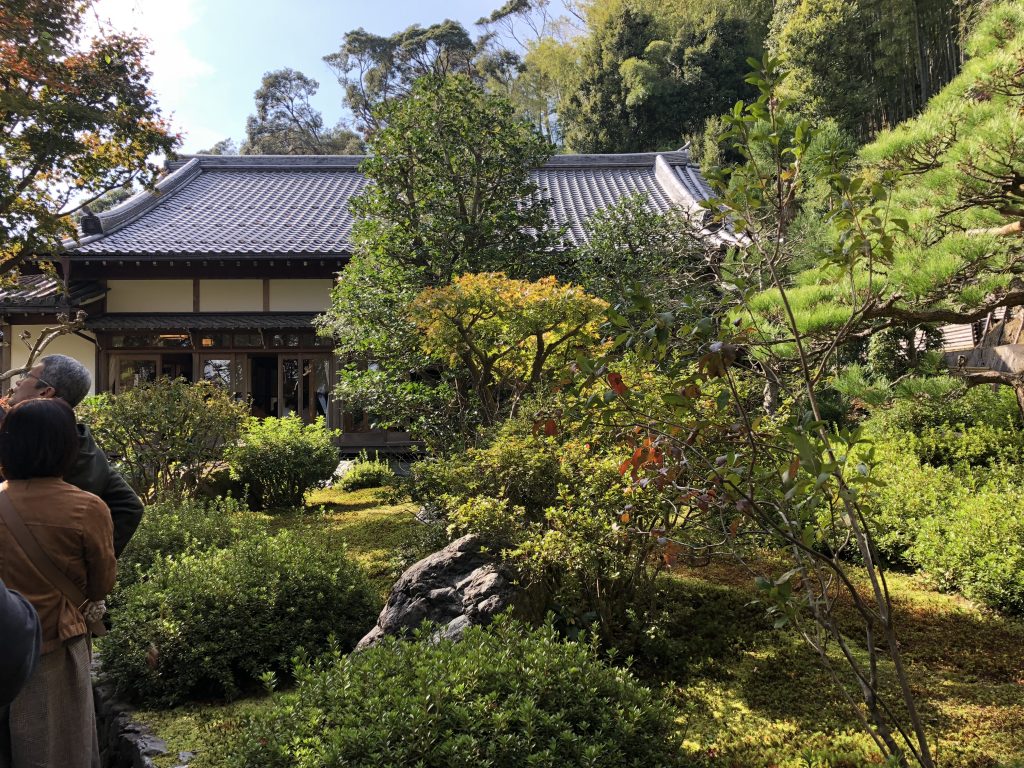
I was immediately like THAT’S FINE, and my father, bless him, just kind of went along for the ride. (Unlike me, he doesn’t speak a word of Japanese.) I’d never been to a lecture at a Buddhist temple before, and I was pretty psyched. The monk who came out to talk to us as we drank our tea and nibbled on sweets was extremely gregarious, personable, and fast-talking. I got the main gist of what he was saying (between jokes, it was largely explanations about how to pray at the temple properly) but my poor father. He just drank his tea and stared, wide-eyed. Thanks for being a good sport, Dad.
After the service, though, we got to do something that we both enjoyed. Now, part of what the monk had talked about was the crickets. Apparently, a monk who’d been at this temple in the past had loved bell crickets, thinking that they embodied Buddhist ideals through their song. That’s why they have a room that’s nothing but hundreds of crickets in little aquariums. It’s so loud and I loved it. It was really a one-of-a-kind experience.
(Note: many temples in Japan don’t allow photography inside the main halls, and we abided by this at Suzumushidera.)
On the way out, we stopped to pray at their Jizo statue, who’s said to grant supplicants one wish, and then headed back to Kokedera.
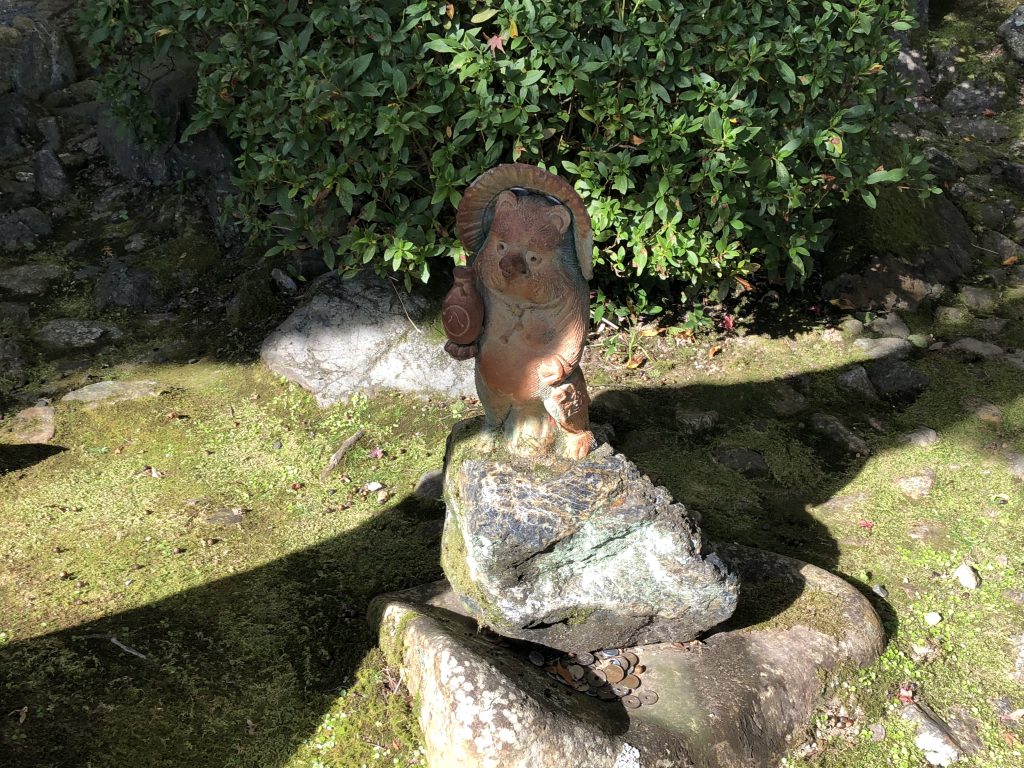
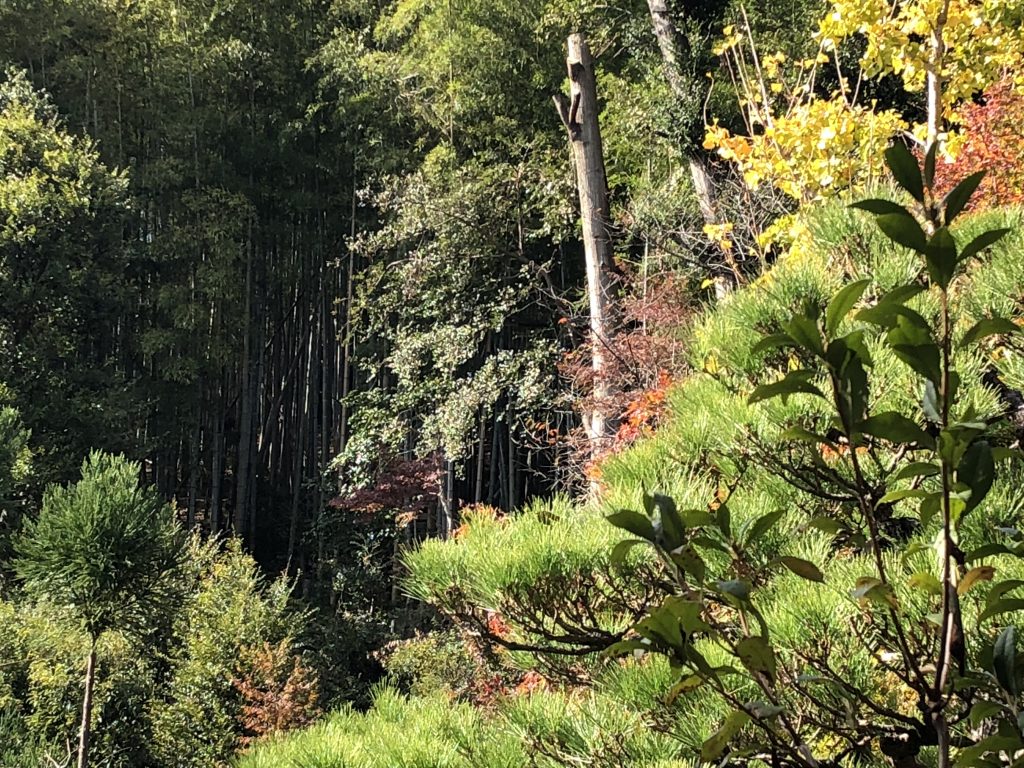
By this point, it was about time for our appointment. We went inside, I dropped off my goshuinchō, and we were led to our worktables. My father sat outside with a few other western tourists and elderly folks who’d have a hard time sitting on the floor inside. He also got an ink pen, apparently. Inside, I was seated at a low table in a long row of people (it took some finagling to find room for my cane), given a brush and ink stone and then given my sutra to copy.
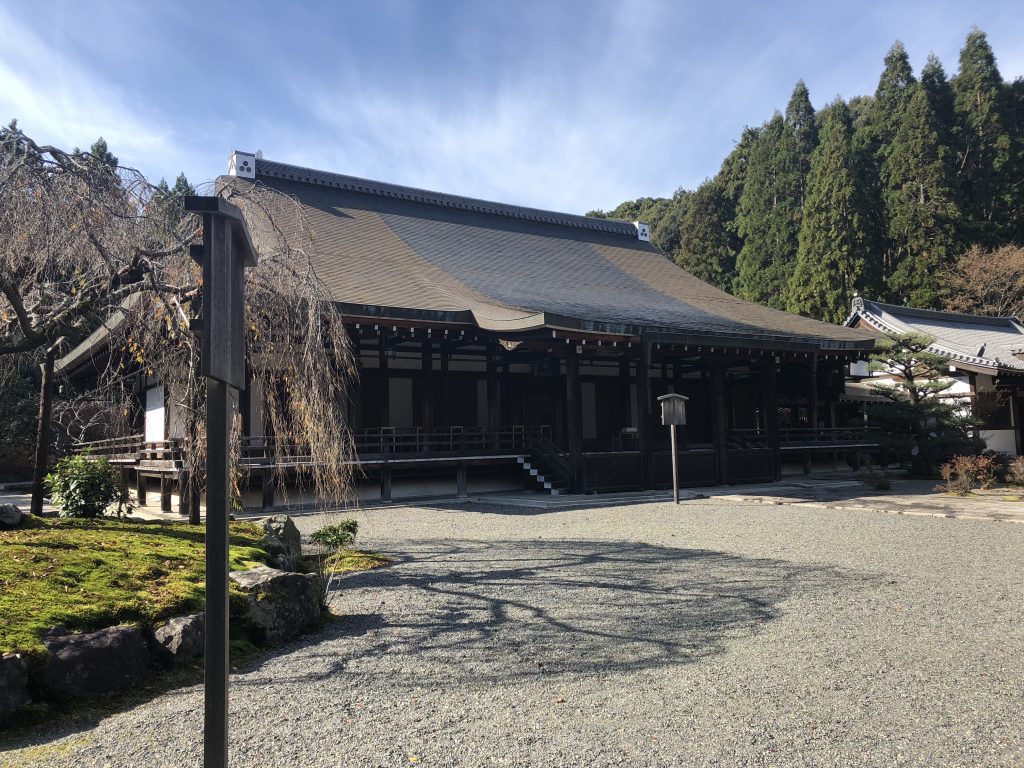
Now, it’s not hard. It’s really preprinted on the paper they give you; you just have to go over it in ink. Dad finished long before I did, a fact helped by the fact that he had a pen. I’d only used an ink brush and stone once before in my life, and that wasn’t for detail work. It uh. It was a learning curve. That said, I was seated between a man with the messiest handwriting in the world and a man who honestly might’ve been a professional. So I was kind of like the average between the two.
After about a half hour of copying, I turned my sheet in and picked up my book. I handed over my book at every temple and shrine I mention on this blog, but I’m specifically talking about it here because look at the
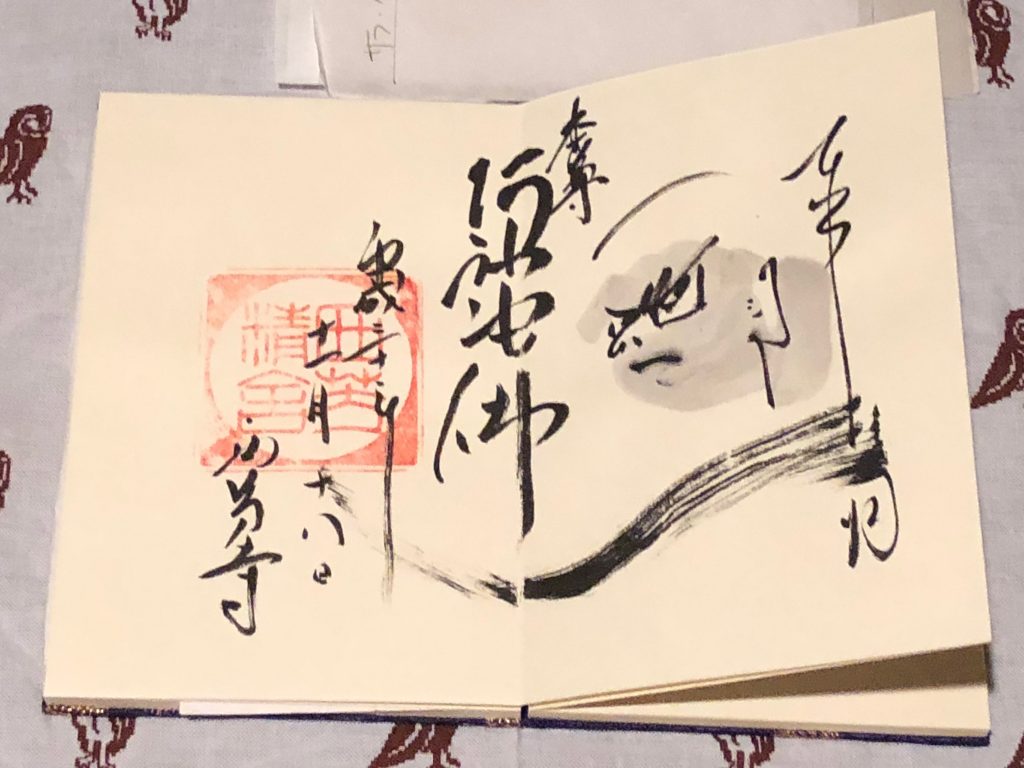
After all that clerical work, we were finally allowed into the garden. And oh boy, it is beautiful out there. There are some really uneven steps, unfortunately, so dad had to help me through the garden, but it was truly beautiful. I’m sad to say that my camera just could not capture the vividness of the colors in the garden; the weather turned just as we went outside and it was difficult to get the lighting right. Still, I hope my photos give you the barest idea of how lovely it really was. (And if you’d like to see professional-grade photos, the temple has a very nice website.)
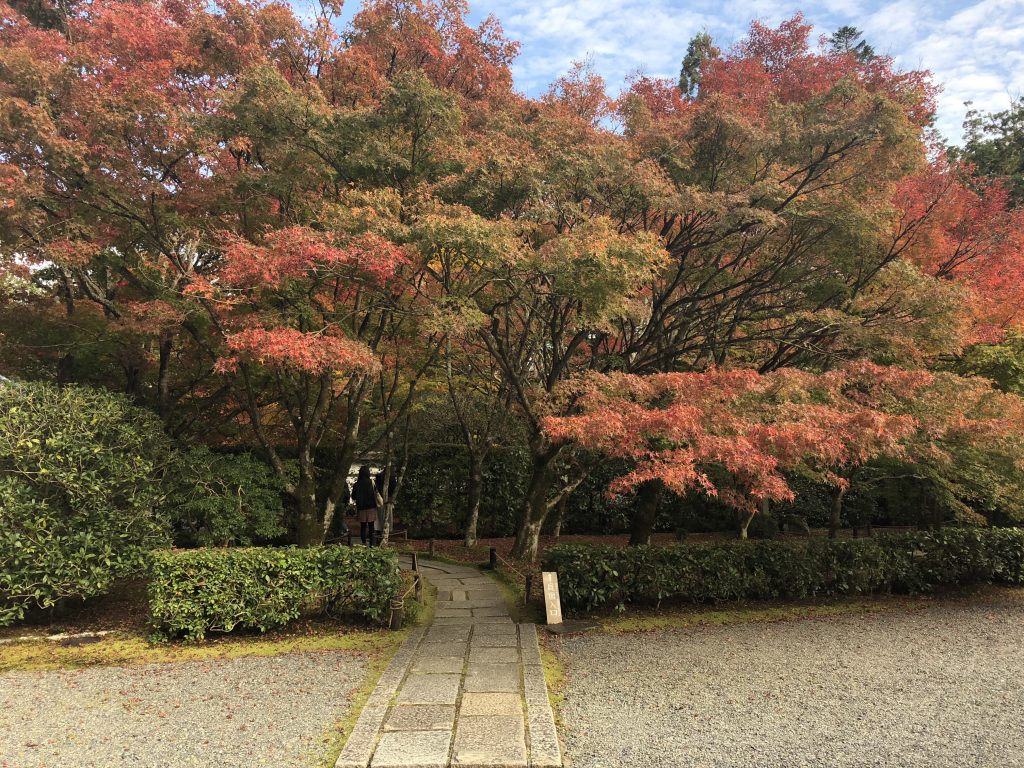

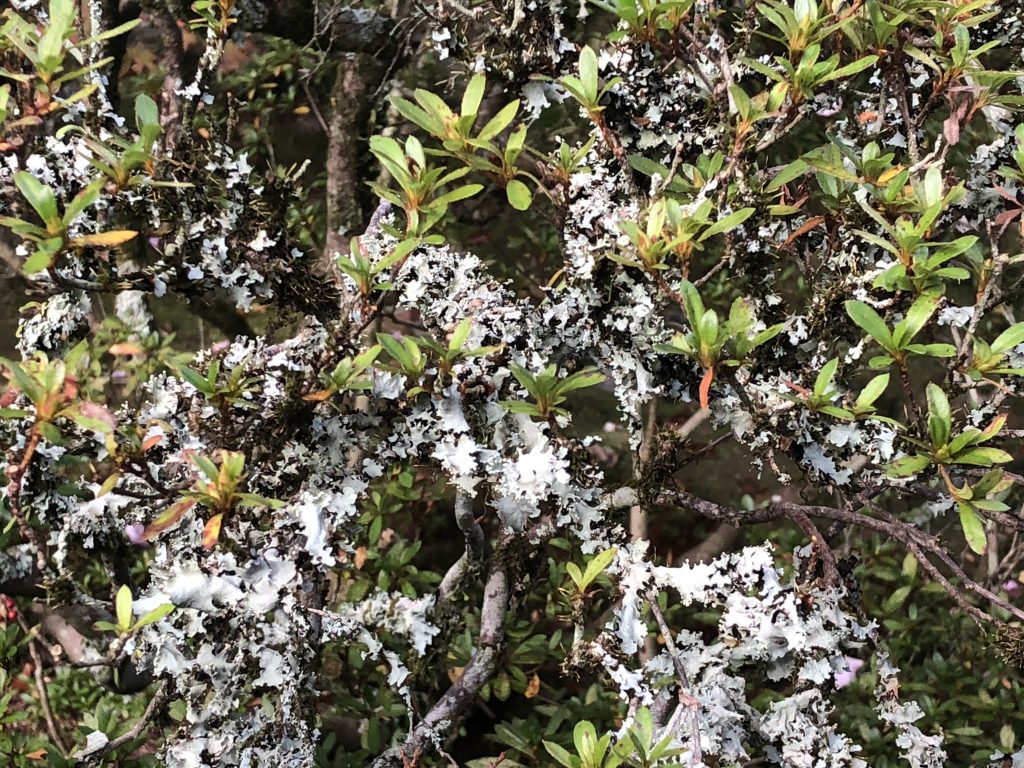
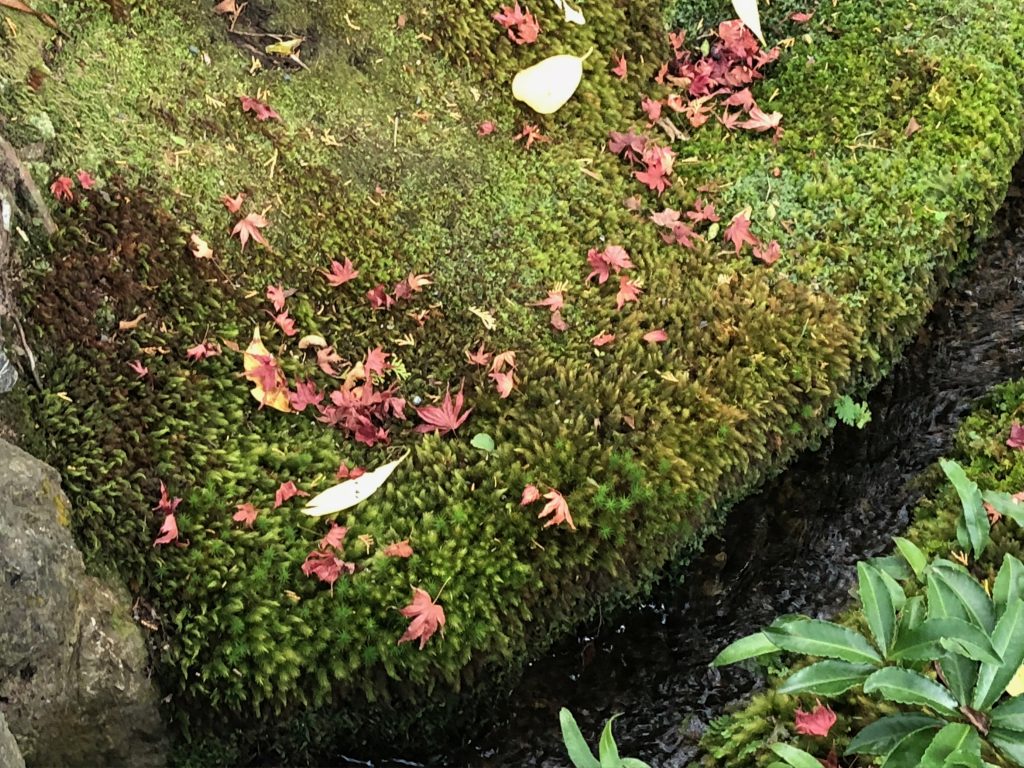
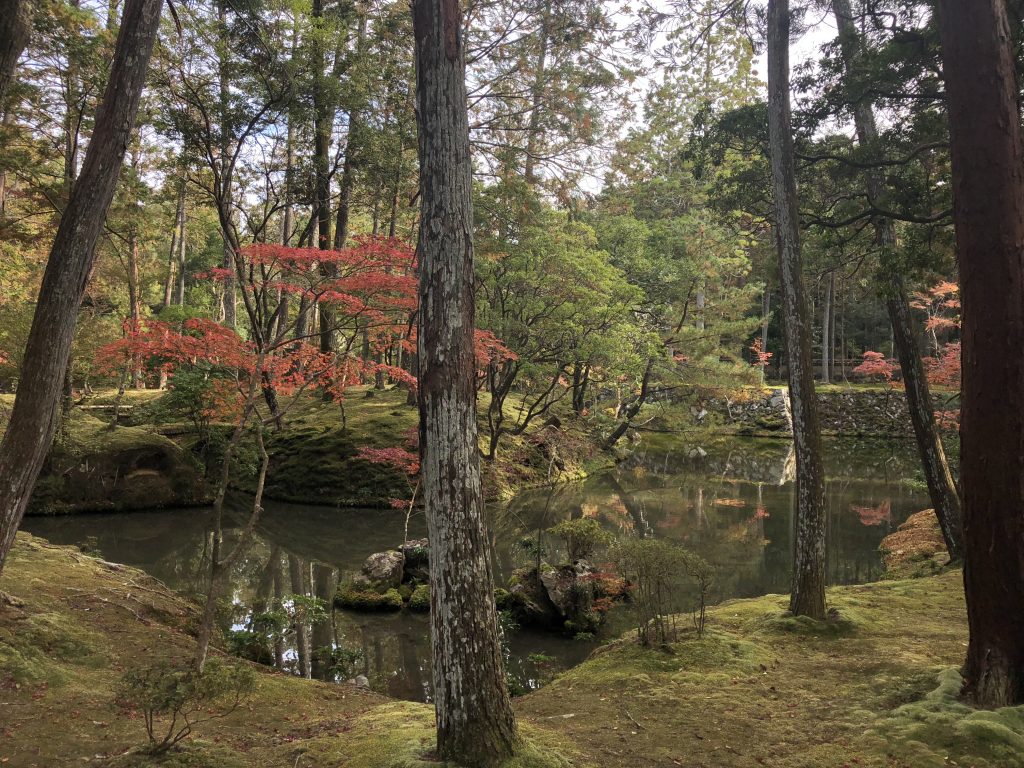
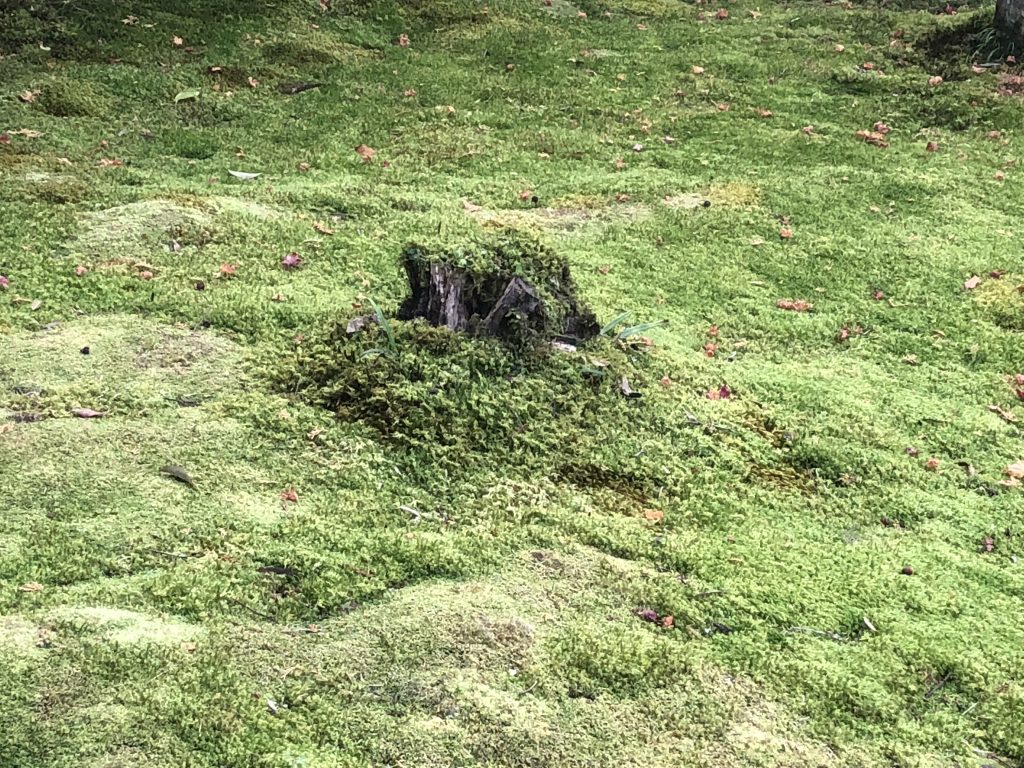
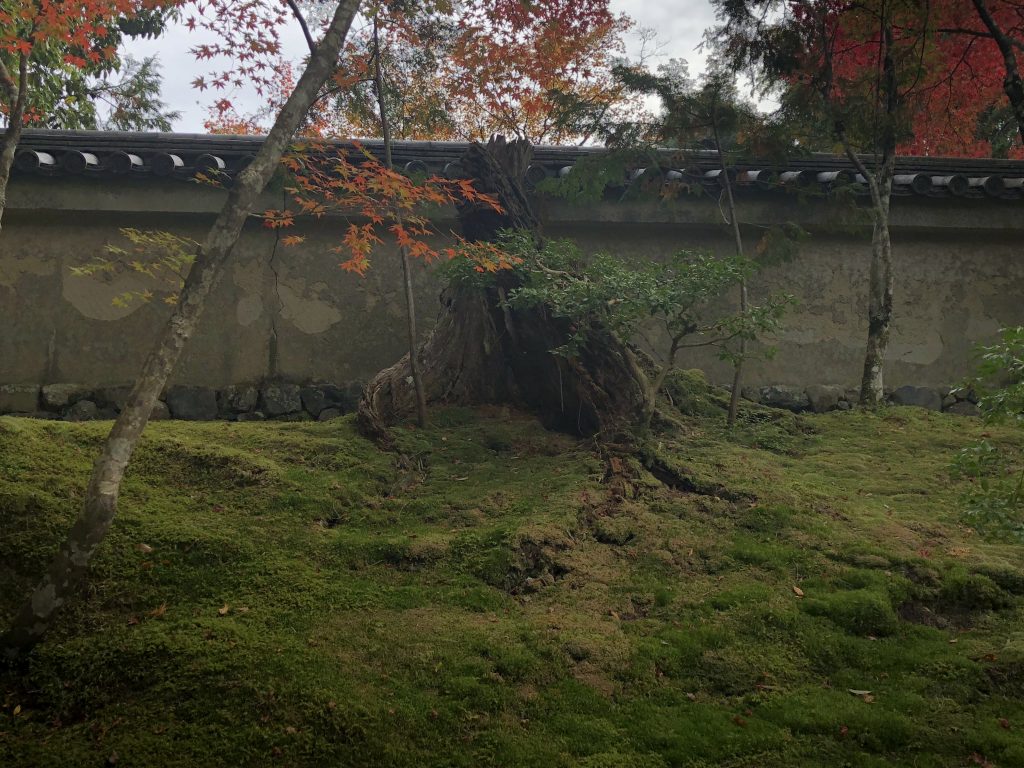
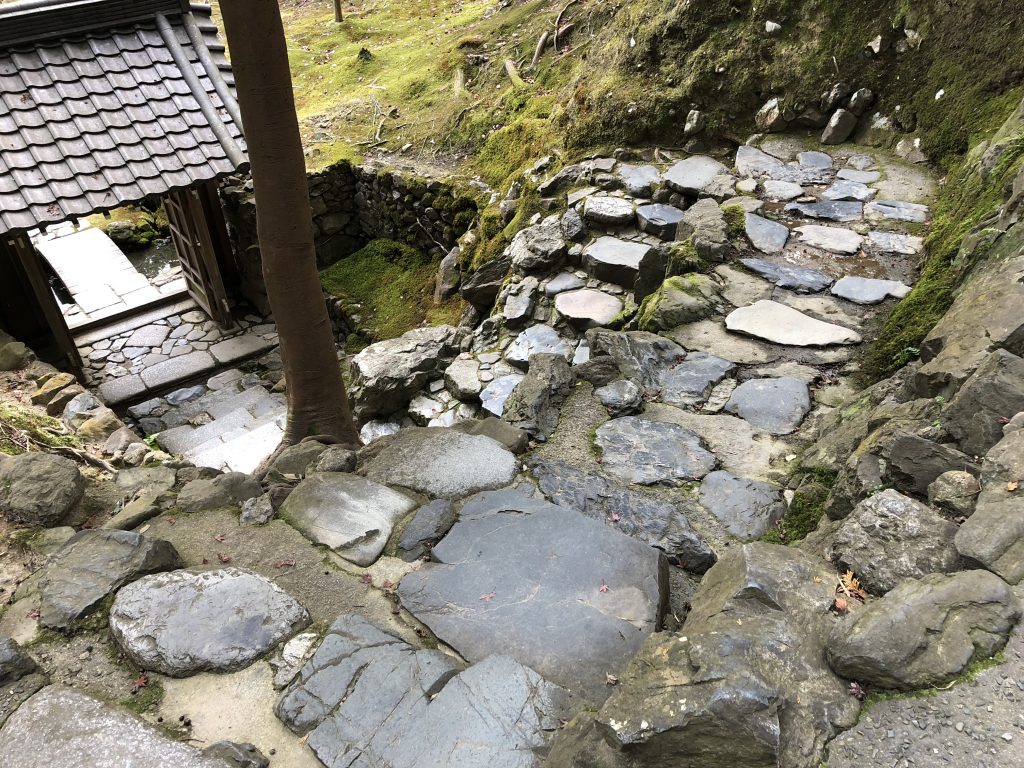
You are not under any circumstances allowed to touch the moss, and I need to tell you: that was freaking hard. It looked so soft! I’ve never seen so many colors and textures of moss in my life and I really, really wanted to touch it. It was so touchable! Still. I did not. You can thank me later, future generations.
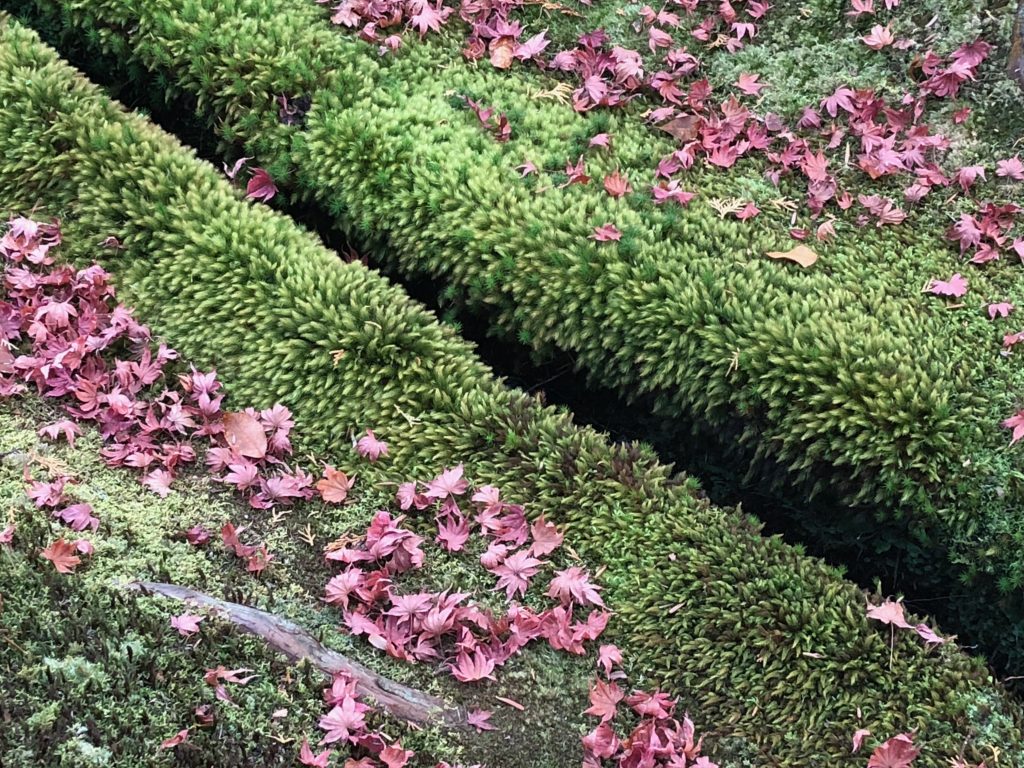
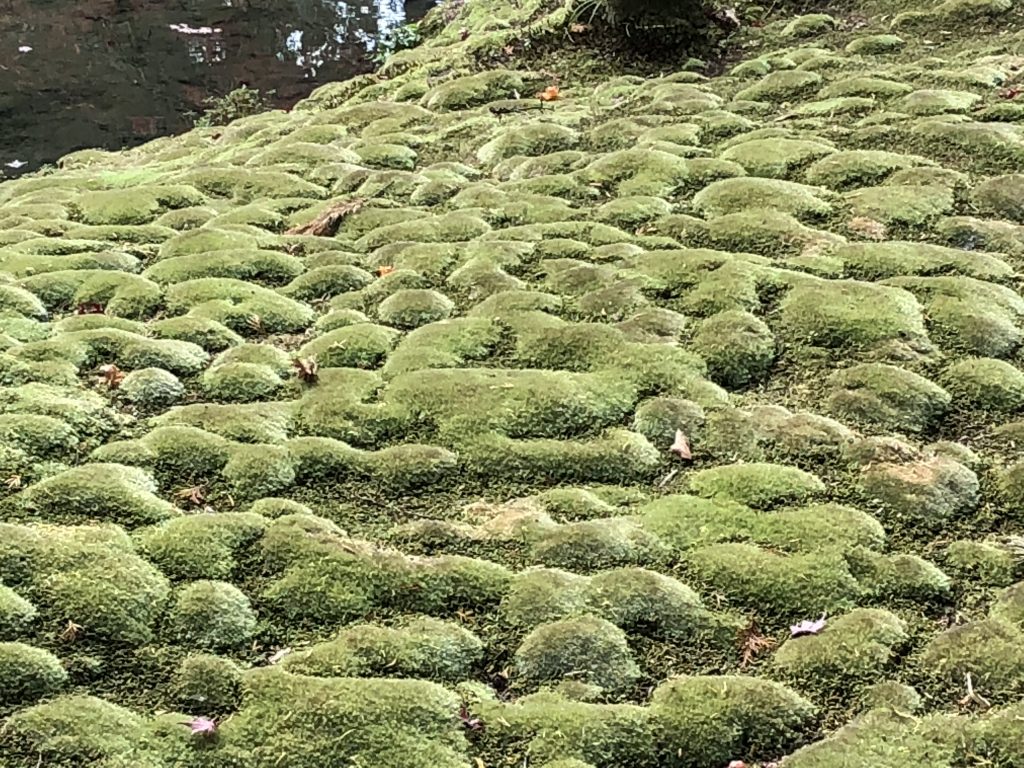
Kokedera and Suzumushidera may not be the two most accessible temples in the world (and I mean that as in disability and also just in general), but they offer experiences that are really special.
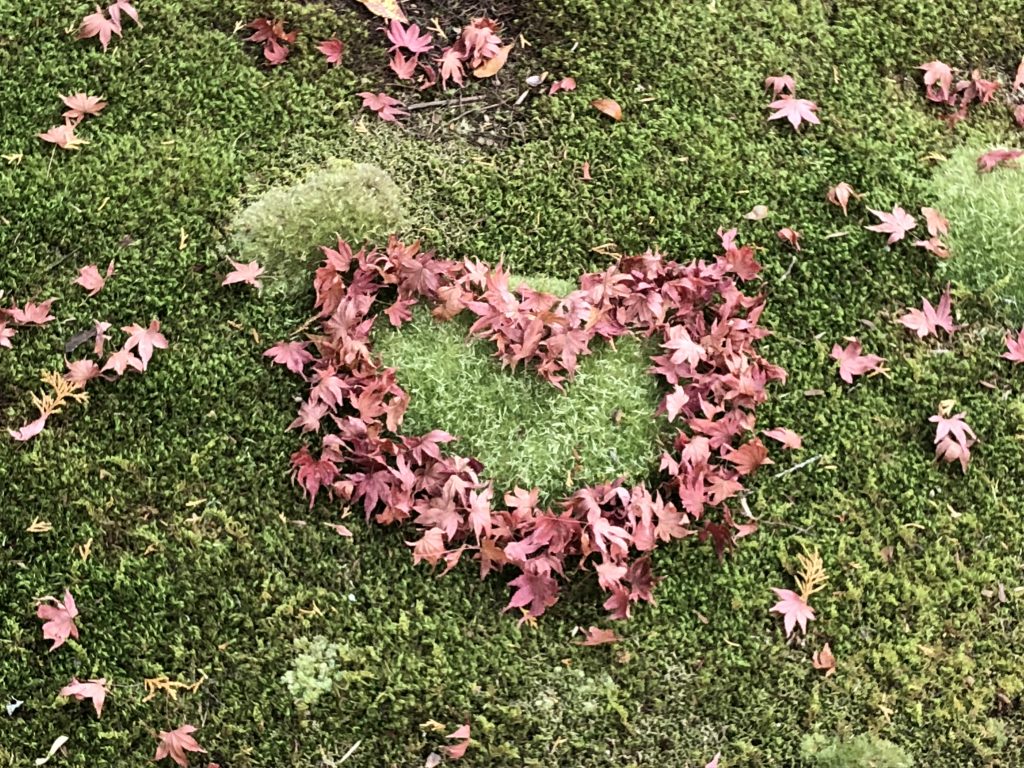
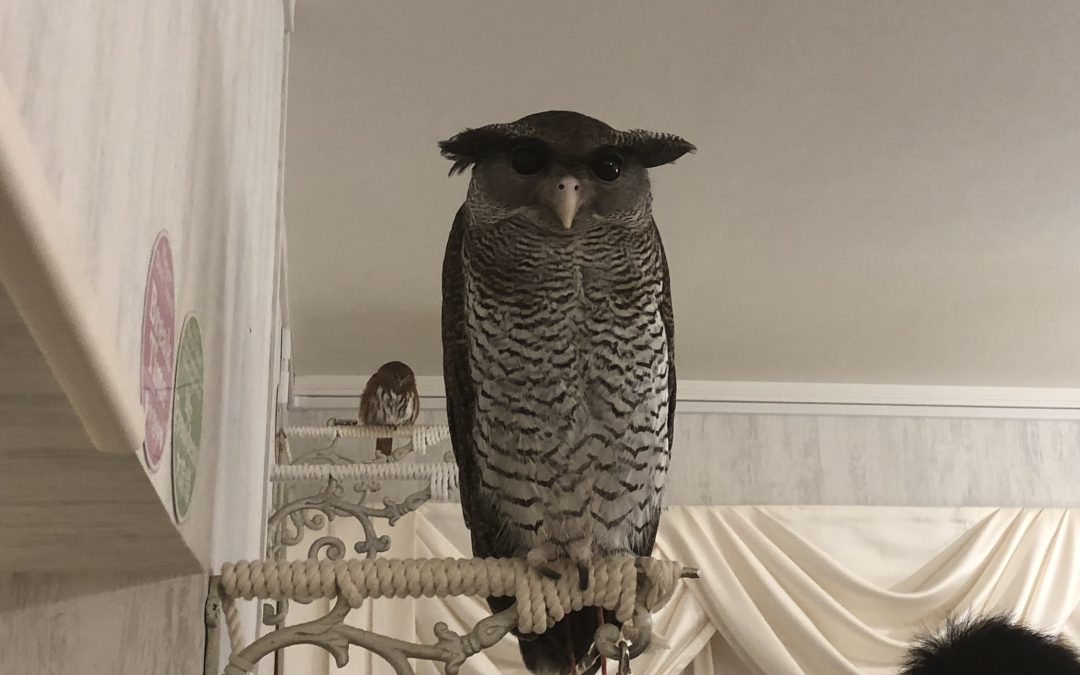
Japanese Animal Cafes
One thing that Japan’s become fairly famous for is animal cafes, cat cafes being the most common iteration. Basically, you get to hang out in a room with a bunch of animals and usually get some kind of snack. You may be able to consume your snack around the animals, you may be encouraged to have it later — it all depends on the cafe.
Now, things really started out with the cat cafe, and I’ve been to a few of those during my time in Japan. It can be really soothing to just hang out and have a snack while you play with kitties. That said, I wanted to branch out a little bit during this visit and see what else there was to see.
Unfortunately, as animal cafes become more popular in Japan, ones that aren’t exactly high quality are cropping up in greater frequency. I’ve seen cafes that look dirty and cramped inside, or that don’t seem to have particularly happy animals. I try to avoid establishments like that, especially if they don’t seem to have the animals’ welfare in mind.
One that I went to during this trip that really seemed to genuinely care about the animals’ health and happiness is Akiba Fukurou in Akihabara, Tokyo. It’s different from your typical cat cafe in a few key ways: you need to have a reservation and people are only allowed in small groups, there is no food or drink allowed, and best of all — they’re owls!
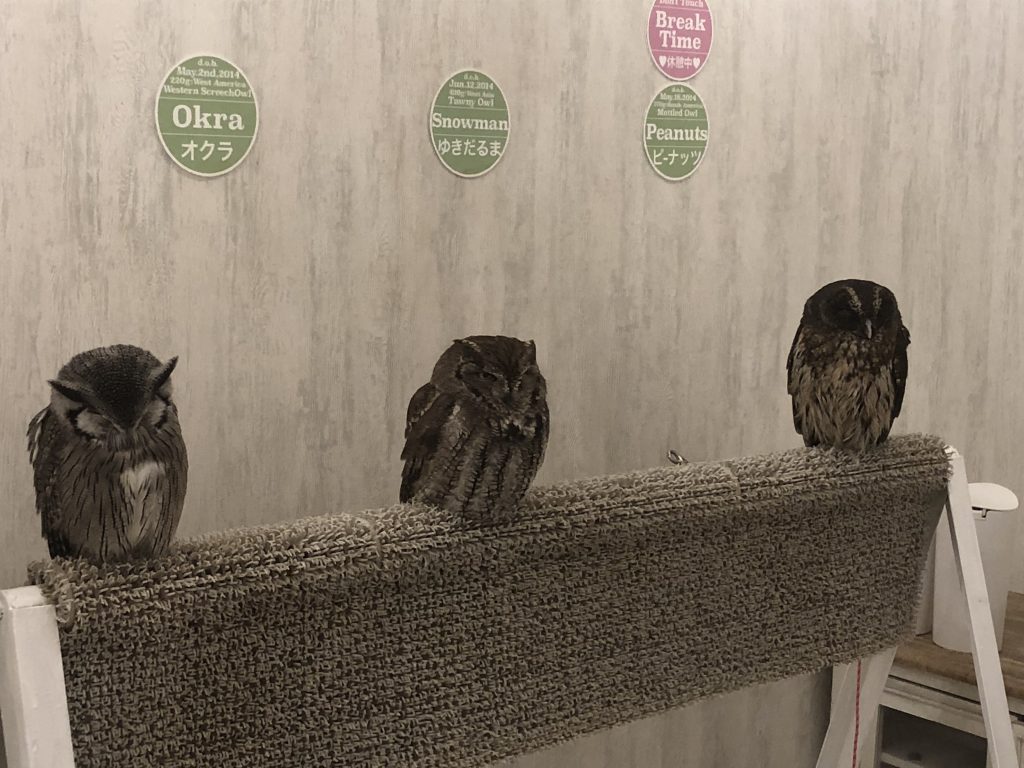
I was really impressed with the ambiance of this little owl cafe. It’s light and cheerful inside with a good thirty owls for you to hang out with. The owls themselves are cycled; they’re given days off and quiet breaks so they don’t get too overwhelmed. (If you go, make sure to look at the labels beside each owl — they’ll have their name and whether or not they’re on break.)
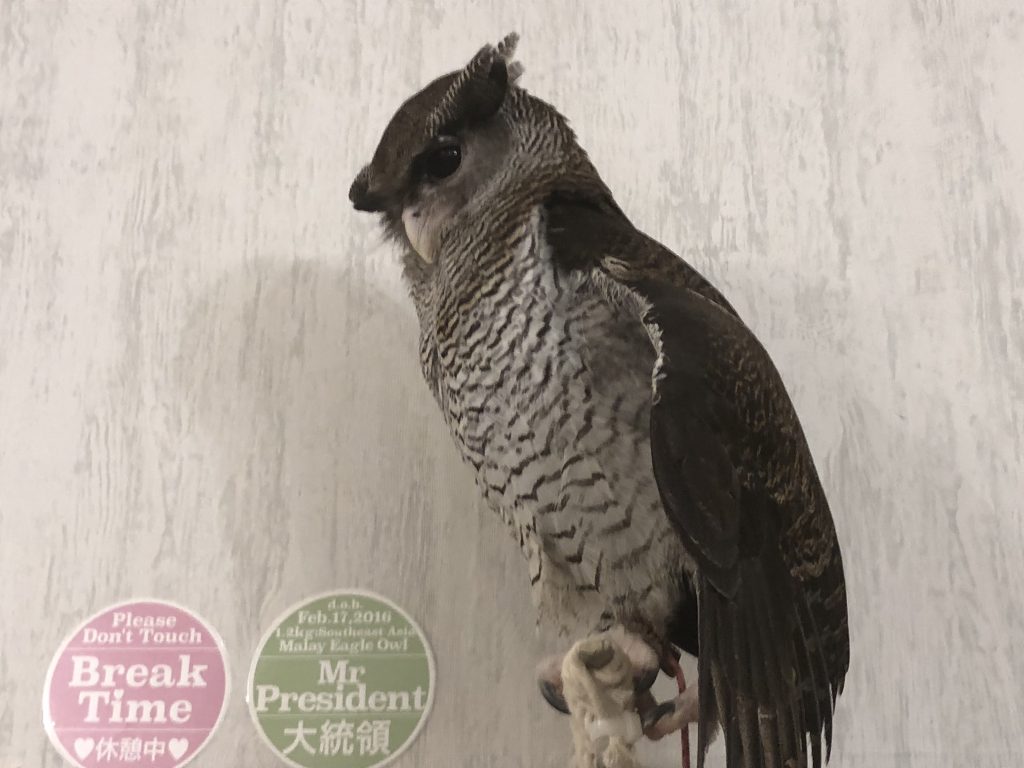
When you’re first allowed in, you’re informed of the basic rules and taught how to safely handle the owls. Yes, you’re allowed to pet them — gently. Yes, you’re allowed to talk to them — quietly. And yes, if you ask nicely and follow the keepers’ instructions, you will be allowed to hold one or two owls during your visit.
The first owl I made friends with was named Shirasu, or Whitebait. (It’s a type of tiny white fish.) I was asked which owl I’d like to hold and I pointed out this beautiful barn owl. Then I was really surprised when I was informed that Shirasu didn’t like to sit on arms, but was more of a shoulder kind of owl. I was a little wary at first (that’s just… really close to your face) but Shirasu was such a nice, friendly owl that we quickly got used to each other.
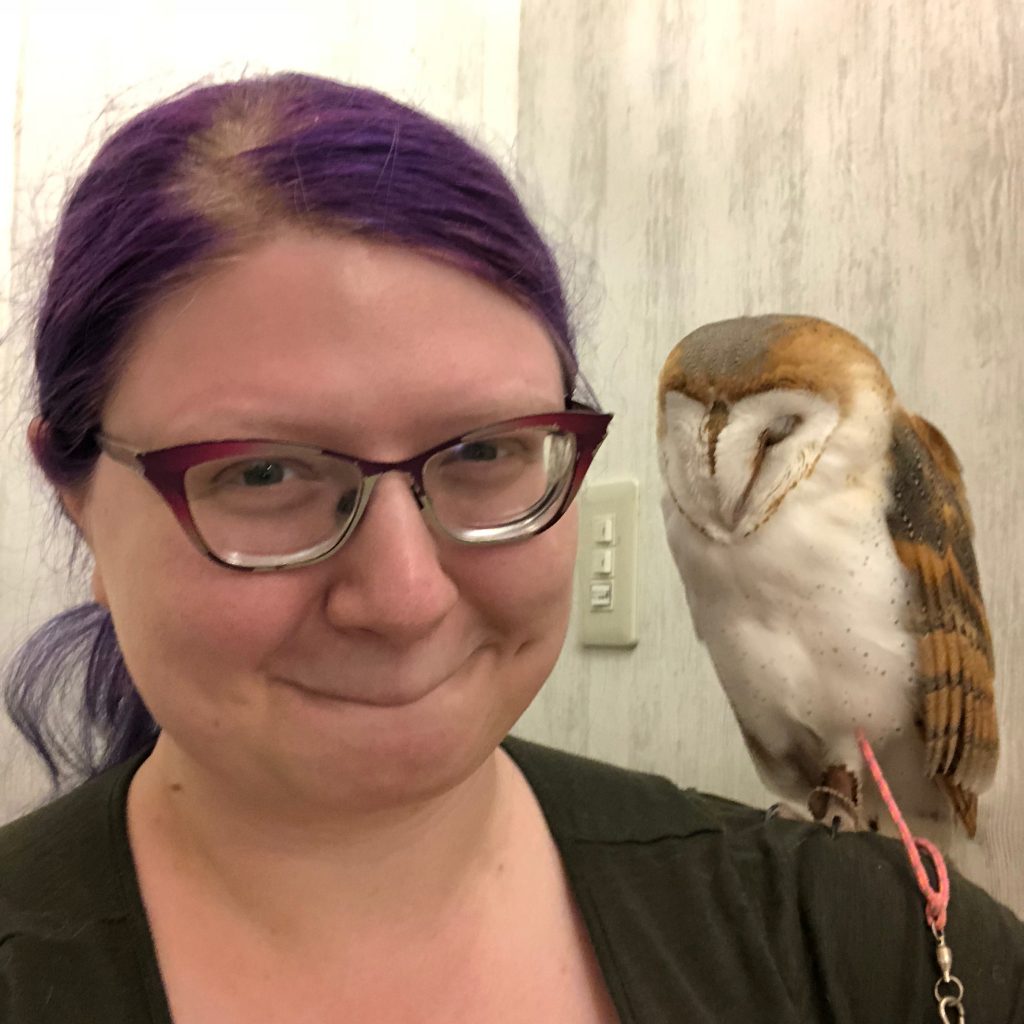
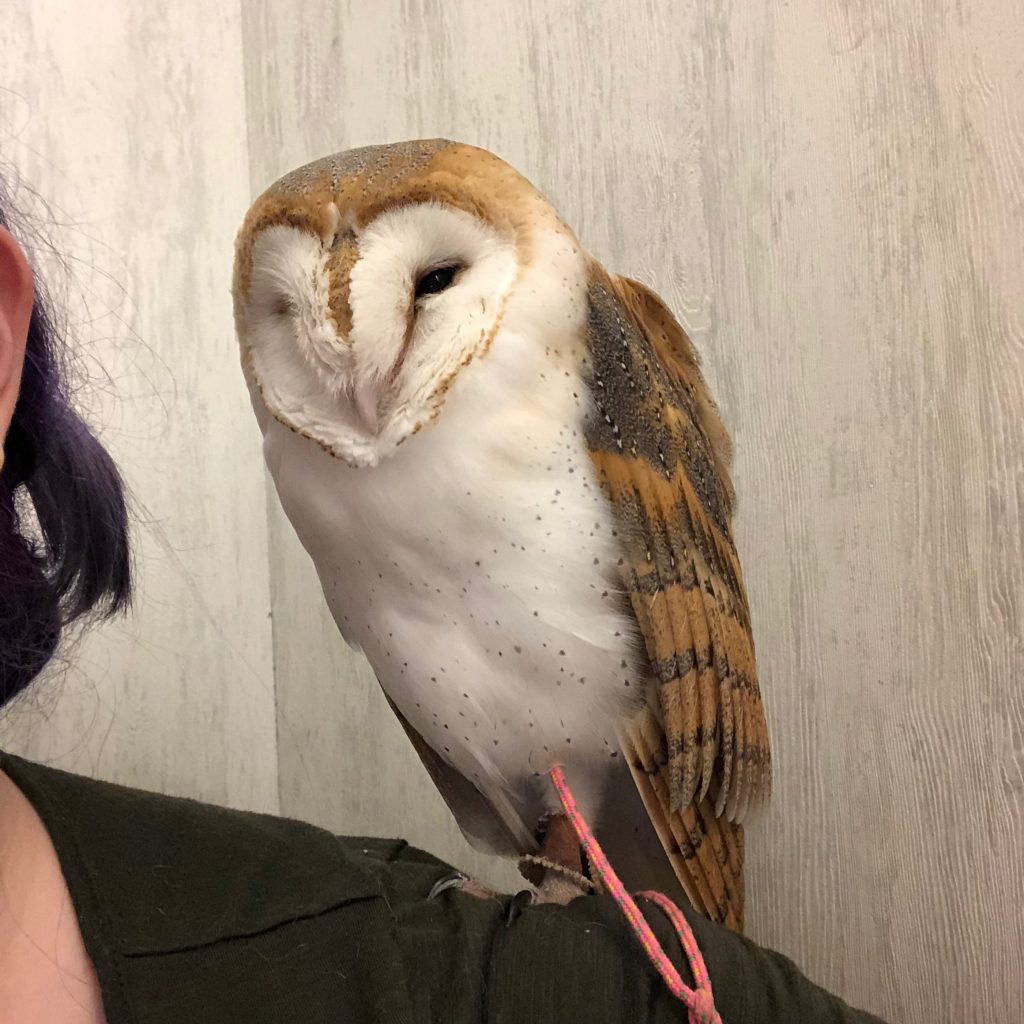
After a while, I finally got up the heart to wake Shirasu up and trade it in for another owl. This time I chose Risu (Squirrel), a very tiny little owl that made great faces. This one perched on my arm, but it was so small that I didn’t need a glove like some other owls there required.
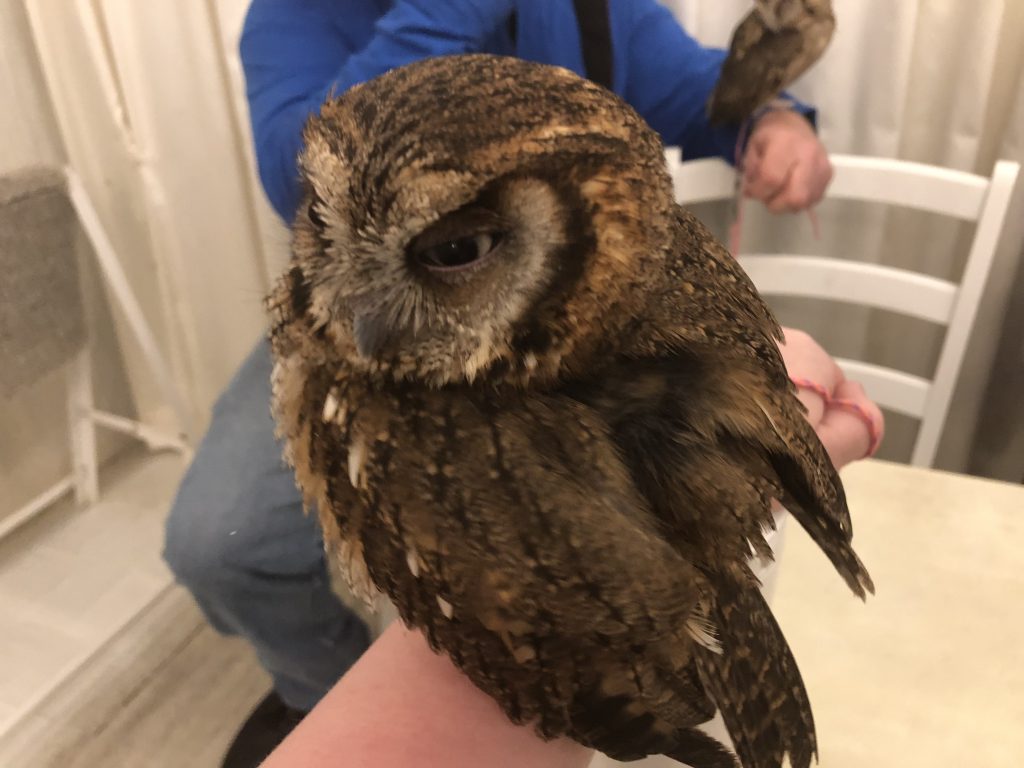
The owls all had their own personalities; some were very friendly, some were very curious about all newcomers, some just wanted to sleep. I felt really lucky with the two owls I’d chosen, and it was just a really special experience. They say that the cafe is designed to be quiet, calm, and soothing and it really did deliver. Special care was taken not to alarm the owls and they were not caged. It really was such a cool thing to get to experience, and I won’t likely forget it any time soon.
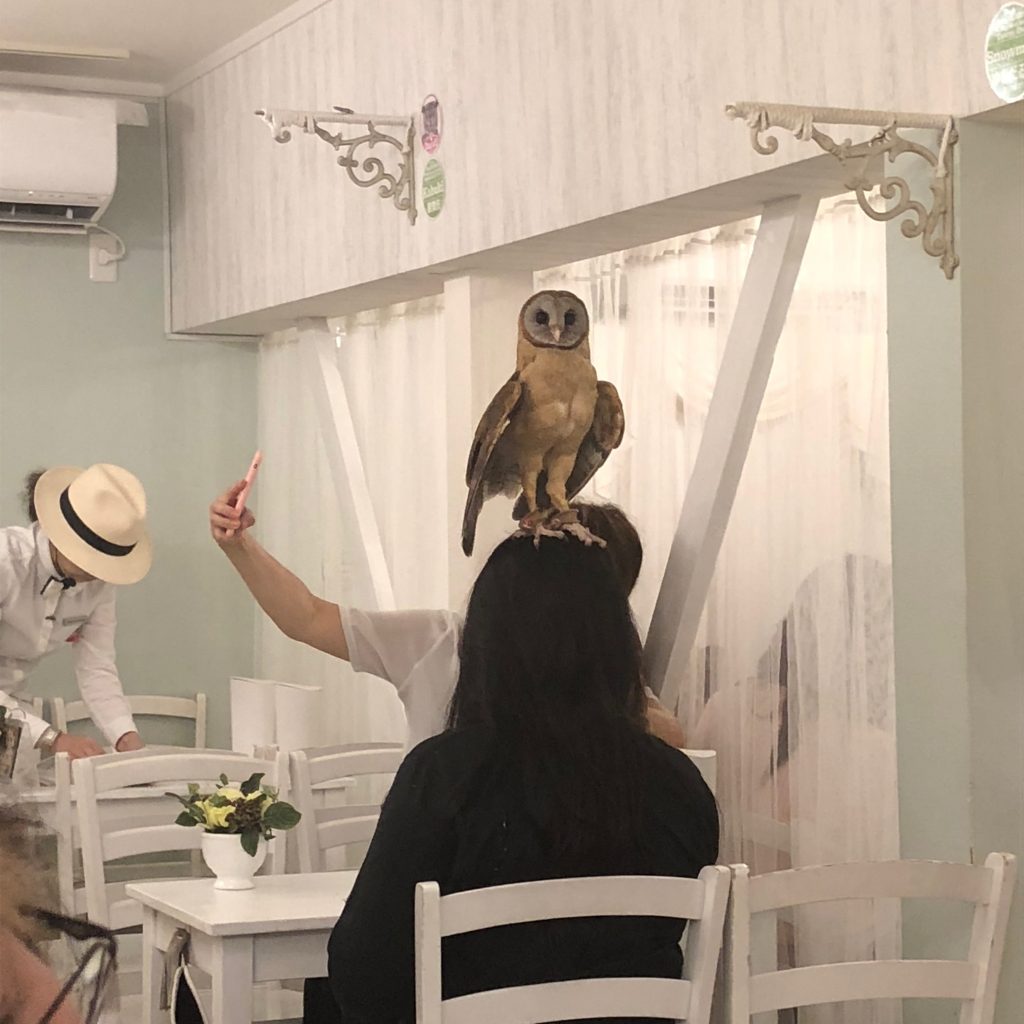
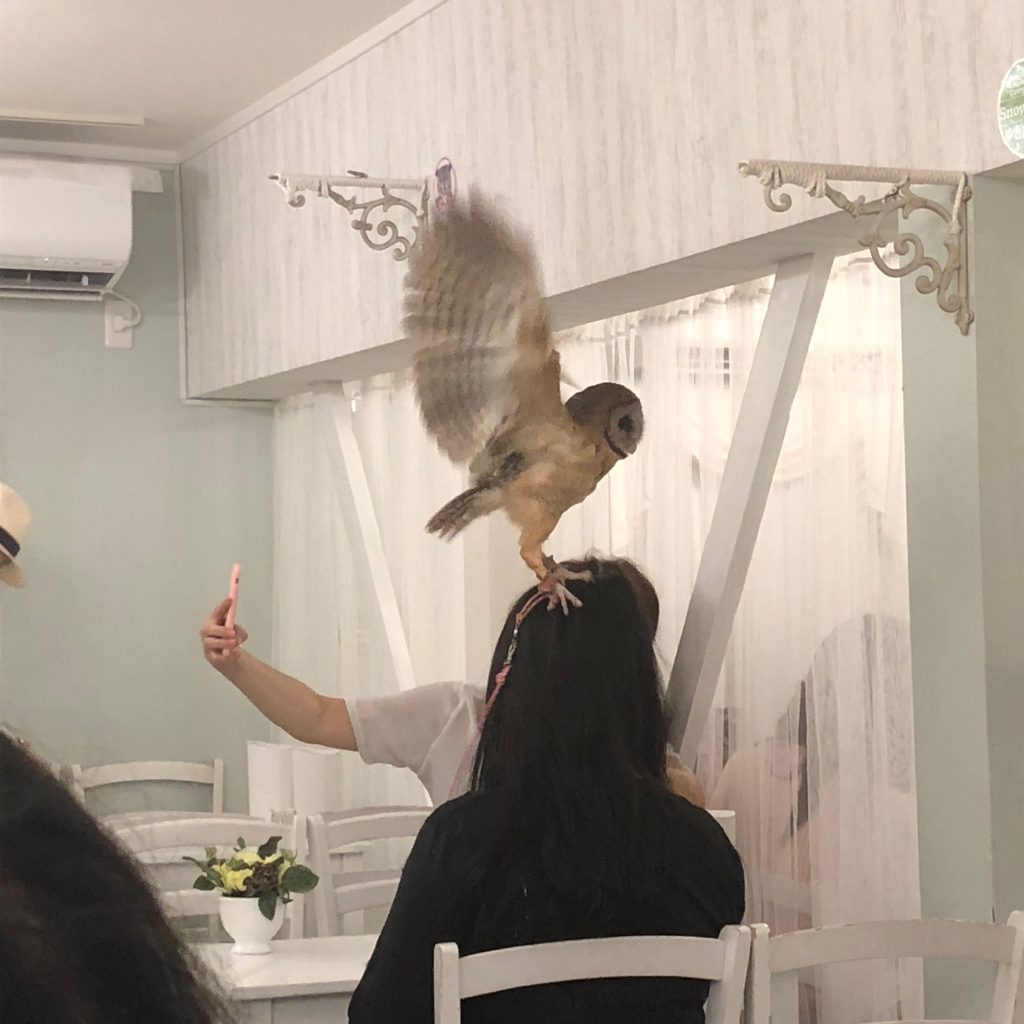
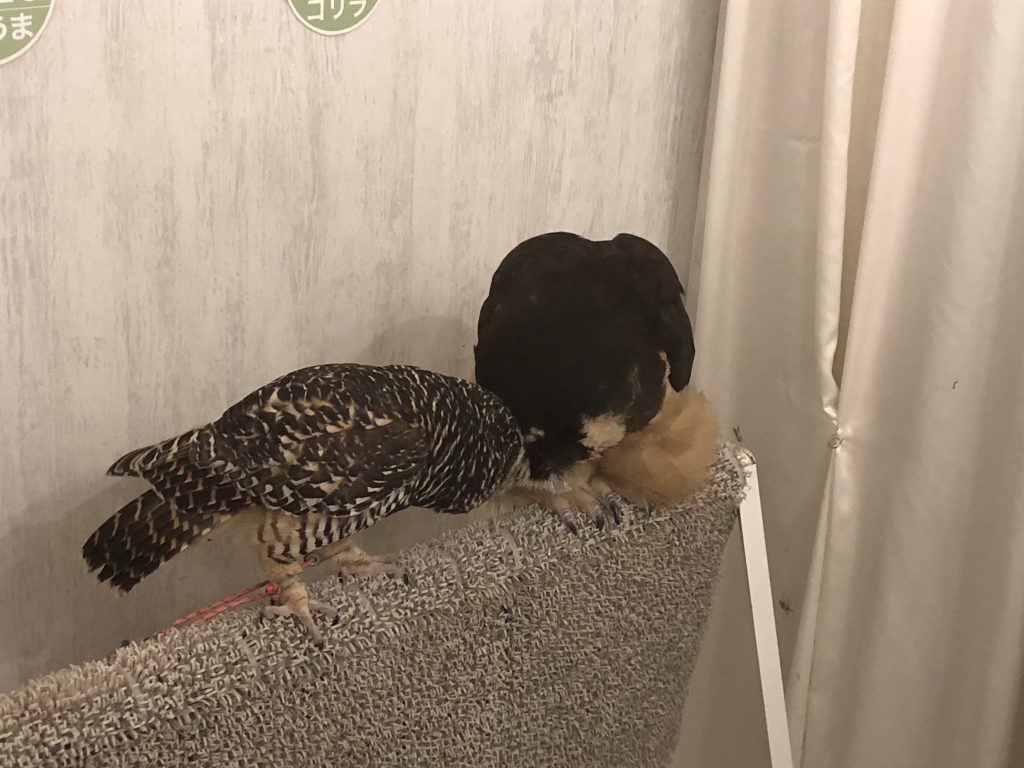
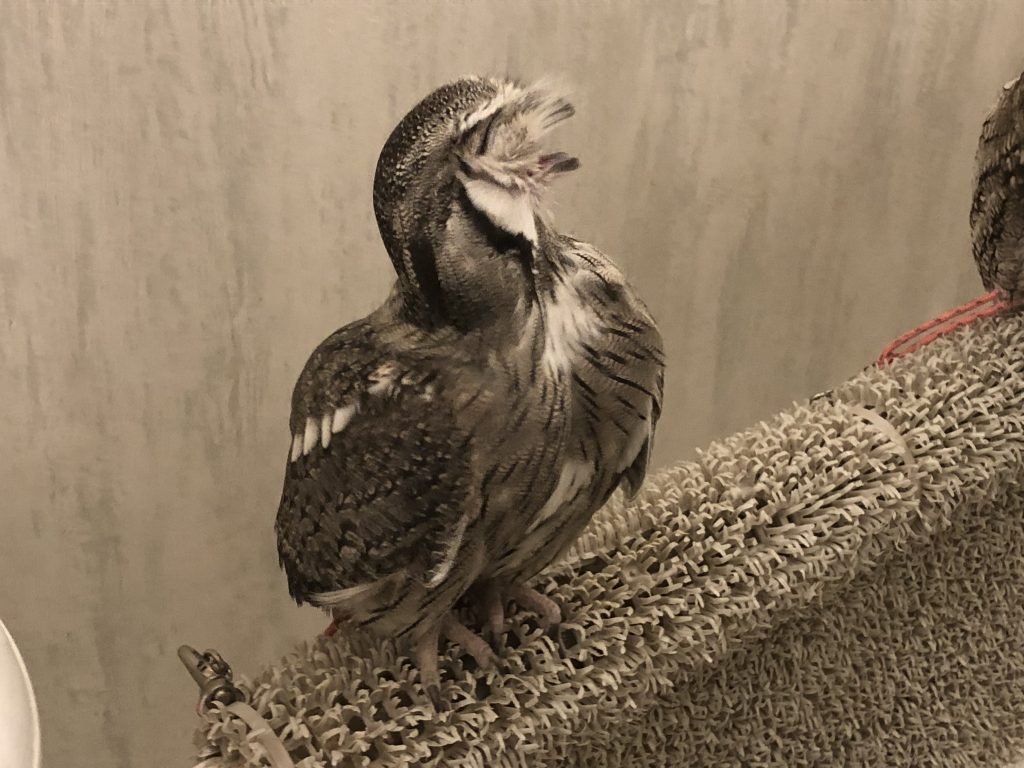
#me lmao
A very different animal cafe that I went to, this time in Kyoto’s Teramachi area, was a little otter cafe. This one had a very different vibe than the owl cafe. No one here was sedate. Otters, I quickly discovered, are kind of like a caffeinated, sugared-up child who’d then been given cocaine. They are hyper.
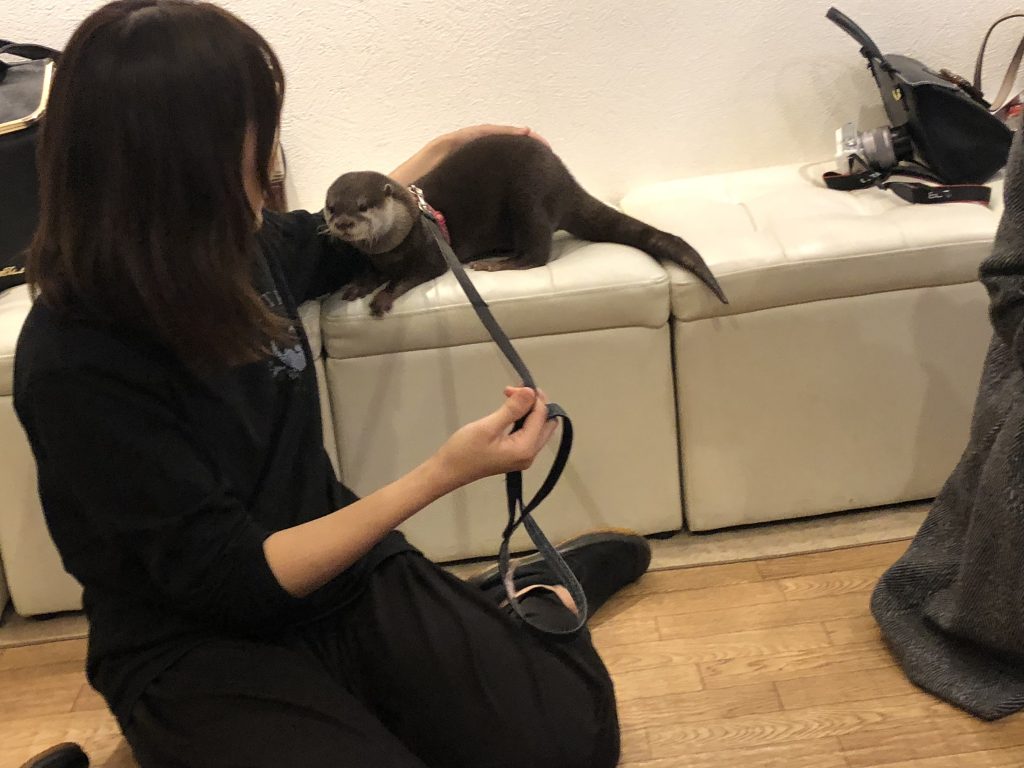
The cafe itself had a lot of toys for the otters to play with (including an aquarium we could watch them swim around in) as well as a large enclosure where they were held together and could play with each other. They’d bring one or two otters out for guests to play with while the others stayed in their plexiglas room. We could watch them, but they had some degree of privacy. Still, this was a much smaller cafe than many (probably because so much room was dedicated to the otters’ enclosure and aquarium), so I wouldn’t go with large groups. Also? Watch your fingers, those little guys nip.
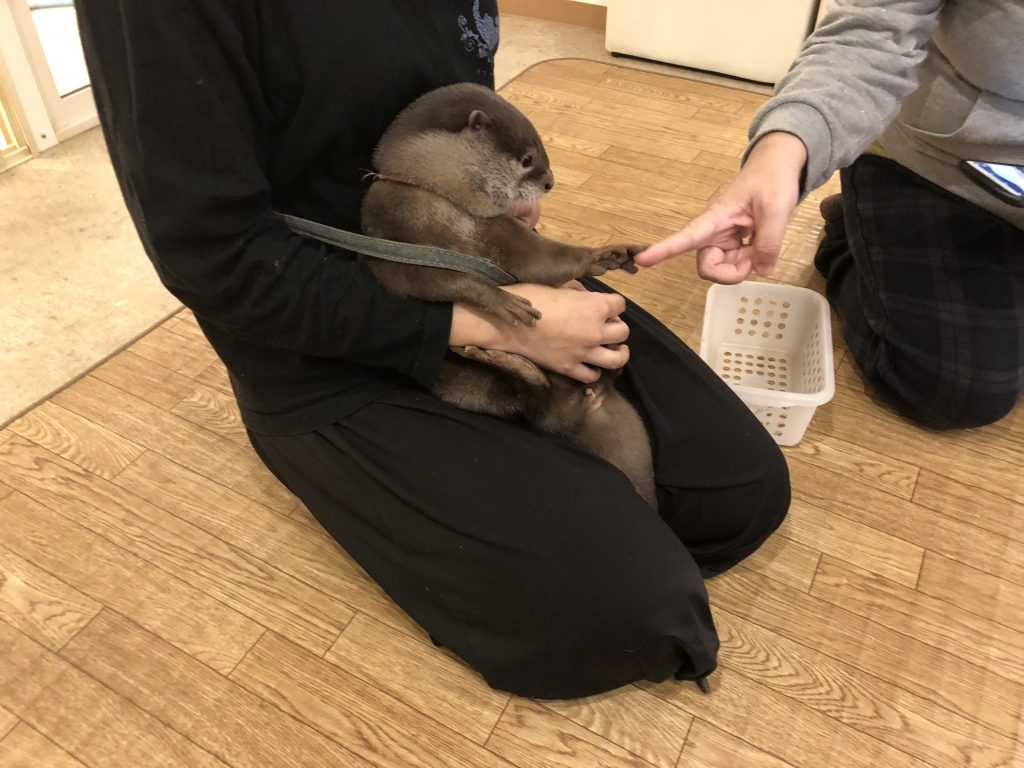
There’s something almost surreal about holding an otter, an animal I’ve only ever seen at zoos, at least until it starts squirming. There are a variety of toys you can use to play with them, and you’ll likely be given some treats to give them. (I’m reasonably sure it was cat food.) What was even cooler, though, was the babies.
Yes. They had baby otters.
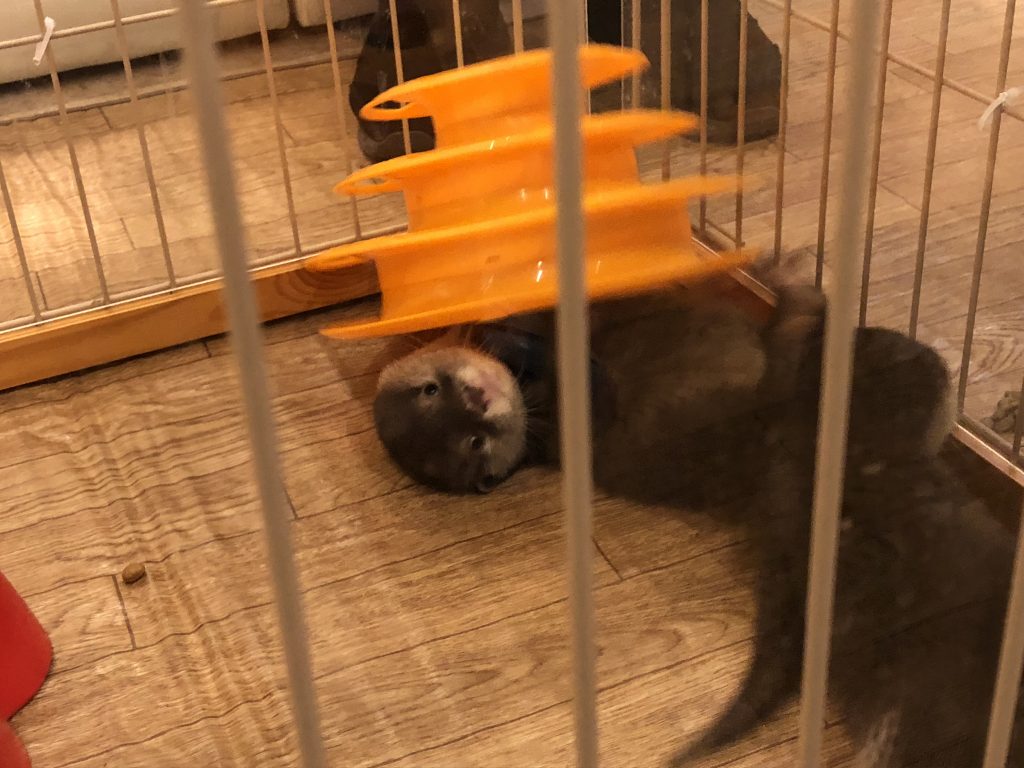
These were held in a smaller enclosure (think like a playpen) because oh boy, they wanted to explore the entire universe. It was a lot of fun to get to hold them and bottle-feed them (as in a gerbil-

(I promise she isn’t giving that baby the Vulcan death grip, it’s just an awkward angle.)
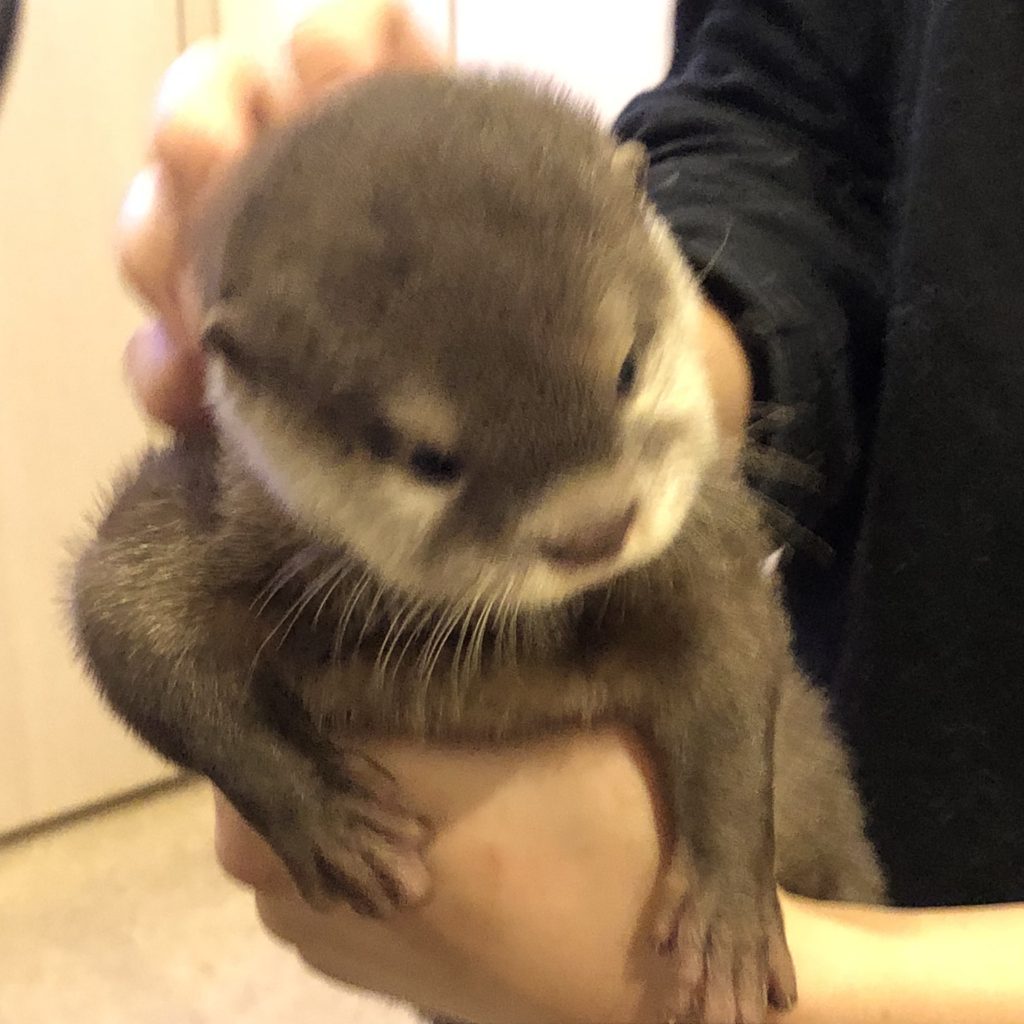
While I generally enjoyed the experience, I think I’d recommend the owl cafe more readily than the otter one. Not only were the owls a lot less disposed towards nipping, but I felt like they had an appropriate amount of space. The amount of space the otters had wasn’t bad (and I’ve seen zoo enclosures not much bigger) and the otters didn’t seem unhappy, but I felt like they probably needed more space to move around and swim. They definitely had, y’know, toys, cat trees, jungle gyms, etc. to play with, but watching an otter do repeated laps in a small aquarium had me questioning whether it was an ideal environment. (Though, to be fair, I think it’s probably better than some other otter cafes in Japan and they were clearly doing their best. There isn’t a lot of space anywhere in major cities in Japan, even for people.) I’m not sure that I’m enough of an expert to really know for sure, though. This isn’t an anti-rec, just not a recommendation as wholehearted as the one for Akiba Fukurou.
If you’re interested in trying out an animal cafe in Japan, you have so many options. There are cat cafes, reptile cafes, owl cafes, just about any small animal you could think of. Just do some research first to make sure the cafes you frequent are right for you and kind to the animals.

Kamakura
Kamakura is a city about 50 km from Tokyo and was the location of the nation’s capital during the Kamakura period, or around 1185-1333 CE. These days, it’s most famous for its daibutsu, or great Buddha statue. Daibutsu are fairly common throughout Japan, but the one in Kamakura is one of the most famous. It’s almost 800 years old and is an iconic sight in Japan.
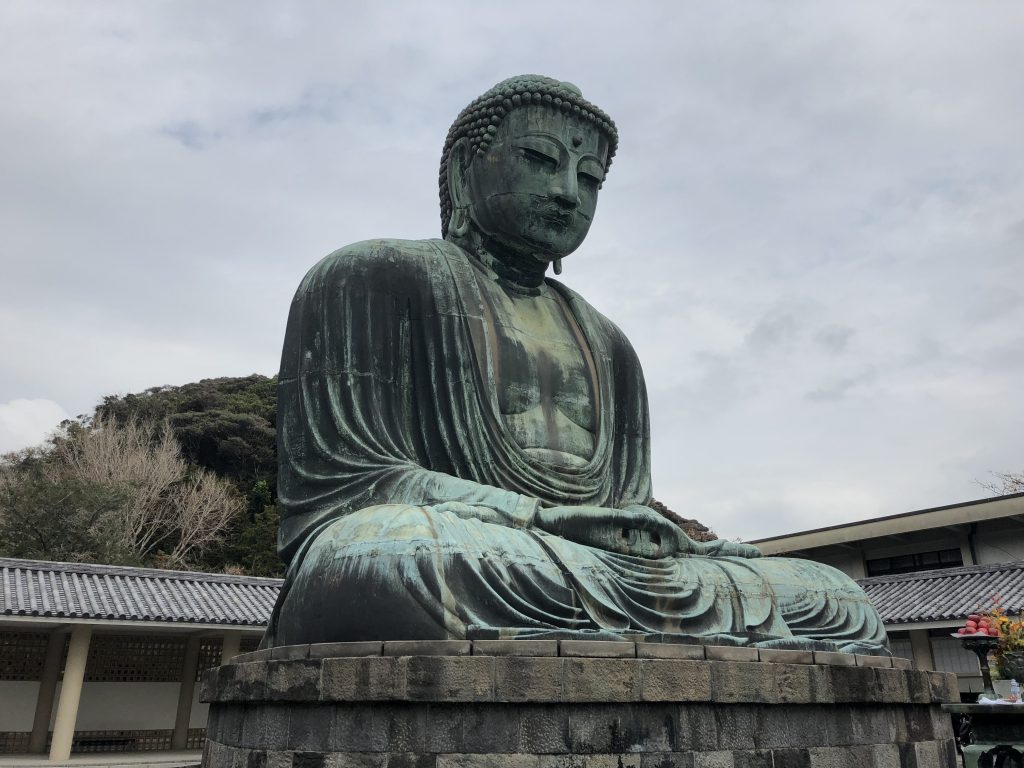
My mother actually made a special request to come out to Kamakura and see this daibutsu. Her father had visited Japan before she was born, and she’d grown up with slides from his travels. My grandfather recently passed away, and I think she really wanted to feel closer to him by visiting the places he’d been. (We still have his walking stick from Mt. Fuji hanging up in our house.) She vaguely remembered seeing a huge Buddha statue in his slides — seated, outdoor. And I figured this was our best bet.
So we all set out on the train to Kamakura to go to Kotokuin, the home of Kamakura’s famous daibutsu. It’s not hard to find once you get to the train station. There are signs all over the city pointing to this single temple, and there were crowds to match. That said, it really is an overwhelming site. We spent a long, long time just sitting on the bench and watching him. There’s such a gentle feeling suffusing the statue, even with the crowds. It’s a definite must-visit.
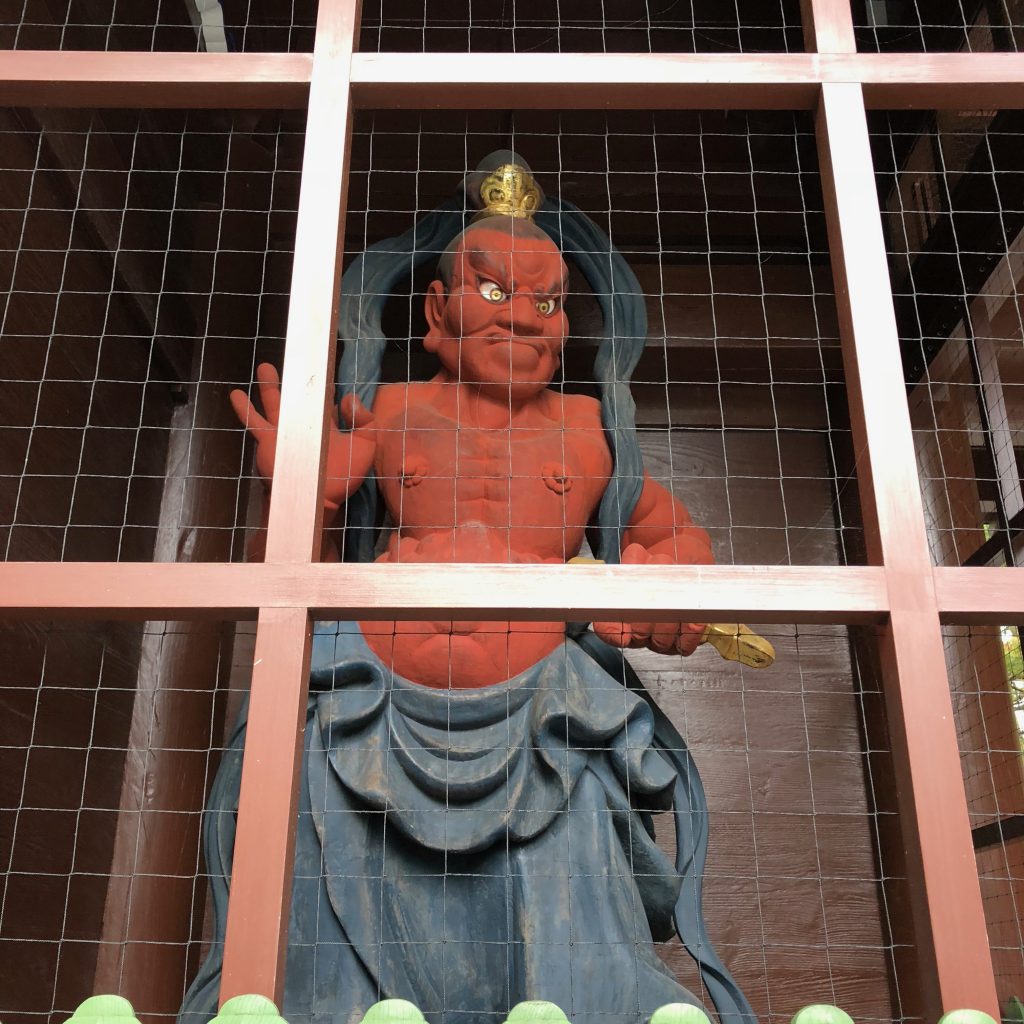
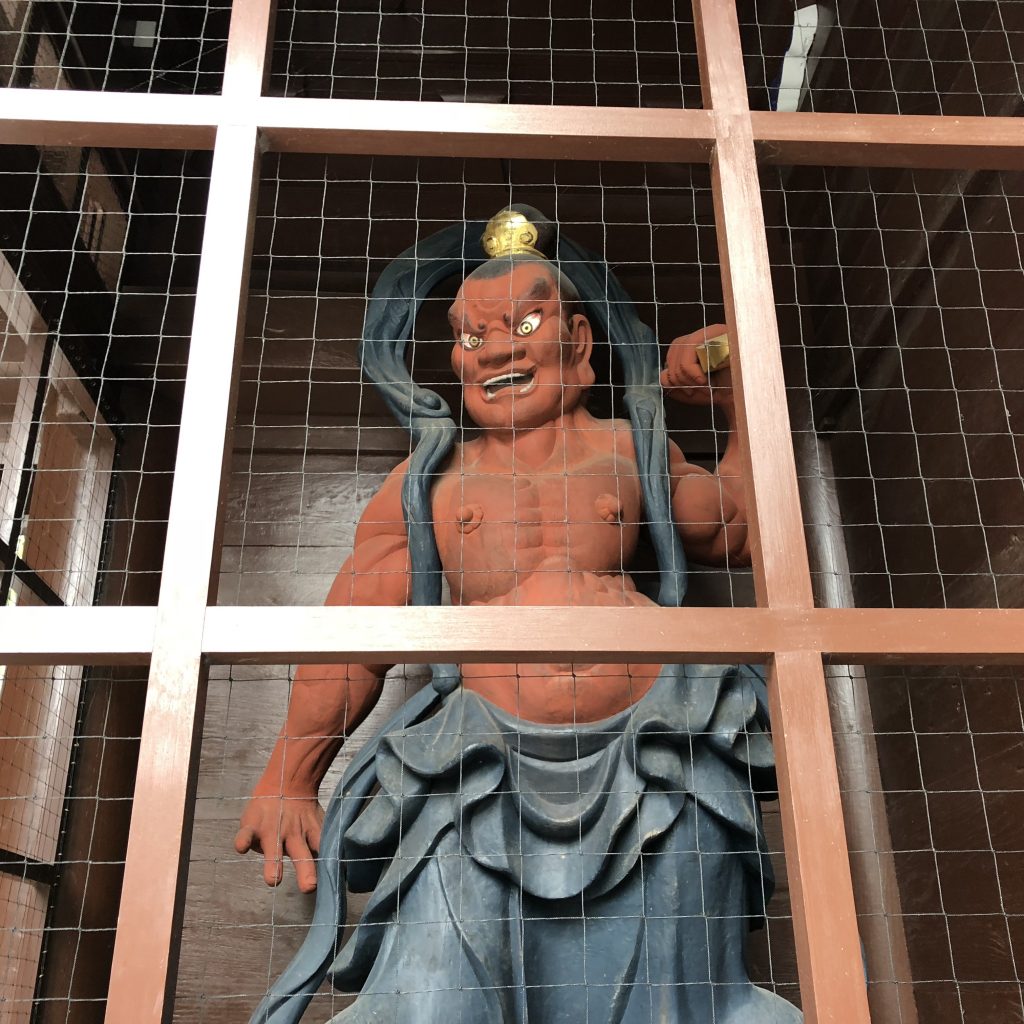
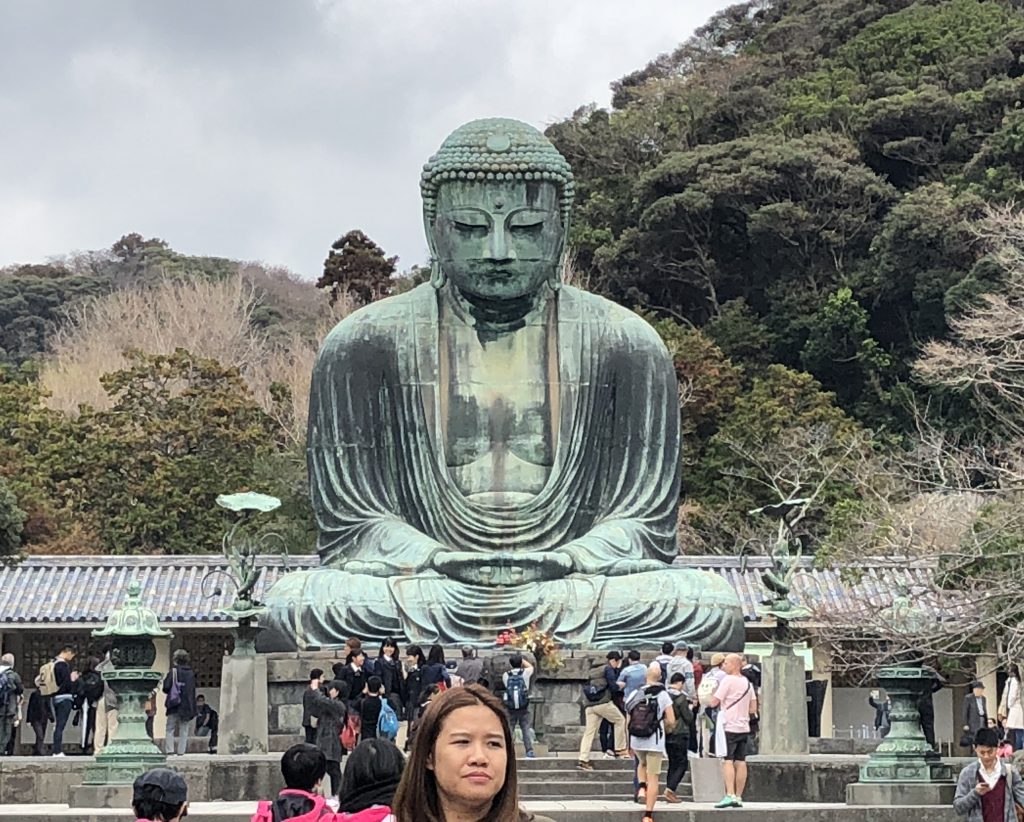
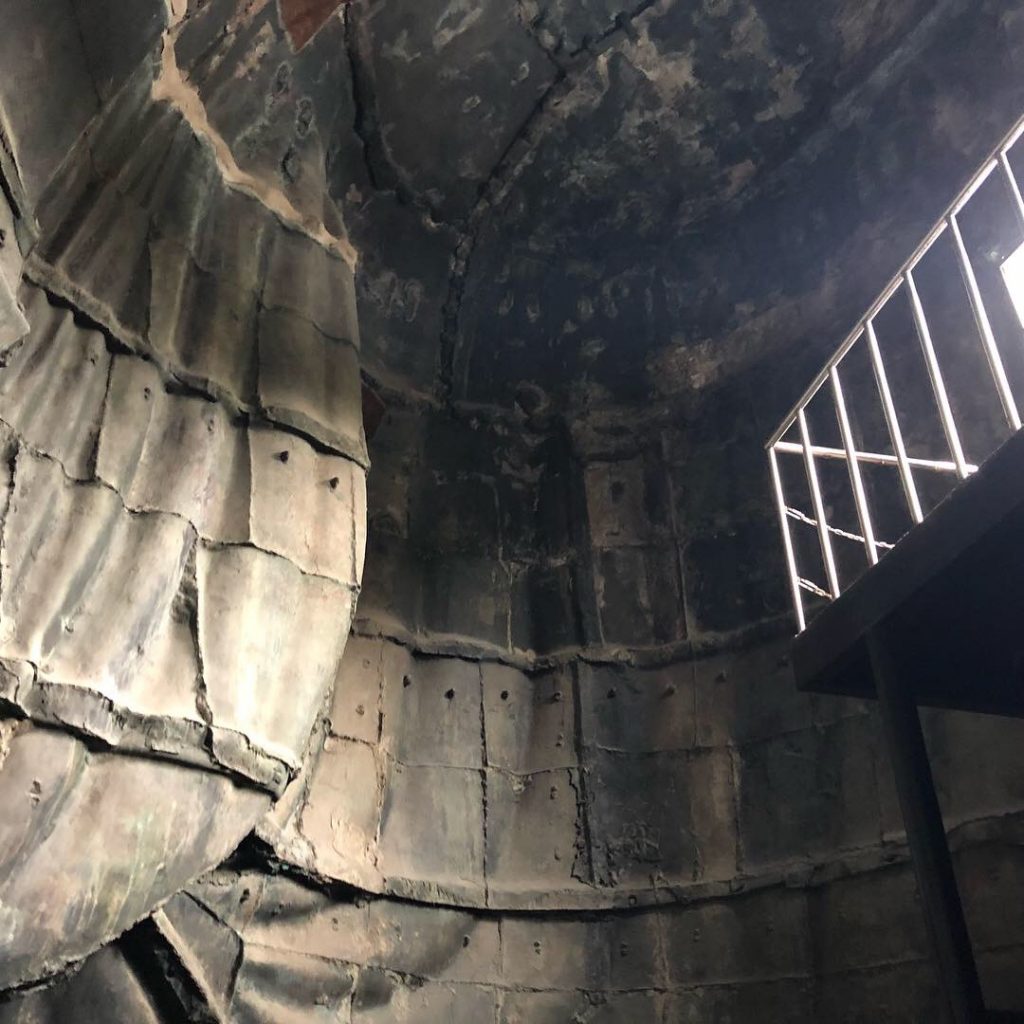
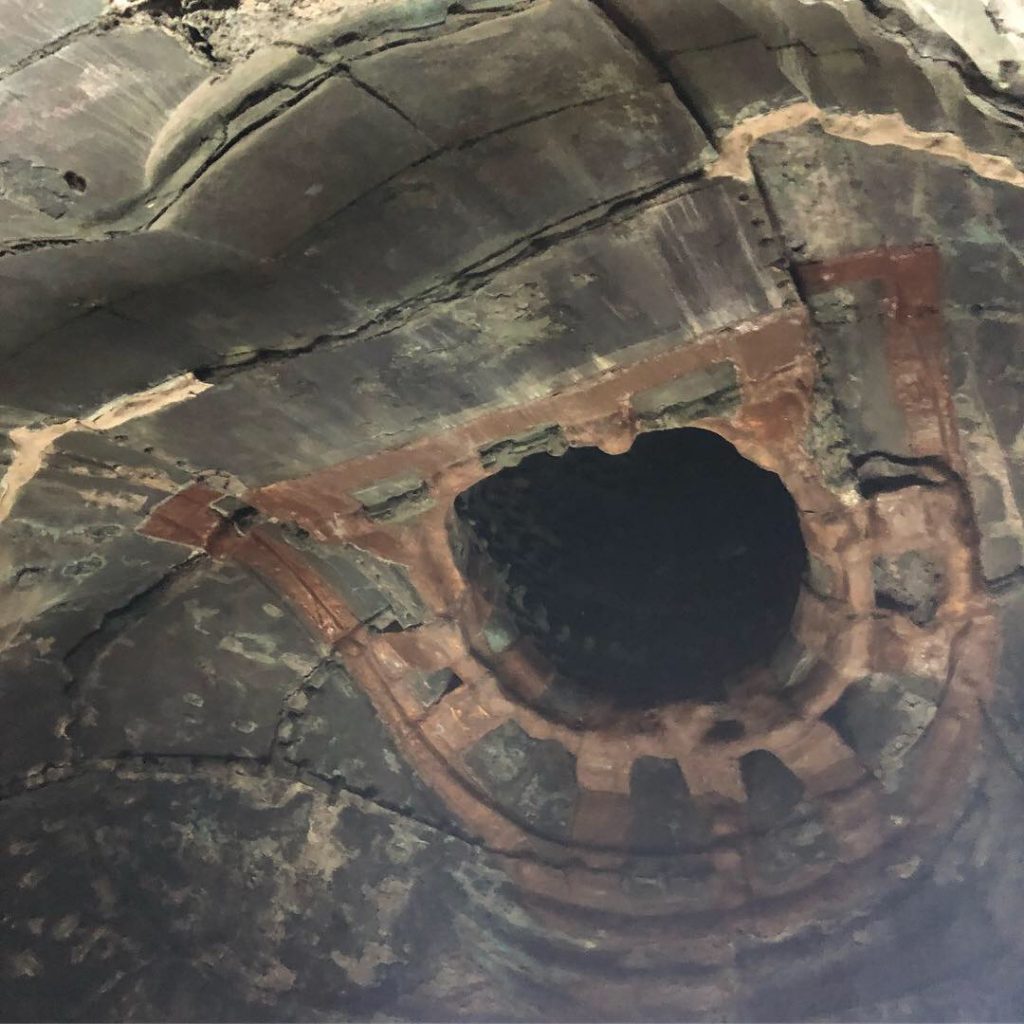
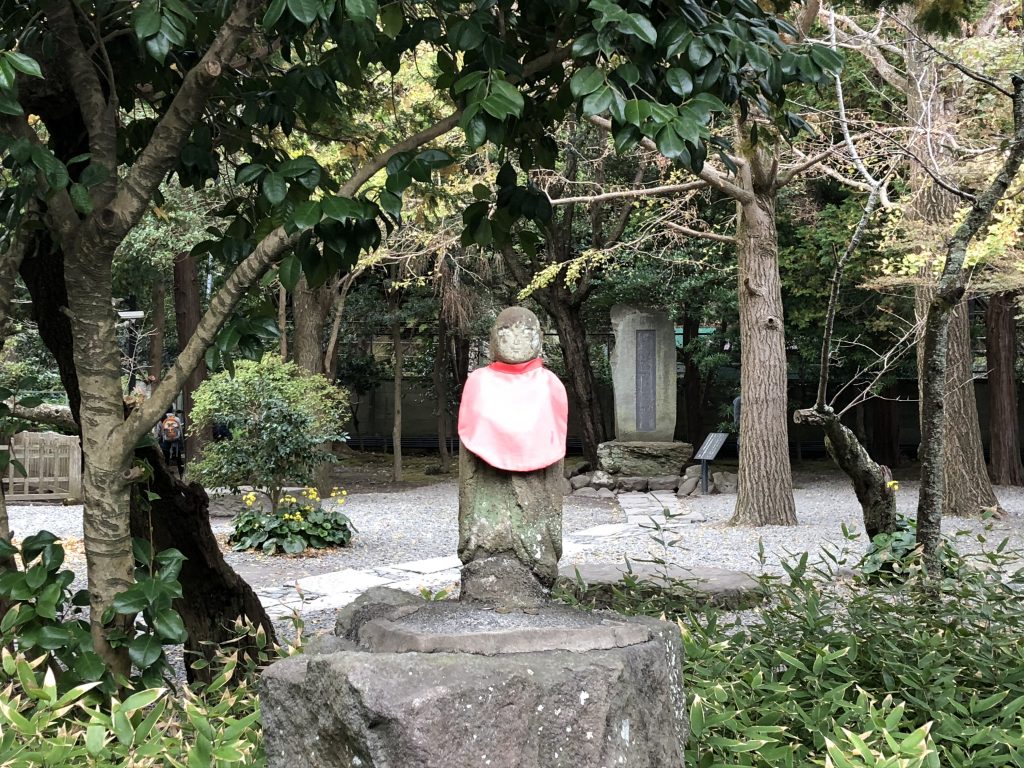
After visiting Kotokuin, my mother went off to find a knitting store and my father and I decided to walk to Hasedera. I didn’t know an awful lot about Hasedera, but I’d heard it was a really neat place to visit.
Y’all. I’m here to tell you. Nothing against the daibutsu, but Hasedera is freaking amazing and if you go to Kamakura, you have got to hit that place up — and leave quite a bit of time to visit it. The grounds themselves are beautiful, but there’s also a museum, a cave, and an absolutely incredible golden Kannon statue that, quite frankly, took my breath away. (Kannon is one of the most popular and prominent bodhisattvas that you’ll find in Japan. She is the goddess of mercy, and the Japanese version of the Chinese Guanyin.)
Hasedera isn’t that far away from Kotokuin, but it was just long enough to walk past a bunch of snack stands that of course we had to test out. I got myself a purple sweet potato croquette and yes, please.
Once we got there, I dropped off my stamp book and then we started taking a look around. There are quite a few smaller temples and neat statues around the complex, but I’m going to focus on a few of the places that I loved most.
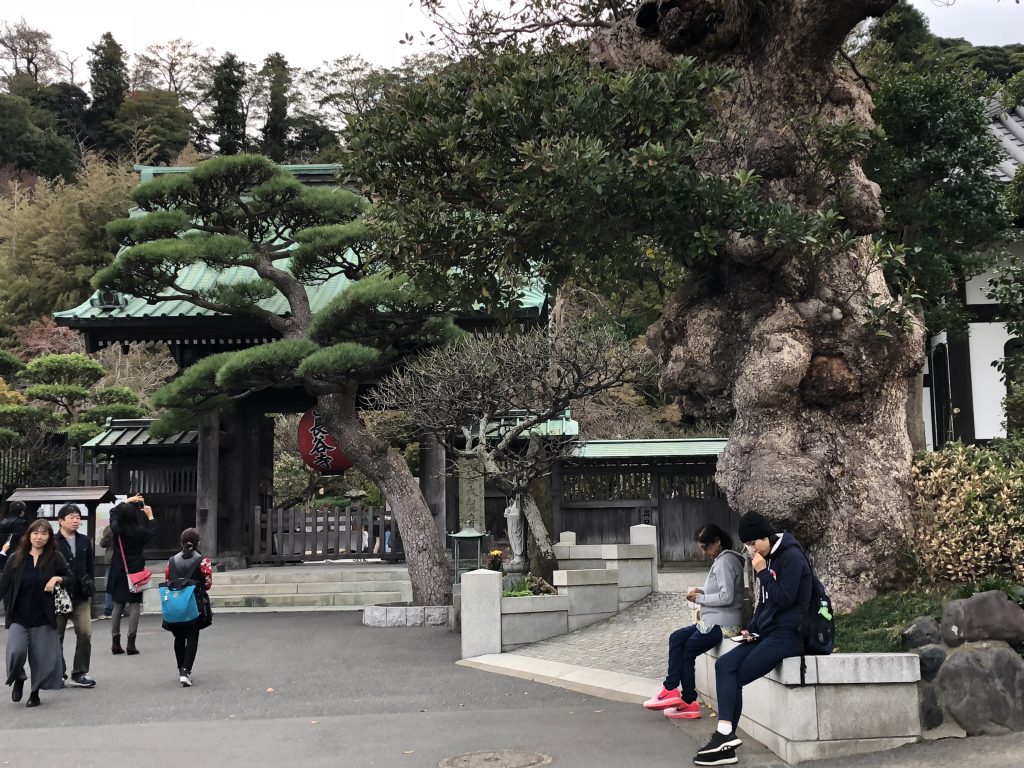
First of all, the cave. THE CAVE. There is a small cave on the grounds that’s dedicated to Benzaiten, the Buddhist goddess of music, beauty, wealth, and wisdom. (She is in fact the Japanese import of the Hindu goddess Sarasvati.) She can usually be identified by the biwa (a type of Japanese lute) that she holds. The cave at Hasedera has statues of Benzaiten and her attendants carved into the walls, and as you venture deeper into the cave, has multiple altars and statues dedicated to the goddess. It is just so, so beautiful inside. I could have stayed there for hours.
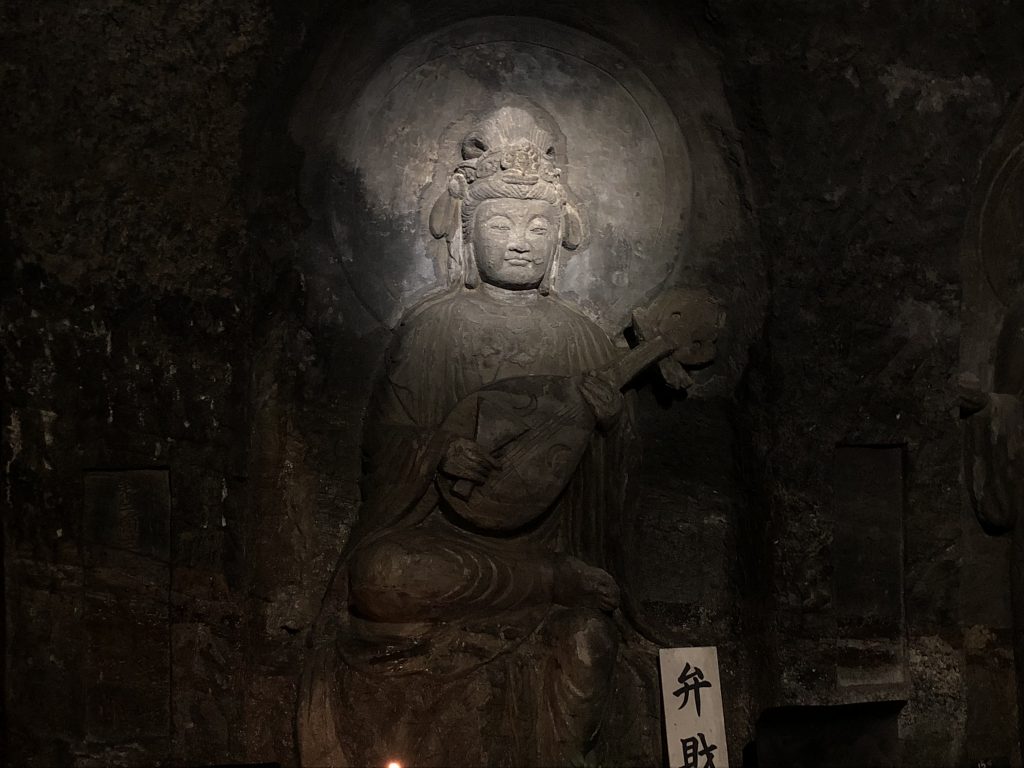
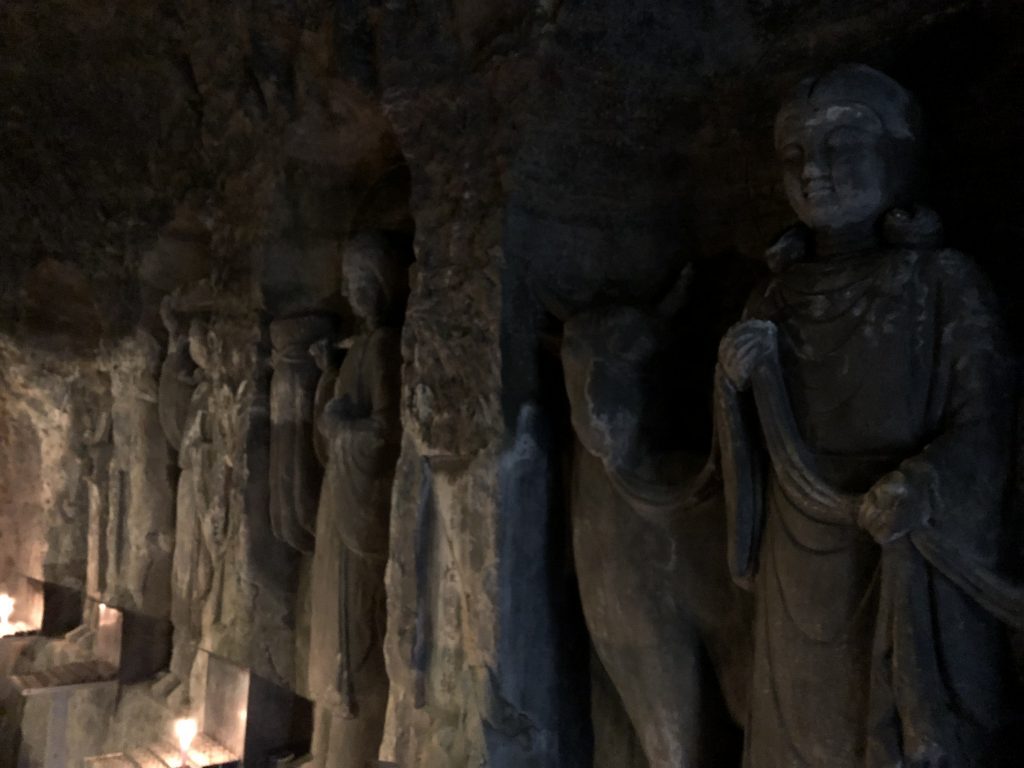
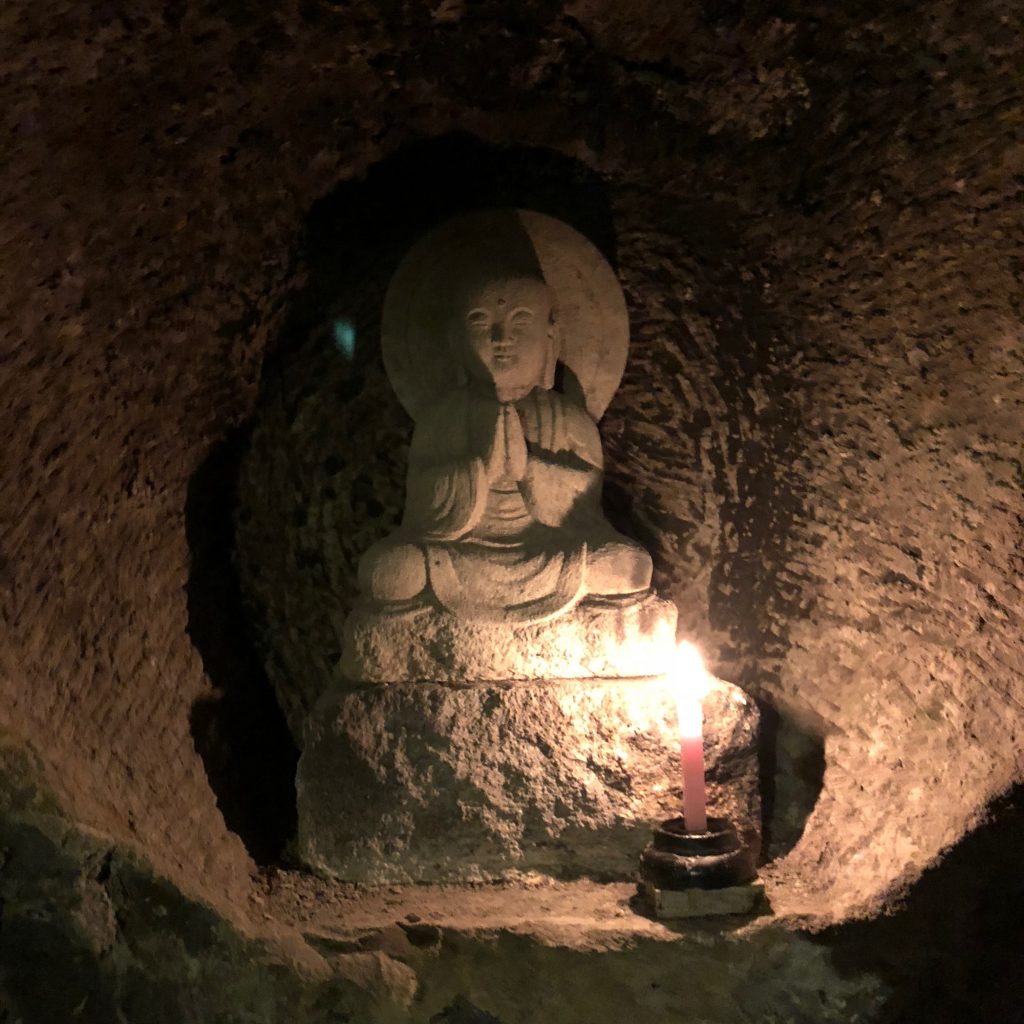
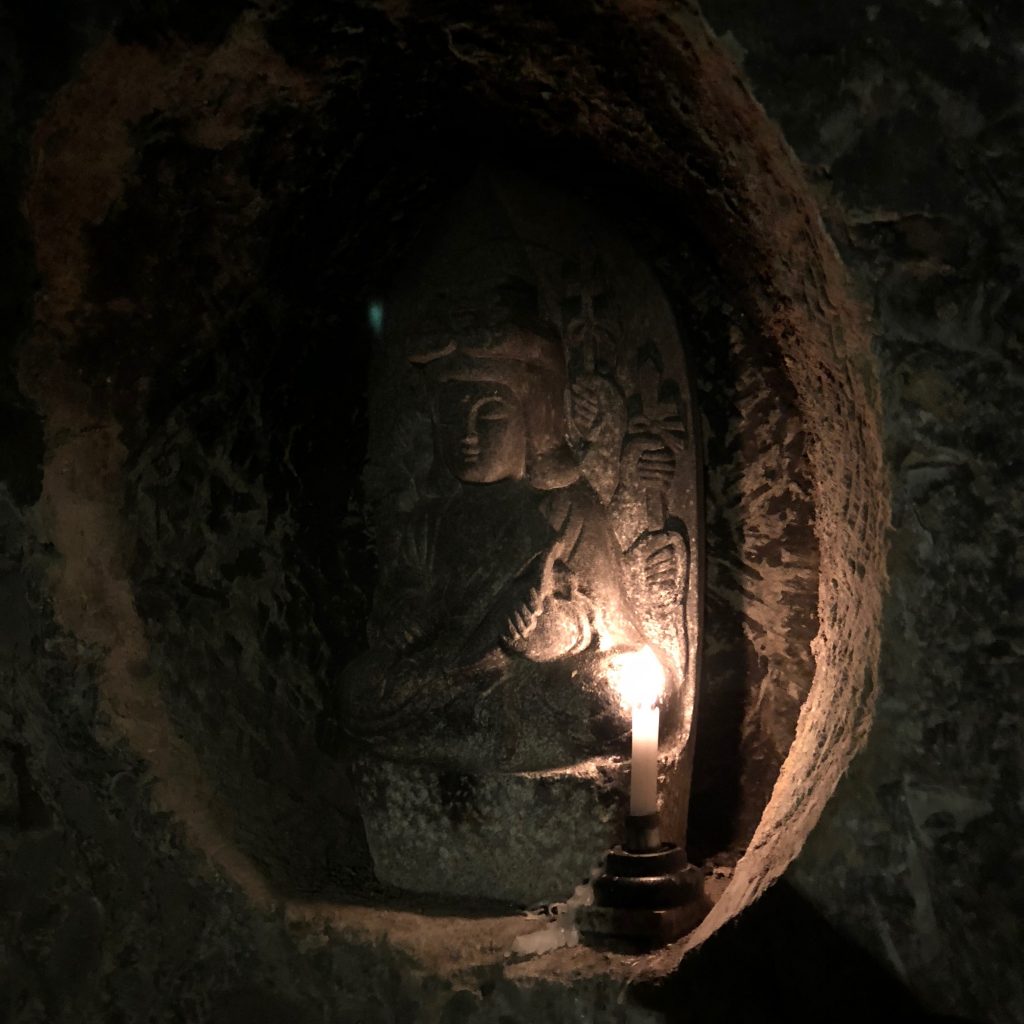
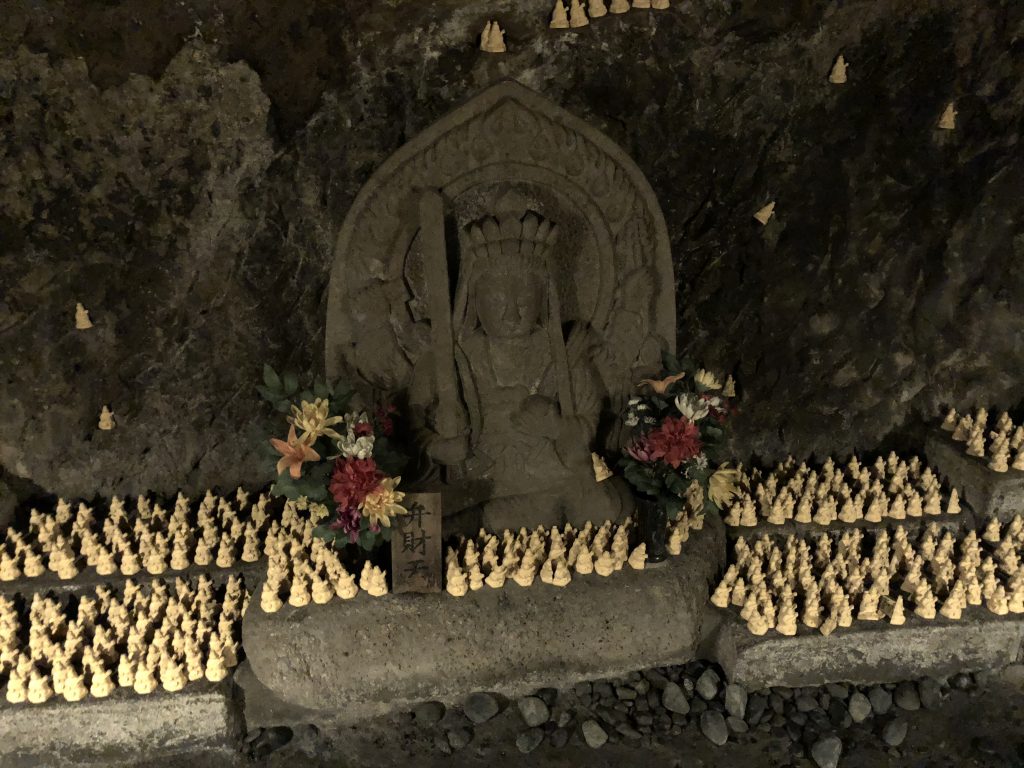
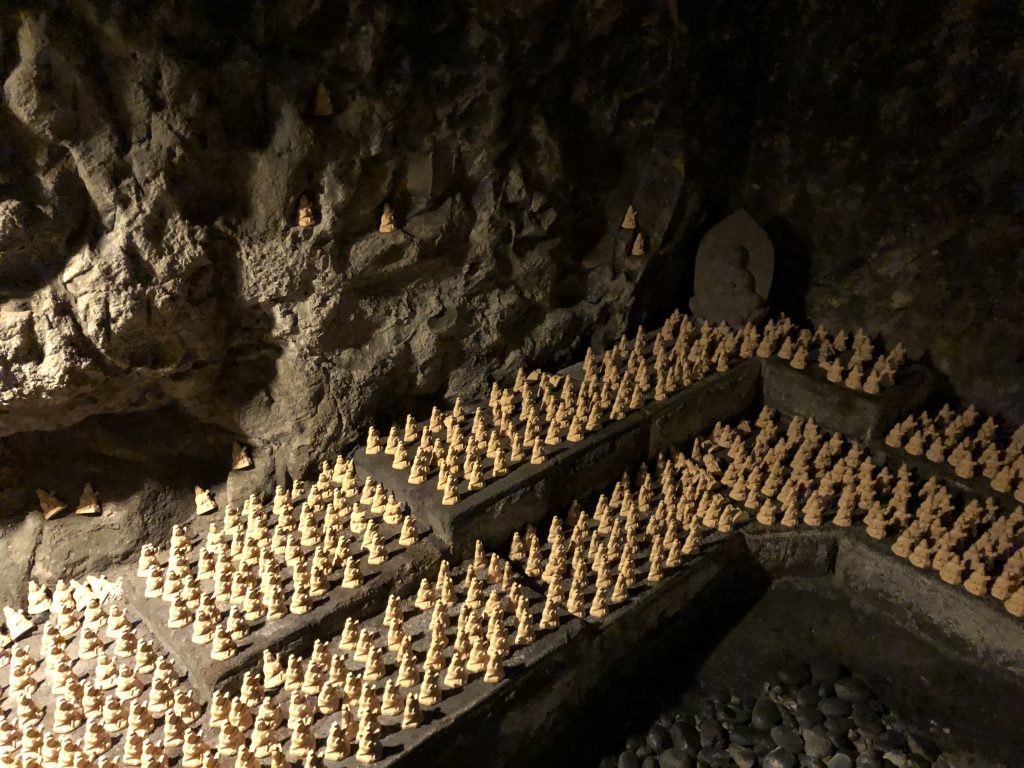
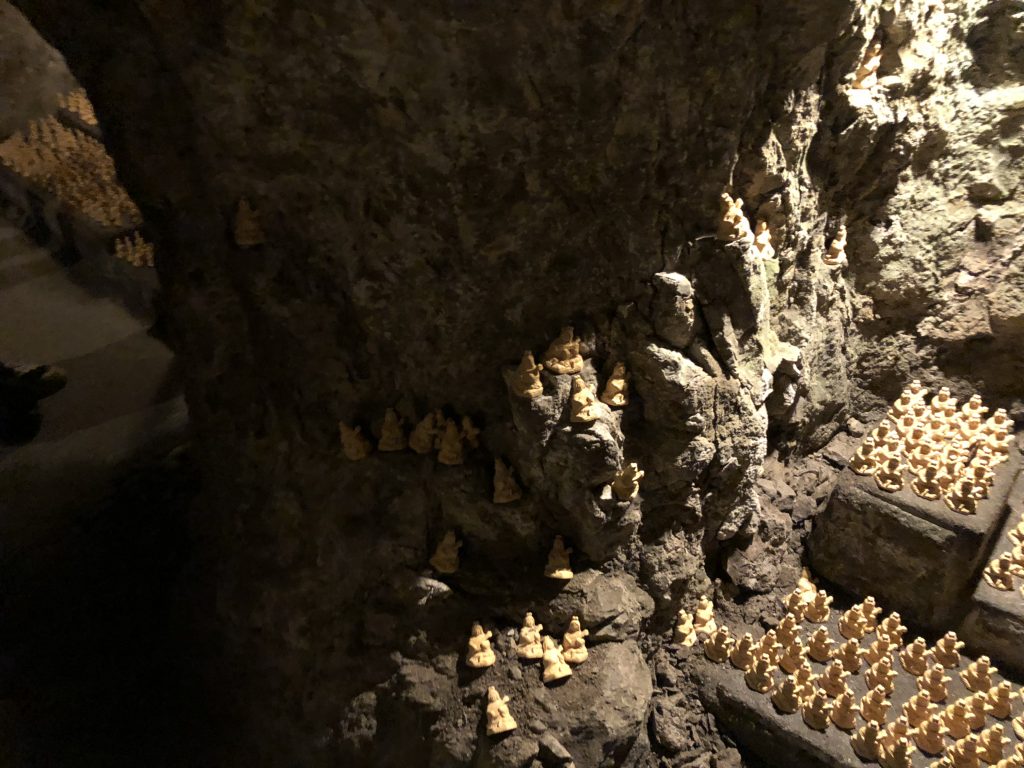
Unfortunately, the museum was closing shortly and we had a lot of stairs to climb to get to it. The museum itself features a human-sized golden statue of Kannon as well as statues of her thirty-three avatars. There are also several ancient artifacts such as the old temple bell and assorted kakebotoke (hanging plaques). It’s a small but lovely little museum and I thoroughly enjoyed it.
Next to the museum, though. Next to it! I’d heard about a Kannon statue at Hasedera, and while the one inside the museum was very nice, I’ll admit to being a little disappointed. I was so wrong. We walked out of the museum and into an adjacent room with one of the most beautiful statues I’d ever seen. The golden Kannon is enormous, 9.18 m (30.1 feet) tall, and splendidly regal. I did not take pictures in the museum or of the golden Kannon itself as we were instructed not to out of respect. That said, I’m sure you can find photos if you look — and I’m sure they won’t do the magnitude of it the least little bit of justice. It was yet another part of Hasedera that I could have spent an hour in, just staring.
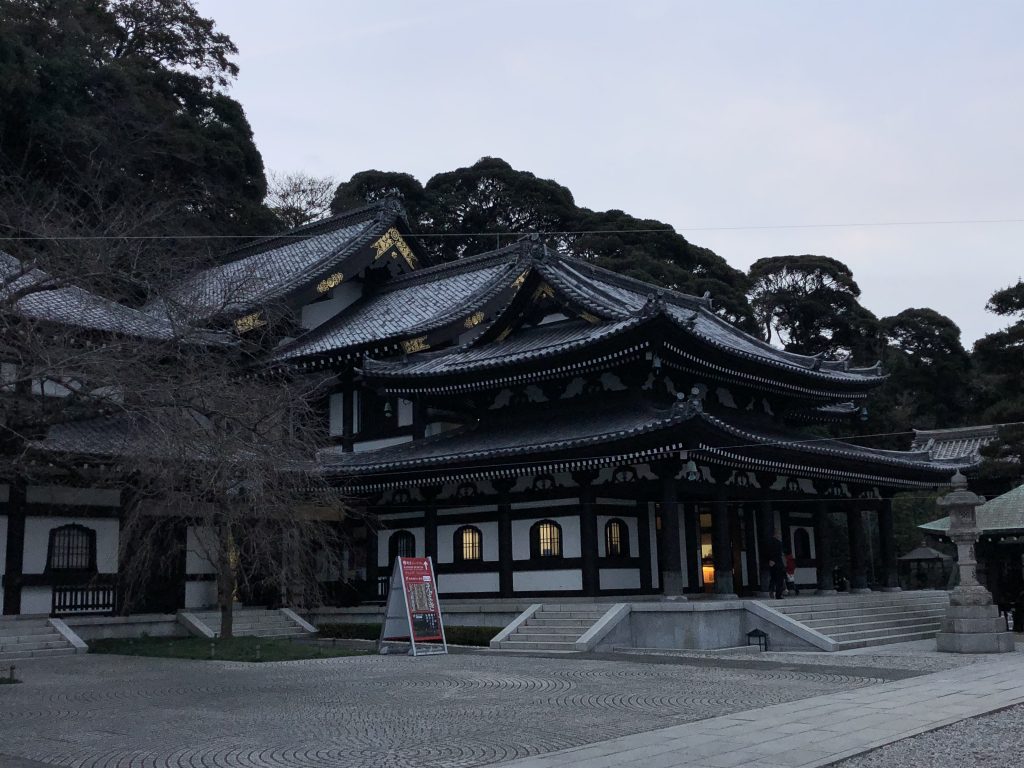
Outside of the museum area, there’s a viewing/picnic area that has a gorgeous view of Kamakura. After sitting down and taking a break after going up all those stairs (a mad dash that my body did not thank me for later), and after exploring the statues in this area, we started back down.
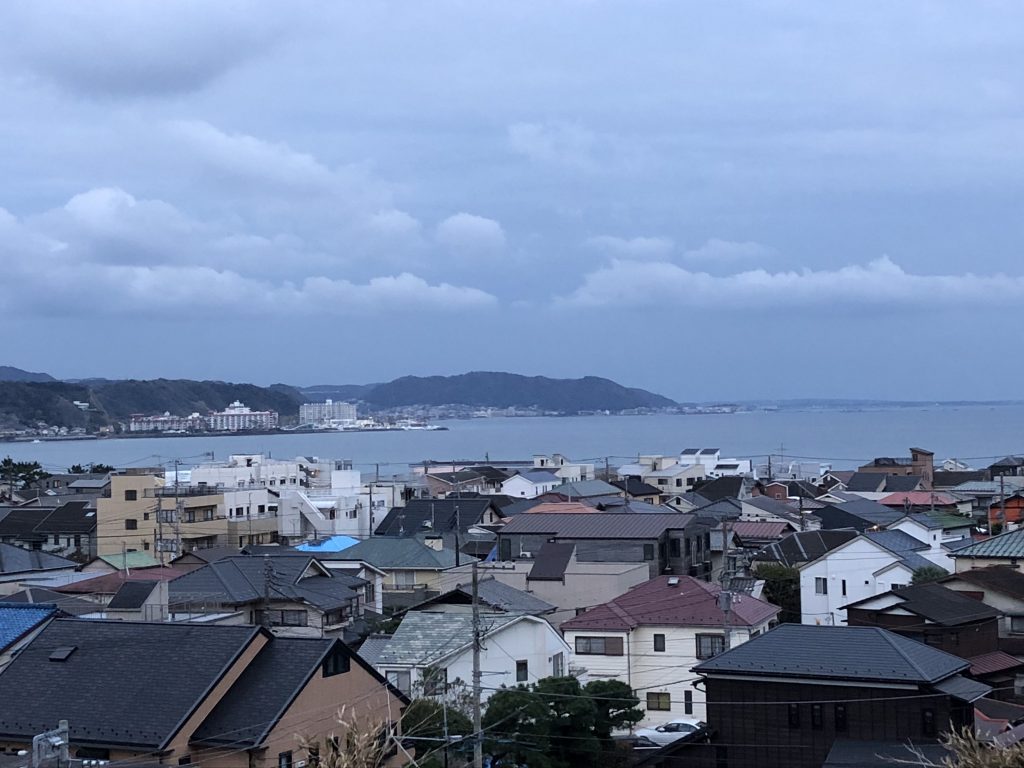
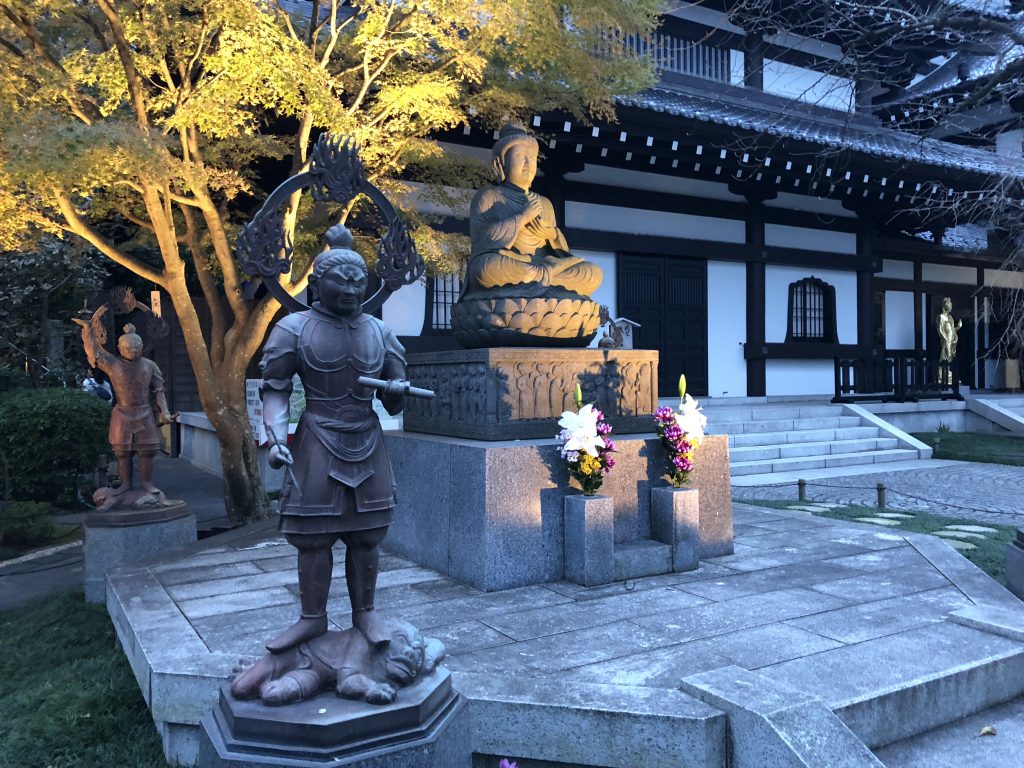
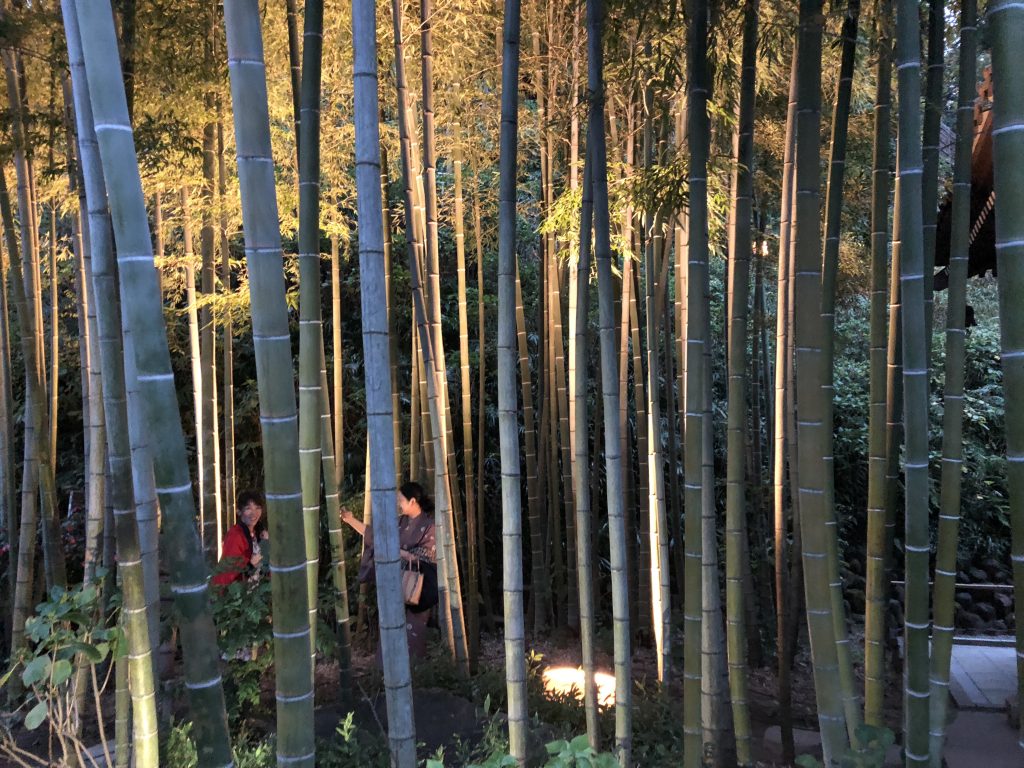
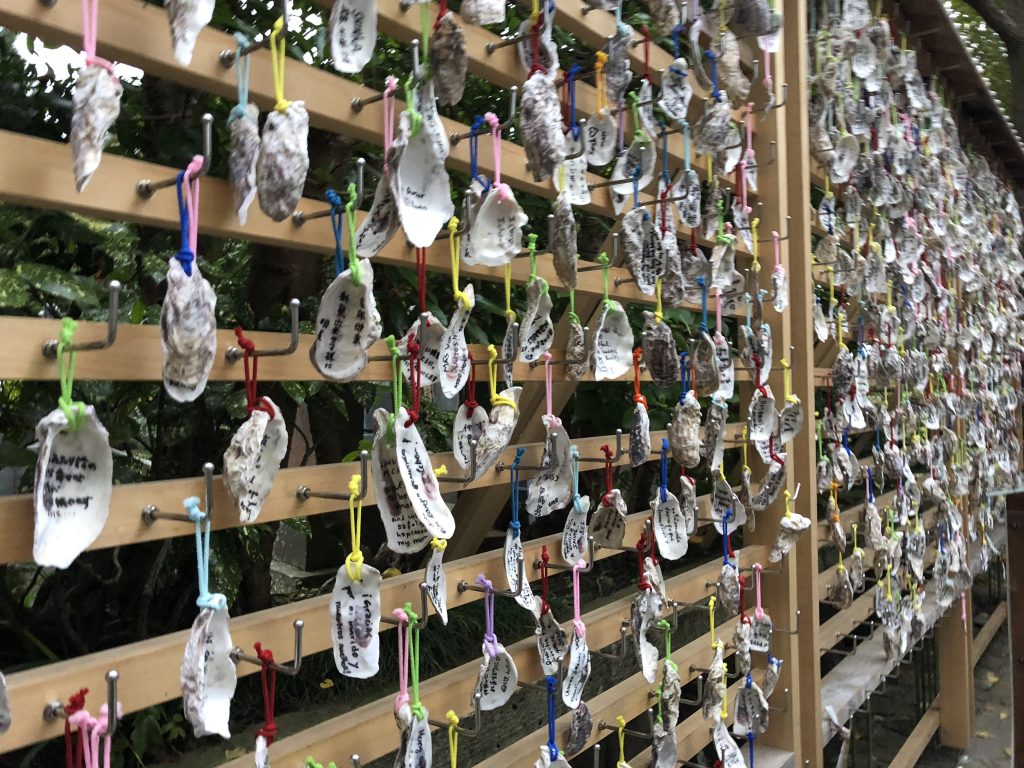
The light started to get bad as we made our way back down, but there’s one more part of Hasedera I’d really love to talk about. There’s a stunning little section of the temple complex dedicated to the bodhisattva Jizo in his role as guide to deceased children. There is a ritual known as mizuko kuyo in Japan that’s sometimes undertaken after an infant dies. (Stillbirths, miscarriages, and abortions are included in this; it’s a somewhat controversial practice for many reasons.) One of the reasons why Jizo is so popular is that he watches over children, particularly as they navigate the afterlife. He’s said to hide children under his robes and secret them across the riverbanks of the dead. That’s why you will find thousands of tiny Jizo statues in this little garden at Hasedera. These are statues used in mizuko kuyo, and as such, the area should be treated with respect. Regardless of one’s personal feelings about the rite, these statues are proof of an awful lot of grief and terrible human experiences. It’s not unlike a graveyard.
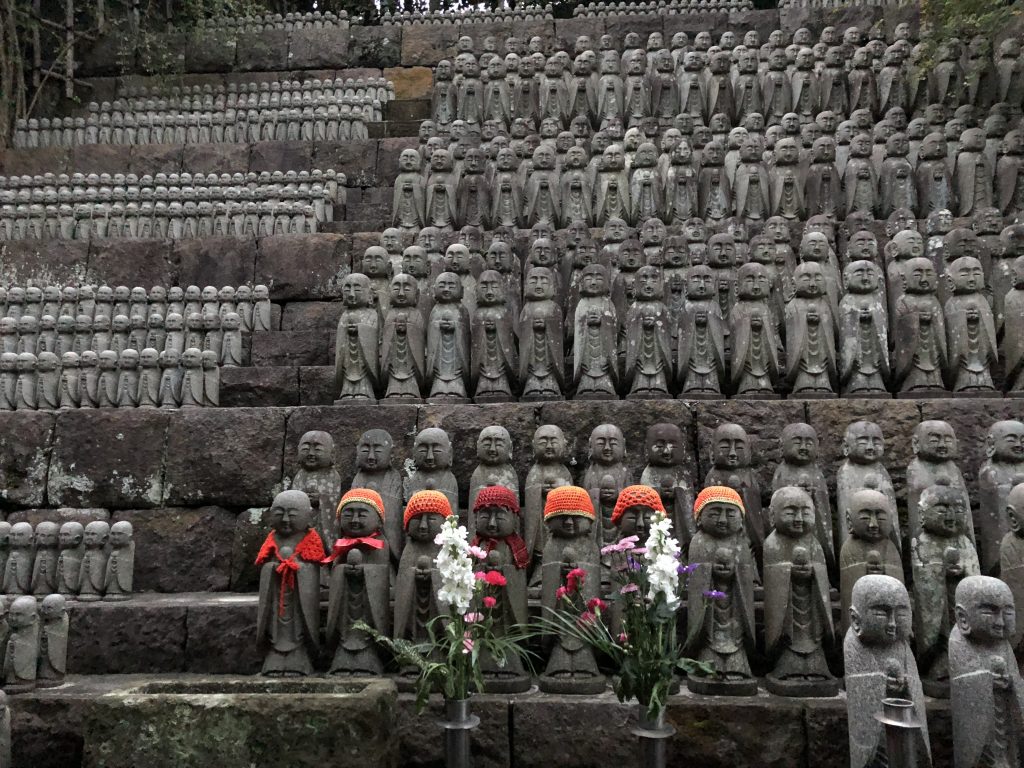
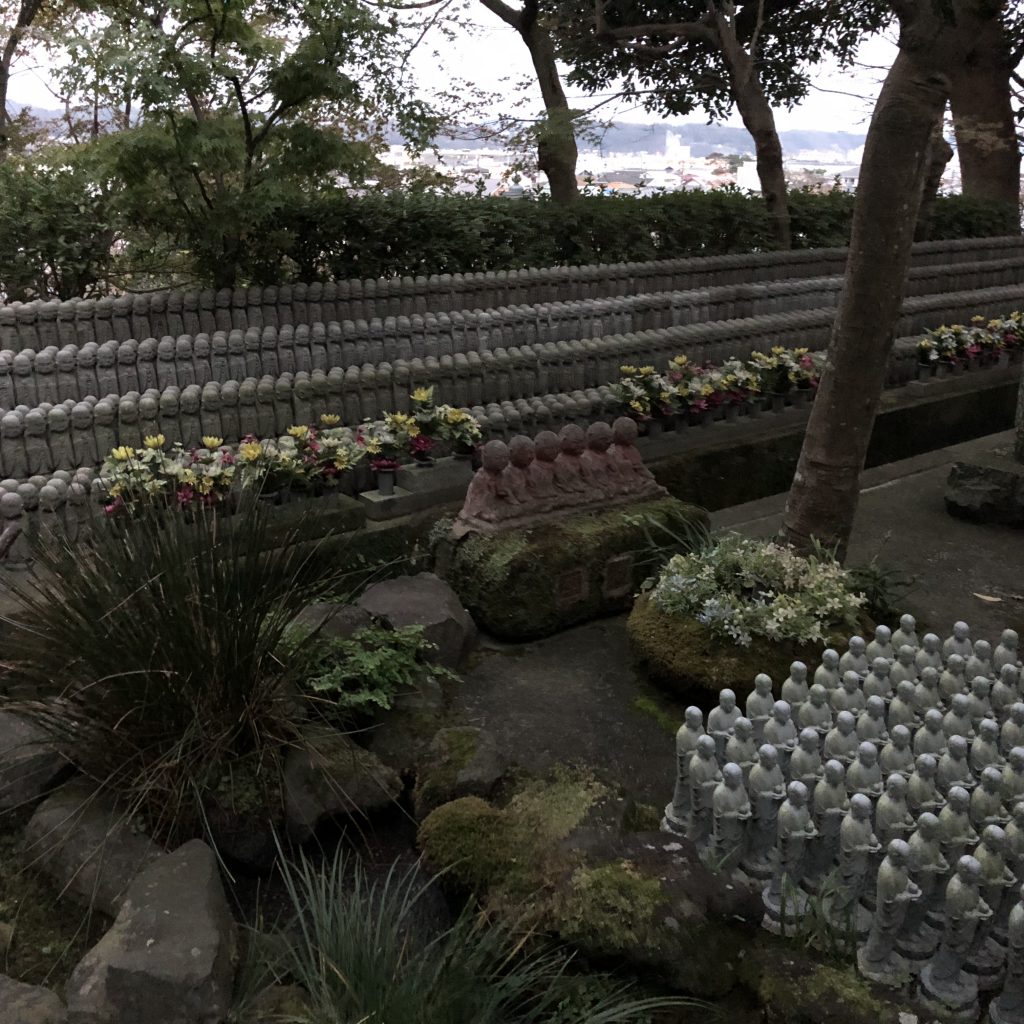
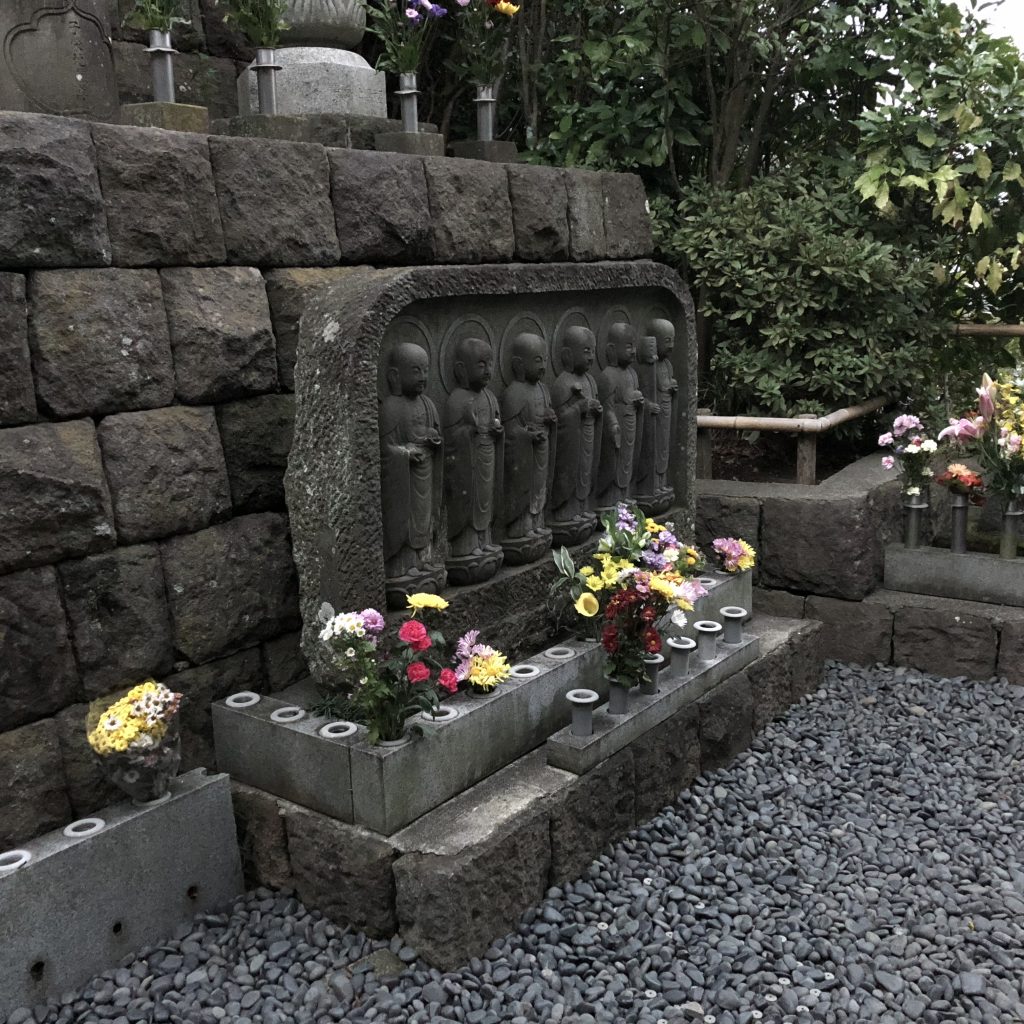
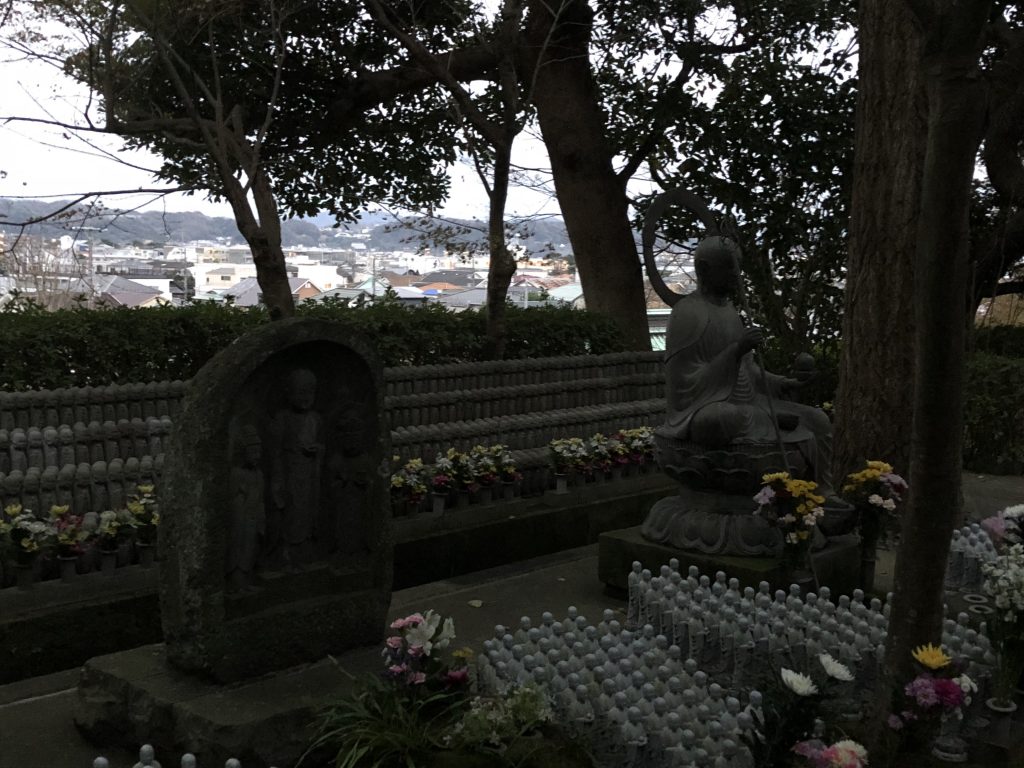
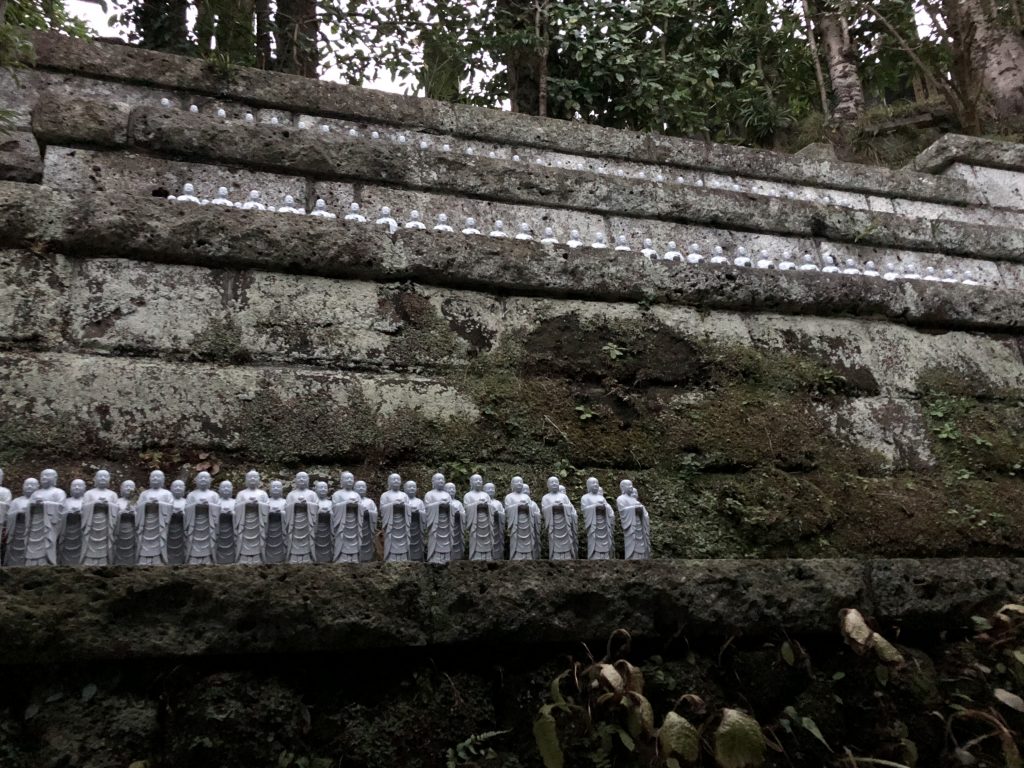
Still, there are joyful Jizo to be found on Hasedera’s grounds as well. The happy Nagomi Jizo greets guests as they arrive, and we passed Ryoen Jizo on our way out. Jizo, like all of us, contains multitudes.
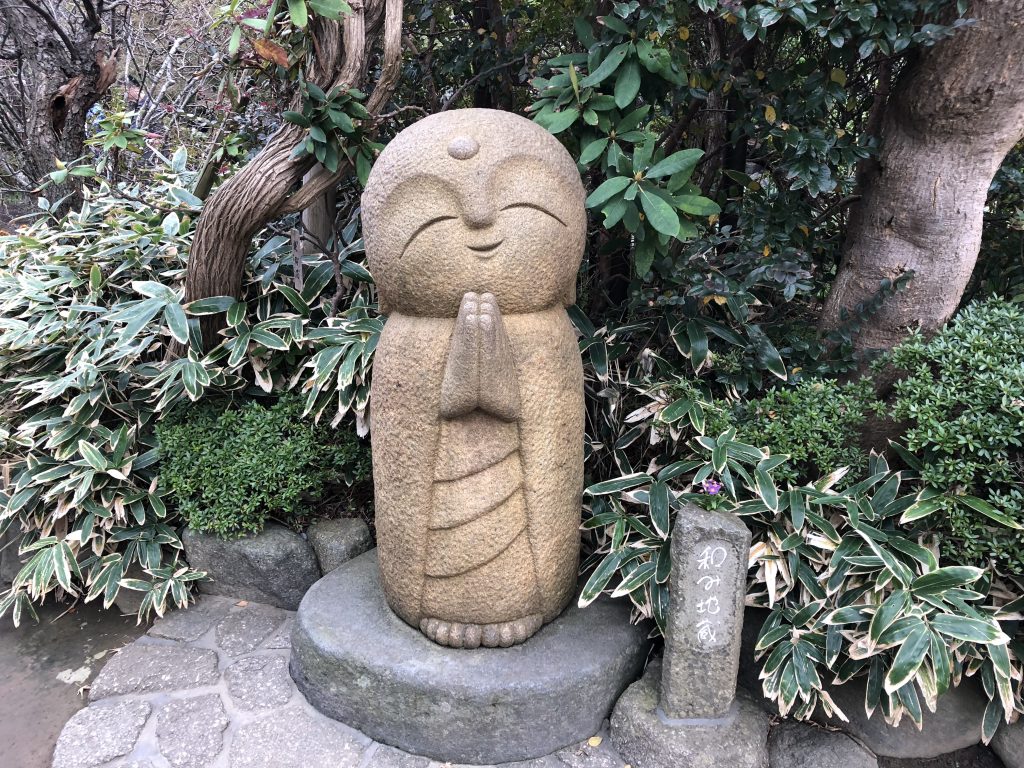
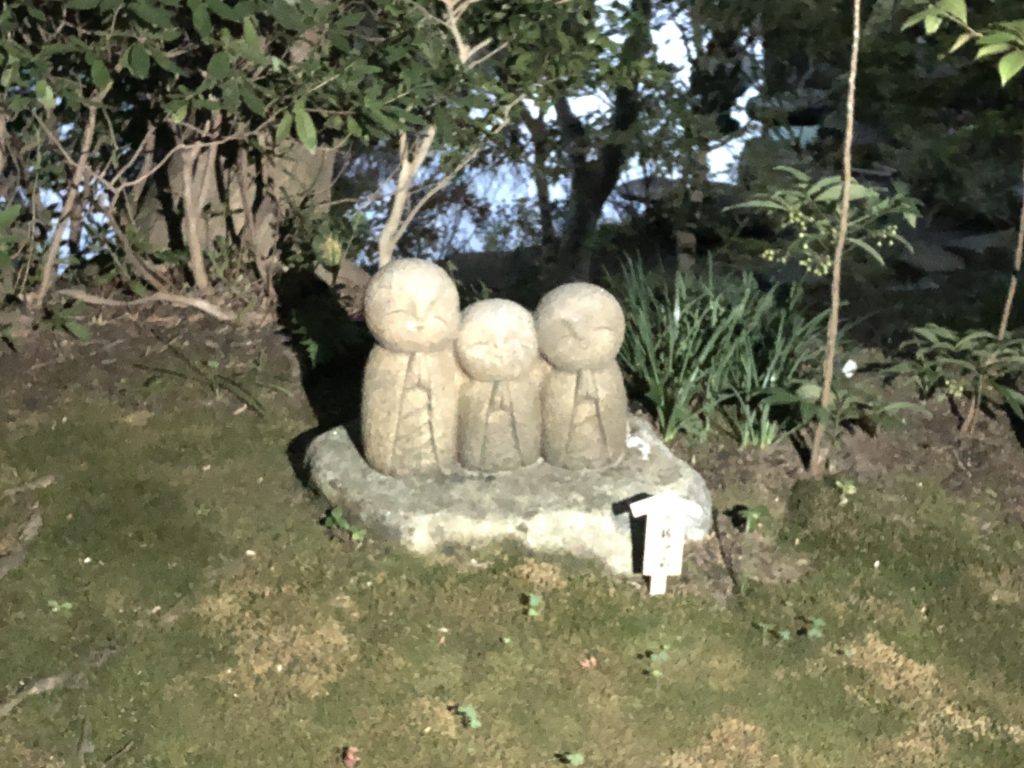
After we left Hasedera, we got dinner near the train station before heading back to Tokyo.
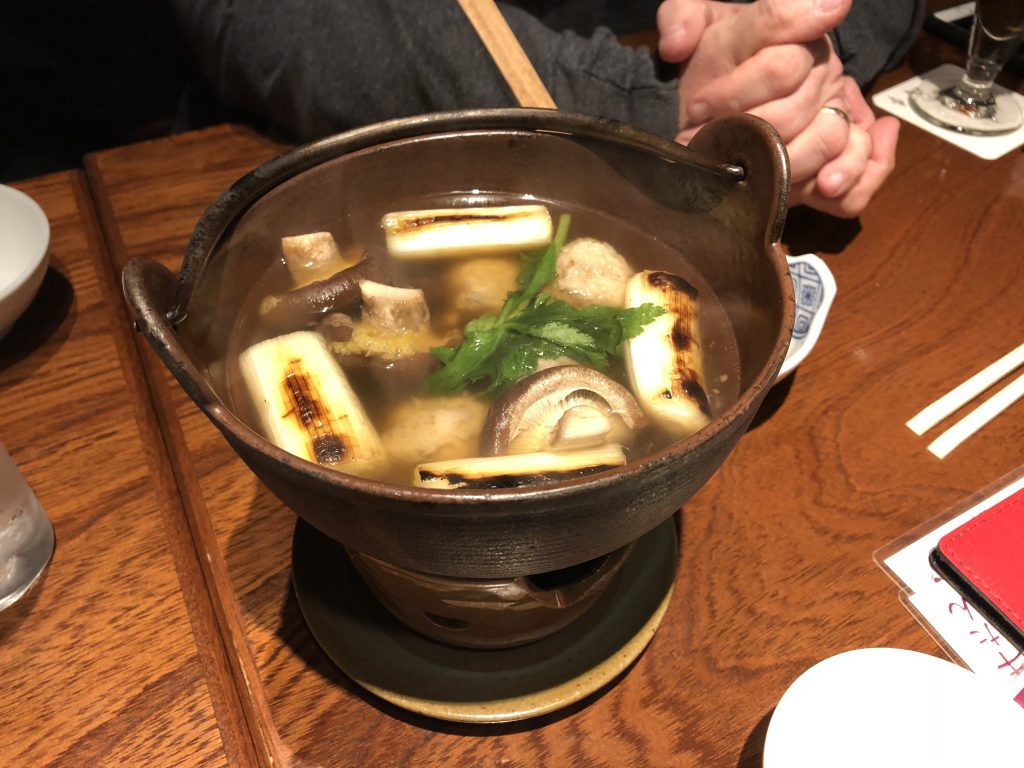
All in all, Kamakura is a perfectly lovely day trip, and you could easily spend several days there exploring the temples and beaches there. We had a really nice day!
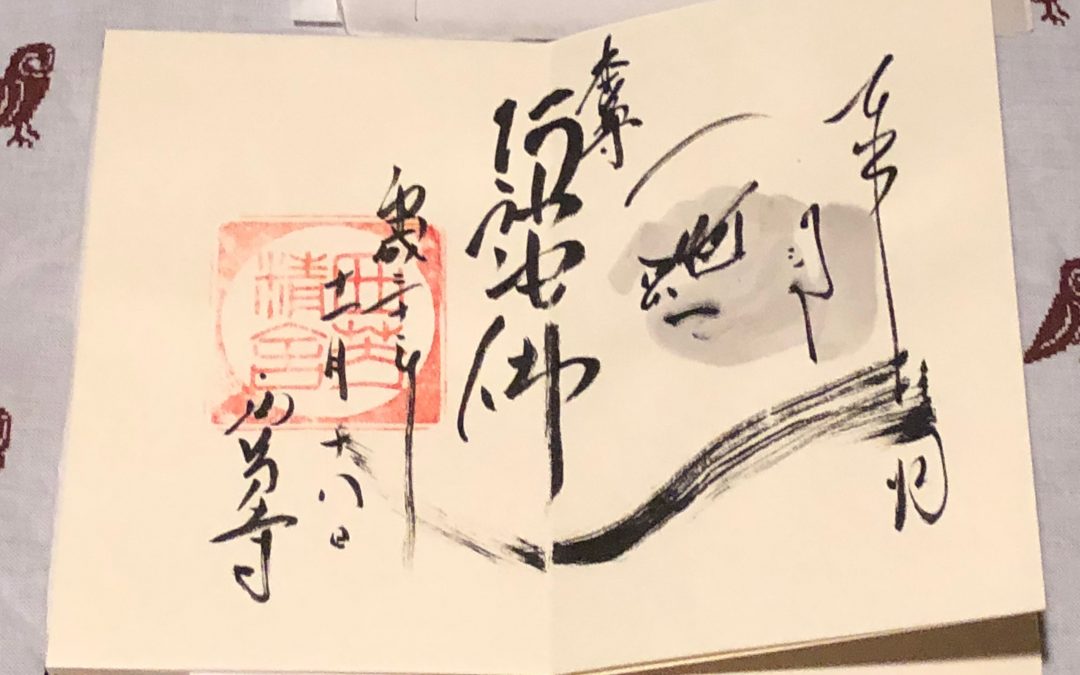
Goshuinchō
Japan, for all its beauty, history, and fun little quirks, is not an inexpensive country. Travelers have long sought out souvenirs from their trip that wouldn’t break the bank, and an unlikely contender has appeared. A relatively cheap and interesting souvenir that’s become very popular in recent years is the goshuinchō, or stamp/seal book. Originally reserved for the devout, goshuinchō have been enjoying widespread popularity, and these days, you’ll probably have a bit of a line for your stamp.
Goshuin (or
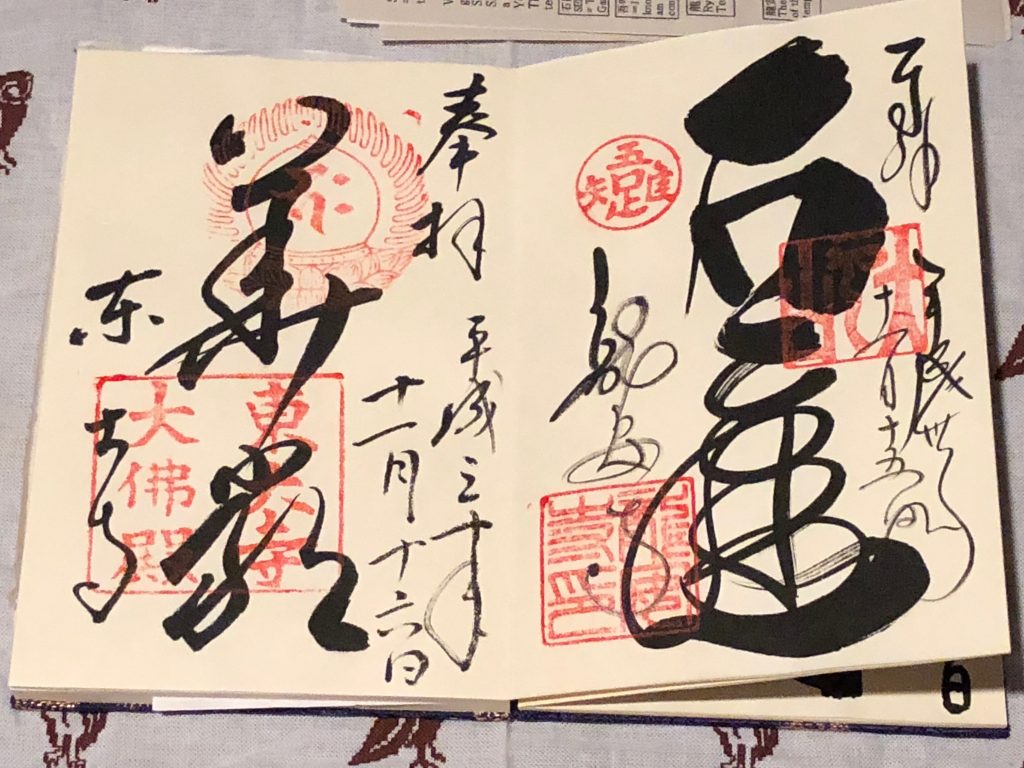
Goshuin started out hundreds of years ago as a way to track a pilgrimage. There are many set pilgrimages in Buddhism and Shinto — in other words, you go on a journey to specific temples and/or shrines as a religious ritual. This was popular amongst religious clergy, but also individuals who wanted to find enlightenment or perhaps cure an illness. It doesn’t hurt that religious pilgrimage was one of the only allowed forms of travel during certain eras of Japanese history. These travelers would carry these books with them and get them stamped at each location they visited as proof of their pilgrimage.
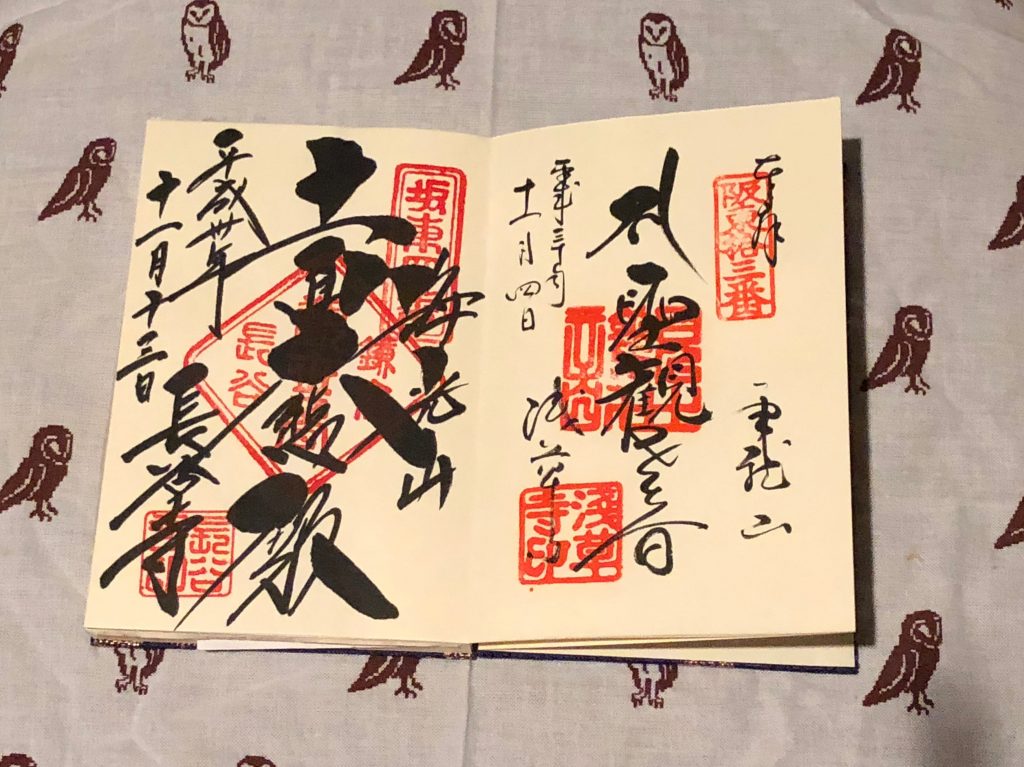
Personally speaking, I’m a religious studies scholar, so my goshuinchō are a little more pilgrimage than souvenir. I visited an awful lot of temples and shrines while in Japan, and I had fun getting my books signed wherever we went.
The books themselves range from simple to ornate and can usually be purchased at any shrine or temple that also has a stamping office. (This will be almost all temples and most permanently-manned shrines.) They’re so fun to look at that there are some people who just collect the books and don’t bother filling them with stamps.
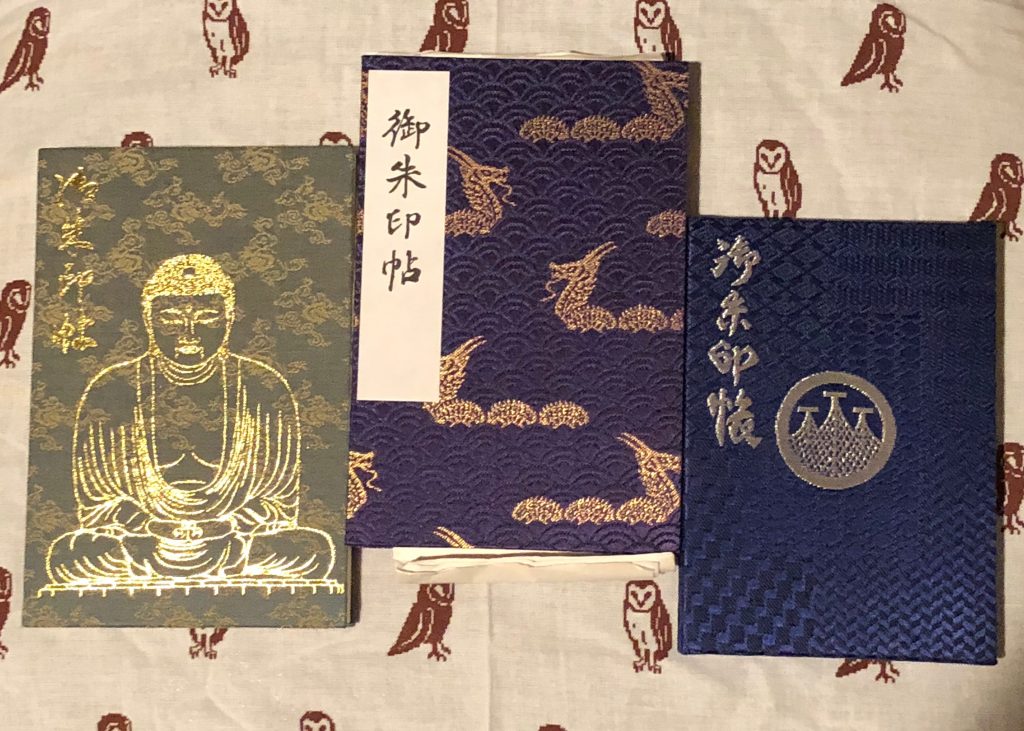
A lot of people keep separate books for Shinto shrines and Buddhist temples, but it’s not strictly necessary. (And once I accidentally handed the wrong book to the
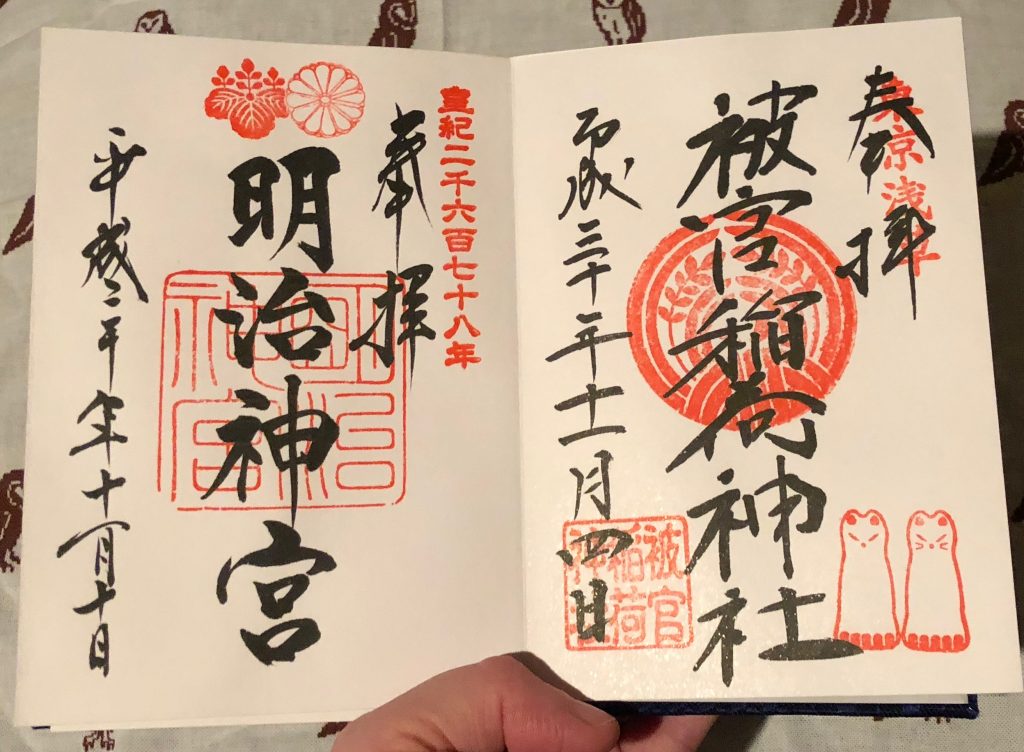
(Note: please excuse my hand. Goshuinchō are made with accordion-style pages, so they can be difficult to hold open.)
Some locations will have special paper that can be signed and tucked into your goshuinchō later, but they most likely will not sign sketchbooks, notebooks, etc. that are not specifically designed for the task. It’s important to keep in mind that, though
Whether you’re a pilgrim, a tourist, a collector, or you just like watching them do calligraphy, goshuinchō is a fun activity in Japan if you plan on visiting temples and/or shrines. If you’d like to start your own book, you just have to look for a sign (look for “seal/stamp book”, “
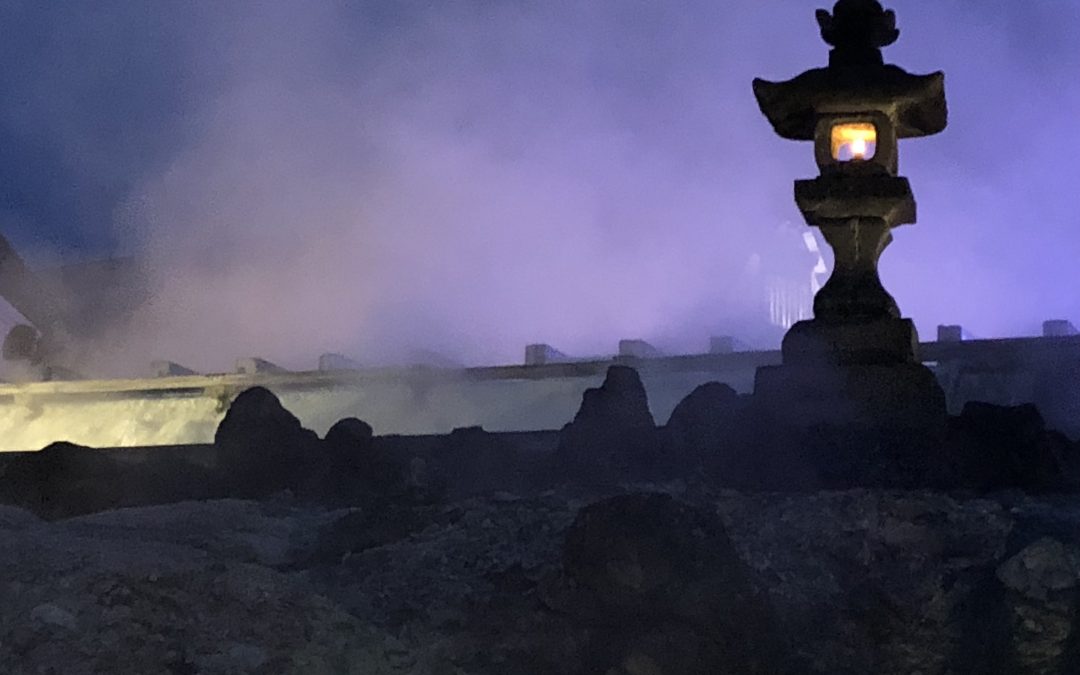
Kusatsu Onsen
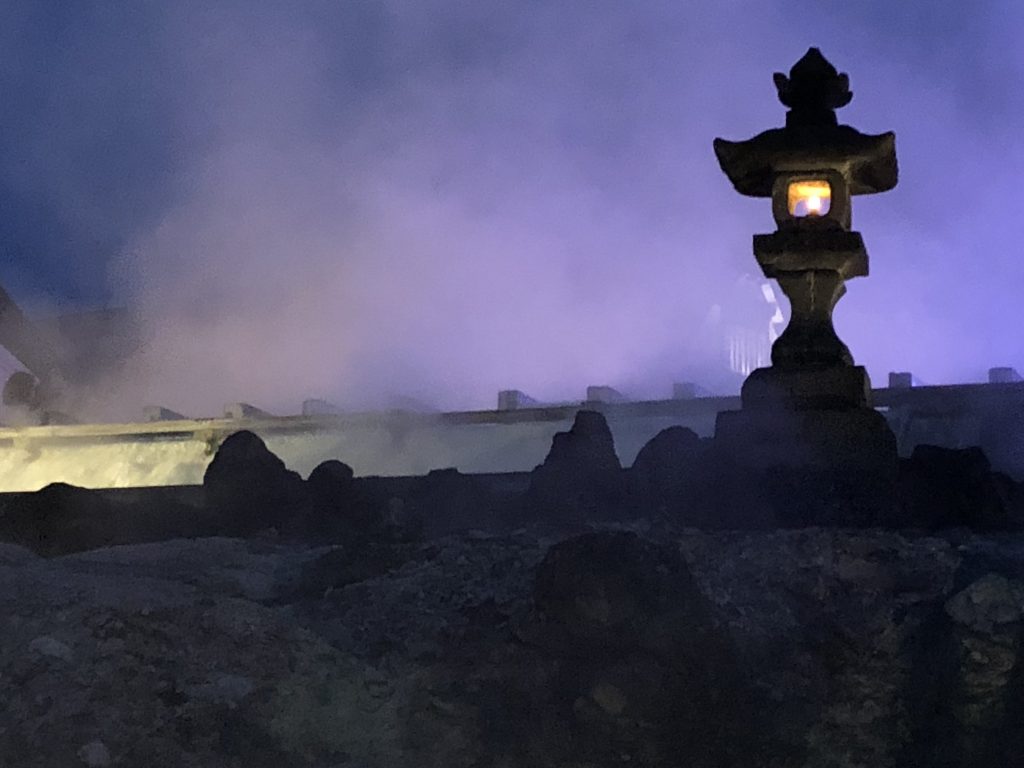
When it comes to vacation, I’m very much the kind of person who likes to run everywhere, see everything, and taste every dish that comes my way. That breakneck speed can get exhausting, though, and there’s something to be said about some hardcore relaxation.
When it comes to
If you’re from a country where communal bathing isn’t common, then that last point may take this from a relaxing outing to absolute nightmare material. I was nervous myself the first time I went to an onsen. That said, it’s amazing how quickly you get used to doing something when everyone around you treats it like it’s nothing. You might get a second look or two if you’re very clearly western, but no one’s going to be staring at your body while you’re trying to bathe. (That said, you might have to field some questions from extremely friendly grandmas.)
There are several specific rules for onsen, but they’re pretty easy to remember. Clean your body with soap at the provided showers before you get in the communal bath, don’t let long hair get in the water, take your tiny towel with you (but don’t put it in the water!) and leave your big towel in the dressing room, don’t splash or shout while in the water, make sure you go to the bathing room assigned to your gender… basically, just follow those around you. There are usually signs that explain what to do, and people are usually pretty patient with confused tourists.
Onsen are common all over Japan, and the onsen town takes that a step further. Onsen towns are entire towns that are devoted to the art of bathing. It could be a place where there’s a huge amount of natural hot springs, or it could be a place where those springs are reputed to have particular healing properties. Or, like Kusatsu Onsen, it could be both.
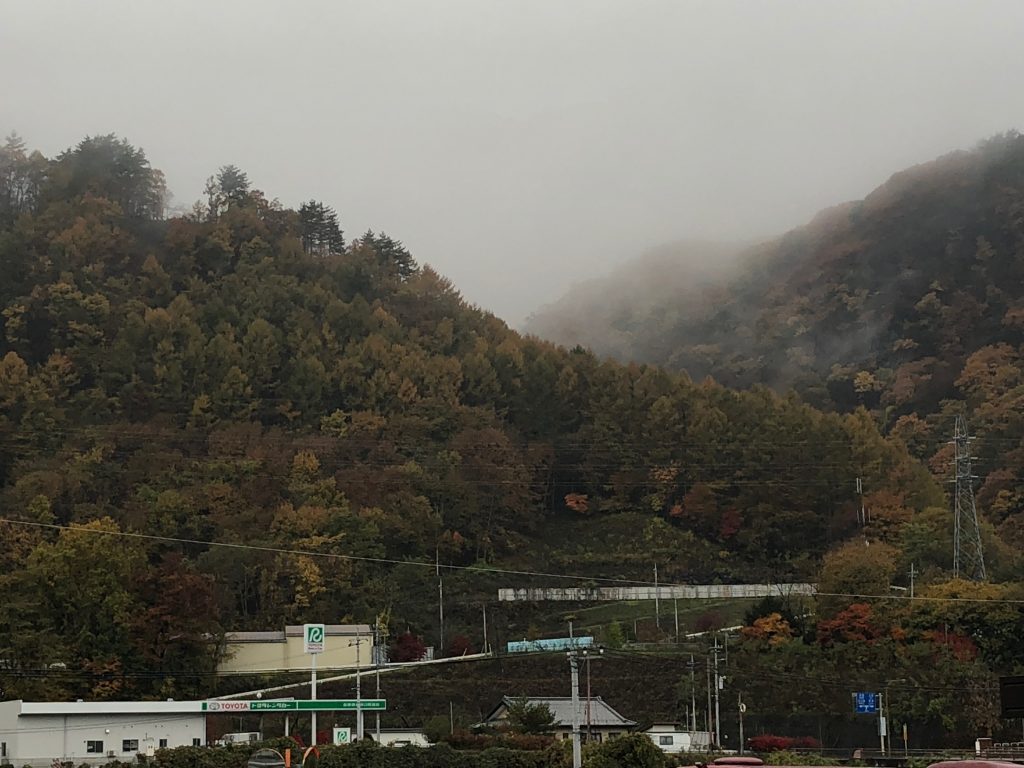
Kusatsu Onsen is one of the most famous onsen towns in Japan. A mind-boggling 32,000 liters of hot water bubbles up out of the earth every single minute and its high mineral content is supposed to be incredible for your health — though, admittedly, it does leave the entire town smelling a little like rotten eggs. There are several public baths that are open to tourists (as well as some that are reserved for residents) and a bustling little town has cropped up around them.
The main feature of Kusatsu Onsen is the
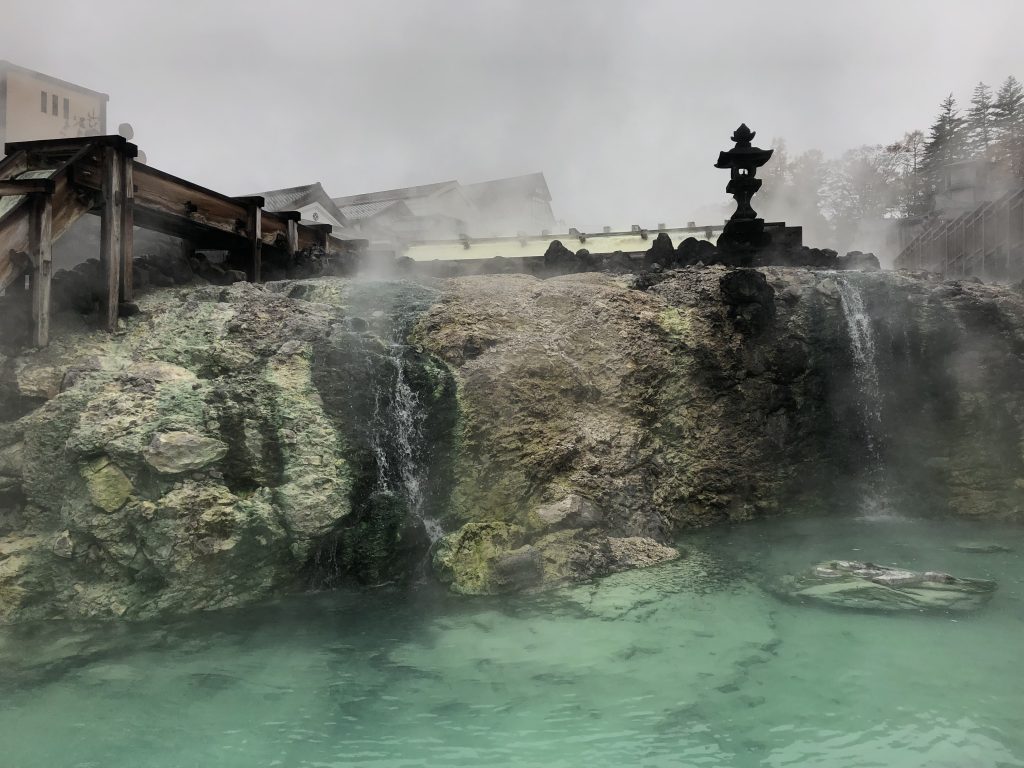
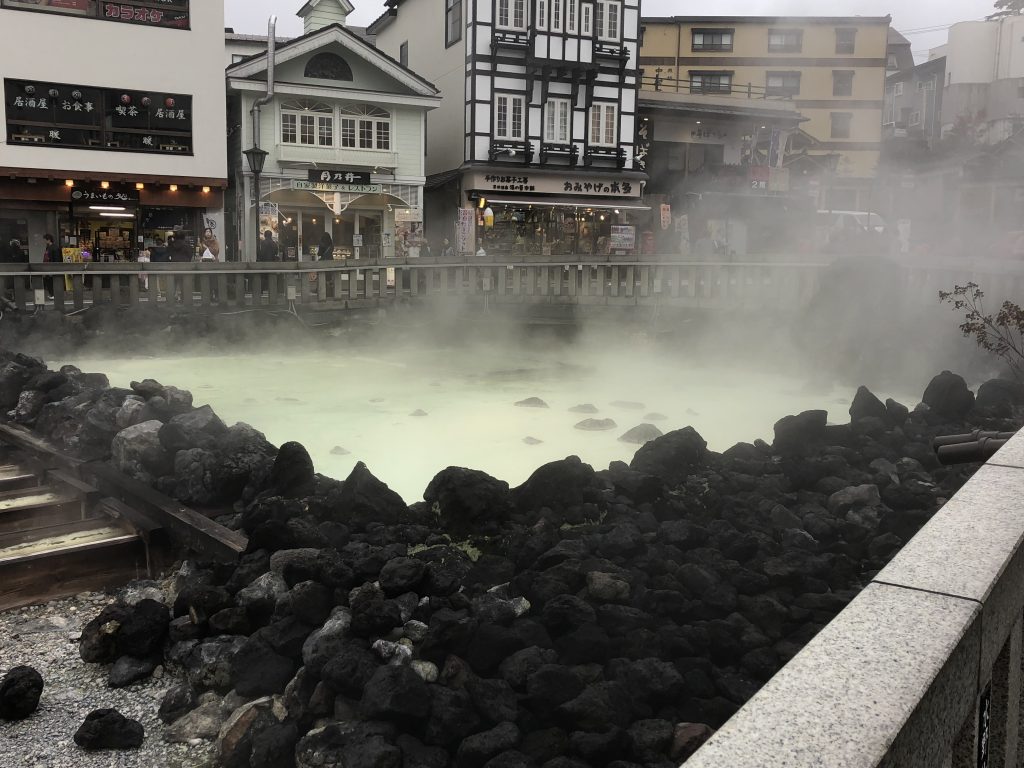
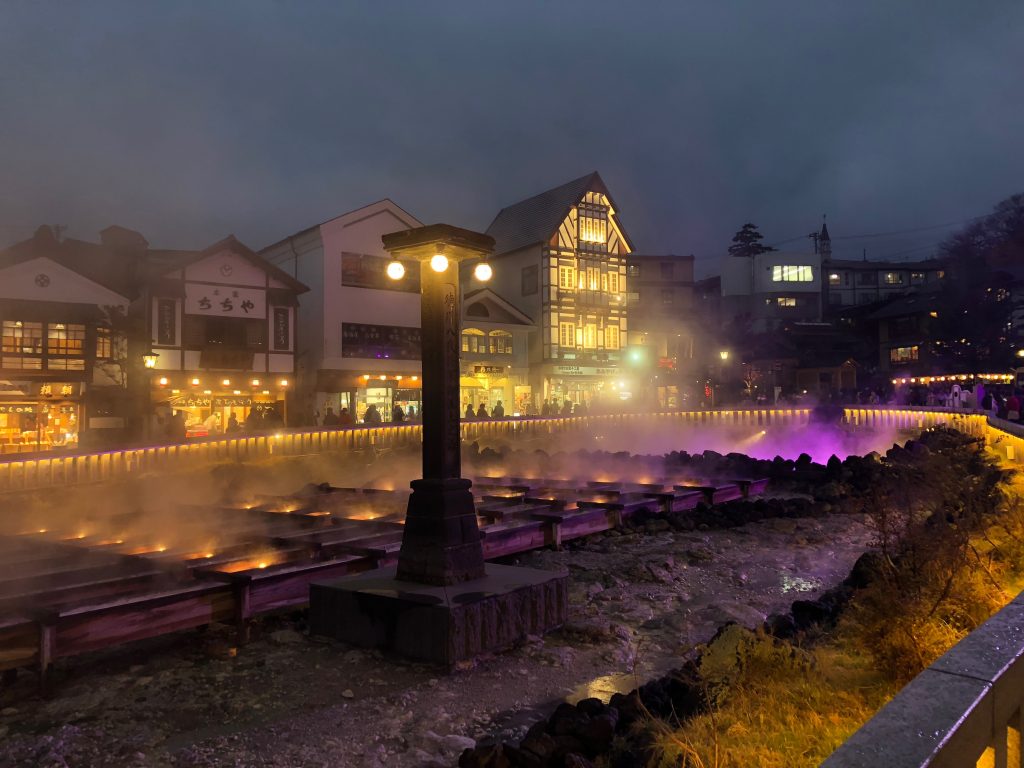
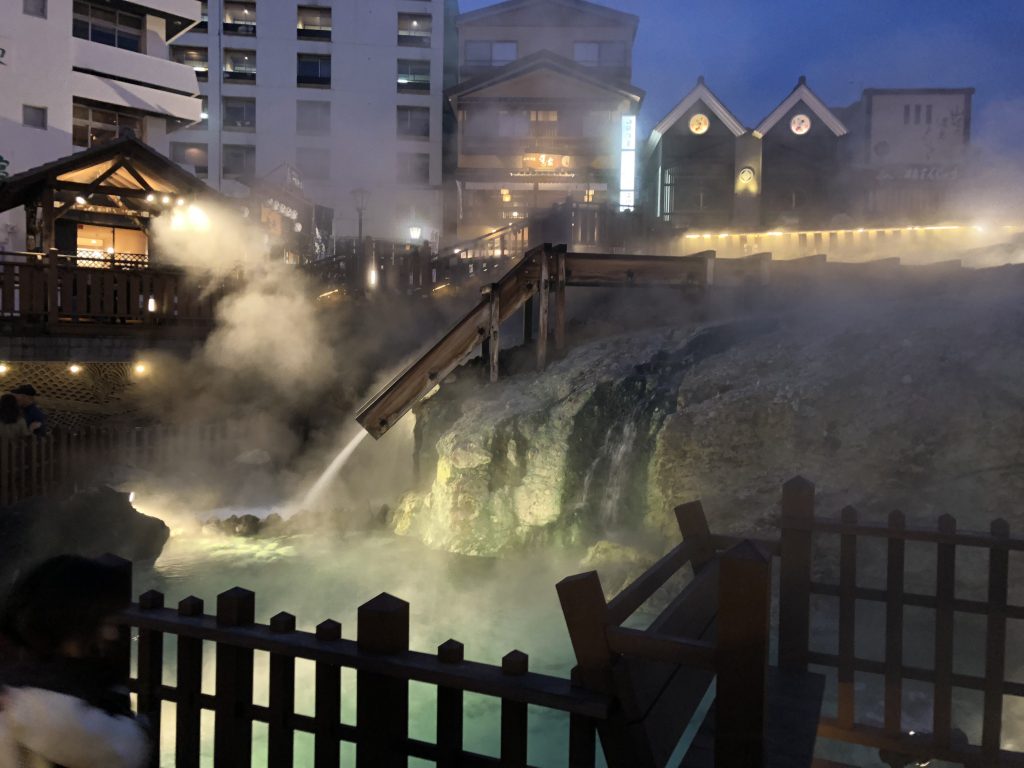
Another way that Kusatsu cools off its water is via yumomi, a special dance performed in a little theater next to the yubatake. Women wielding enormous paddles perform an elaborate dance and sing songs while agitating the spring water to cool it, and audience members are often encouraged to pick up a paddle and help them out. It’s a really cool experience, but also a very popular one; you’ll probably want to show up early if you want a good spot. Don’t make the same mistake I did, of accidentally standing in front of an elderly woman. People are super here for this show, and like I did, you might get forcefully moved aside.
(Please learn from my mistake: don’t mess with elderly women in Japan.)
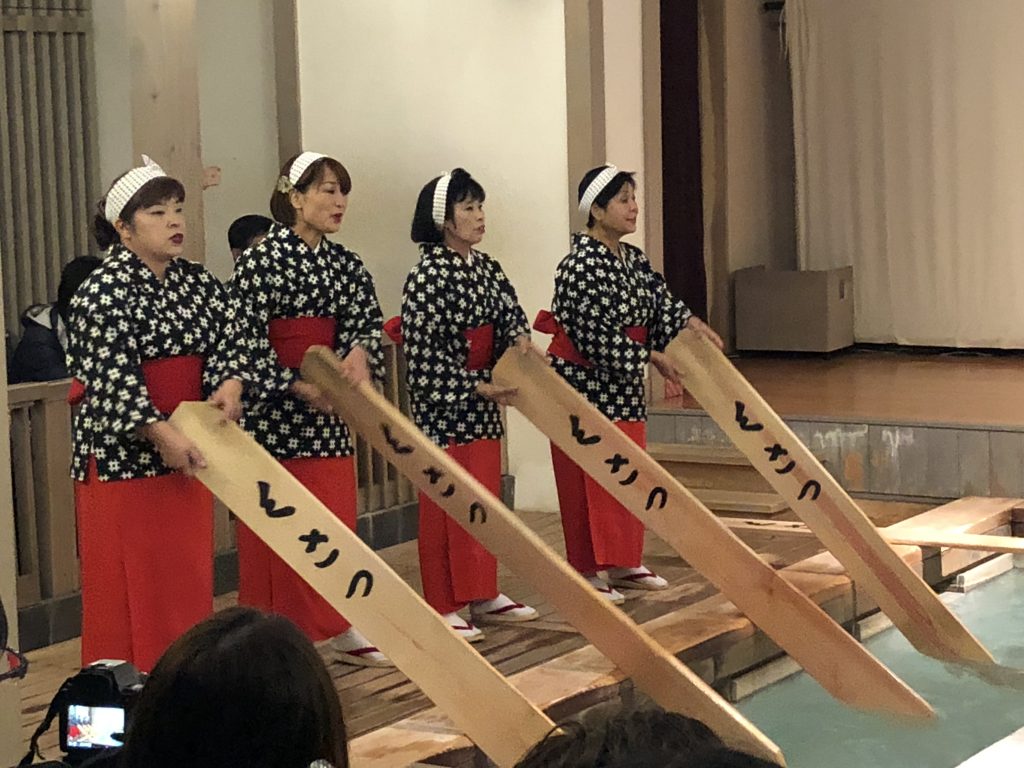
(Note: the paddles say “Kusatsu”.)
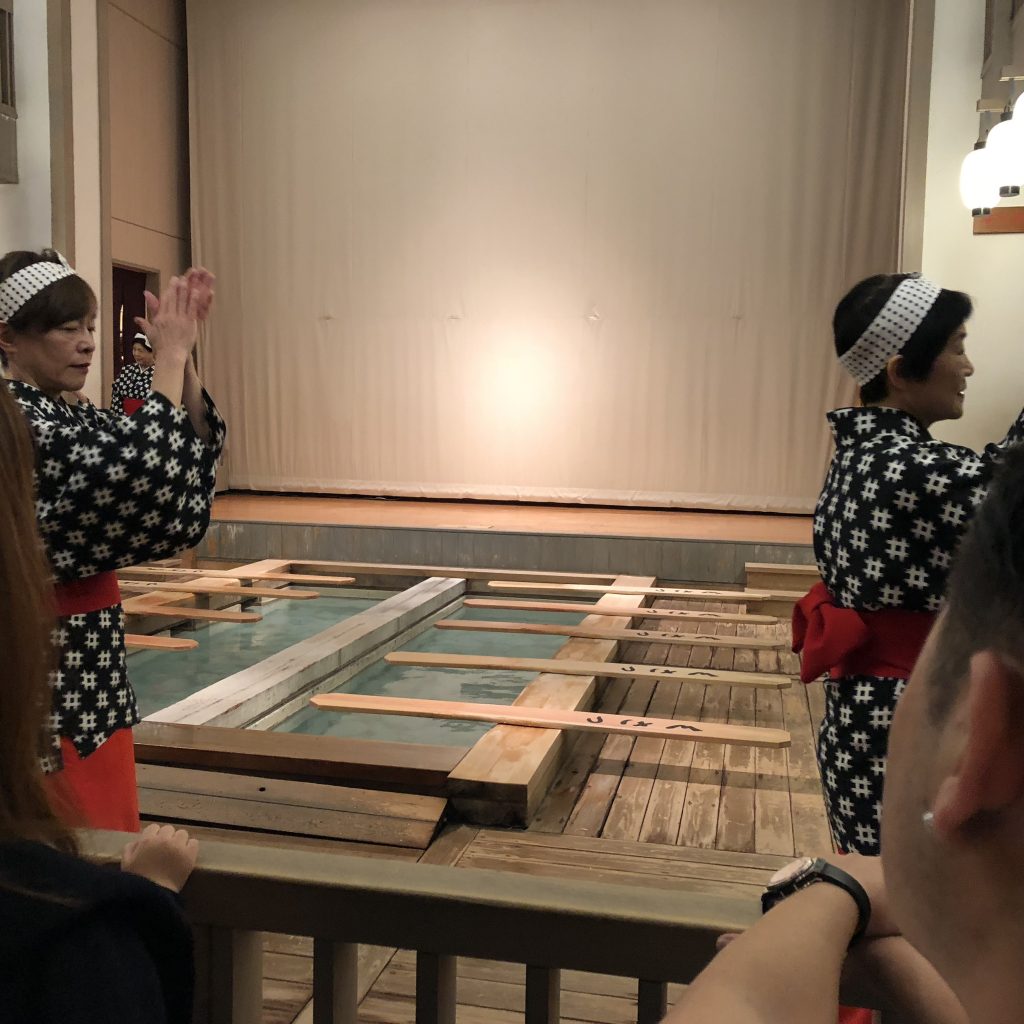
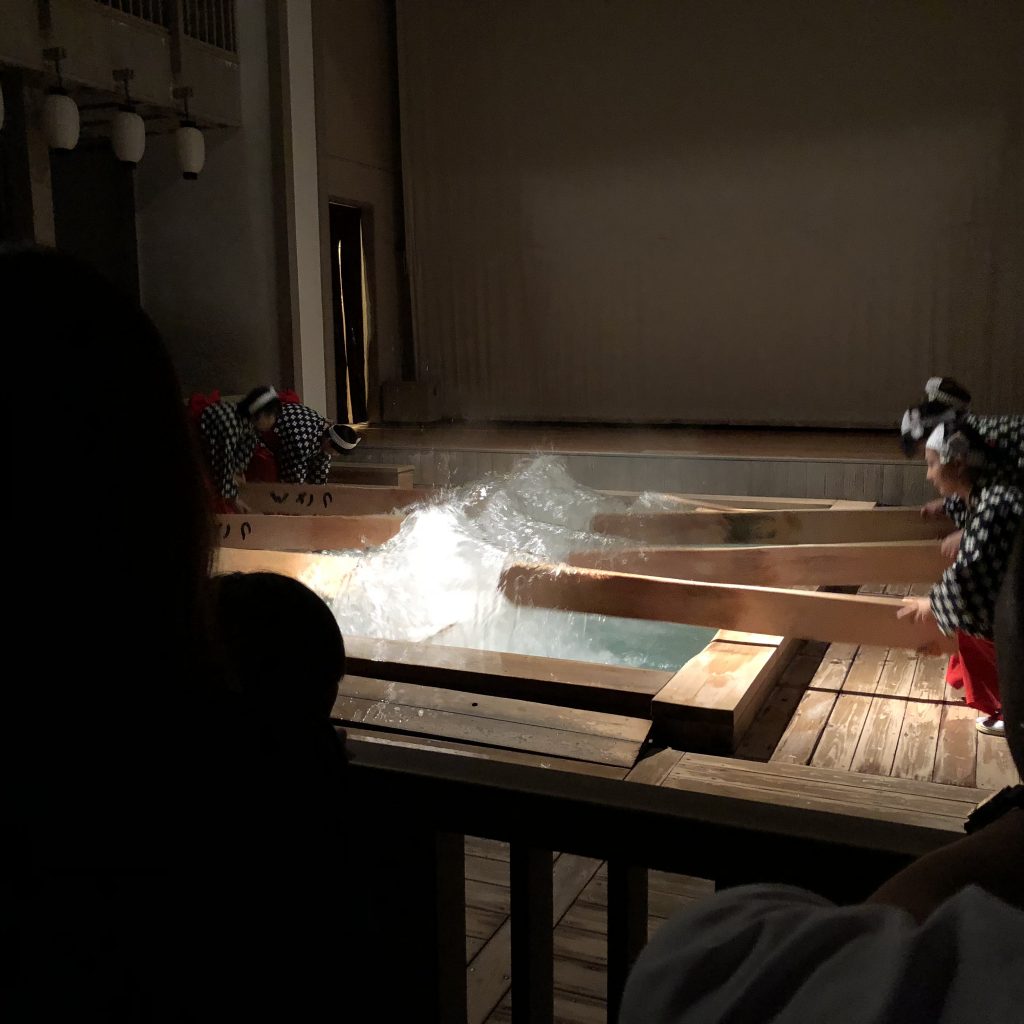
Once you’ve walked through the picturesque old town and seen the water cool down, it’s time to try it out for yourself. There are several bathhouses to choose from throughout the town, and you can find guides there to help you choose which one you’d like to try first. You could try Otaki-no-yu, a large, fancy bathhouse that’s known for its pools that get increasingly hotter. I had more than one person ask me if I’d made it to the last one! There’s also Goza-no-yu, which has an elegant wooden interior and a community feeling inside. (This one was my favorite.) Or you could try something totally different and attempt the timed baths at Jizo-no-
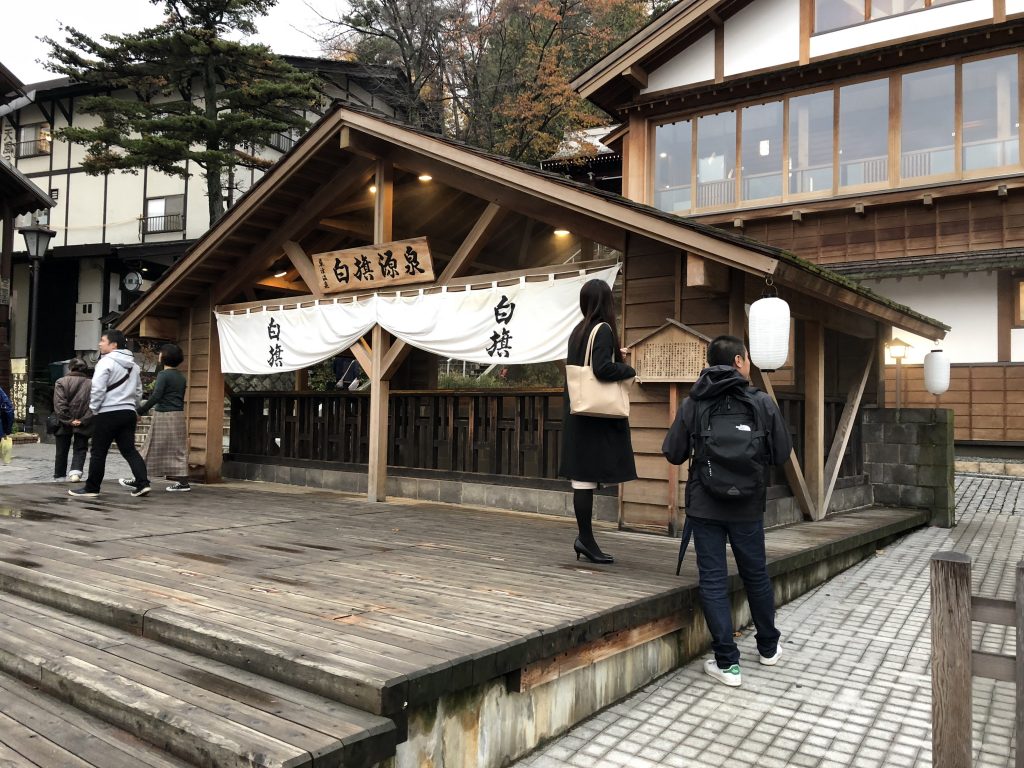
After you’ve had a nice bath (or two, or three) it’s time for a snack. There are certain foods that are famous in onsen towns, and I was happy to try them out for myself. As you walk down the main street to the
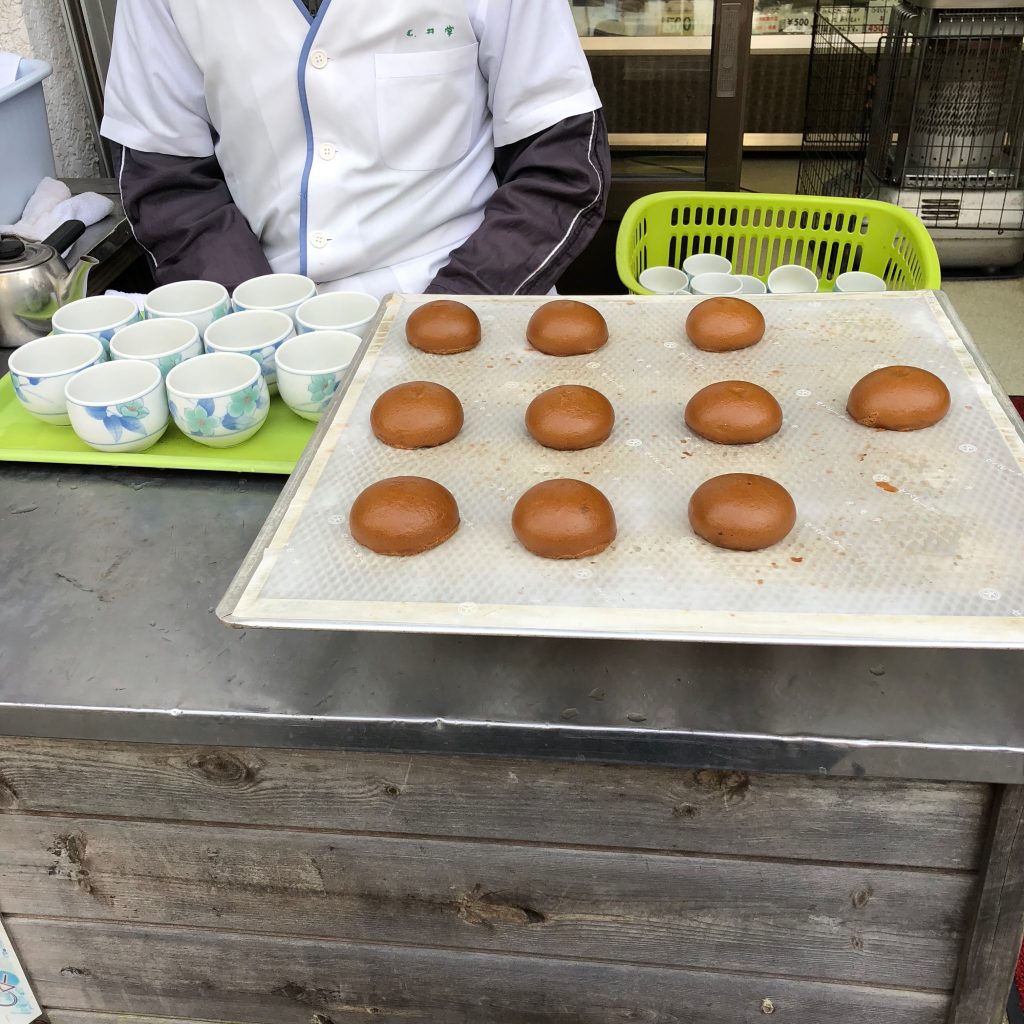
I fell prey to these friendly hawkers my first time down the street, but I could hardly complain about the experience. A little brown
I had no intention of buying a commemorative box of
The other food onsen towns all seem to be known for is onsen tamago, or onsen eggs. These are soft-boiled eggs that are cooked directly in the hot spring water that the towns are known for. Eggs are often just put in baskets and left in a small hot spring to cook. Once you buy them, you’re given a little bowl and a packet of broth you can pour over your egg once you get it out of its shell. It’s a little awkward to get the hang of, but it’s truly delicious.
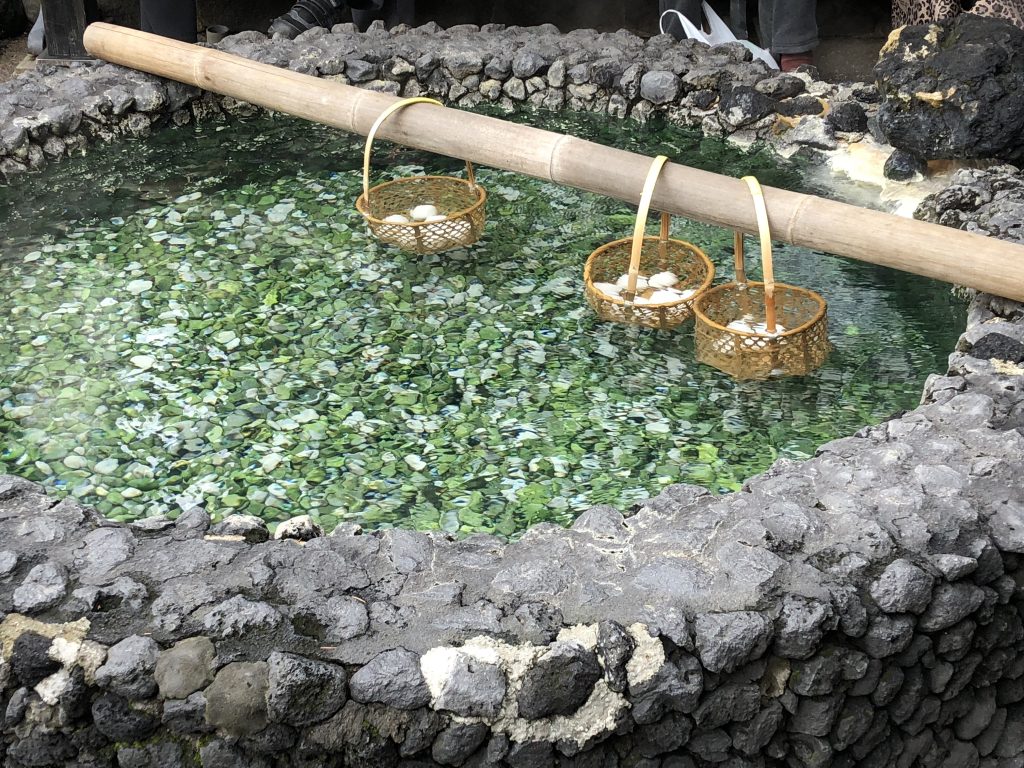
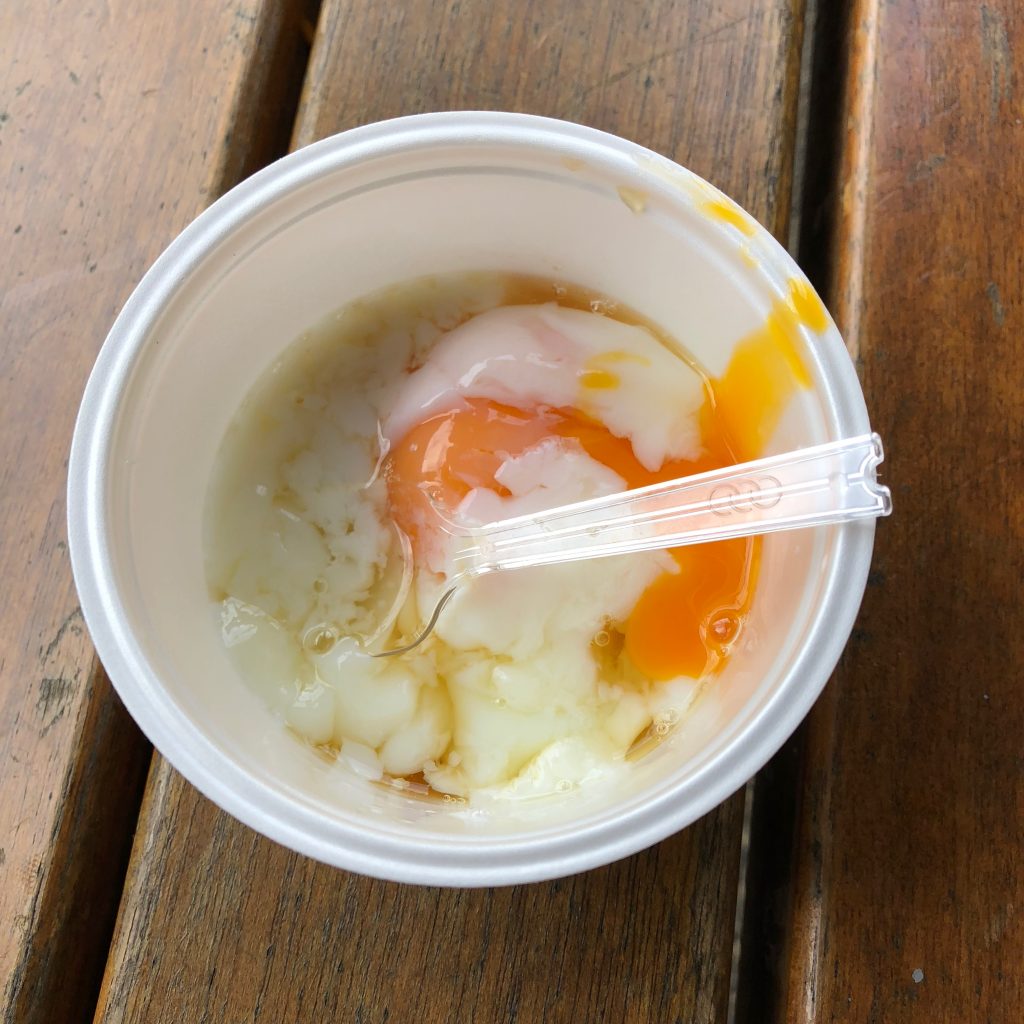
At the end of my first day in Kusatsu, I went back to my hotel, which was actually a ryokan. Ryokan are kind of like extremely fancy bed & breakfasts that are found across Japan. They are especially common around traditional areas and onsen towns. Many of these ryokan are family-owned and have been in the same hands for hundreds of years. Your typical ryokan will have you sleep in a small, traditional Japanese room (i.e. sleeping on a futon on tatami rather than a western bed), where you will also be served meals. These meals are generally included in the cost of your stay and will often be absolutely extravagant.
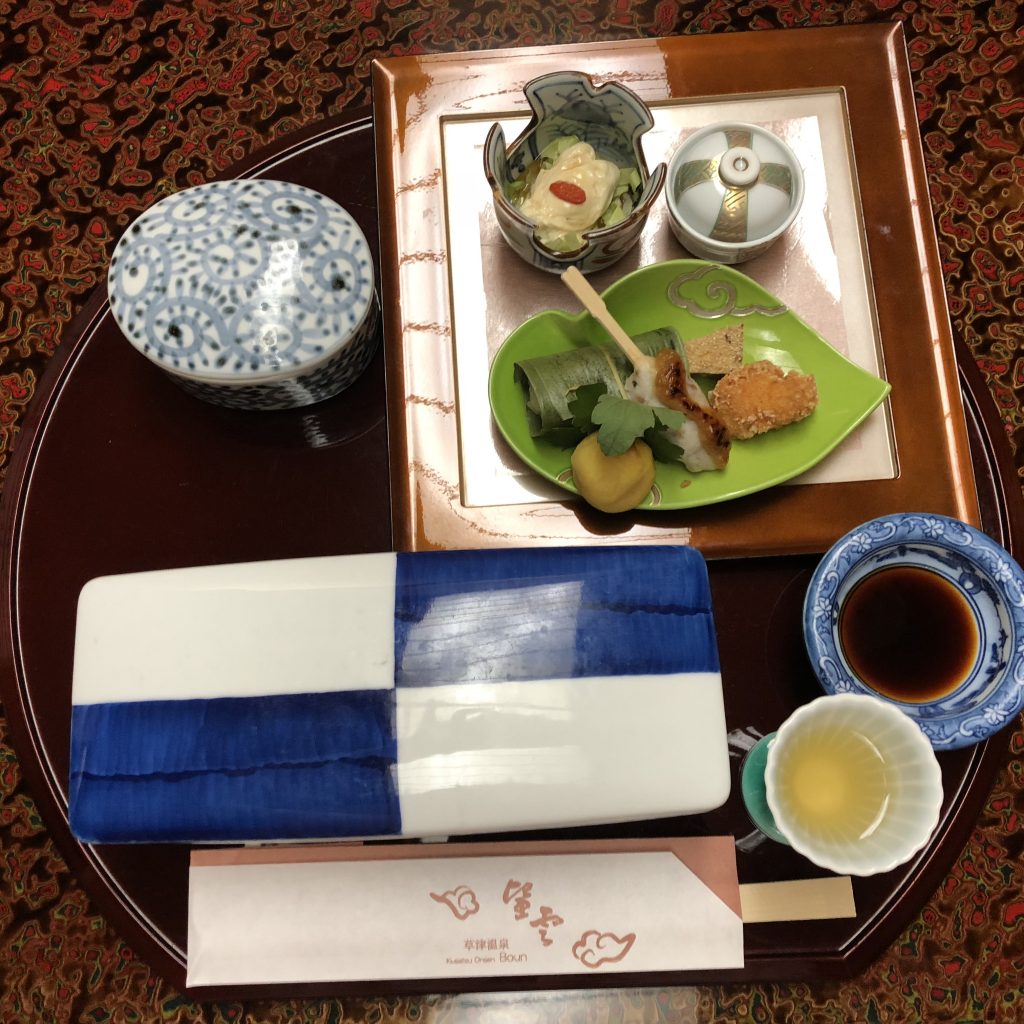
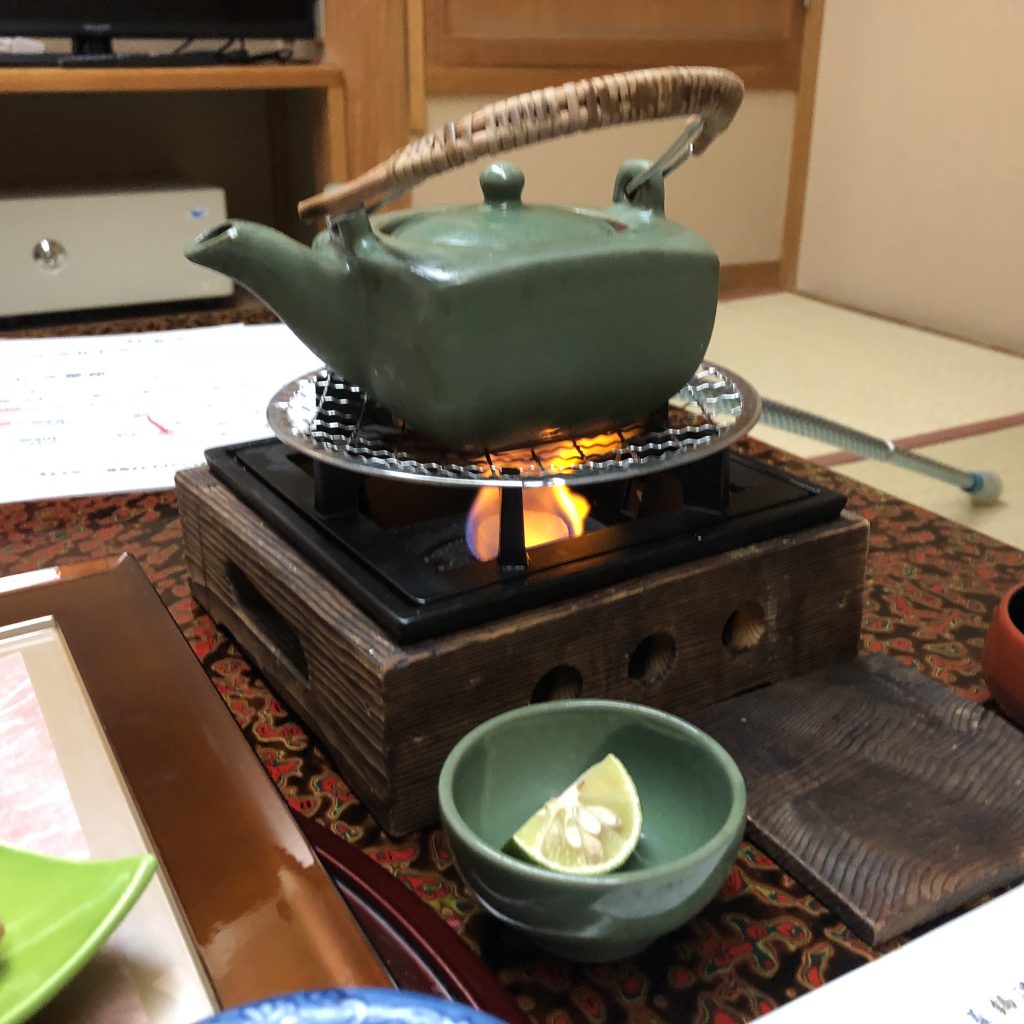
Kaiseki meals are very traditional in Japan and can be found in ryokan and fancy restaurants all over the country. (Especially Kyoto, a deeply historical town.) The meals include dozens of small dishes brought out to you in courses over the course of your evening. If you indulge in a kaiseki meal, expect to be eating it for at least a couple hours. (Note: this is one reason why you might be expected to check in at your ryokan relatively early in the evening.) If you’re foreign — or frankly, even if you’re Japanese — there’s a strong likelihood that a lot of what you will be served will be a complete mystery to you. We are not talking typical Japanese cuisine here, but
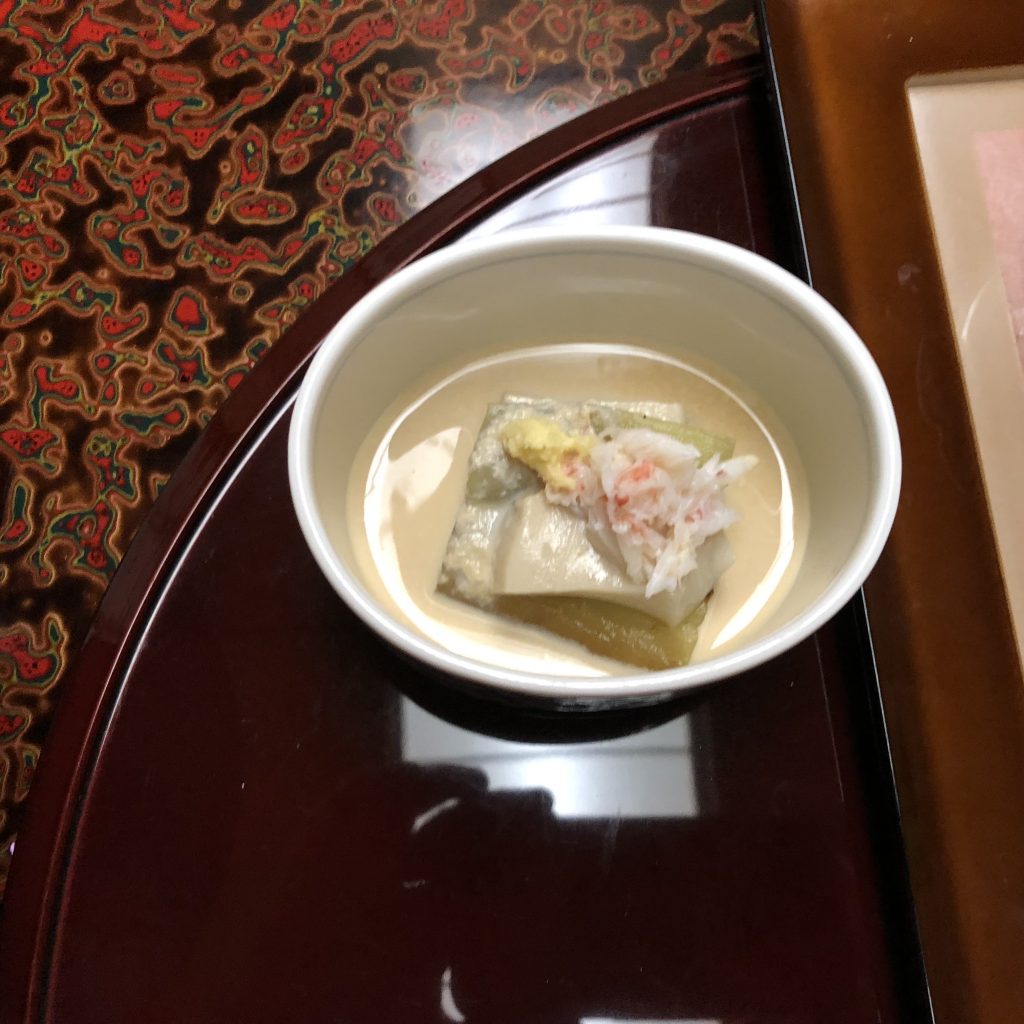
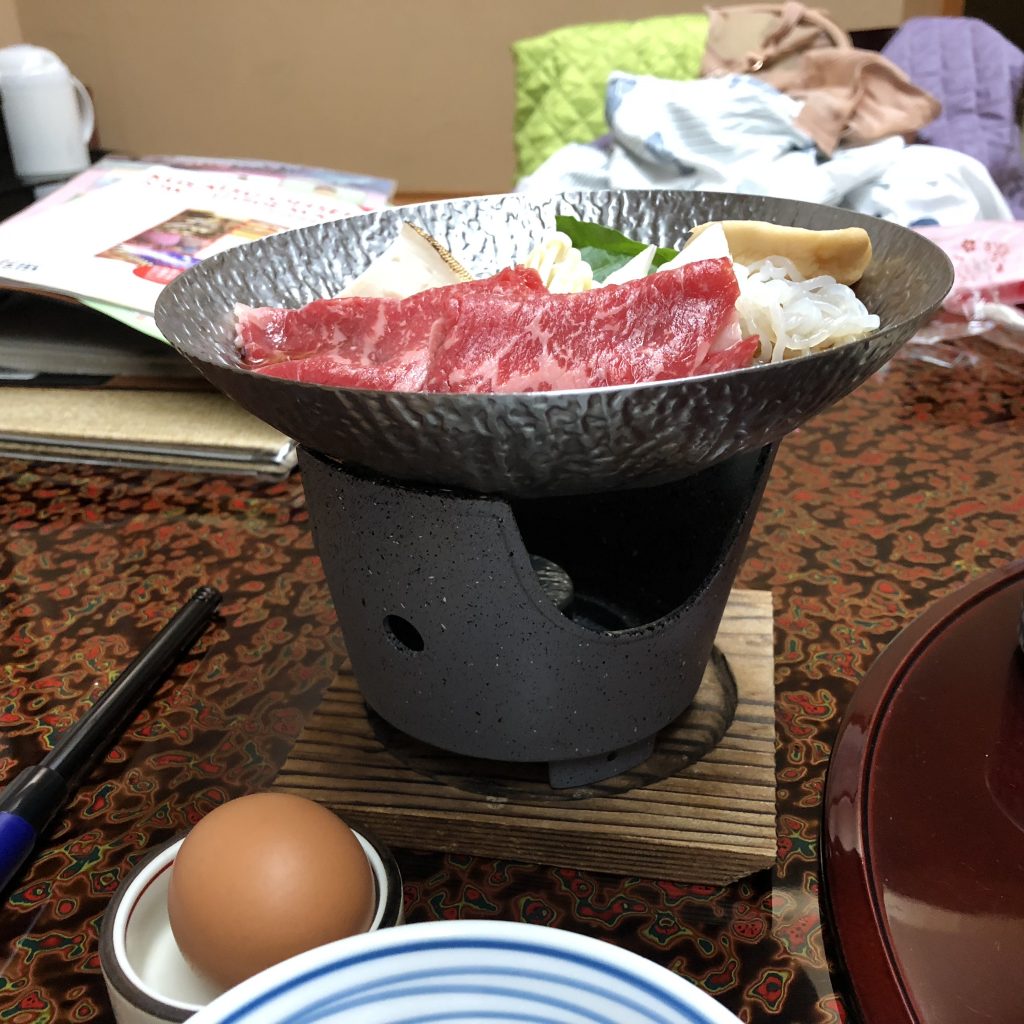
Most ryokan will have dinner and breakfast included, and will ask you about your dietary needs when you make your reservation. At the ryokan I stayed at in Kusatsu Onsen, breakfast was served in a separate dining room, but was no less extravagant.
After you’ve eaten so much food that you feel like you’re going to pass out, take a little rest in your traditional room, then head out to take, what else, yet another bath. Most ryokan in onsen towns also
Or, you could go the exact opposite route, like I did, and take a visit to Sai no Kawara on the far side of Kusatsu Onsen. This is how I spent my second day there, and I believe that just this park is worth the trip up there. Sai no Kawara is a beautiful little park that’s full of hot springs releasing steam up into the air. The scenery is nothing short of gorgeous.
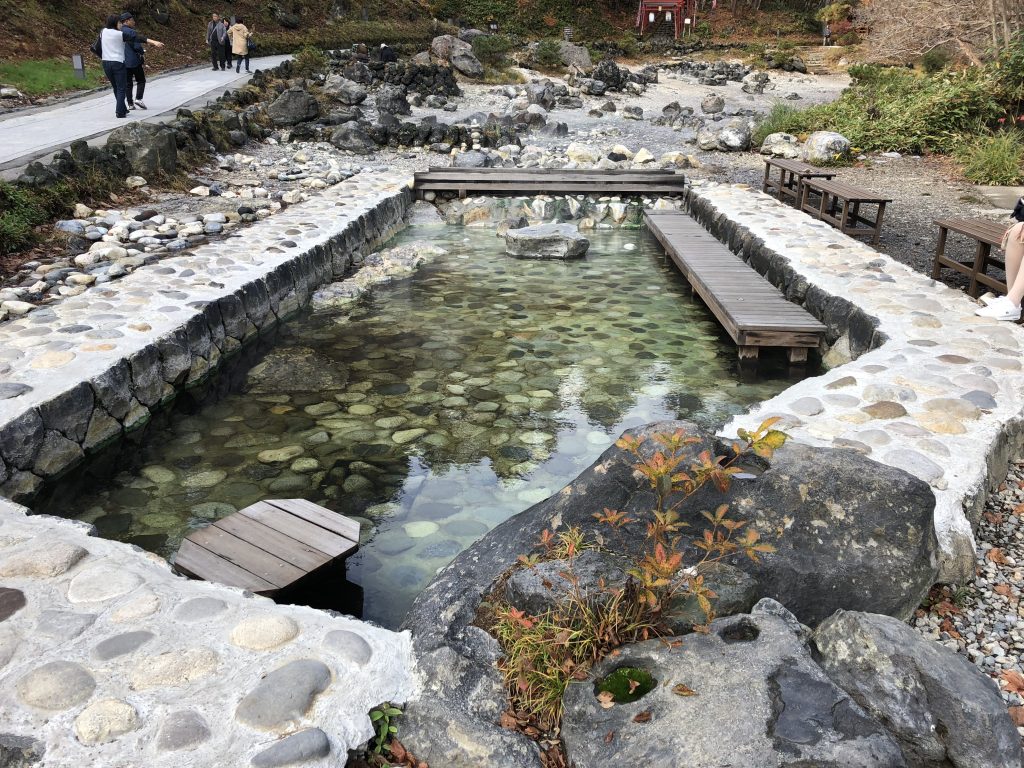
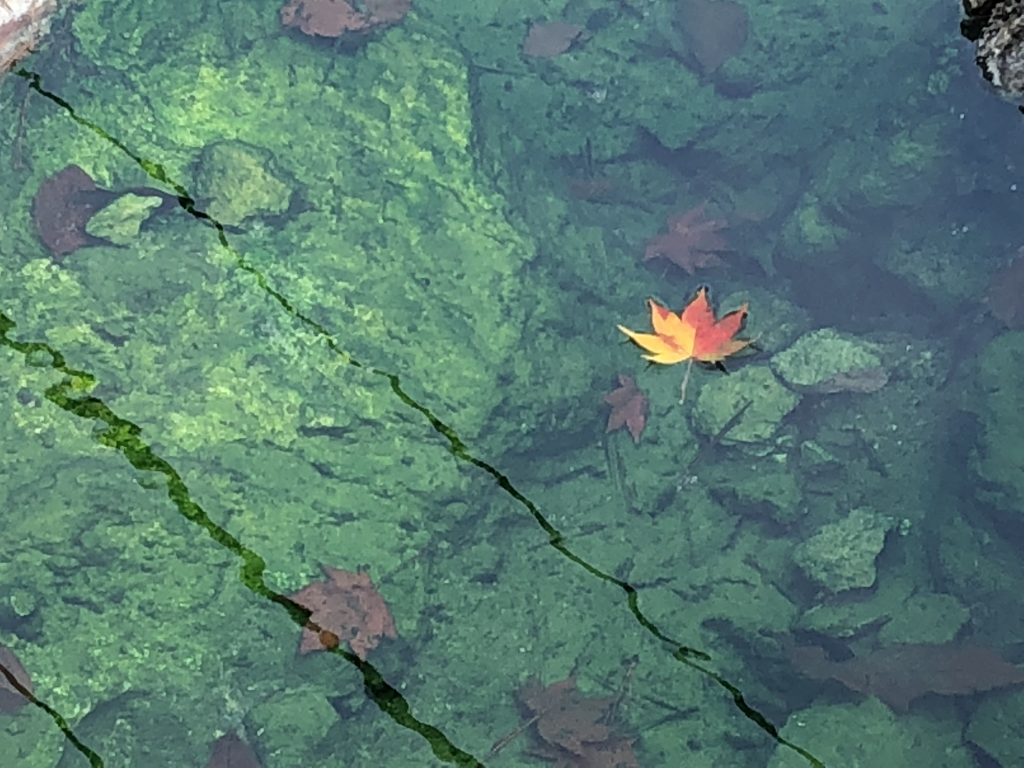
You’ll also find plenty to explore while you’re there. You can see the devil’s kettle, a hot spring that bubbles up like a kettle and mysteriously goes quiet as you approach, or maybe take a little trip up to the tiny Shinto shrine up on the hill. You can sit along the rocks and put your feet in a large communal foot bath under the watchful eye of Jizo. Or, you could climb all the way to the top and visit Kusatsu Onsen’s largest and most beautiful
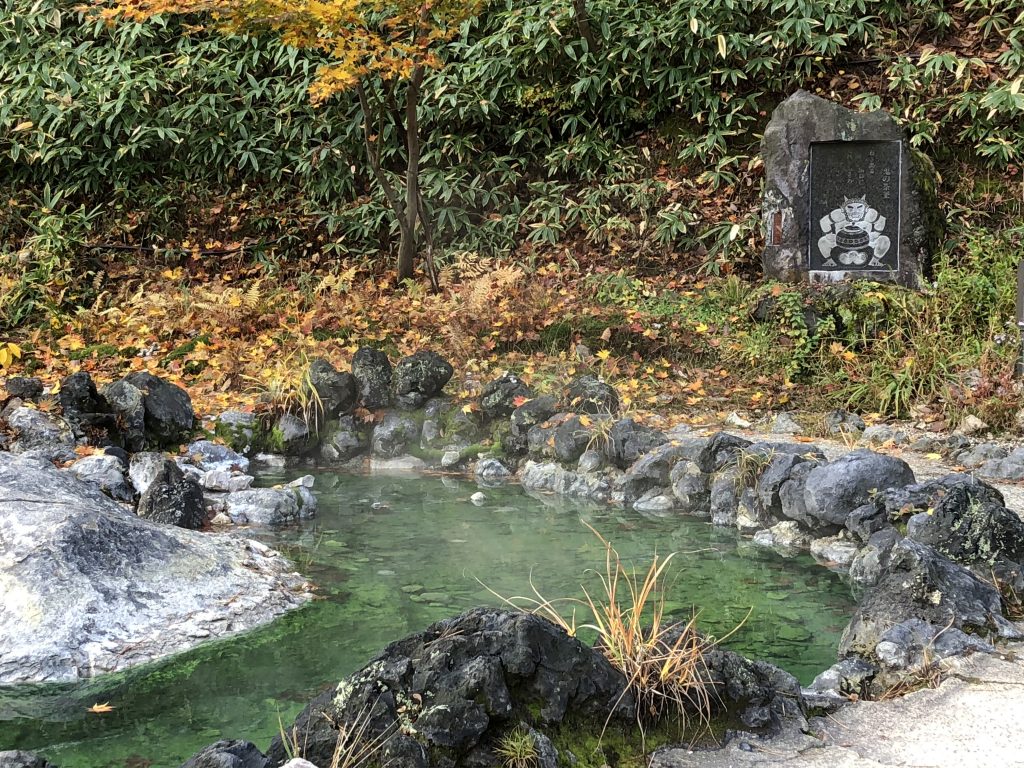
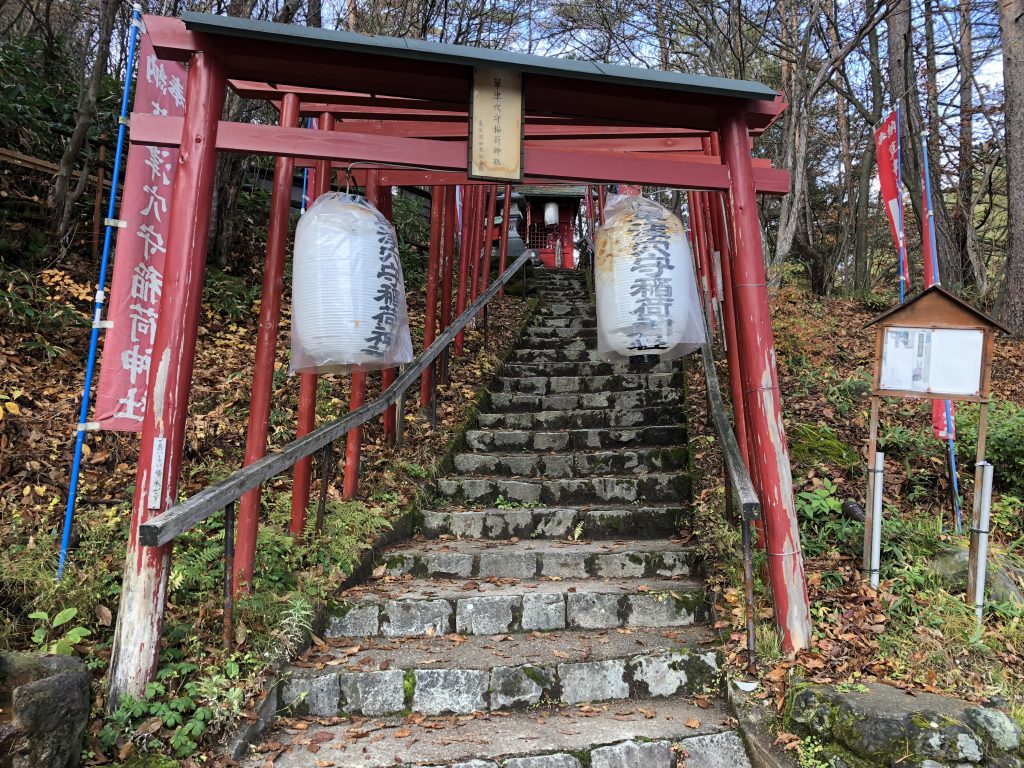
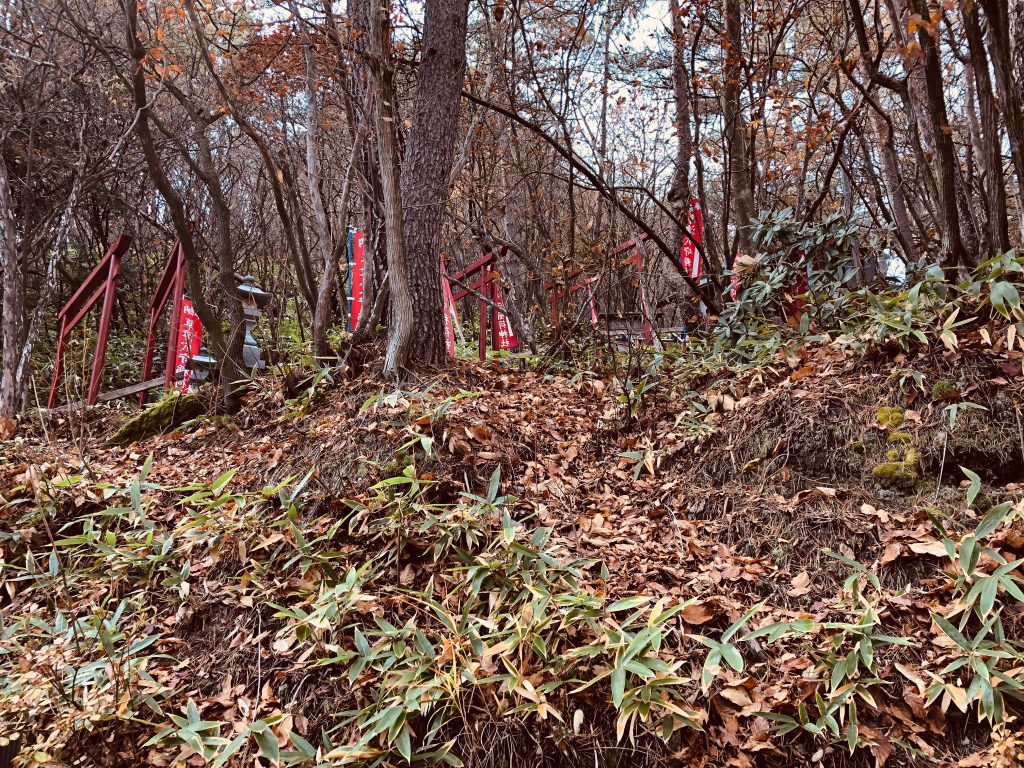
Most onsen are indoors in a lovely bathhouse that pipes hot spring water into a wooden or rock-lined bath for you to soak in. However, rotenburo are something a little different and are not to be missed. These are outdoor baths that allow you to enjoy the famous mineral water of Kusatsu Onsen while surrounded with the beauty of nature. In my opinion, these are best enjoyed while it’s pretty chilly outside. The combination of cold air and hot water is one of the most relaxing things on earth, and a little bite in the air will keep you from getting too dizzy in the hot water.
Like indoor onsen, the rotenburo is split into two sides, one for men and one for women, and like most onsen, the sides are switched on a set schedule so you can try out both sides. You can hear the people on both sides, and paired with the sounds of nature and that of the rest of the park’s inhabitants, it can make for a louder experience. Still, there’s something really soothing about relaxing against the rotenburo’s rocks and maybe chatting with a friend. The water’s high mineral content feels almost fizzy against your skin, and you can see why doctors have praised its effects for decades.
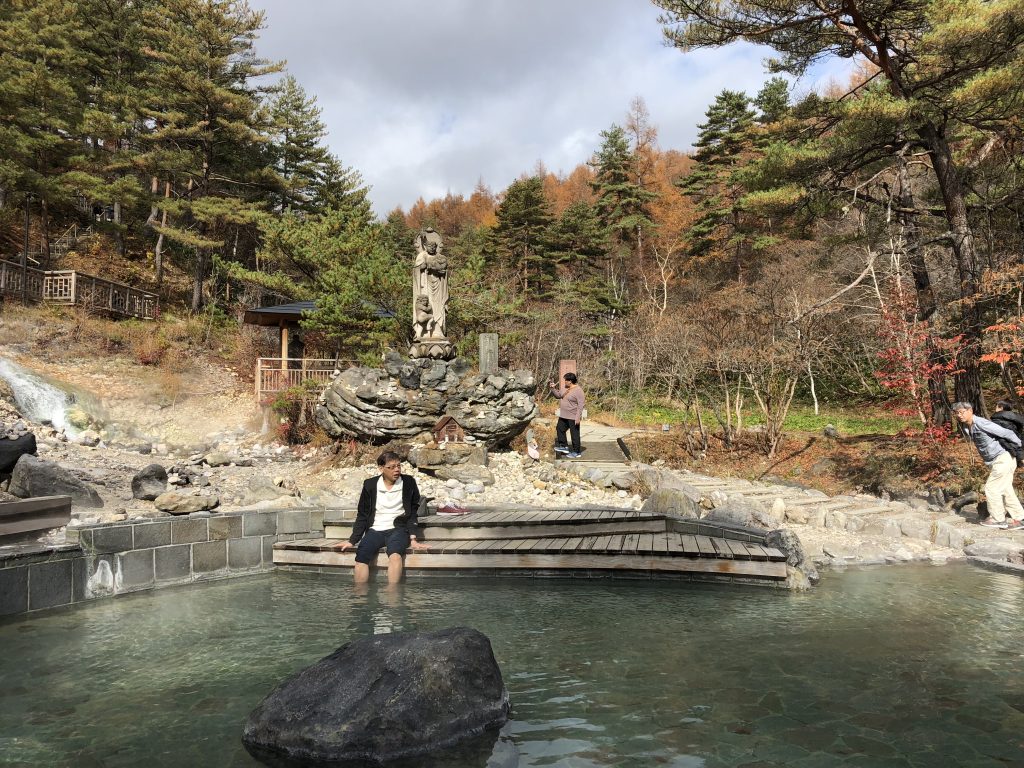
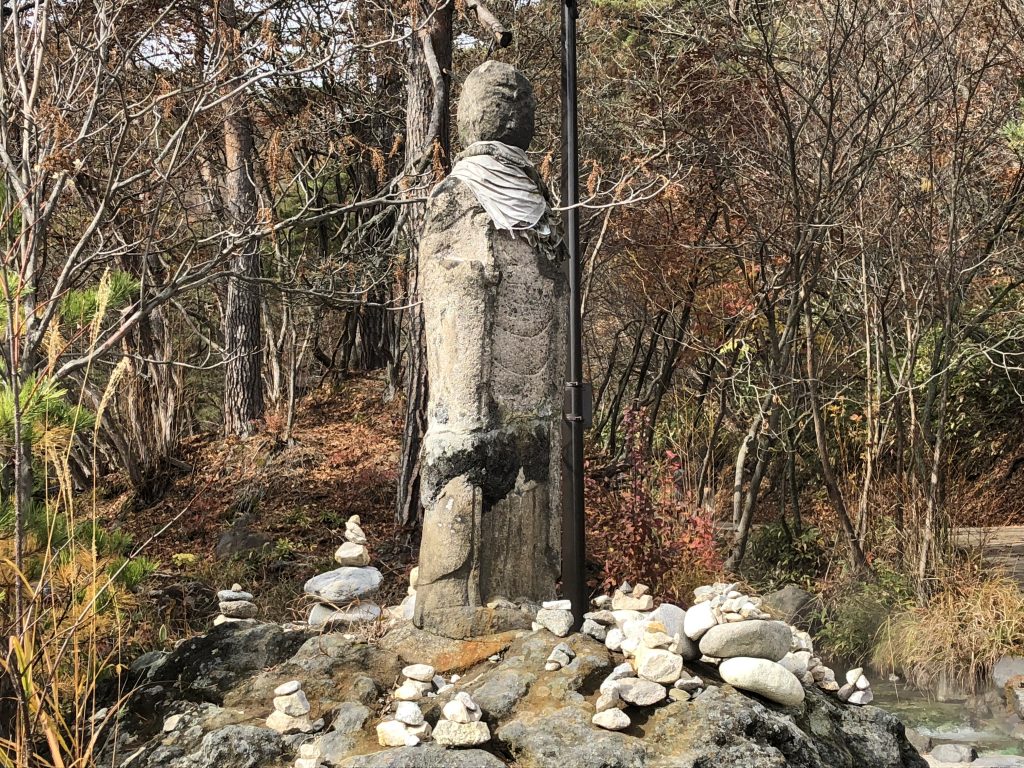
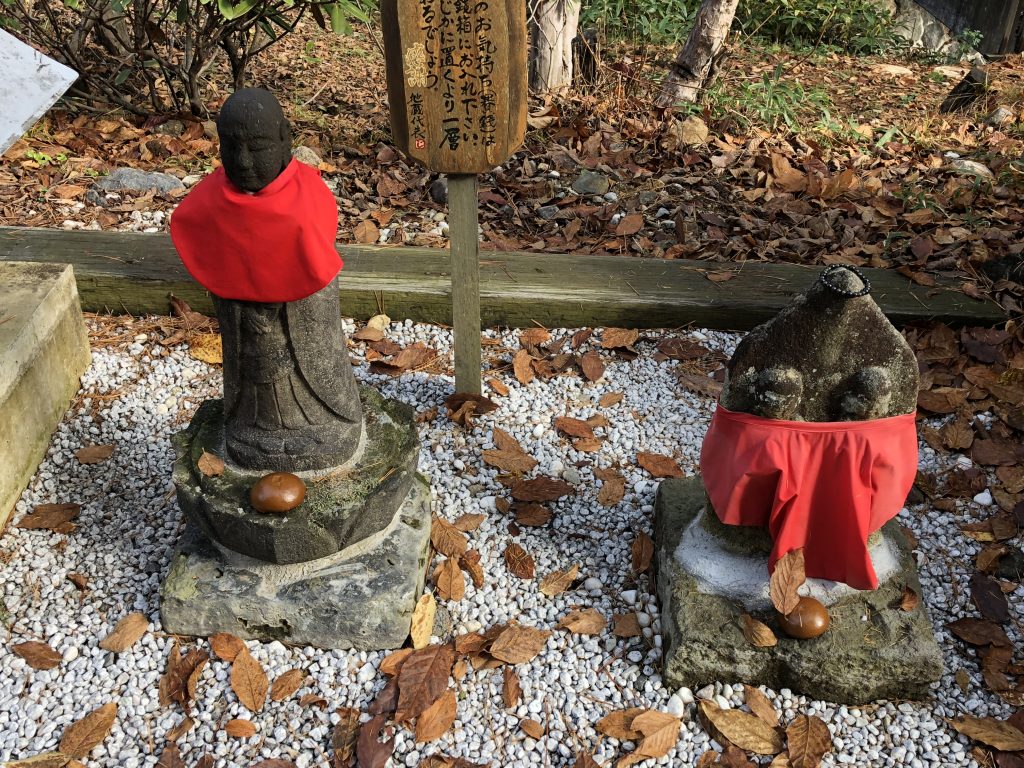
Now, I have several chronic illnesses. I’ve heard about all number of quack therapies over the course of my life. People like to say that the water at Kusatsu can heal any ailment except heartbreak. Can bathing in an onsen’s mineral waters actually cure all of life’s ills? I’m leaning towards probably not — I’ve even seen people saying it can cure cancer, and that’s gonna be a big no from me. That said, I felt really good after bathing at Kusatsu Onsen. It gives you all of the benefits of taking a nice, long soak at home, but with hotter water and clear air. The entire town is devoted to relaxation and self-care, and that atmosphere really gets to you. And hey? What do I know? Maybe some of those minerals really helped out my skin.
If you want to try out the healing waters of Kusatsu Onsen, it is a bit of a hike. You’ll need to take a train out of Tokyo and then a connecting bus to Kusatsu Onsen station. If you’re staying at a ryokan, they will often be willing to pick you up here. If you’re only staying for the day (not recommended if you’re coming all the way from Tokyo) or you’re staying at a normal hotel/airbnb, you’re probably better off walking or taking the local bus. It’s not a very large town, and getting around it is pretty easy, but getting out there? Yeah, I’d set aside at least three hours for the trek from Tokyo.
There’s not a lot to do, exactly, in Kusatsu Onsen, but there’s something to be said for going out to a spa town to give yourself a break. If you’re going to be in Japan for quite a while, I wholeheartedly recommend taking some time to visit an onsen, whether in a fancy onsen town or just in the city. It’ll let you decompress after all of your frantic travels, and the hot water will soothe away your stress.
a little introduction
Hi! My name is Sarah and starting today, I’ll be joining the crowded world of travel blogging. I’ve always traveled a lot throughout my life, but I decided to start up a blog now because, truthfully speaking, I can be a little disorganized. I am absolutely the kind of person to write down the name of a restaurant I love and then lose it. Over time, I realized that I was also losing some of the most treasured memories I have of places I have been, and I don’t think that’s an uncommon experience. Some people combat that with scrapbooks. I’m here writing a travel blog. I want to write down my experiences, take pictures, record beauty — and I want to share all that with anyone else who loves the world as much as I do.
If you’re here reading all this, you’re probably wondering about the name. Is this blog about animals or something? Well… As much as I’ll probably be posting pictures of every stray cat I come across, this is not a zoological travel blog. What it is is a celebration of a life lived with disability. There’s a saying in the medical field: “When you hear the sound of hooves, think horses, not zebras.” The phrase is meant to remind medical students that they’ll be seeing common illnesses a lot more often than rare ones, so the common illnesses should be the ones they think of first. But where does that put the rest of us, the zebras?

A “zebra” is slang for a person who has a rare disease in many communities, and it has been particularly adopted by those who have Ehlers-Danlos Syndrome, a group of connective tissue disorders. I personally have the hypermobility kind of EDS — in other words, I have to deal with a lot of subluxations, which are kind of like mini dislocations. My bones pop out of joint fairly often, but I can usually get them back in with time, effort, and a lot of painkillers. I also have a pretty bad case of Postural Orthostatic Tachycardia Syndrome, which is less rare than it is rarely diagnosed. Distilled down to its bare bones, it’s a disorder that affects autonomic functions in the body, especially blood flow. For me, it means that my blood is rarely in the right place at the right time. That leads to exhaustion, numbness, fainting, dizzy spells, brain fog, nausea, problems with regulation of body temperature, and brief periods of blindness. Oof.
You can see why I didn’t consider travel for much of my life. It’s certainly a lot harder to do so when you’ve got a lot of physical problems to contend with. But the longer I live, the more I find ways to balance my body and my dreams. I’ve learned a lot of coping mechanisms, and while I still have to compromise sometimes, that doesn’t mean I can’t go out and see as much as I possibly can. I may never be able to climb the steps of the Eiffel Tower, but hey — I can take the elevator up halfway.
Frankly speaking, I don’t intend this to be some kind of inspirational or even educational blog — I just want it to be a little piece of me. I want to explore our world the way I’ve always dreamed of, and I want to do it while being honest about my own physical capabilities. I won’t apologize for what I can and cannot do, and I won’t sit around waiting for some nebulous future where I’ll be “well” enough to do everything. This body and this life are what I’ve got, and I intend to make full use of them.
Please join me on my travels around the world. I promise that if it’s nothing else, it’ll be interesting.
The first stop? Japan.
